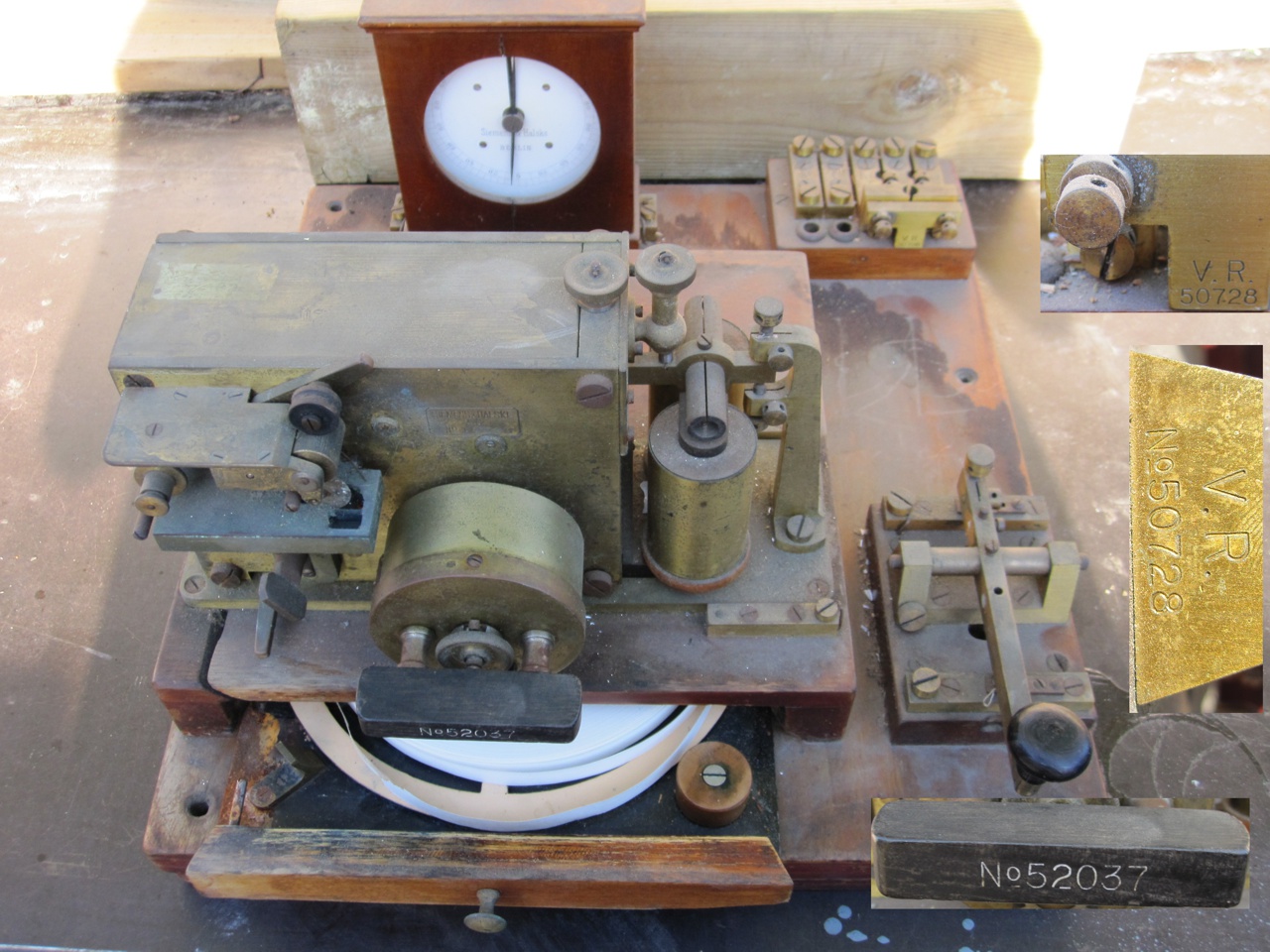OH6NT telegraph key collection (original) (raw)
Manual straight keys.
Click on buttons to the right to navigate for keys from different parts of the world. Click on the pictures to enlarge them.
 |
|---|
 |
 |
 |
 |
 |
 |
 |
 |
 |
 |
 |
 |
 |
 |
 |
 |
 |
Telegraph key and telecom gear collection of OH6NT. Any comments or information about the equipment are welcome!
Equipment numbers roughly indicate the aquisition order. Click on the pictures to get a bigger view.
Enjoy!
Vy 73 de Thomas, OH6NT.
You can offer any spare key to me.
It will get a good home.I have duplicates of some keys and will trade/swap them. Contact details: See below or QRZ.com.
Use of any pictures is prohibited without written conscent from me, the copyright holder. Mail me if you want to use pictures. Better resolution photos are available on request.
**Visitors: My mail is oatpower [ät] gmail.com - Last update: 20-Mar-2024
Other equipment
such as mechanical and electronic keyers, optical devices, Morse registers and toy keys.
Click on the pictures to enlarge them.
Finnish keys
[](keys/IMG%5F0343 %28Small%29.JPG)K1. My fathers OH6NZ (SK) key, my first one. Heavy marble base. The key is probably made by himself about 1945, after he returned from WW2. Easy to adjust and operate.
[](keys/IMG%5F0325 %28Small%29.JPG)K7. Jokey #003-08. Hand made by OH6FJF Jalo Ojanperä. Brass metal work on oak base. Superb feel and craftmanship.
[](keys/IMG%5F0331 %28Small%29.JPG)K8. Jokey #041-10 is intended to be a replica of the Finnish State Railroads (VR) standard key (see K9 below). Finnish handicraft by OH6FJF Jalo Ojanperä.
[](keys/VR-no 75417.JPG)K9. A Finnish State Railroads (VR) key, serial # 75417. Made in Russia by Siemens & Halske in St. Petersburg before 1914 (or maybe as a copy at the VR Elecrical workshop).
[](keys/DSC%5F1740 %28Small%29.JPG)K28. A Finnish brass key on birch wood with heavy iron base. Made by Turku Vocational Institute in the 80's. "Swedish Pump" style pivot. VG key weight about 1,3 kg, 80 x 200 mm.
K31. Magnificent Finnish key made by OH4LRP Olli from hyrdaulic valve and bicycle parts. Very smooth and exact action, heavy birch base, weight 1,5 kgs.
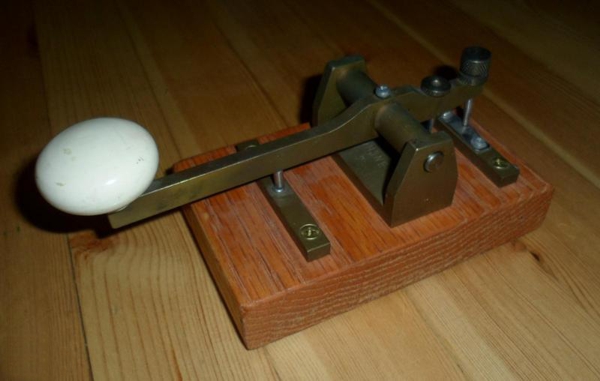 K37. Finnish key from Tampere Radio Club. Marked "TRA", "OH3NE" and "2". Bought from auction site. Make unknown, model "Siemens & Halske". Any info would be appreciated!
K37. Finnish key from Tampere Radio Club. Marked "TRA", "OH3NE" and "2". Bought from auction site. Make unknown, model "Siemens & Halske". Any info would be appreciated!
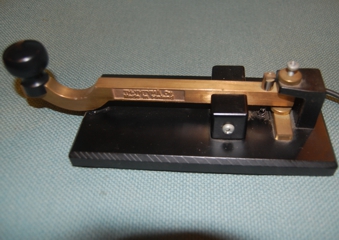 K43. This is a Finnish KBX-102B key made by OH1KB Tapio Hirvikoski's moulding company "TH-yhtymä Oy" in Pori, which closed down 2012. The model is derived from a Russian key. OM Tapio is still making fine paddles today (KBX-380). See paddle E3.
K43. This is a Finnish KBX-102B key made by OH1KB Tapio Hirvikoski's moulding company "TH-yhtymä Oy" in Pori, which closed down 2012. The model is derived from a Russian key. OM Tapio is still making fine paddles today (KBX-380). See paddle E3.
K44. This is a VERY rare KBX-103 key made in Pori by "TH-Yhtymä Oy" (see resemblance with K43). Only about 20 of these were made. I managed to get this brand new one direct from the maker.
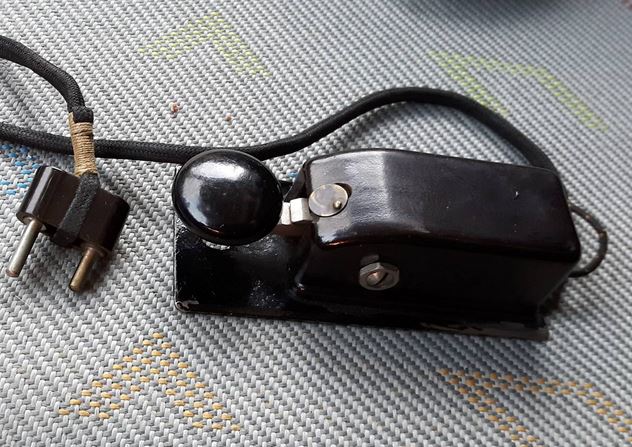 K61. Authentic, very rare key from the Finnish WW2 guerilla radio set "Kyynel M10". It is really tiny, only 35 (w) x 85 (l) x 26 (h) mm! Mint condition, original cloth cord and plug. Sheet metal cover with adjustment hole/lid for the spring tension. An older model is the K62. From OM Kari OH5YW.
K61. Authentic, very rare key from the Finnish WW2 guerilla radio set "Kyynel M10". It is really tiny, only 35 (w) x 85 (l) x 26 (h) mm! Mint condition, original cloth cord and plug. Sheet metal cover with adjustment hole/lid for the spring tension. An older model is the K62. From OM Kari OH5YW.
.jpg) K62. Authentic key for the first Finnish WW2 guerilla radio set "Kyynel M5/7". Very rare in this condition, original cloth cord and plug, compare with K61. Note how the plug is attached by sewing! Sheet metal cover. Size about the same as K61, just a little higher.
K62. Authentic key for the first Finnish WW2 guerilla radio set "Kyynel M5/7". Very rare in this condition, original cloth cord and plug, compare with K61. Note how the plug is attached by sewing! Sheet metal cover. Size about the same as K61, just a little higher.
[.jpg) ](keys/No35%5FOH6MH %28Small%29.jpg)K68. Home made key by my good friend OH6MH (SK). Donors OH6ELN & OH6HXU. Thanks OM:s!
](keys/No35%5FOH6MH %28Small%29.jpg)K68. Home made key by my good friend OH6MH (SK). Donors OH6ELN & OH6HXU. Thanks OM:s!
[](keys/IMG%5F0085 %28Small%29.JPG)
K74. This is OT OH2SN's key from the 1920:s. Gift from OT Reiska, OH2HK (SK) as a token of our cooperation. Maker isprobably Valtion Sähköpaja (State electrical works), see K75 and K192 to the right for more info.
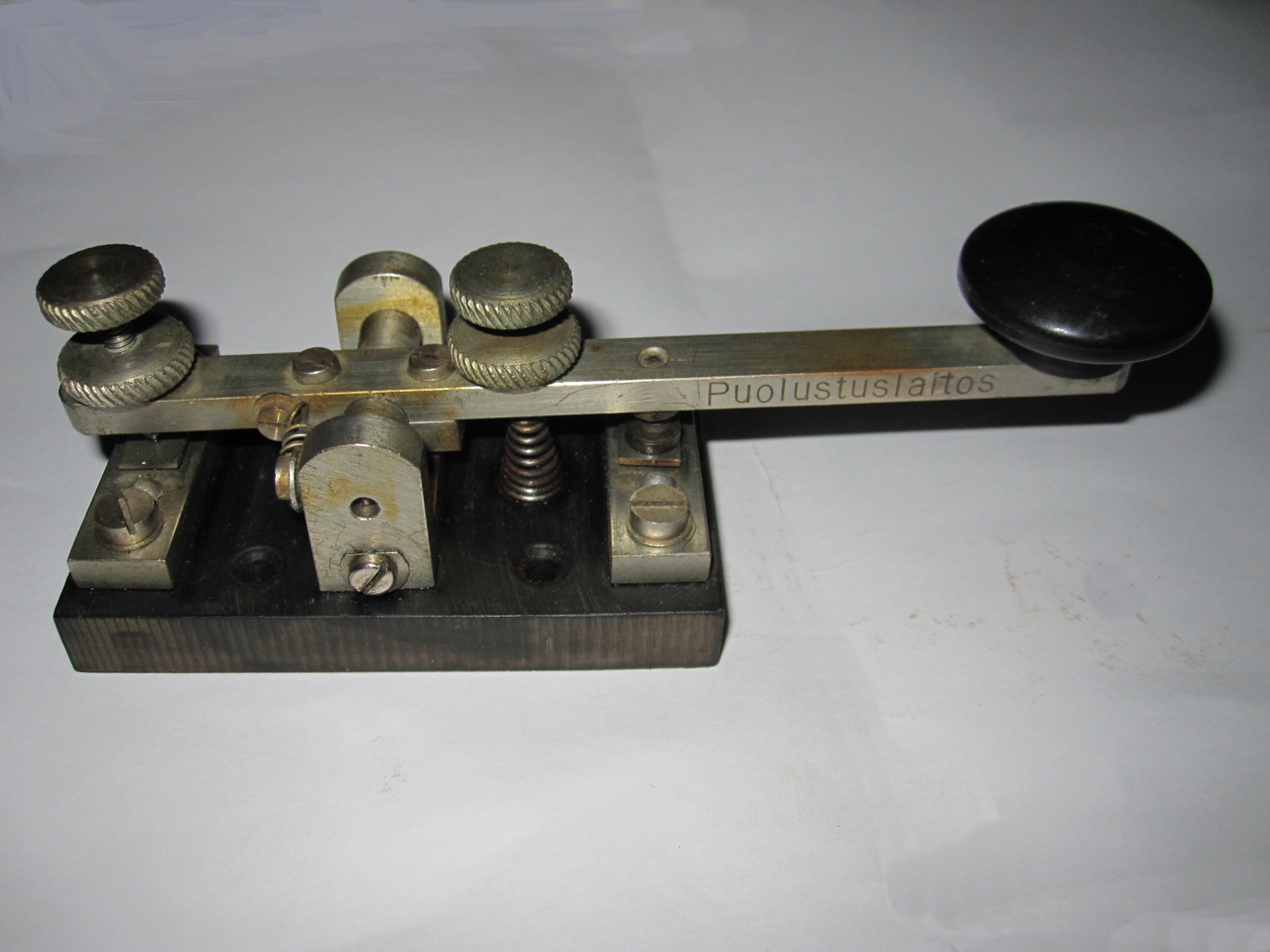 K75. Finnish Armed Forces key, marked "Puolustuslaitos". Marking was in use from 1922 onwards. My guess is around 1950's. Nickel plated brass, base is hard rubber, 5 x 8 cm. Used in the Finnish Army field vibrator telegraphy unit "VSHKS".
K75. Finnish Armed Forces key, marked "Puolustuslaitos". Marking was in use from 1922 onwards. My guess is around 1950's. Nickel plated brass, base is hard rubber, 5 x 8 cm. Used in the Finnish Army field vibrator telegraphy unit "VSHKS".
.jpg) K192 Another Finnish Armed Forces key marked "Puolustuslaitos". Got it from my uncle, SK OH2IJ Reima. Marking was in use from 1922. Era 1939..1944.. Nickel plated brass, base is hard rubber mounted on a granite slate. Used originally in a field vibrator telegraphy unit "VSHKS".
K192 Another Finnish Armed Forces key marked "Puolustuslaitos". Got it from my uncle, SK OH2IJ Reima. Marking was in use from 1922. Era 1939..1944.. Nickel plated brass, base is hard rubber mounted on a granite slate. Used originally in a field vibrator telegraphy unit "VSHKS".
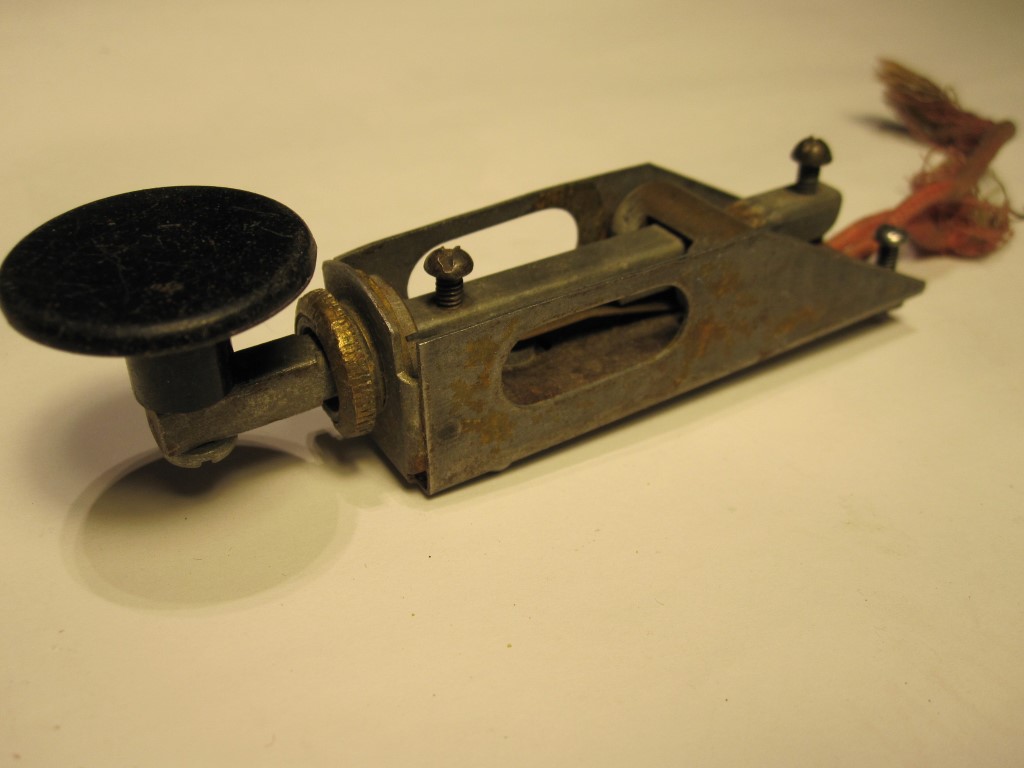 K84. This key is from a Finnish artillery radio set, type VRGK, used during WW2. The key was mounted in the chassis, key arm protruding out of a hole in the front of the radio. Made by ASA radio in Turku about 1942. The knob is NOT original!
K84. This key is from a Finnish artillery radio set, type VRGK, used during WW2. The key was mounted in the chassis, key arm protruding out of a hole in the front of the radio. Made by ASA radio in Turku about 1942. The knob is NOT original!
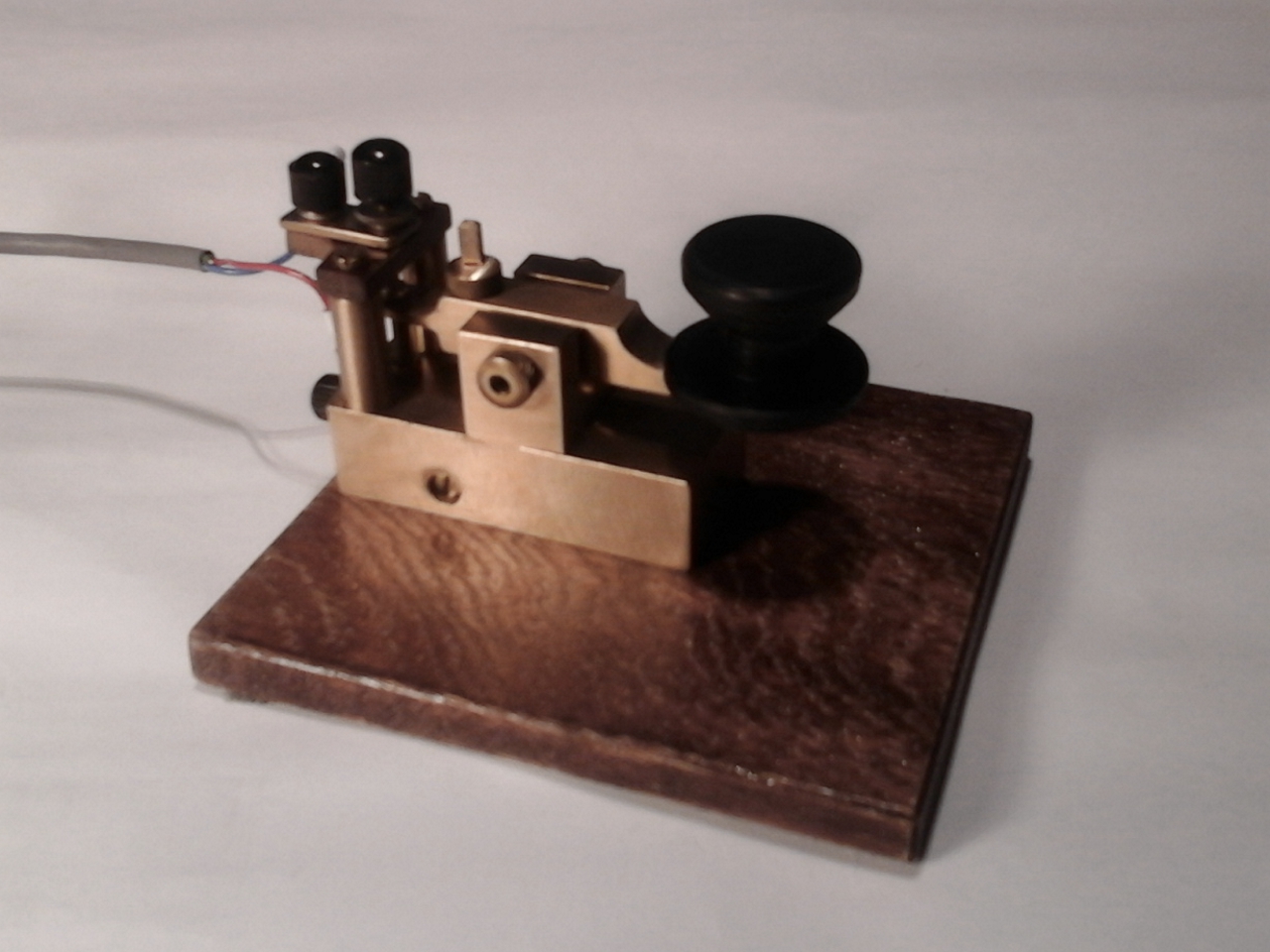 K85. Jokey no. #048-16. A miniature manual key, hand made by OT Jalo Ojanperä OH6FJF in 2016. Only 5 pieces made. All brass, weight 350 grams, brass footprint is 28 x 62 mm. Base is oak.
K85. Jokey no. #048-16. A miniature manual key, hand made by OT Jalo Ojanperä OH6FJF in 2016. Only 5 pieces made. All brass, weight 350 grams, brass footprint is 28 x 62 mm. Base is oak.
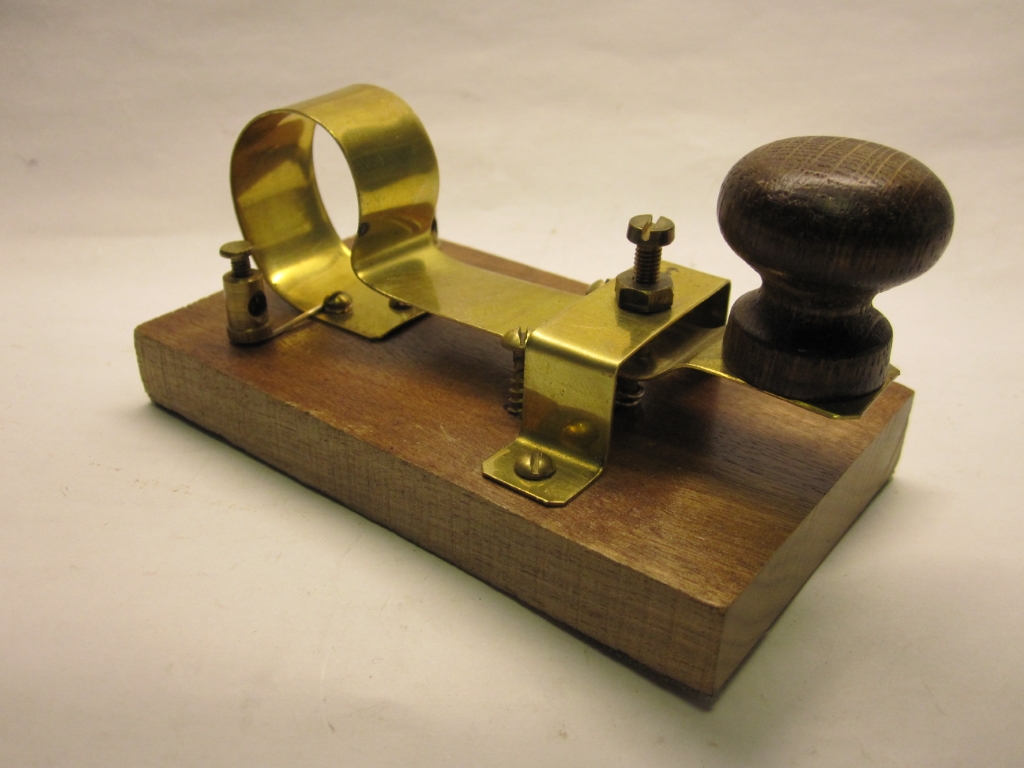 K86. Another of OT Jalo Ojanperä's hand made keys. This is an unnumbered prototype from Sept 1, 2012, made "for fun" according to the maker.
K86. Another of OT Jalo Ojanperä's hand made keys. This is an unnumbered prototype from Sept 1, 2012, made "for fun" according to the maker.
K98. A factory made key, similarities to the "Lautkari" K99 key, but simpler. Nickel plated brass with 6-ball bearings, very precise and easy to use. Contacts are brass/brass. I've mounted it on a teak base with a new knob. Made in the 1940's by unkonwn maker.
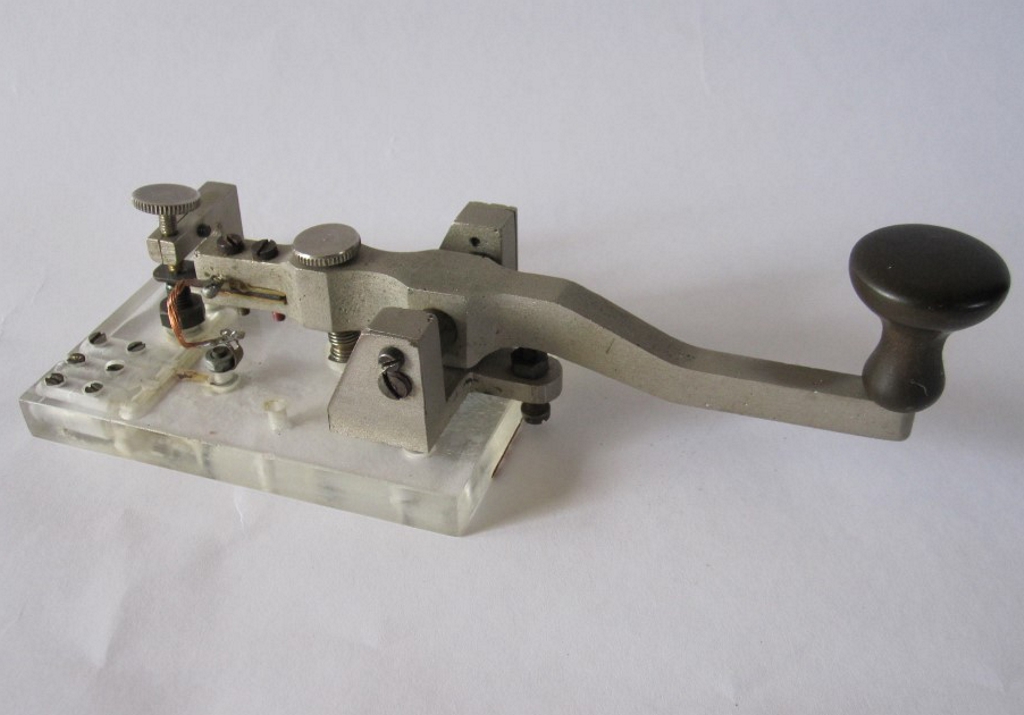 K99. This key mechanism, commonly called the "Lautkari" key was made by the Finnish Army during/after WW2. It's designed by Major Ragnvald Lautkari, a technical expert at the Intelligence troops. Used for example by the Marines.
K99. This key mechanism, commonly called the "Lautkari" key was made by the Finnish Army during/after WW2. It's designed by Major Ragnvald Lautkari, a technical expert at the Intelligence troops. Used for example by the Marines.
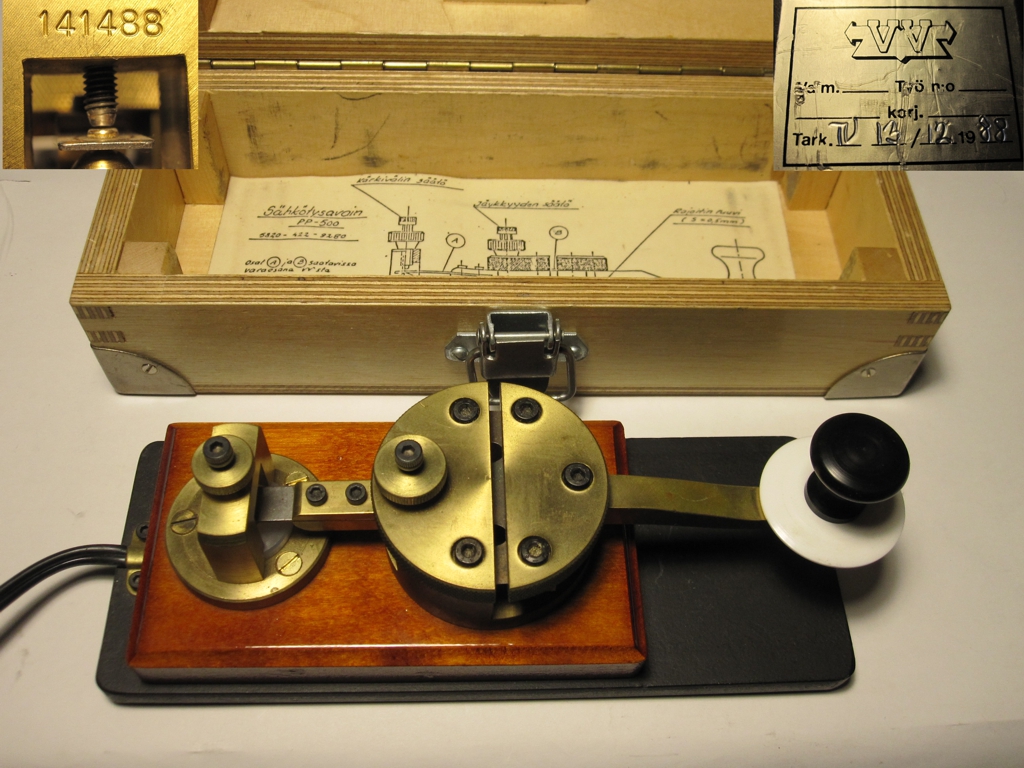 K100. This is one of my best keys! Type PP-500, made in 1988 by Finnish Army Signal Depot ("Viestivarikko"), decomissioned 2009 (now Millog Ltd). Delivered in heavy birch veneer box. All brass on heavy steel base plate, weight 1,89 kgs. Serial # 141488, delivery check 13.12.1988 by "TU". Condition as new, very exact function. The arm is pivoting by a steel blade, as on a "Swedish key".
K100. This is one of my best keys! Type PP-500, made in 1988 by Finnish Army Signal Depot ("Viestivarikko"), decomissioned 2009 (now Millog Ltd). Delivered in heavy birch veneer box. All brass on heavy steel base plate, weight 1,89 kgs. Serial # 141488, delivery check 13.12.1988 by "TU". Condition as new, very exact function. The arm is pivoting by a steel blade, as on a "Swedish key".
.jpg) K109. Unknown military key from the closing of the Riihimäki garrison. No markings except an embossed "1" on bottom of the sheet metal base. Cover is sheet aluminium, key base inside is black bakelite. Arm and pivot structure are iron, wooden knob, one silvered n/c contact.
K109. Unknown military key from the closing of the Riihimäki garrison. No markings except an embossed "1" on bottom of the sheet metal base. Cover is sheet aluminium, key base inside is black bakelite. Arm and pivot structure are iron, wooden knob, one silvered n/c contact.
K110. Finnish Military Forces bakelite key (Puolustusvoimat) made by ASA Radio factory in Turku 1941-1945. Used with the Finnish army field transceiver VRFK. Black bakelite, brass inner parts. A similar one is K197, which is shown open.
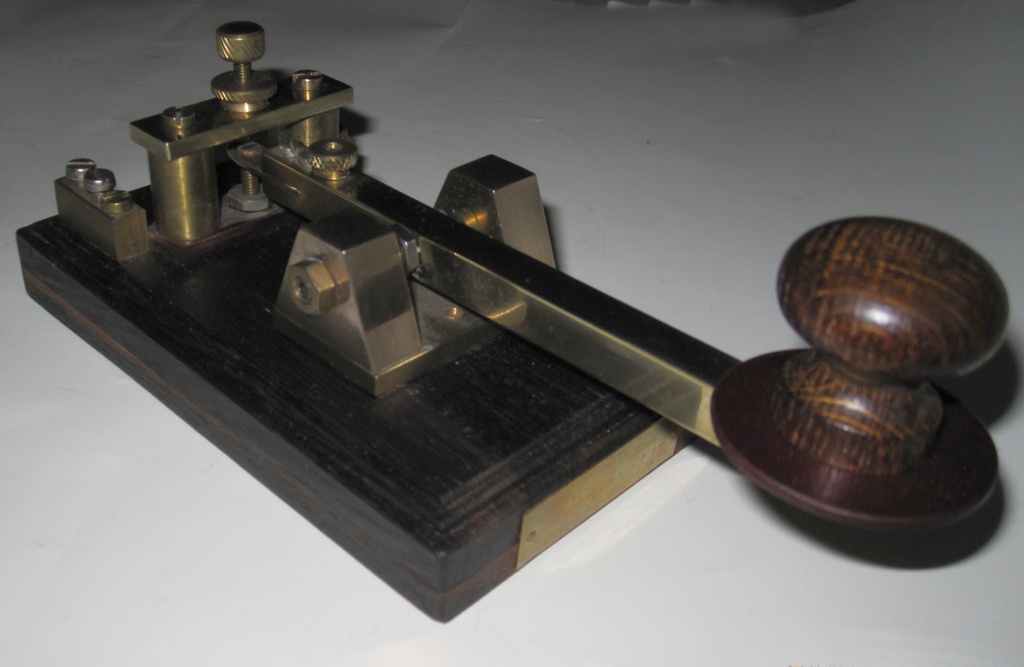 K133. Another one of OM OH6FJF Jalo Ojanperä's hand made "Jokey" keys. This is number 029-09. All polished brass on stained oak base. Mechanism resembles the Norwegian NERA key, see K80. Very stable and excact, easy to adjust to taste.
K133. Another one of OM OH6FJF Jalo Ojanperä's hand made "Jokey" keys. This is number 029-09. All polished brass on stained oak base. Mechanism resembles the Norwegian NERA key, see K80. Very stable and excact, easy to adjust to taste.
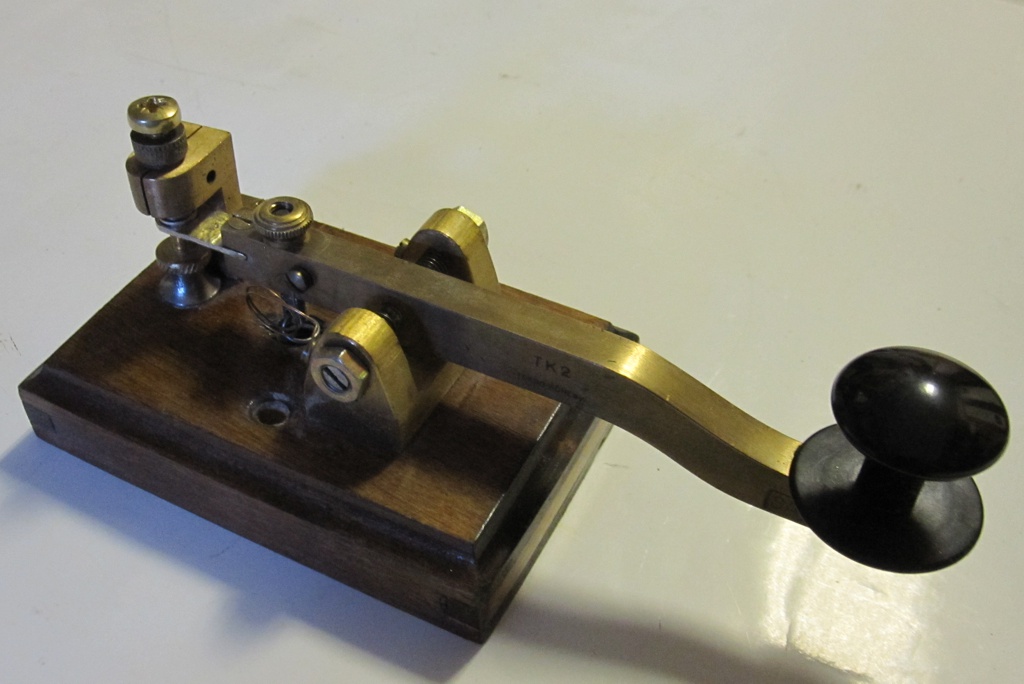 K135. Manual key TK2 made for the Finnish Army by Tekno-Kone Oy in Hanko (Hangö). The company has been in business since 1932, but changed its name in 1976. Has the SA-stamp in a square for ownership by the Army intendenture office.
K135. Manual key TK2 made for the Finnish Army by Tekno-Kone Oy in Hanko (Hangö). The company has been in business since 1932, but changed its name in 1976. Has the SA-stamp in a square for ownership by the Army intendenture office.
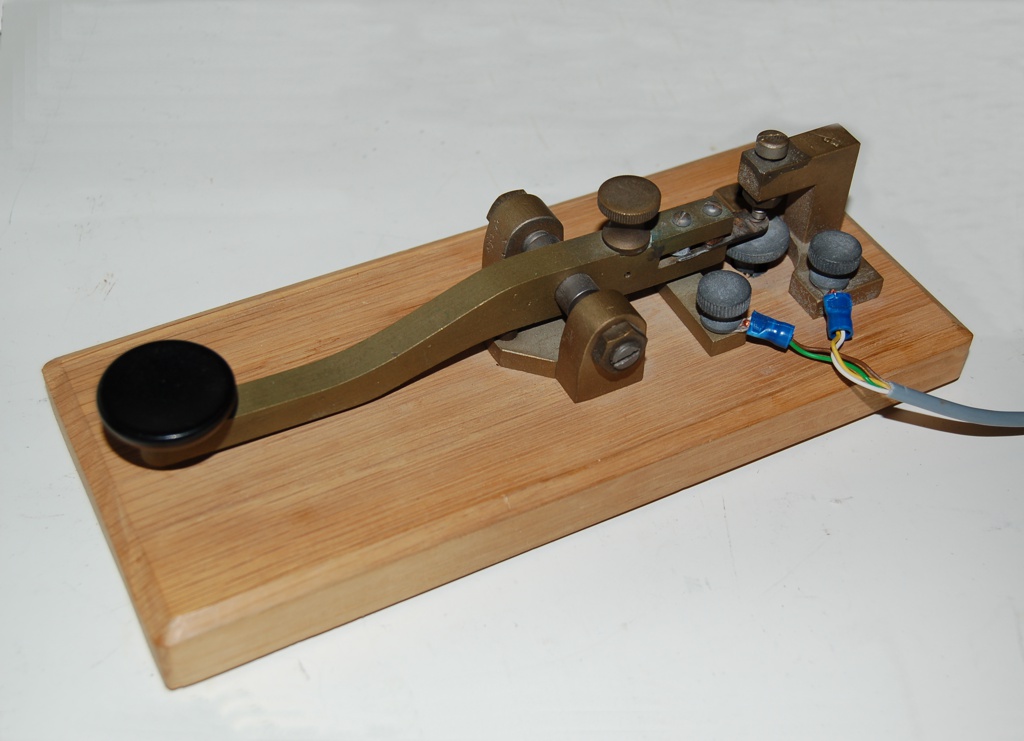 K143. Long arm (160 mm) Finnish key, made by Oy Radiotekno Ab, Helsinki. Type shield was engraved "AK 3". Glass pellet blasted brass. Small repair on the contact end of the arm, renewed oak base. Very smooth.
K143. Long arm (160 mm) Finnish key, made by Oy Radiotekno Ab, Helsinki. Type shield was engraved "AK 3". Glass pellet blasted brass. Small repair on the contact end of the arm, renewed oak base. Very smooth.
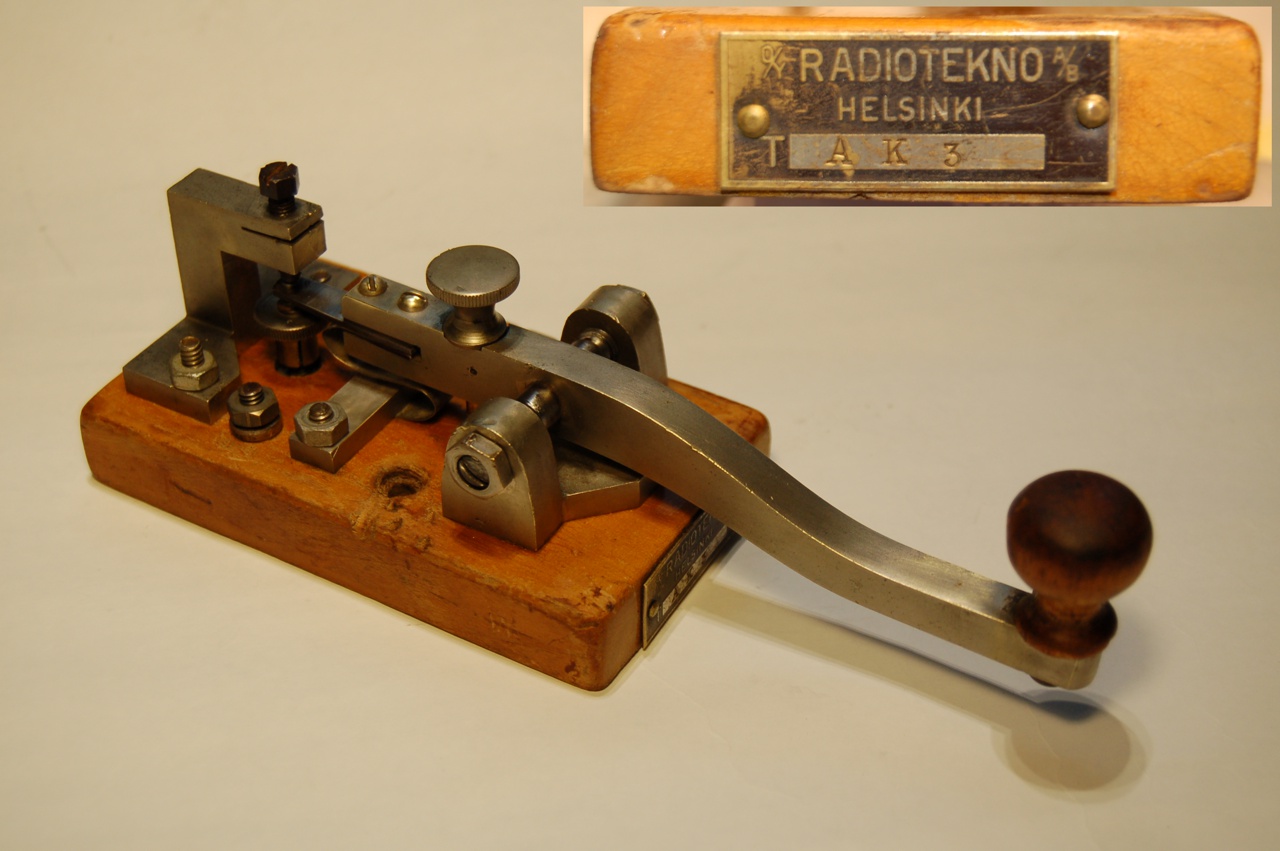 K148. Same key as K143 left, but with original birch base. Finnish key, made by Oy Radiotekno Ab, Helsinki. Type shield is engraved "AK 3". Glass pellet blasted, nickel plated brass. Used with the Finnish Air Force radio base station VRCN, "Annabella" during WW2 and after. Later used as training key in signal troops.
K148. Same key as K143 left, but with original birch base. Finnish key, made by Oy Radiotekno Ab, Helsinki. Type shield is engraved "AK 3". Glass pellet blasted, nickel plated brass. Used with the Finnish Air Force radio base station VRCN, "Annabella" during WW2 and after. Later used as training key in signal troops.
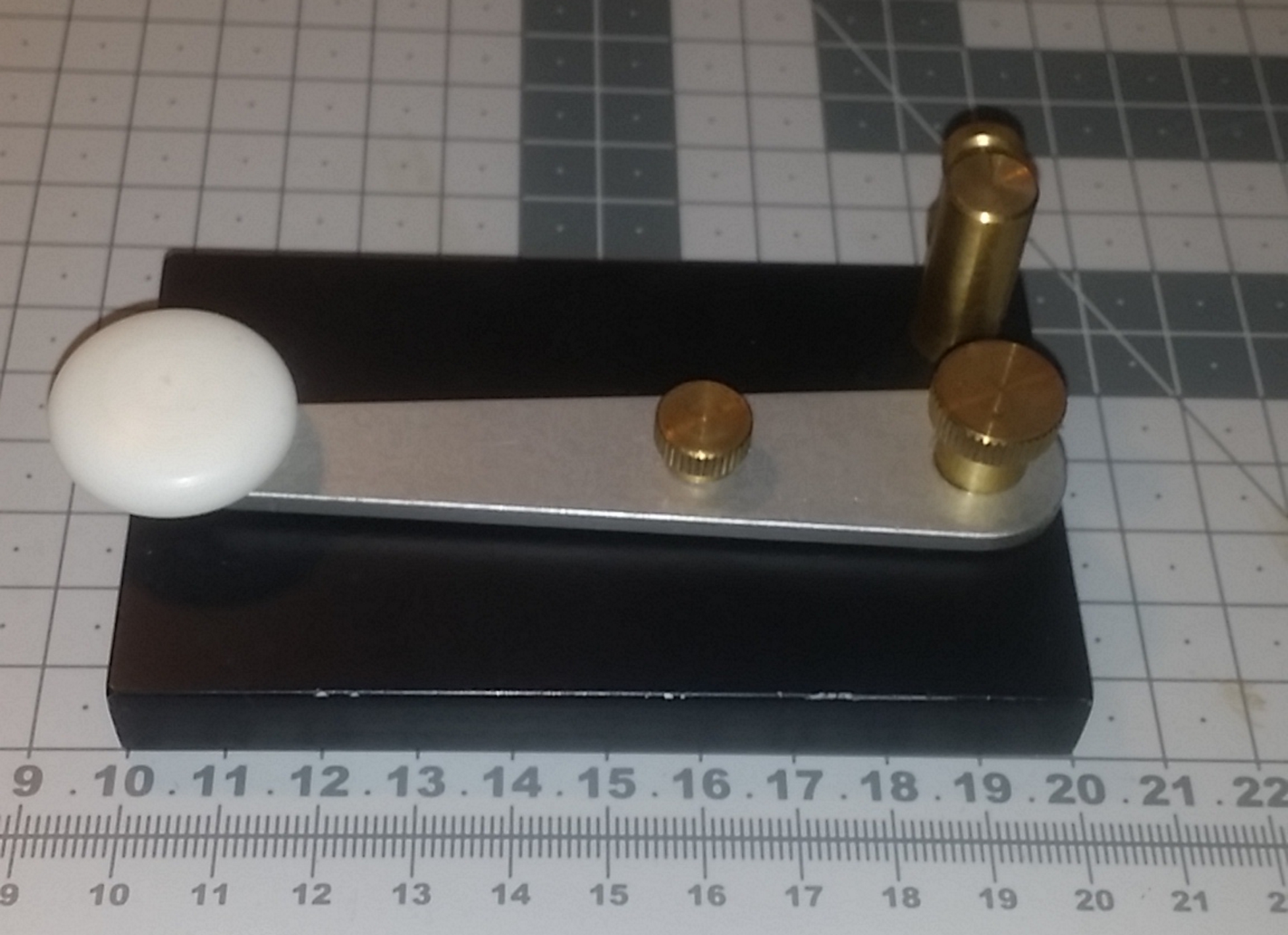 K153. A very low profile key made by OM Simo, OH1BS. Only this one exists. The lever pivots on two bearing balls at the far end. Very smooth and exact function. Size is 100 mm (deep), 60 mm (wide) and the height of the knob from table surface is only 28 mm! 614 grams.
K153. A very low profile key made by OM Simo, OH1BS. Only this one exists. The lever pivots on two bearing balls at the far end. Very smooth and exact function. Size is 100 mm (deep), 60 mm (wide) and the height of the knob from table surface is only 28 mm! 614 grams.
[ ](keys/Pommiradio P-12-14-r.jpg)K174. A rare WW2 bomber key from the Finnish radio set P-12-14. The radio mode is selected by turning the lever left (RX-CW), center (TX-CW) or right (RX-Phone). Made by Valtion Radiopaja (State Radio Works) in 1939. Donated by OM Kari, OH5YW.
](keys/Pommiradio P-12-14-r.jpg)K174. A rare WW2 bomber key from the Finnish radio set P-12-14. The radio mode is selected by turning the lever left (RX-CW), center (TX-CW) or right (RX-Phone). Made by Valtion Radiopaja (State Radio Works) in 1939. Donated by OM Kari, OH5YW.
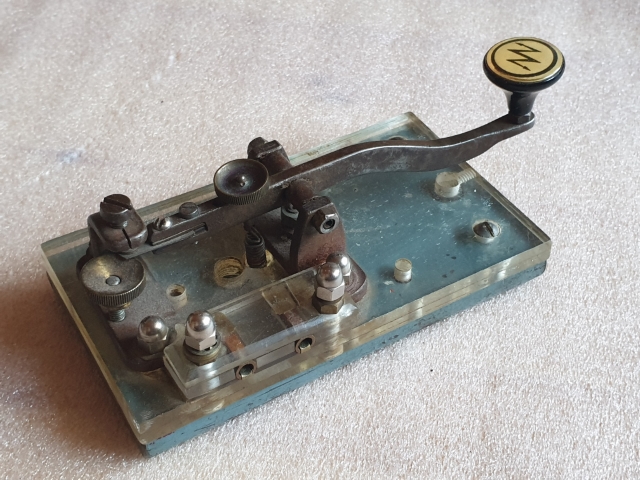 K182. Finnish DIY-key. Unknown maker. Made of mostly iron parts, recognizable old telephone brass parts, not very tight, but nice looking. 9 mm plexiglass + 9 mm heavy iron base.
K182. Finnish DIY-key. Unknown maker. Made of mostly iron parts, recognizable old telephone brass parts, not very tight, but nice looking. 9 mm plexiglass + 9 mm heavy iron base.
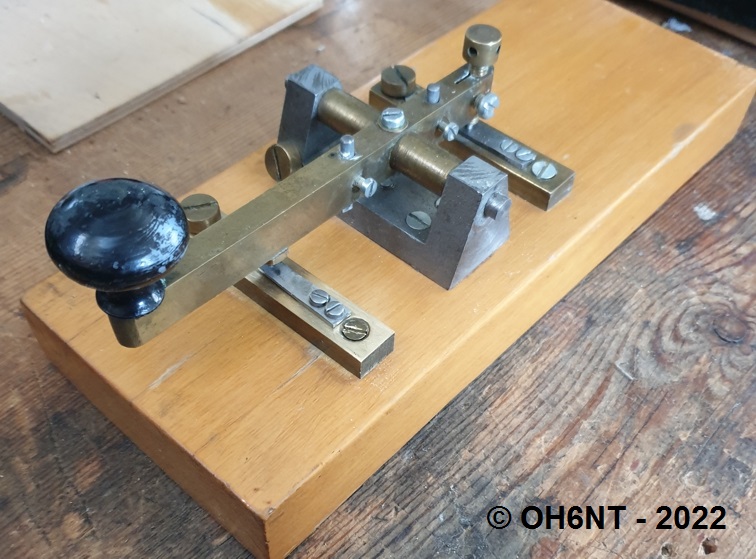 K189. Probably a home made copy of Siemes & Halske silent contacts key, maker unknown. Heavy birch base, parts mostly steel and brass. Very nice craftmanship. Good feeling.
K189. Probably a home made copy of Siemes & Halske silent contacts key, maker unknown. Heavy birch base, parts mostly steel and brass. Very nice craftmanship. Good feeling.
[.jpg) ](keys/20220527%5F210053 %28Medium%29.jpg)K191. Probably a Finnish made, cast iron straight key. At present four of these keys are known, owned by different hams. No markings. More info is needed!
](keys/20220527%5F210053 %28Medium%29.jpg)K191. Probably a Finnish made, cast iron straight key. At present four of these keys are known, owned by different hams. No markings. More info is needed!
.jpg) K197. Finnish military key by ASA Radio from 194x (WW2 era) in Turku, used for example with the VRFK manpack. Similar to K110, but this one is without the mounting plate.
K197. Finnish military key by ASA Radio from 194x (WW2 era) in Turku, used for example with the VRFK manpack. Similar to K110, but this one is without the mounting plate.
Swedish keys
[](keys/IMG%5F0341 %28Small%29.JPG)K19. Swedish army key from around 1939-1942, used with "Standard Radio" manpack stations 2W Br m/40-42 (also known as PM7D or C4798), the 10W Br m/39 and the vehicle mounted station 25 W Bl m/39
(Tc 91160).
[](keys/IMG%5F0340 %28Small%29.JPG)K20. Swedish key, made by SRA (Svenska Radioaktiebolaget) for the Swedish military in the 1940's. No markings, heavy marble base, manual TX/RX switch at left. Rare because of the single circuit. Usually these keys have double circuits, see K70.
K21. Swedish SRA style brass key, white painted, made 1971-1973 by precision toolmaker Arne Svensson at Lund University of Technology in Sweden. Only 7-8 copies were made. Original cost at the time 50 SEK. Mounted on a heavy prespane plate.
[](keys/DSC%5F1755 %28Small%29.JPG)K40. Original "Swedish key", military training version, made by Lennart Pettersson & Co., Hoverberg. Plastic dust cover is missing. Condition otherwise as new.
****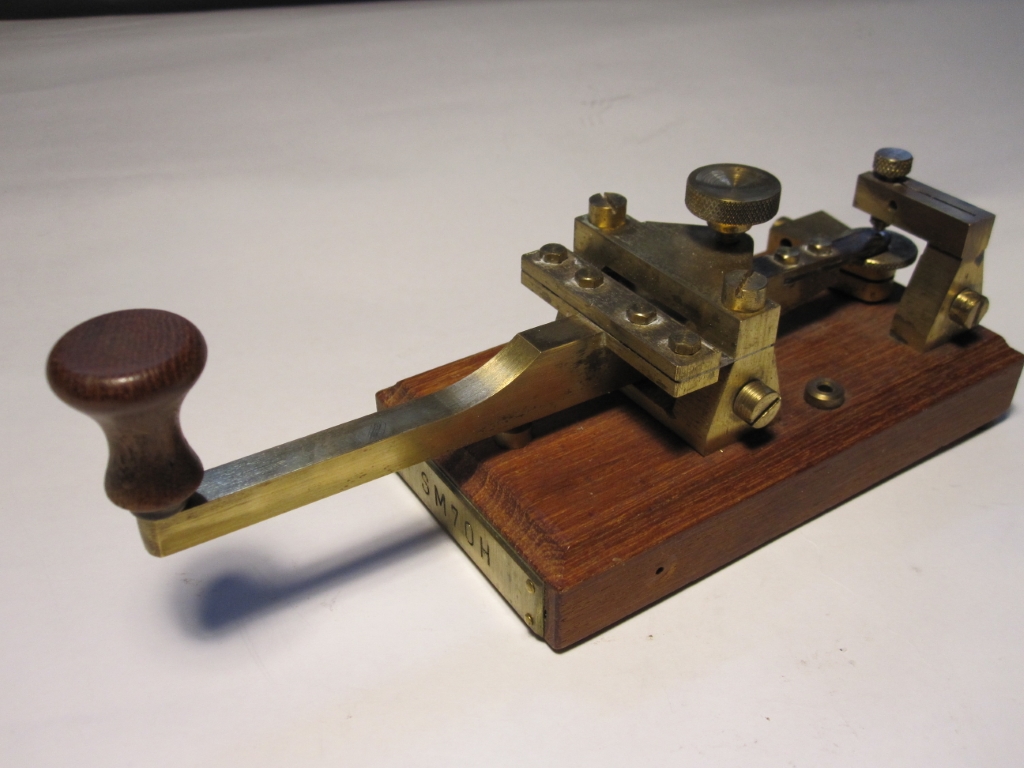 K41.** Original "Swedish Key", ham version, by Lennart Pettersson & Co., Hoverberg. Condition as new, personalized to the prevoius owner SM7OH. These were also called REX keys due to the shop "Radio REX" in Östersund. An earlier maker was "F:ma Erik Thörngren" in Stockholm.
K41.** Original "Swedish Key", ham version, by Lennart Pettersson & Co., Hoverberg. Condition as new, personalized to the prevoius owner SM7OH. These were also called REX keys due to the shop "Radio REX" in Östersund. An earlier maker was "F:ma Erik Thörngren" in Stockholm.
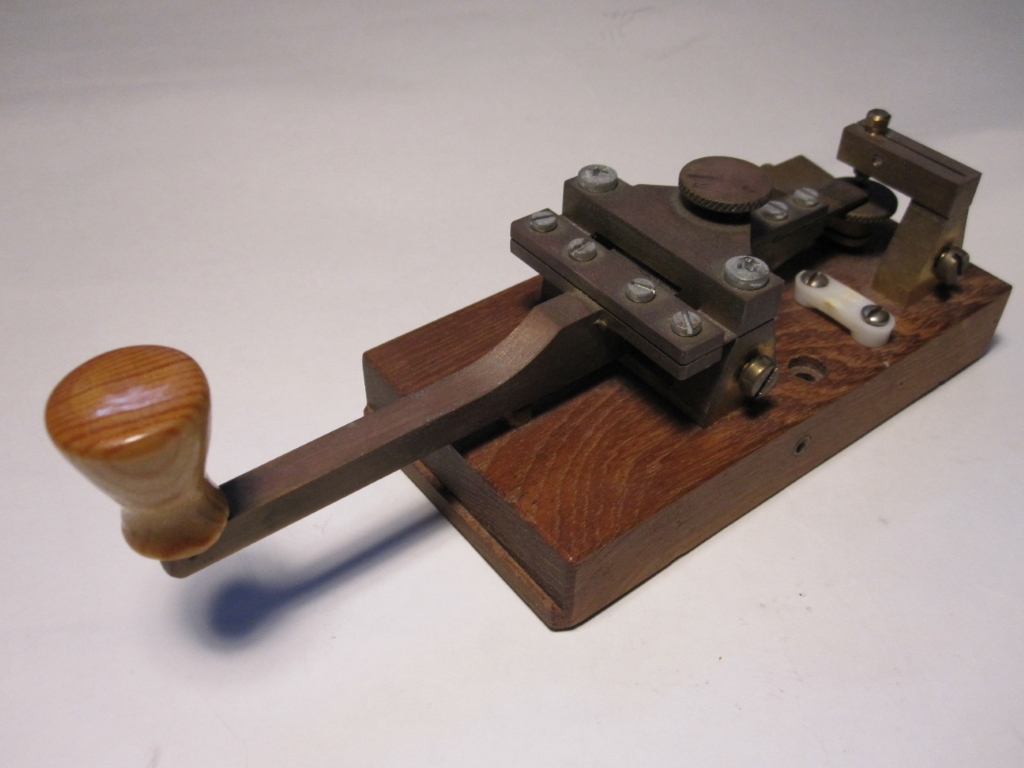 K42. An older Swedish Key by Lennart Pettersson at Hoverberg. This one is also the military training version. Knob is not original, and the sheet metal dust cover is missing. Otherwise in good working order.
K42. An older Swedish Key by Lennart Pettersson at Hoverberg. This one is also the military training version. Knob is not original, and the sheet metal dust cover is missing. Otherwise in good working order.
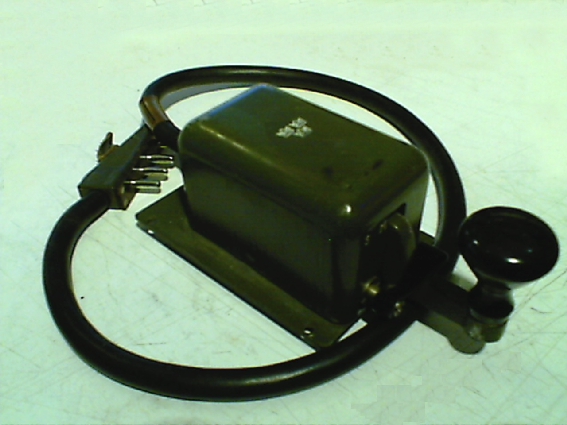 K46. Swedish miltary key, Tc15534, used commonly for the Ra200 radio set. "Tc" is short for "Tygcentralen" (military vocabulary for Equipment Center). The "Tc" number is a storage number. Complete with RX/TX switch and an original "toothbrush" connector for the radio. As new. 1950's.
K46. Swedish miltary key, Tc15534, used commonly for the Ra200 radio set. "Tc" is short for "Tygcentralen" (military vocabulary for Equipment Center). The "Tc" number is a storage number. Complete with RX/TX switch and an original "toothbrush" connector for the radio. As new. 1950's.
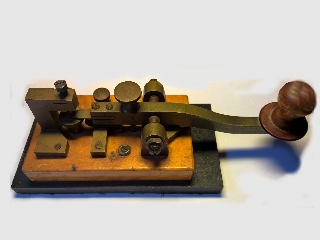 K47. Swedish brass key, previous owners are OH2ZH Voitto, from 1961 his son Timo OH2BBC. Originally this is a Televerket Radio commercial ship key. It is also on display in the Swedish Radio Museum in Gothenburg (Ref: rm 00570). Base is curly birch, and secondary base is iron.
K47. Swedish brass key, previous owners are OH2ZH Voitto, from 1961 his son Timo OH2BBC. Originally this is a Televerket Radio commercial ship key. It is also on display in the Swedish Radio Museum in Gothenburg (Ref: rm 00570). Base is curly birch, and secondary base is iron.
K51. Swedish key from about 192x made by Svenska Aktiebolaget Trådlös Telegrafi (SATT). Marked "System Telefunken" which indicates early 1920's! The type was used 1941-48 in Sweden for ground to aircraft radio with FR-2 sets in Saab B18 and SK14 (North American NA-16-4M).
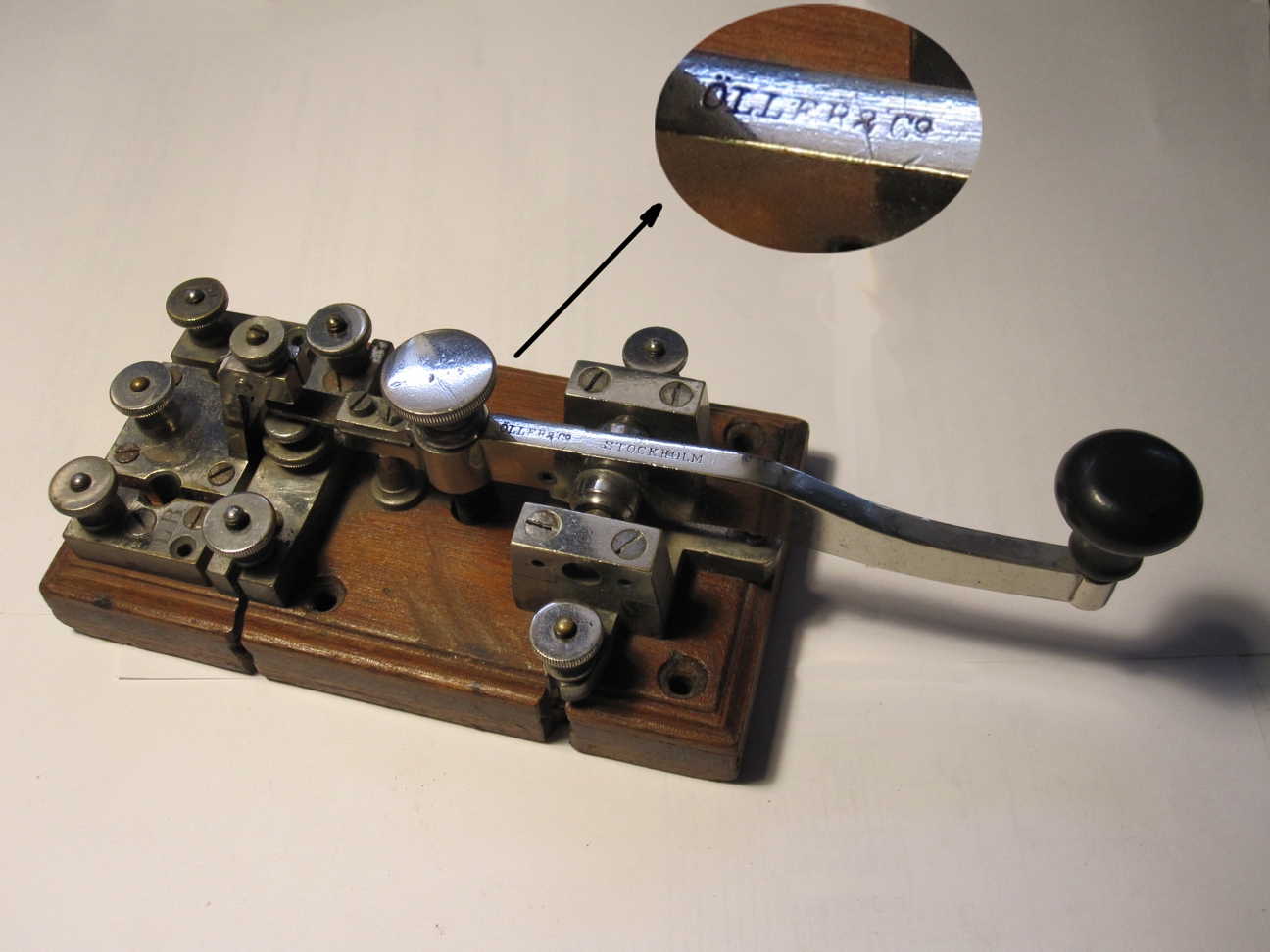 K69. My first Original Swedish Öller & Co key, made about 1865. This is a chrome version and in vg condition. This key was made available by Kari, OH5YW. [Here a document](keydocs/Identification of Oller keys.pdf) about how to identify Öller, L&W and LME keys.
K69. My first Original Swedish Öller & Co key, made about 1865. This is a chrome version and in vg condition. This key was made available by Kari, OH5YW. [Here a document](keydocs/Identification of Oller keys.pdf) about how to identify Öller, L&W and LME keys.
See also K122 below for more info!
Click on the pictures for bigger display.
[](keys/DSC%5F1739 %28Small%29.JPG)K70. Swedish Navy or Coastal Radio key, type TGN641 made by SRA about 1950. Heavy with molded base. Dual contacts, separate ciruits. Single contact versions are known, see K20 (an earlier issue). Very good quality, smooth operation. No markings. Ref: rm 00390 at Radiomuseum in Gothenburg.
K71. Swedish military key, Tc15223 from Svenska Radioaktiebolaget (SRA). "Tc" stands for "Tygcentralen" (Mil. vocabulary for Equipment Center). The number is it's storage number. TX/RX switch on top and a four prong rubber molded "toothbrush" connector. Used with various militay transmitters, ie. Ra620 and others.
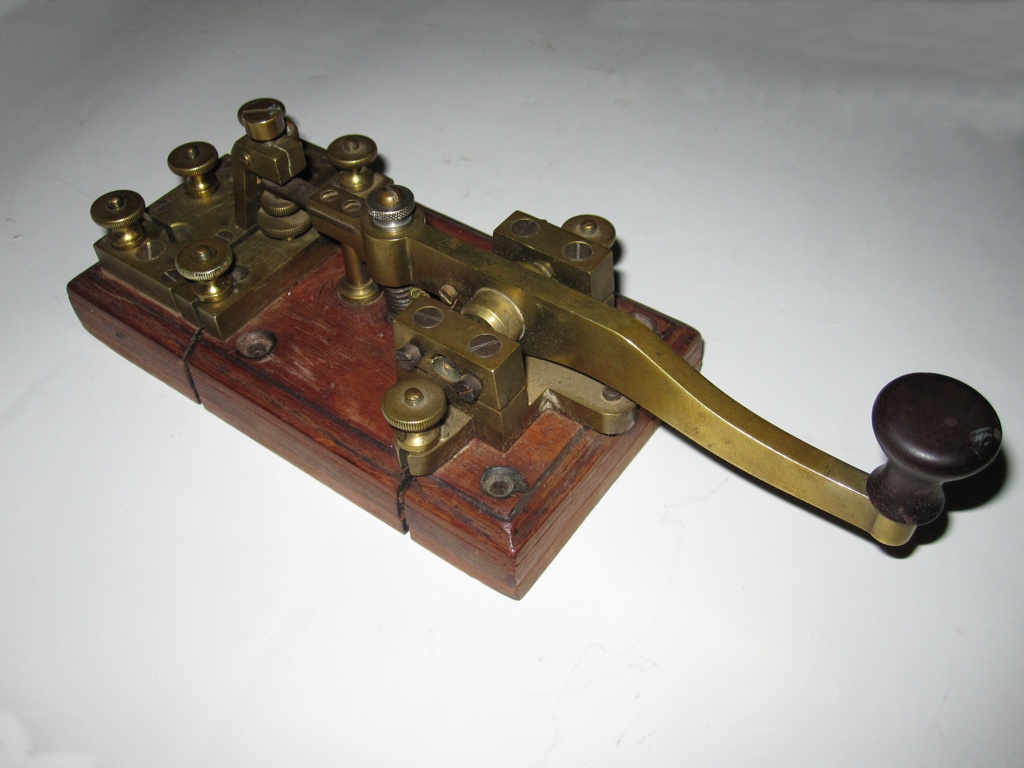 K122. My second Öller key, made available by a friend in Norway.This in not nickel plated, and the spring tensioner screw is not original (replicated). Otherwise original vg. condition
K122. My second Öller key, made available by a friend in Norway.This in not nickel plated, and the spring tensioner screw is not original (replicated). Otherwise original vg. condition
The Öller keys was invented by Anton Henric Öller, who had a workshop in Stockholm for making "Telegraph equipment" from 1857 to 1889. Later Lindholm & Wikström and LM Ericsson, who at the time was apprentices at Öller, made similar keys. See the
Öller Biography here (pdf).
K72. An original L.M.Ericsson TA610 key on wooden base, with LM Ercisson logo. Single circuit, opposed to the K70 above. Good quality, smooth operation, some vear and tear. Used by the Swedish armed forces and commercial services. Descending from the Öller design, but contact screws have a different arrangement not to infringe on Öller's patents. [See this document.](keydocs/Identification of Oller keys.pdf) Manufactured from ca. 1885 until at least 1936. More info in Morsum Magnificat #67 and #75.
K87. A swedish key sold by the Swedish Amateur radio Association (SSA) in the 1970:s. Hundreds of these keys lure in swedish hamshacks around the country. Very good feeling. Similar mechanics as the Swedish Pump key by Lennart Pettersson (see K40, K41) and the Military SRA key (see K71 above). These were primary made for war efforts during WW2. Many makers i.e. SRA, SM5EG, FAMI (SM0GOO) etc.
K88. All brass manual key with ball bearings and a very long arm, 22,5 cm (about 11")! Probably hand made. Base plate is made of prespane. Knob is not original. Maker is unknown, but the key is of swedish origin. Procured from the Radio Museum, Gothenburg. Any info would be appreciated!
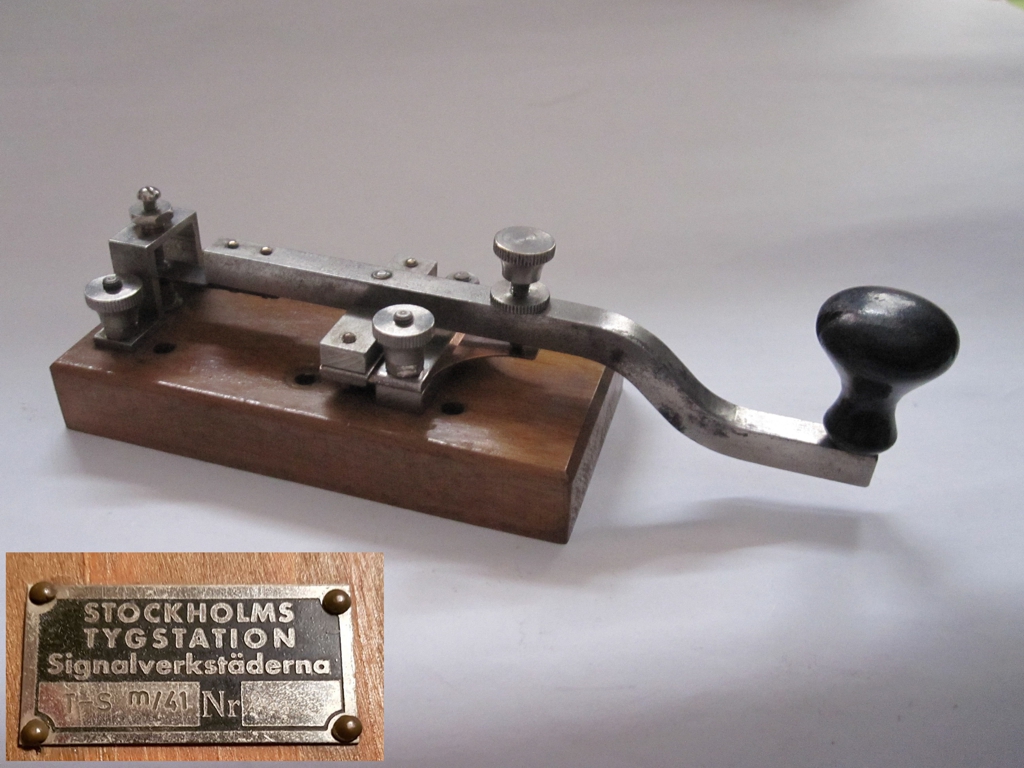 K90. A swedish training key called Jungfrunyckel ("Virgin key"), used by Svenska Lottakåren (the Swedish Women's Voluntary Defence Corps) during WW2. The key is mounted on a base together with a battery box containing a buzzer (plate shown is from such a box). Made 1941 by Stockholms Tygstation, Signal Works (SiS) in Sundbyberg.
K90. A swedish training key called Jungfrunyckel ("Virgin key"), used by Svenska Lottakåren (the Swedish Women's Voluntary Defence Corps) during WW2. The key is mounted on a base together with a battery box containing a buzzer (plate shown is from such a box). Made 1941 by Stockholms Tygstation, Signal Works (SiS) in Sundbyberg.
[.jpeg) ](keys/K114-B %28M%29.jpeg)K101. An early unmarked military telegraph key from Sweden, used with the field sets 1W Br /m28, 30W Kr m/29 and others. Marked "1944" on the bottom with a lead pencil, but is older (about 1928 according to radio model numbers). A few are known to exist. Another variant with turned pillars instead of bent iron pivot and contact supports exists. Bakelite with Pertinax base, and brass lid.
](keys/K114-B %28M%29.jpeg)K101. An early unmarked military telegraph key from Sweden, used with the field sets 1W Br /m28, 30W Kr m/29 and others. Marked "1944" on the bottom with a lead pencil, but is older (about 1928 according to radio model numbers). A few are known to exist. Another variant with turned pillars instead of bent iron pivot and contact supports exists. Bakelite with Pertinax base, and brass lid.
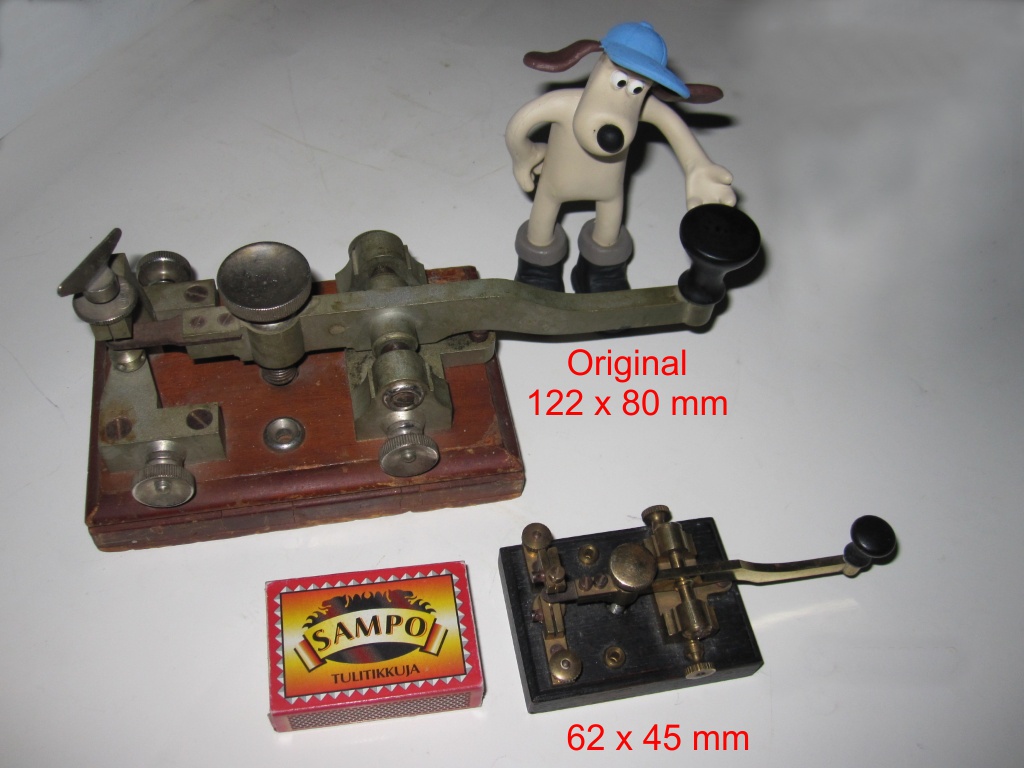 K132. Miniature copy of an Ericsson standard key. Made by Lennart Pettersson in Hoverberg, the maker of the Swedish keys. This one is scaled down to about 1:4, just 62 x 45 mm, weiging in at 87 grams! All brass hardware except some screws and the hardwood base. Compare size to the original Ericsson and the match box!
K132. Miniature copy of an Ericsson standard key. Made by Lennart Pettersson in Hoverberg, the maker of the Swedish keys. This one is scaled down to about 1:4, just 62 x 45 mm, weiging in at 87 grams! All brass hardware except some screws and the hardwood base. Compare size to the original Ericsson and the match box!
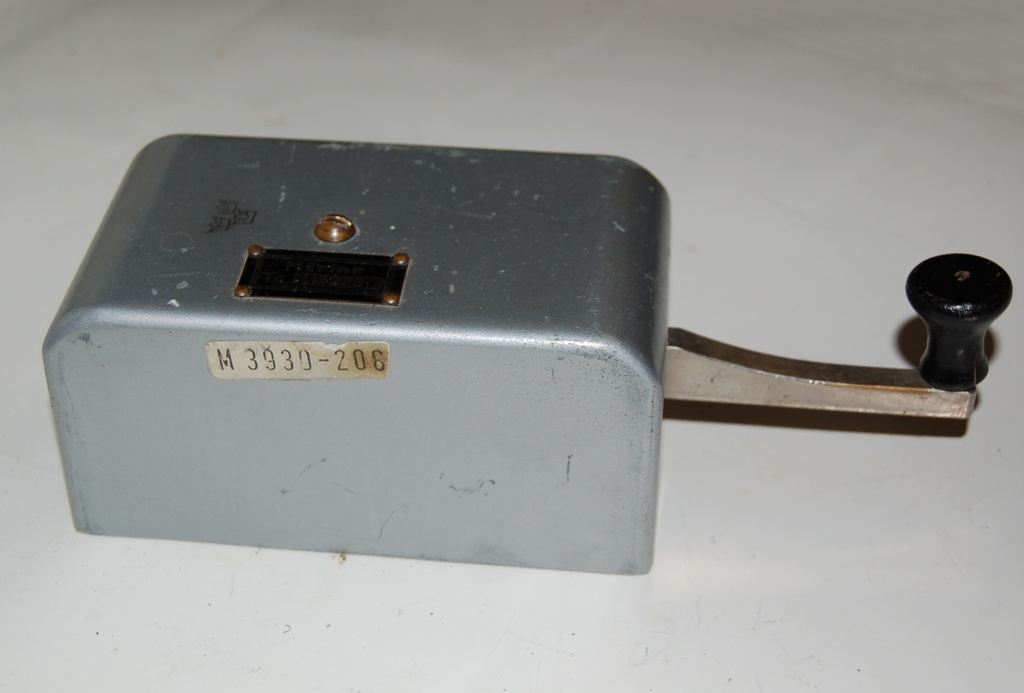 K141. Svenska Radioaktiebolaget (SRA) training key from Swedish flea market.Issue Tc15223. "Tc" stands for "Tygcentralen" (the Swedish Mil. vocabulary for Equipment Center). The number is it's storage number. No TX/RX switch since it's a training key. See also K71.
K141. Svenska Radioaktiebolaget (SRA) training key from Swedish flea market.Issue Tc15223. "Tc" stands for "Tygcentralen" (the Swedish Mil. vocabulary for Equipment Center). The number is it's storage number. No TX/RX switch since it's a training key. See also K71.
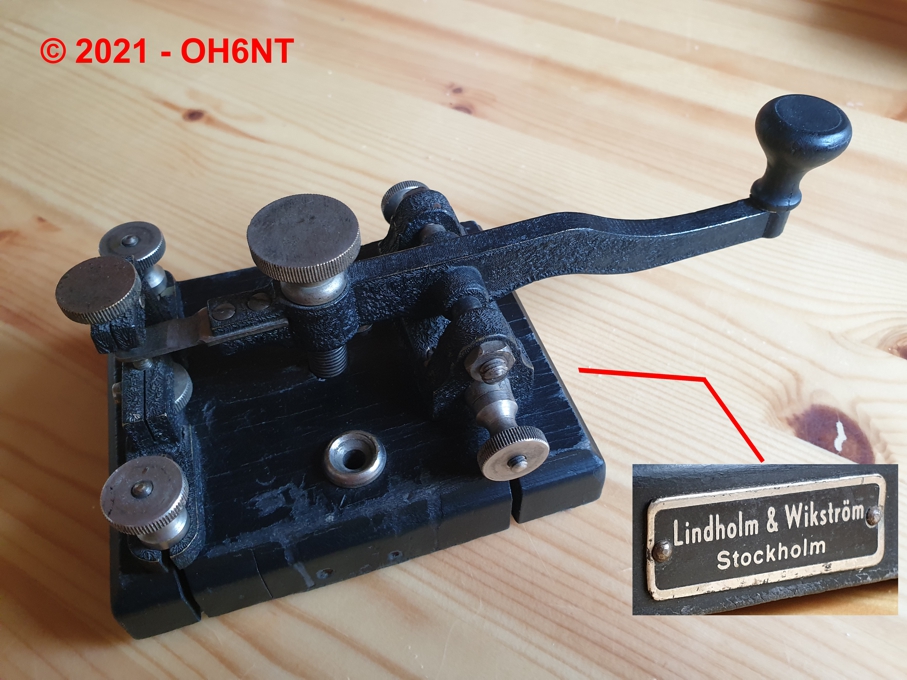 K167. Lindholm & Wikström key from Stockholm, Sweden. They were machine operators at A.H. Öller and started their own shop in 1878 when Öller were on a downhill slope. They bought his tooling when he passed 1889. They were in bussiness until 1905 making telegraph equipment. This is the rarer black wrinkle version with metal company tag at the front.
K167. Lindholm & Wikström key from Stockholm, Sweden. They were machine operators at A.H. Öller and started their own shop in 1878 when Öller were on a downhill slope. They bought his tooling when he passed 1889. They were in bussiness until 1905 making telegraph equipment. This is the rarer black wrinkle version with metal company tag at the front.
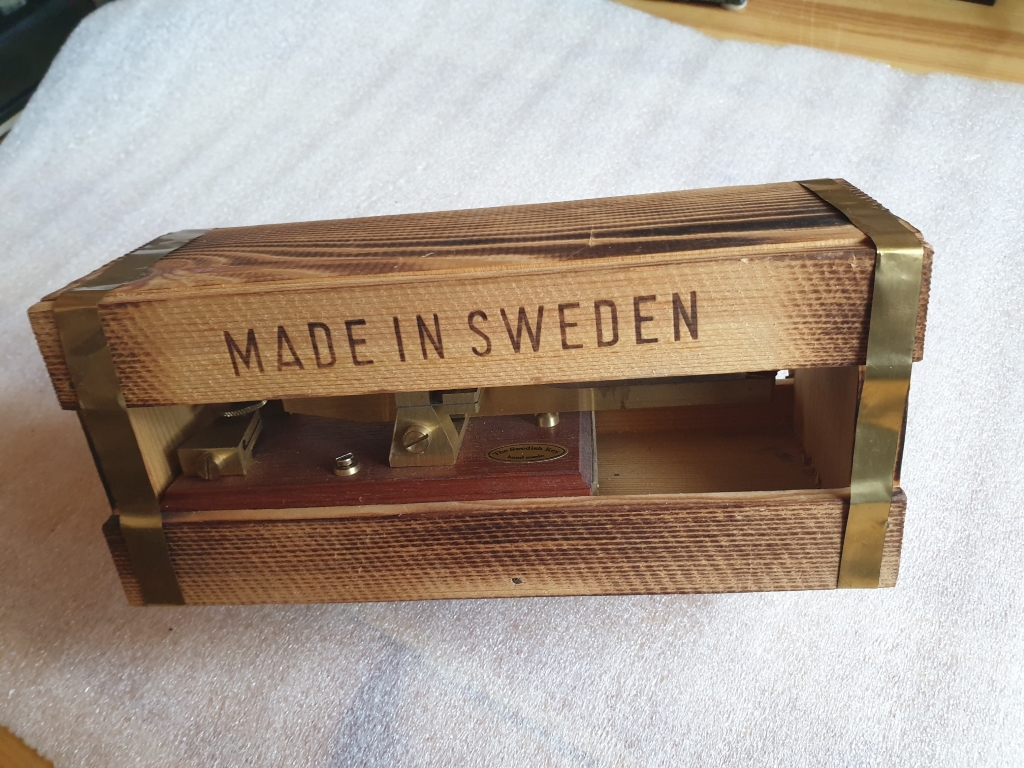 K179. Original NOS "Swedish Key", ham version made by Lennart Pettersson & Co. in Hoverberg. This one is in a wooden gift box. Never used, serial no. 4703. See K41. for more info on this key. Many was exported to Japan as they were popular there. Hi-mound made a clone of this key, see K160, the HK-802).
K179. Original NOS "Swedish Key", ham version made by Lennart Pettersson & Co. in Hoverberg. This one is in a wooden gift box. Never used, serial no. 4703. See K41. for more info on this key. Many was exported to Japan as they were popular there. Hi-mound made a clone of this key, see K160, the HK-802).
Not procured yet.
Not procured yet.
Norwegian keys
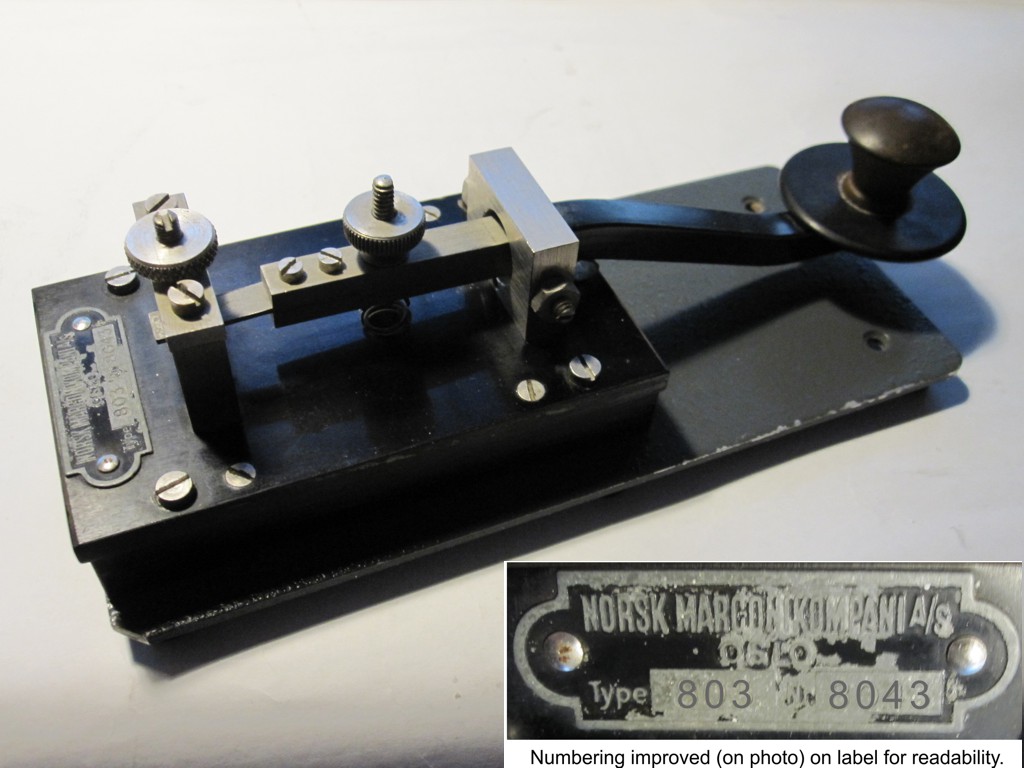 K79. Norsk Marconikompani A/S, Oslo, Norway. A commercial radio telegraphy key, type 803, serial no. 8043. Procured from Trond Nerlie, LA1TV. The history of this key is unknown, it is from an estate sale. These keys were used in training of navy and shipping radio operators in 196x...197x.
K79. Norsk Marconikompani A/S, Oslo, Norway. A commercial radio telegraphy key, type 803, serial no. 8043. Procured from Trond Nerlie, LA1TV. The history of this key is unknown, it is from an estate sale. These keys were used in training of navy and shipping radio operators in 196x...197x.
K80. This is another Norwegian commercial key, type N21P, made by NERA A/S. Used onboard m/s Bore Star/Silja Star (OIGM), later Orient Express (9KVJ), still later m/s Wasa Queen (OJDZ). Rugged and exact feeling, excellent condition, with dust cover. Salvaged by SK OH6PJ Juhani when the ship's station was decomissioned.
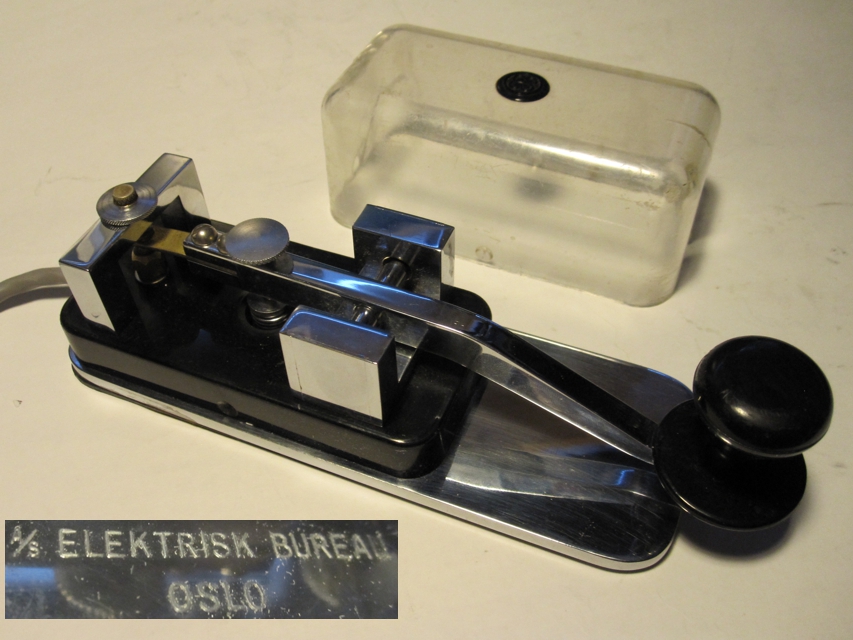 K117. A/S Elektrisk Bureau, Oslo, Norway has made this fine maritime key for commercial and naval shipping as well as Norwegian coastal stations. Operators call it the EB-key. It is very stable, weight 860 grams. Chrome plated brass hardware. This is a very appreciated gift from Frank Berglund, LA9IQ. Thanks OM!
K117. A/S Elektrisk Bureau, Oslo, Norway has made this fine maritime key for commercial and naval shipping as well as Norwegian coastal stations. Operators call it the EB-key. It is very stable, weight 860 grams. Chrome plated brass hardware. This is a very appreciated gift from Frank Berglund, LA9IQ. Thanks OM!
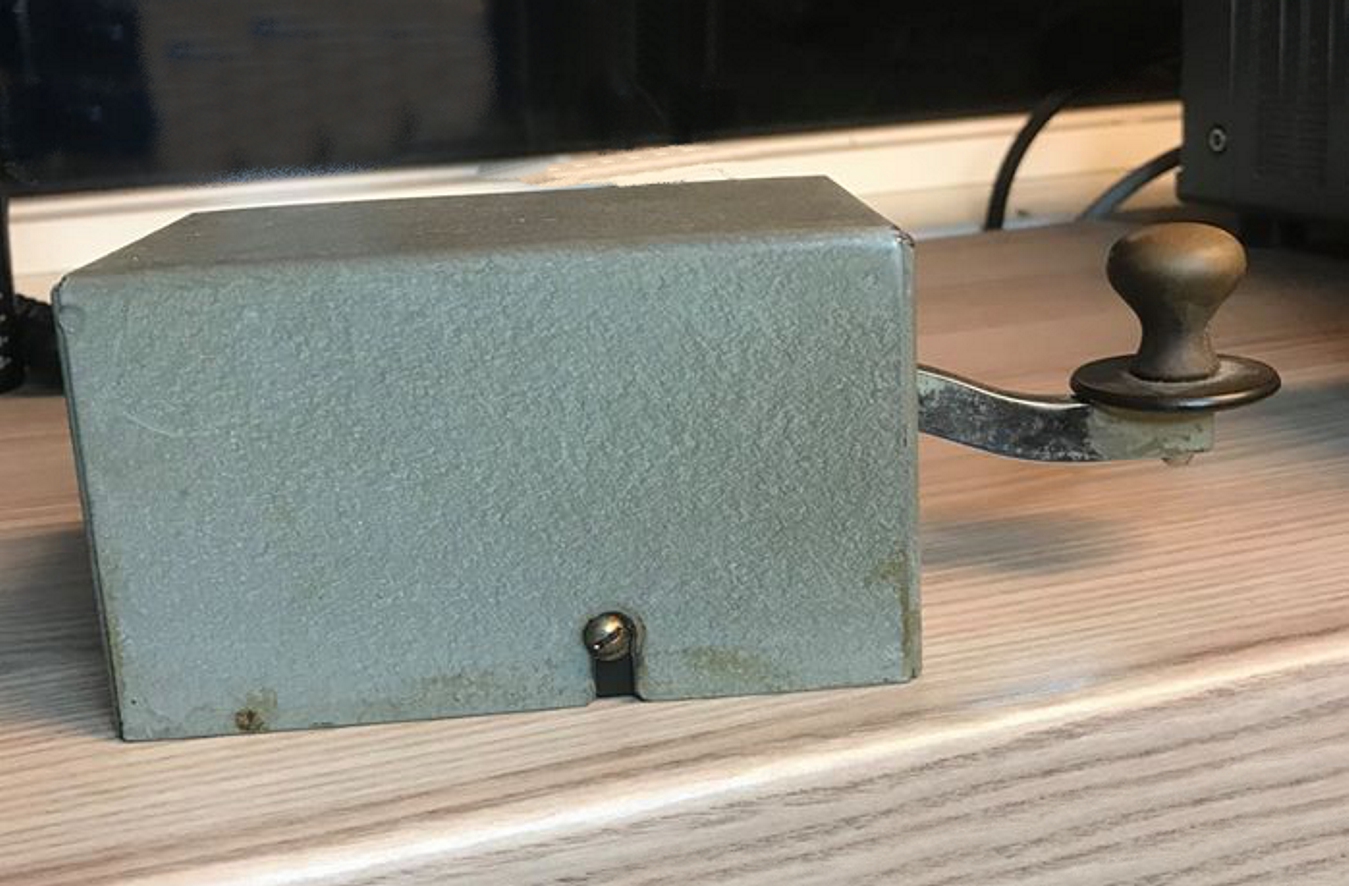 K152. An early Norwegian commercial key, probably type N20PF, made by NERA A/S after 1947. Here seen with sheet iron case mounted. This key has double circuits, which is very rare. Procured from Trond Nerlie, LA1TV. Additional info by Hans, LA9LT.
K152. An early Norwegian commercial key, probably type N20PF, made by NERA A/S after 1947. Here seen with sheet iron case mounted. This key has double circuits, which is very rare. Procured from Trond Nerlie, LA1TV. Additional info by Hans, LA9LT.
Not procured yet.
Not procured yet.
Danish keys
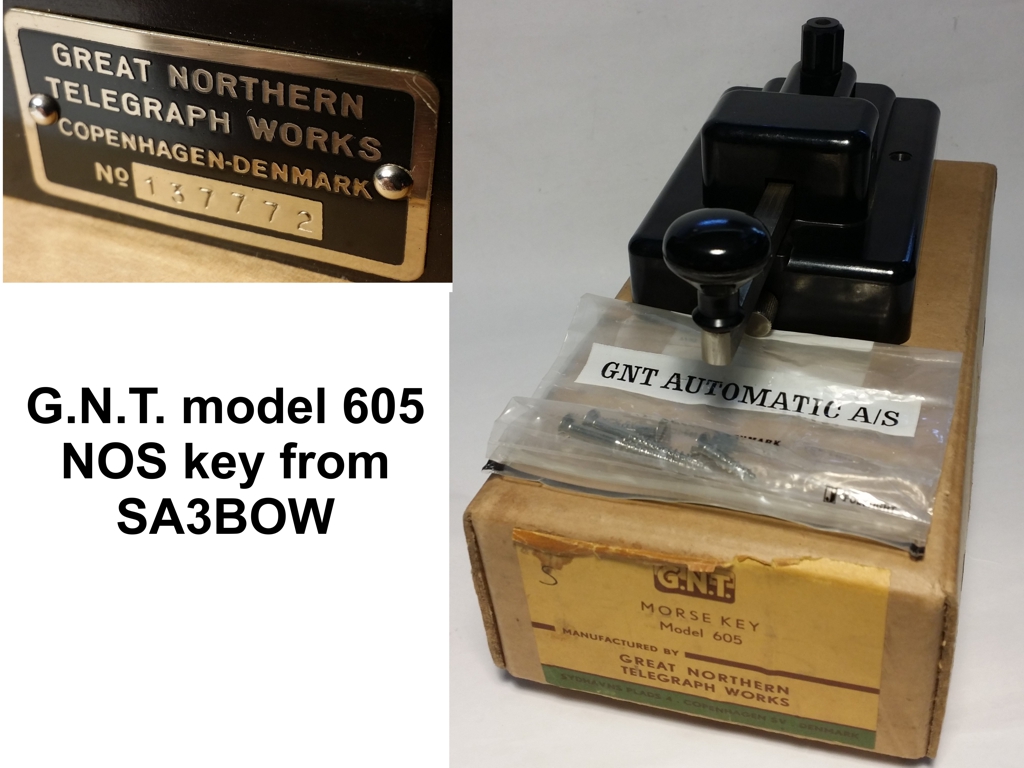 K81. A unused G.N.T (Great Northern Telegraph Works) model 605 key, serial no. 137772. These keys were made from around 1948 up to 1969 by GNT. 1968 the company changed its name to GNT Automatic A/S. Donated by OM Dejan, SA3BOW. Thanks a lot! Unused, complete in original box with connection plate and screws for tabletop attachment. Original wiring is in place! Made at Sydhavn plads 4, Copenhagen Denmark.
K81. A unused G.N.T (Great Northern Telegraph Works) model 605 key, serial no. 137772. These keys were made from around 1948 up to 1969 by GNT. 1968 the company changed its name to GNT Automatic A/S. Donated by OM Dejan, SA3BOW. Thanks a lot! Unused, complete in original box with connection plate and screws for tabletop attachment. Original wiring is in place! Made at Sydhavn plads 4, Copenhagen Denmark.
K82. A British copy of the Danish G.N.T 605 key (see K81). This one is made under licence by Morse Equipment Ltd, Hertfordshire in the UK and marketed by Sedgewall Communications Group in the 1970's. Parts were maybe bought from GNT, and the keys was assembled in the UK. Both British and Danish keys have the same mold numbers, but two missing steel pins differs from the original. Info by OM Peter, G4TFH.
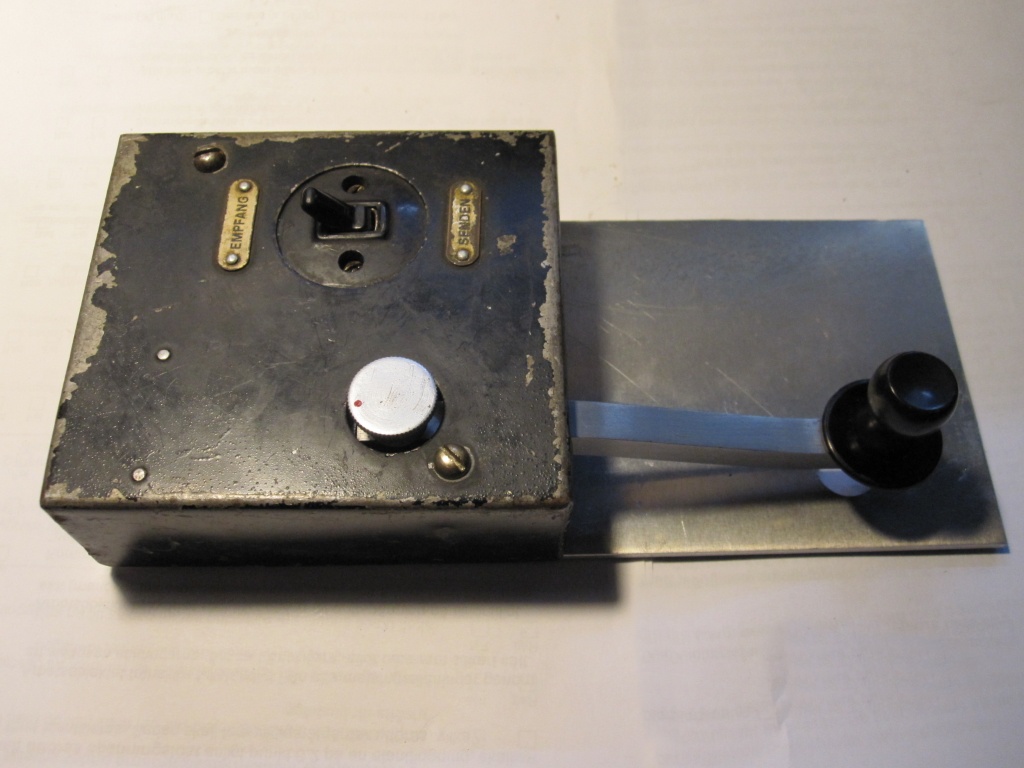 K89. Here an early VERY rare M.P. Pedersen "single adjuster" key. It is rare because of the square base original to this Naval key. A RX/TX switch with German labels is located at the right. Allegedly used around the 1930's in Bremen/Germany to key a high power transmitter for weather reports to ships. I got it in my collection from Belgium by a swap operation.
K89. Here an early VERY rare M.P. Pedersen "single adjuster" key. It is rare because of the square base original to this Naval key. A RX/TX switch with German labels is located at the right. Allegedly used around the 1930's in Bremen/Germany to key a high power transmitter for weather reports to ships. I got it in my collection from Belgium by a swap operation.
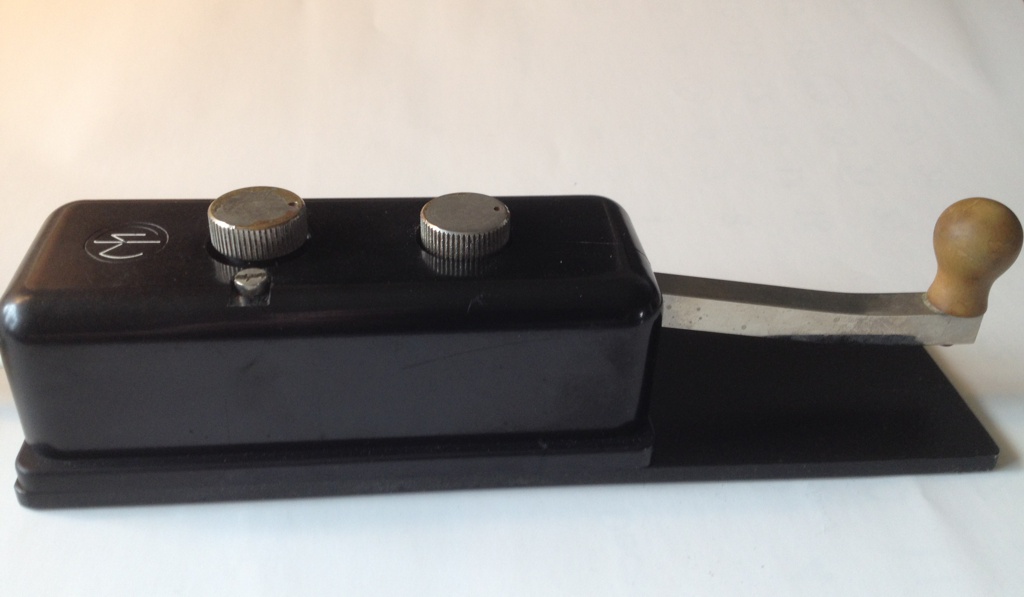
K129. A M.P. Pedersen maritime key from Denmark, has the MP-logo on the cover. It is a "Dual Adjuster", bought from a radio club. Great condition, some pitting on the nickel coated adjusters, and an invisible crack in the bakelite cover. MPP designs was bought by Amplidan in about 1970's. Amplidan is today owned by Wärtsilä Marine.
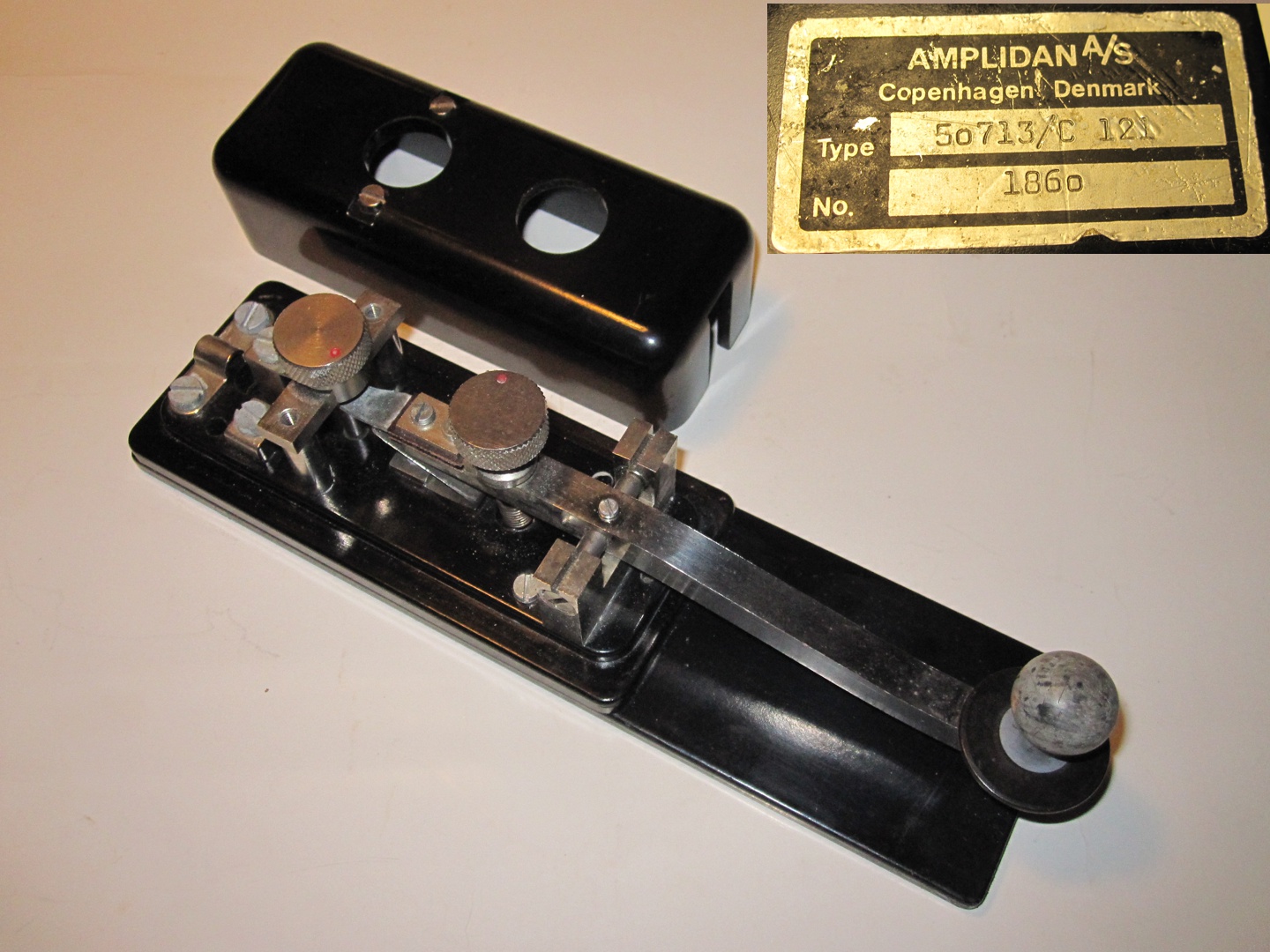 K130. Amplidan "dual adjuster" commercial/maritime Danish key. Condition almost as new. This key was on board m/v Marchen Maersk (IMO8613308) from 1988 until she was refitted for GMDSS 1998. At the time she was the biggest container ship in the world! Callsign then was OWDQ2, later SXSQ.
K130. Amplidan "dual adjuster" commercial/maritime Danish key. Condition almost as new. This key was on board m/v Marchen Maersk (IMO8613308) from 1988 until she was refitted for GMDSS 1998. At the time she was the biggest container ship in the world! Callsign then was OWDQ2, later SXSQ.
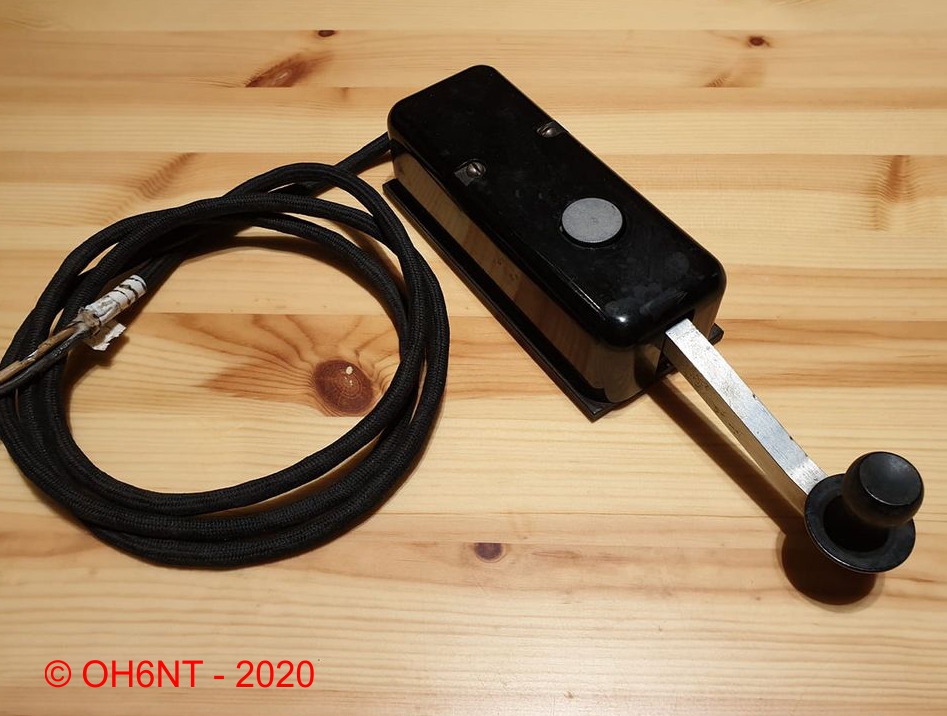 K157. Here also an early rare M.P. Pedersen "single adjuster" key in original shape, abou 1950. No logo on the lid on this one, and a flat-top knob. It is a maritime key, used both by the commercial shipping and various naval ships. Very good quality. See also K89 above.
K157. Here also an early rare M.P. Pedersen "single adjuster" key in original shape, abou 1950. No logo on the lid on this one, and a flat-top knob. It is a maritime key, used both by the commercial shipping and various naval ships. Very good quality. See also K89 above.
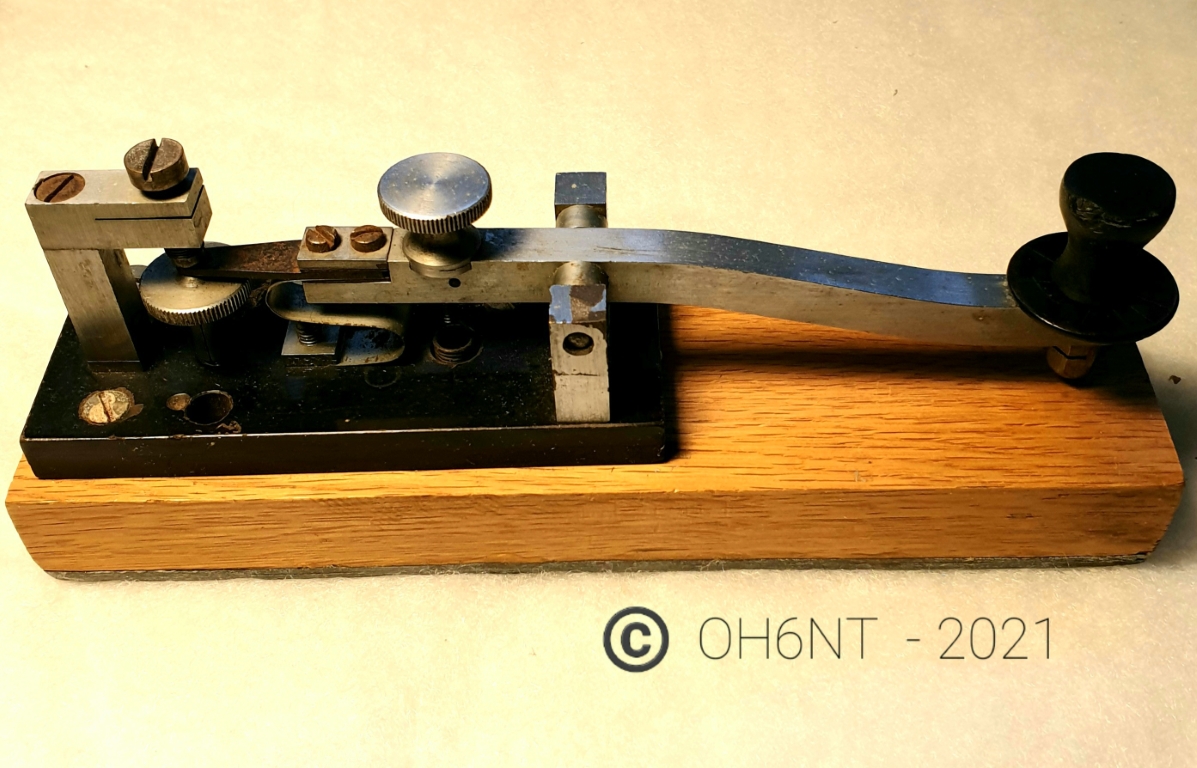 K176. M.P. Pedersen maritime key from Denmark, made around 1920, coming from the long wave transmitter onboard the Cable steamer "Edouard Suenson", built in 1921. This one is an early model, no cover, on a wood base. Some r/o has flattened the knob, otherwise in original state. A 2 mm layer of lead at the base makes it really stable.
K176. M.P. Pedersen maritime key from Denmark, made around 1920, coming from the long wave transmitter onboard the Cable steamer "Edouard Suenson", built in 1921. This one is an early model, no cover, on a wood base. Some r/o has flattened the knob, otherwise in original state. A 2 mm layer of lead at the base makes it really stable.
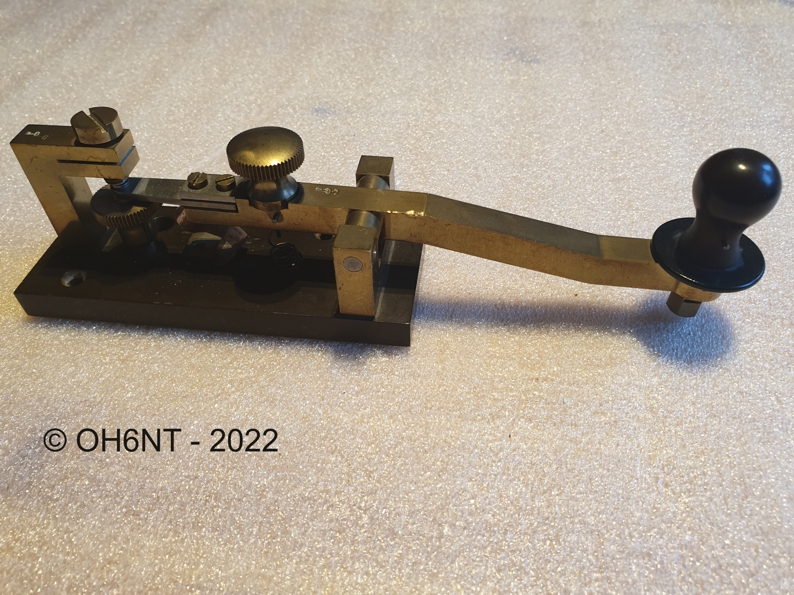 K180. Another early M.P. Pedersen maritime key from the 1920's, probably earlier than K176; this one is not nickel plated, and the arm is not smoothed at the bends. It also has other small differences. This has the original rounded ebonite knob.
K180. Another early M.P. Pedersen maritime key from the 1920's, probably earlier than K176; this one is not nickel plated, and the arm is not smoothed at the bends. It also has other small differences. This has the original rounded ebonite knob.
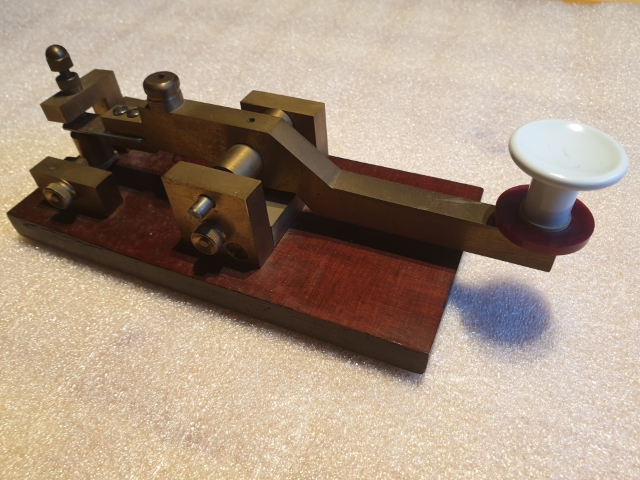 K181. Danish heavy brass key on paper reinforced bakelite ("Pertinax") base. Good feel and adjustability. Probably DIY, maker unknown, no markings.
K181. Danish heavy brass key on paper reinforced bakelite ("Pertinax") base. Good feel and adjustability. Probably DIY, maker unknown, no markings.
 K190. Danish copy of a British GPO key. This one is barely visibly marked "S.N.T.S:s FABRIK KJØBENHAVN on the top below the key arm. Base is mahogany. It is very big and a heavy, measuring about 21 by 12 cm and weighsabout 1,6 kg. The round brass bezel with its beveled glass lifts off for adjustments. This is a "double current" key with two sets of contacts. Excellent condition! Also see K194.
K190. Danish copy of a British GPO key. This one is barely visibly marked "S.N.T.S:s FABRIK KJØBENHAVN on the top below the key arm. Base is mahogany. It is very big and a heavy, measuring about 21 by 12 cm and weighsabout 1,6 kg. The round brass bezel with its beveled glass lifts off for adjustments. This is a "double current" key with two sets of contacts. Excellent condition! Also see K194.
Not yet procured.
Not yet procured.
British, Australian, New Zeeland, India keys
[](keys/IMG%5F0329 %28Small%29.JPG)K3. R.A. Kent Engineering (UK) long arm straight key, type KT-1, built from kit. Acquired together with a Kent battery operated training tone generator from a ham flea market.
[](keys/IMG%5F0332 %28Small%29.JPG)K6. General Post Office issue made by Signalling Equipment Ltd., Potters Bar, Middlesex, England. Model "F-17", marked "L38" on the frame and the arm. Frame and arm are diecast brass, wrinkle painted. A nice little key.
[](keys/IMG%5F0344 %28Small%29.JPG)K13. A British bakelite BCE type key (502/C307/McMurdo) used with the British Racal set. Different makers in several Commonwealth countries, distinguished by letters around an arrow: GB =↑(no letters), Australia = D↑D, Canada = C with↑inside, New Zealand=N↑Z.
[](keys/IMG%5F0486 %28Medium%29.JPG)K23. British WW2 key, type KEY WT.8 AMP No.2 MK II. Mounted on a black bakelite plate "NORSTEDTS" by some ham operator. Bought from swedish auction site. This has the large finger shield used by the Marines.
[](keys/IMG%5F0414 %28Small%29.JPG)K24. British WW2 key. It is a brass and black plastic key, marked KEY WT.8 AMP. No.2. MK III. There are hundreds of variations on this key.
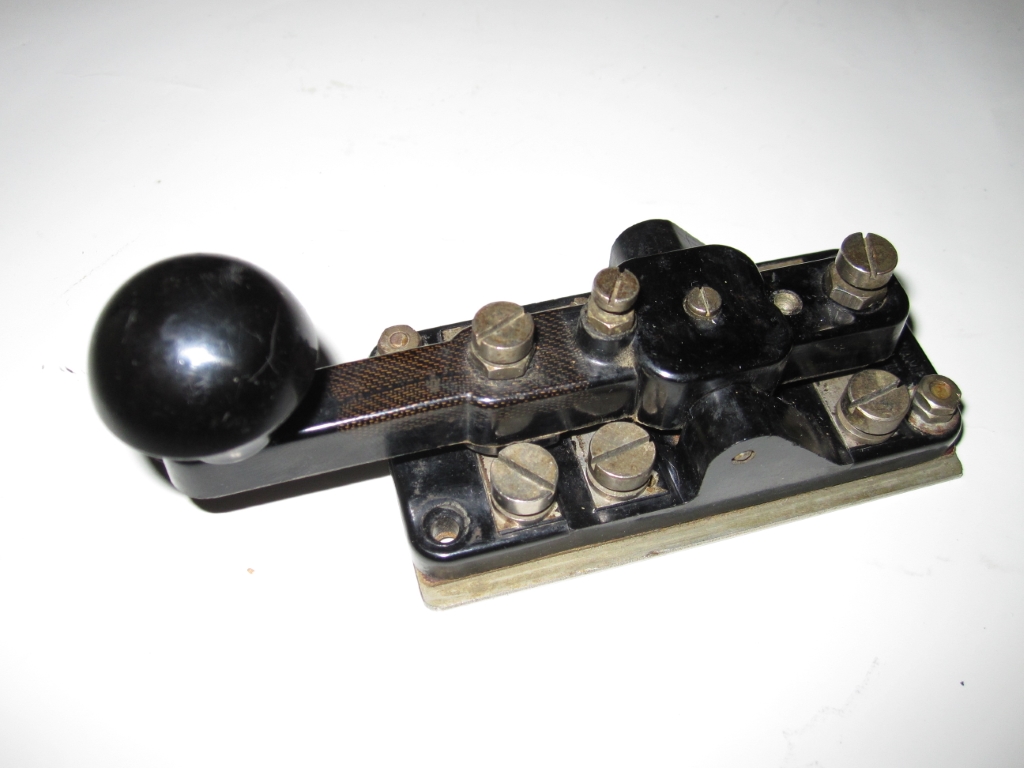 K124. Another British KEY WT.8 AMP. No.2. MK III. It is a brass and black plastic key.
K124. Another British KEY WT.8 AMP. No.2. MK III. It is a brass and black plastic key.
[Evolution of the WT 8 AMP key here. ](keydocs/Evolution of the WT 8 AMP key.pdf)
MUCH more info here by VE3CBK and PA0PCR: "Key and plug assembiles"
[](keys/DSC%5F1738 %28Small%29.JPG)K26. Box contains an YA1860 British small key made by Plessey. The key was originally a part of a British field phone set type D Mk V, used to mark end of a call, or a free line. The aluminium box and the knob are not original, probably the key is built in by some ham operator.
[](keys/IMG%5F0484 %28Medium%29.JPG)K45. British RAF F-type flameproof "Bathtub" key ReF. No. 10/F 7741 from 1938 in perfect condition. Used on board British bombers (Lancaster, Halifax, and the Swordfish torpedo bomber) with the set T1154. Two versions known, the black one, made by Northern Electric in Canada, and the brown one by the Royal Engineers at Inglis Barracs, Mill Hill, London.
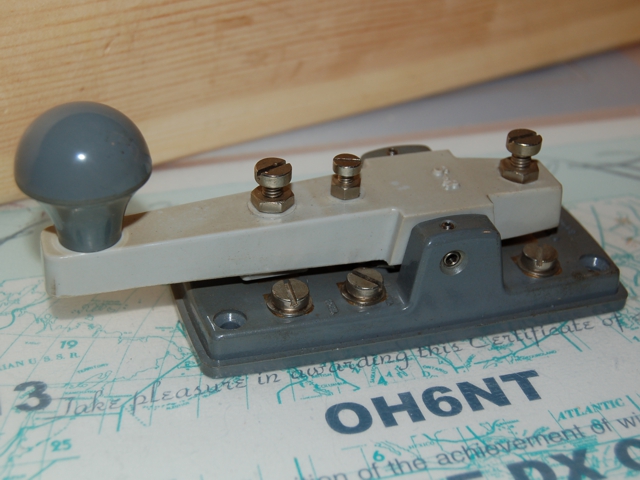 K55. British S-R Cotel key, inspired by and successor to the WT8AMP No.2 MK III series (see K24 and K124 above). Made by G3SRK, Jack Sykes' company Lingard Electronics around 1960-1970's. More than 50k keys were made of this type.
K55. British S-R Cotel key, inspired by and successor to the WT8AMP No.2 MK III series (see K24 and K124 above). Made by G3SRK, Jack Sykes' company Lingard Electronics around 1960-1970's. More than 50k keys were made of this type.
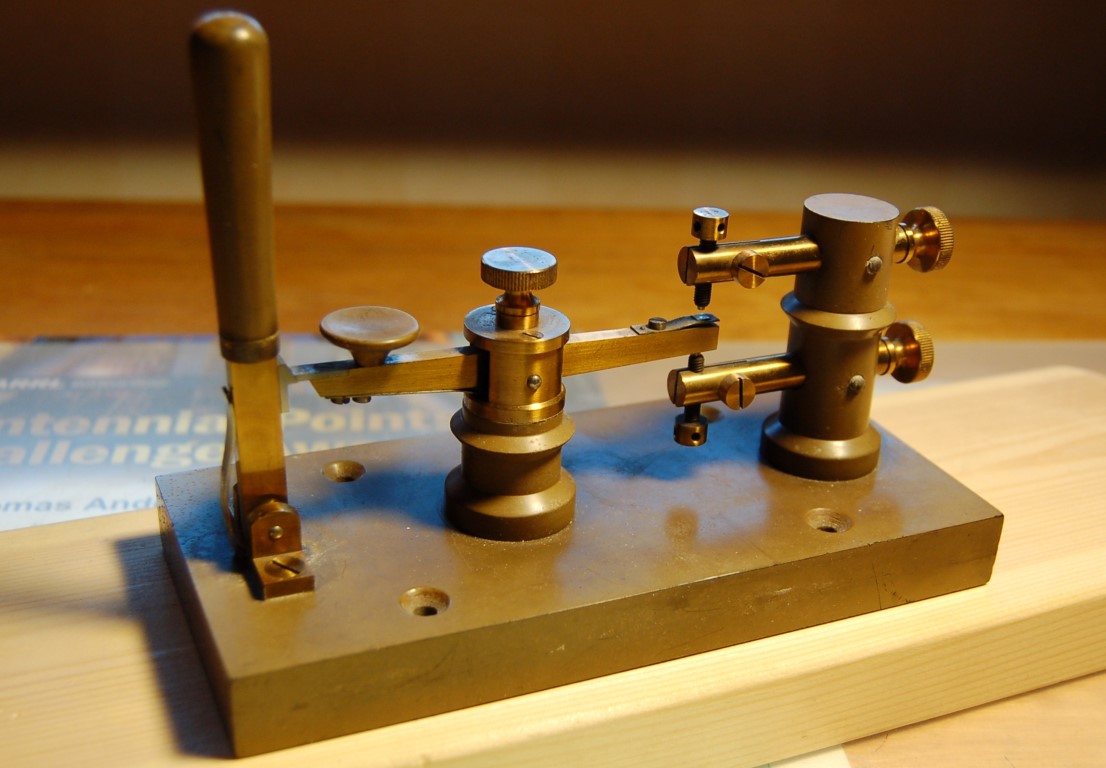 K57. Not really a telegraph key! Information from the Honorary Curator John Parker at telegraphmuseum.org:
K57. Not really a telegraph key! Information from the Honorary Curator John Parker at telegraphmuseum.org:
It is probably a testing key, there are different special keys for telegraph cable capacitance tests. Charge the cable from a battery for so many seconds, then discharge it via a galvanometer and measure the deflection or 'throw'. The cable would be connected with the centre, and the battery and galvanometer to the other two.
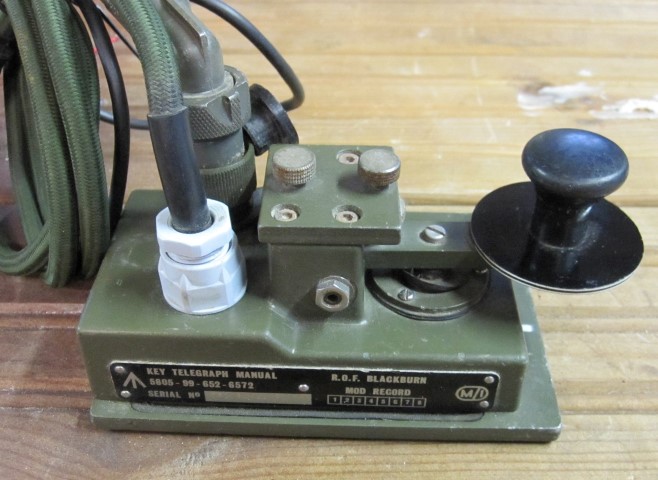 K66. Clansman is a flame proof sturdy miltary key made by the Royal Factory of Ordnance in Blackburn for the British forces. In use since 1980:s for different Clansman radio equipment. Good condition.
K66. Clansman is a flame proof sturdy miltary key made by the Royal Factory of Ordnance in Blackburn for the British forces. In use since 1980:s for different Clansman radio equipment. Good condition.
K76. British thrree terminal key made in the era 1910-1930 by A Franks Ltd, opticians in Manchester, UK. The knob is not original. It came mounted on a board together with a mechanical buzzer/battery holder, used as a training key. Solid brass, good feel. Ref: A quarter down on https://www.brundrit.co.uk/british-civilian-keys
K83. This is a Clansman leg key used with the VRC-321 or VRC-353 radios. Can also be used with back-pack radios such as PRC-319, PRC-320. Donated by my fellow ham friend Pontus, OH6EOG.
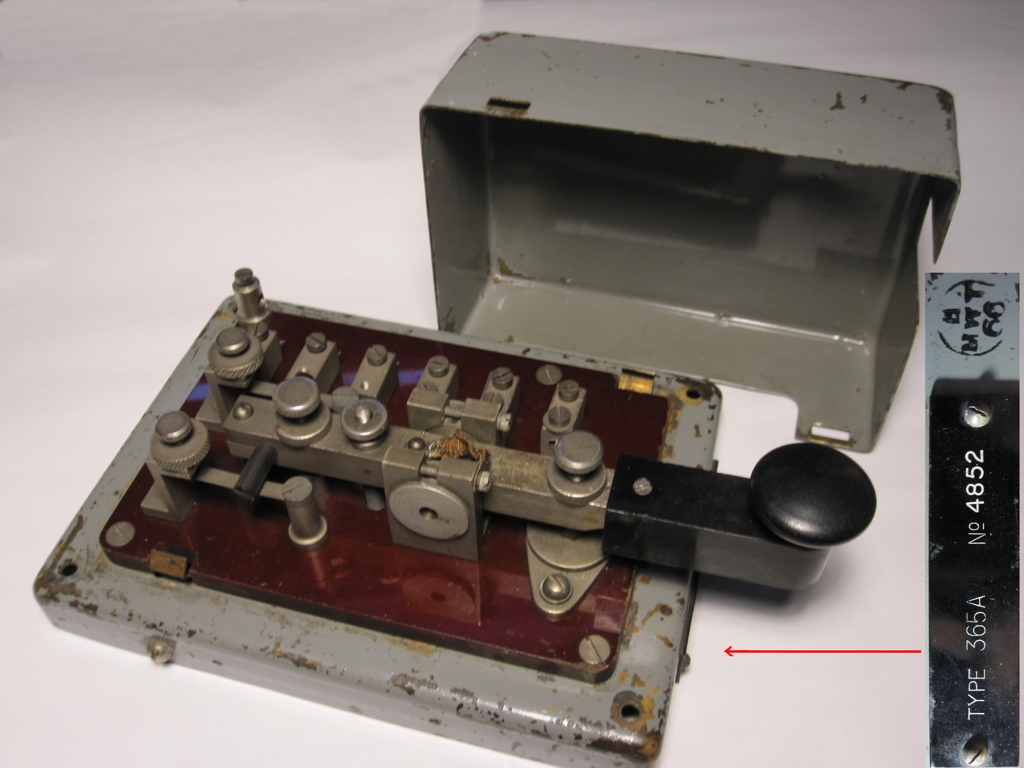 K92. A pre-WW2 merchant or Navy Marconi 365A key made by Marconi International Marine Communications Company, MIMCo. It is very, very rare because all Marconi 365's have a black phenolic base, but this one has a red base, probably due to shortage of materials during the war time. It is otherwise original but now have a reproduction makers' label. Sleeve bearings.
K92. A pre-WW2 merchant or Navy Marconi 365A key made by Marconi International Marine Communications Company, MIMCo. It is very, very rare because all Marconi 365's have a black phenolic base, but this one has a red base, probably due to shortage of materials during the war time. It is otherwise original but now have a reproduction makers' label. Sleeve bearings.
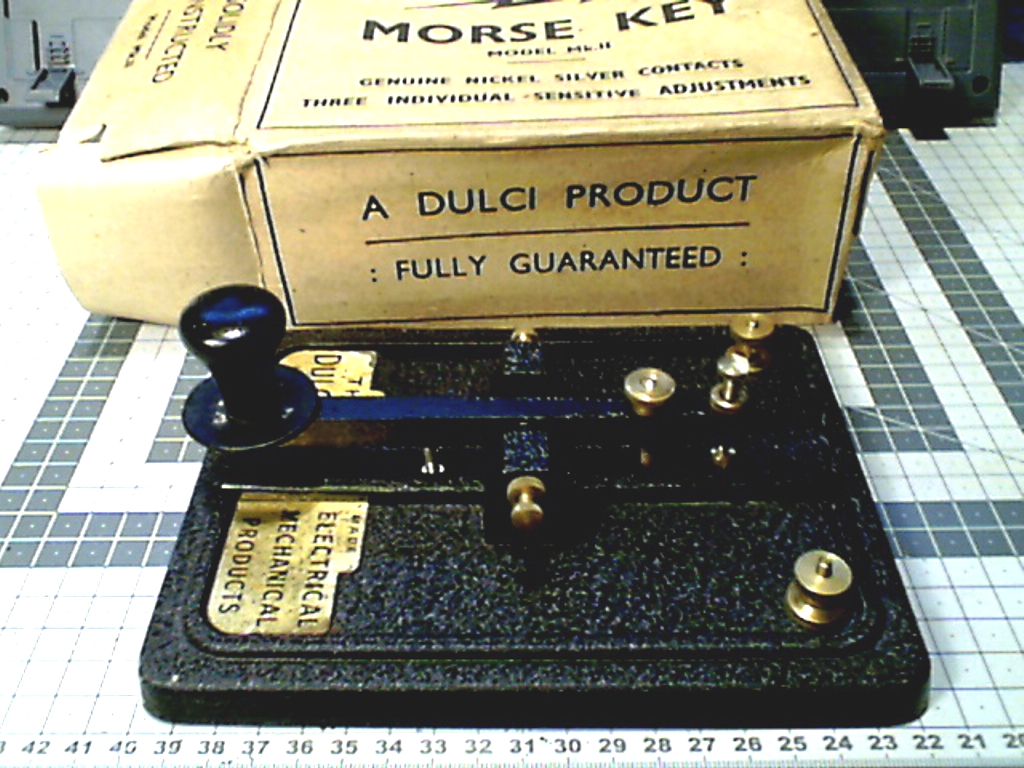 K102. Dulci Mk II Professional bakelite key, british made By Dulci Co. of London for the Radio Amateur market in the era 1947-59. NOS in original pacakging. Nickel/silver contacts, adjustable spring, gap and needle bearings in brass, base is bakelite. Some rust pittings on the label probably due to damp storage.
K102. Dulci Mk II Professional bakelite key, british made By Dulci Co. of London for the Radio Amateur market in the era 1947-59. NOS in original pacakging. Nickel/silver contacts, adjustable spring, gap and needle bearings in brass, base is bakelite. Some rust pittings on the label probably due to damp storage.
[.jpg) ](keys/Stillwell-K118 %28C%29.jpg)K118. Precision solid brass key made by Instrument maker Derek Stillwell in Schrewsbury, England about 1994-95. Arm is solid brass, length 178 mm, with silver alloy contacts. Knob is of padauk hardwood. The base is heavy polished black Portuguese marble, with non-slip ribbed rubber mat on the bottom. Total weight 1,2 kg, s/n 527100. Very good feel, this is an unused quality key! Quite rare, only 119 made (highest known serial#).
](keys/Stillwell-K118 %28C%29.jpg)K118. Precision solid brass key made by Instrument maker Derek Stillwell in Schrewsbury, England about 1994-95. Arm is solid brass, length 178 mm, with silver alloy contacts. Knob is of padauk hardwood. The base is heavy polished black Portuguese marble, with non-slip ribbed rubber mat on the bottom. Total weight 1,2 kg, s/n 527100. Very good feel, this is an unused quality key! Quite rare, only 119 made (highest known serial#).
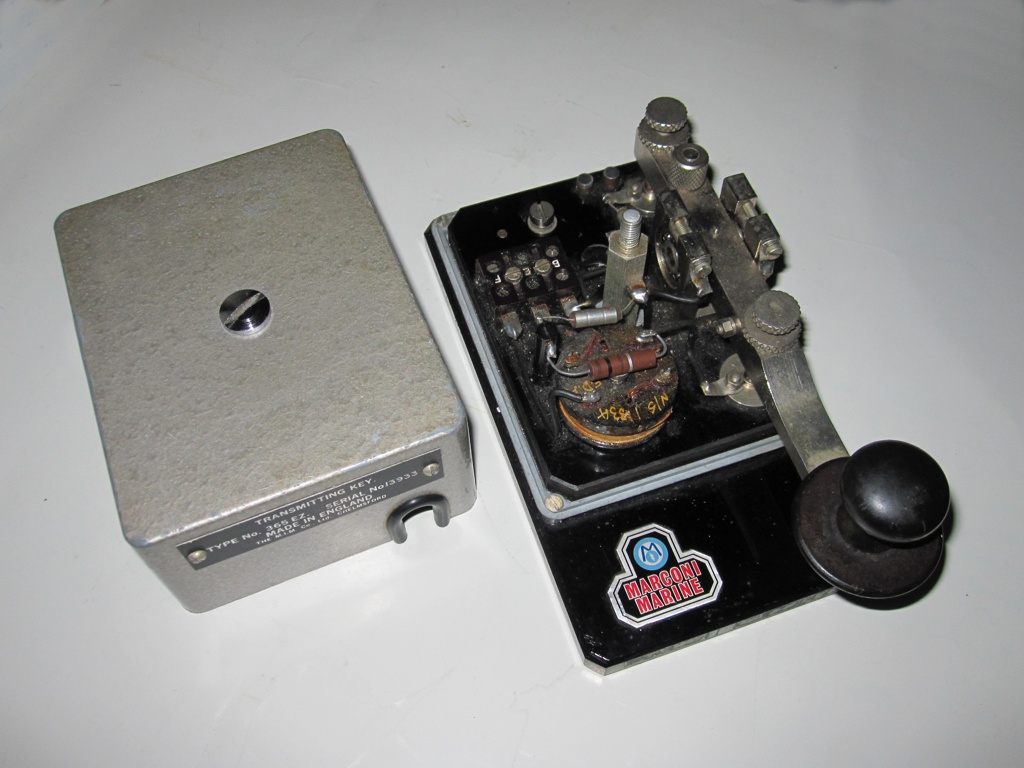 K125. Marconi 365 EZ commercial marine key, s/n 13933 by M.I.M. Co., Chelmsford, England. This key has been the property of a now retired Finnish "sparky" and followed him on several ships around the world. Weight is 1260 grams, size 100 x 165 x 70 mm. The operator has exchanged the knob to his preferred one. In vg condition. The lid is marked inside "Eddystone 2343P".
K125. Marconi 365 EZ commercial marine key, s/n 13933 by M.I.M. Co., Chelmsford, England. This key has been the property of a now retired Finnish "sparky" and followed him on several ships around the world. Weight is 1260 grams, size 100 x 165 x 70 mm. The operator has exchanged the knob to his preferred one. In vg condition. The lid is marked inside "Eddystone 2343P".
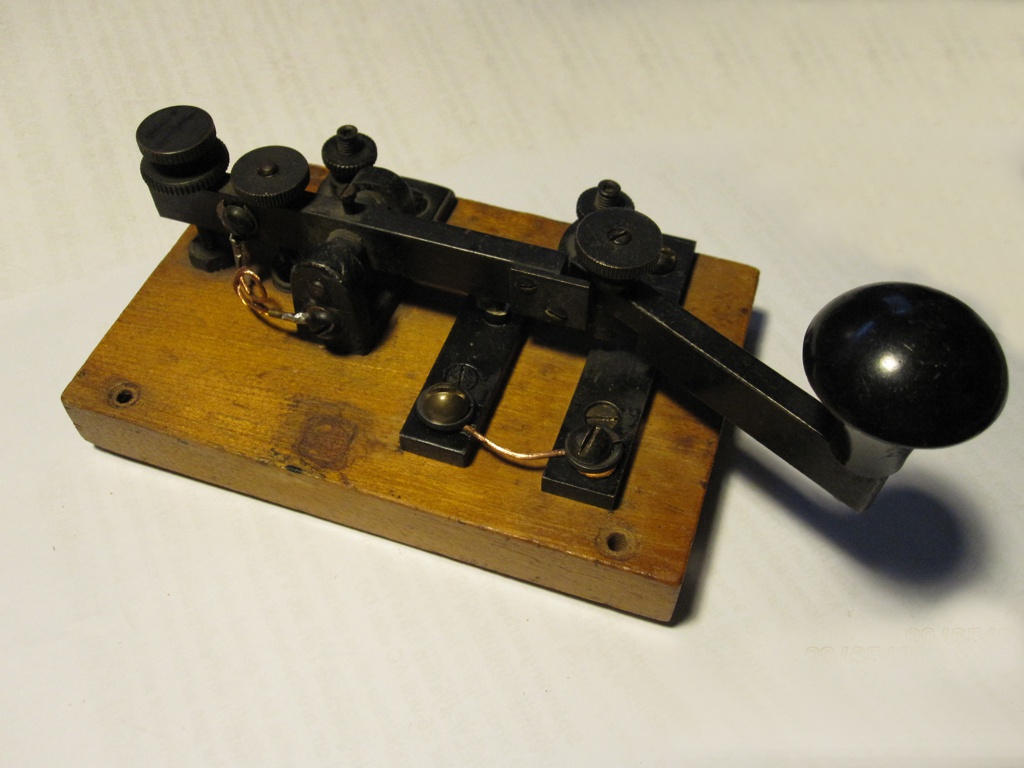 K123. Folding key from WW-I era. This one has a British inspectors mark and a British knob, and thus is NOT the American version J-3. The key was used as part of a ground-return trench telegraph set, a copy of the French TPS (Telegrafie Par Le Sol = Landline Telegraphy). Originally the key was housed in a wooden box with a battery.More info here by IK6BAK.
K123. Folding key from WW-I era. This one has a British inspectors mark and a British knob, and thus is NOT the American version J-3. The key was used as part of a ground-return trench telegraph set, a copy of the French TPS (Telegrafie Par Le Sol = Landline Telegraphy). Originally the key was housed in a wooden box with a battery.More info here by IK6BAK.
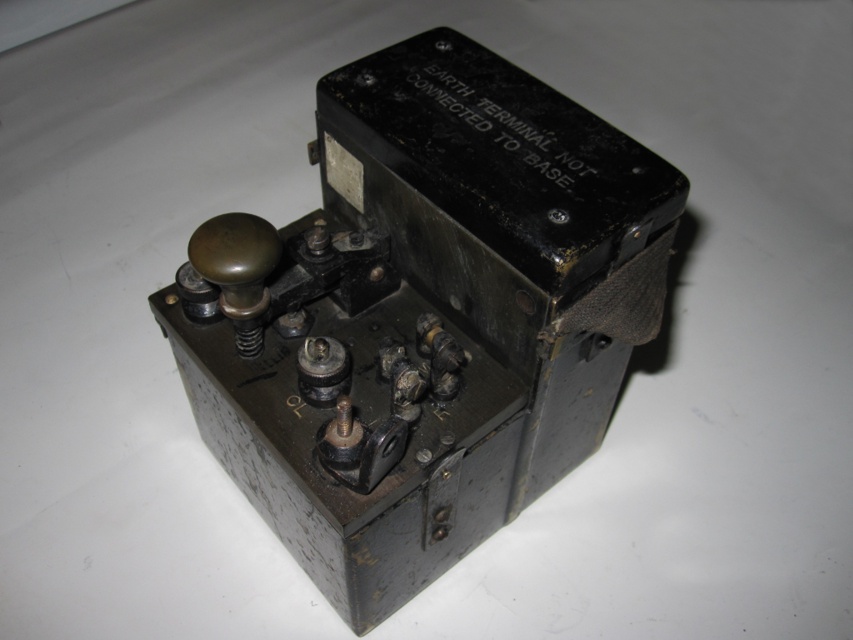 K134. A tiny telegraph key on the connection deck of this WW-I era British Army portable telephone field set type D MkIII. Includes a telescopic handset and a buzzer inside. Made 1917 by Sterling Co. Standard field phone for the Infantry and Royal Artillery Forward Observation Officers. Also used by the linemen of the Royal Engineers' Signal Service. Ref: https://bit.ly/2WamNPP
K134. A tiny telegraph key on the connection deck of this WW-I era British Army portable telephone field set type D MkIII. Includes a telescopic handset and a buzzer inside. Made 1917 by Sterling Co. Standard field phone for the Infantry and Royal Artillery Forward Observation Officers. Also used by the linemen of the Royal Engineers' Signal Service. Ref: https://bit.ly/2WamNPP
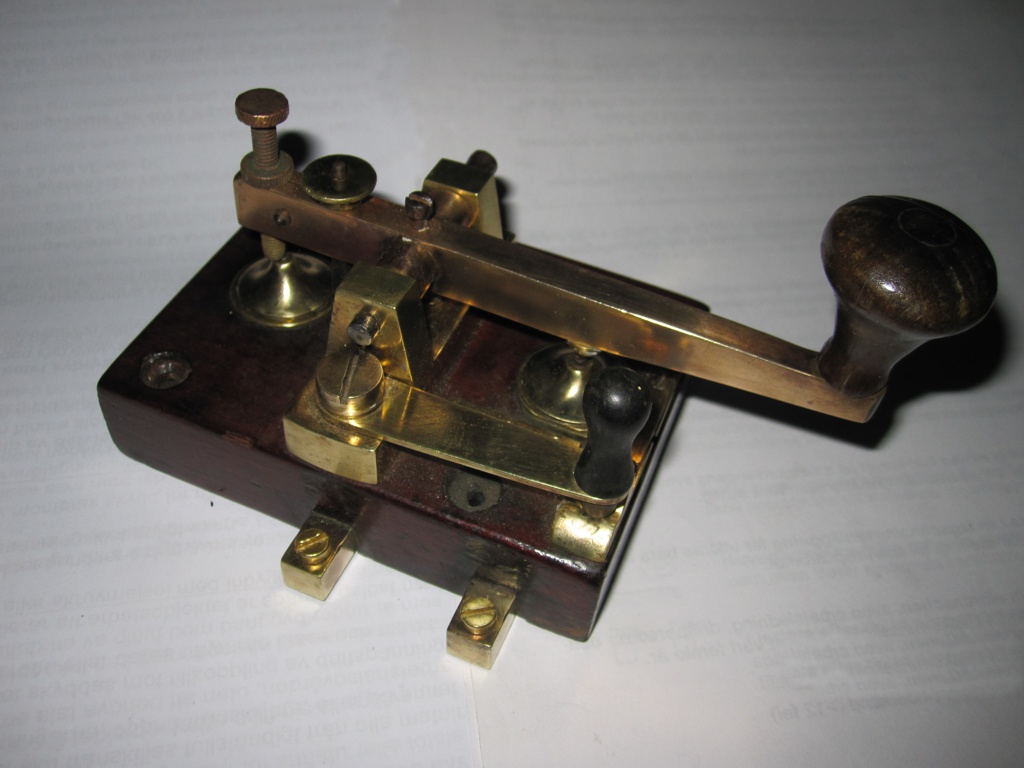 K140. This is a key from around 1865, when the Siemens brothers William, Werner and Carl took over the English branch of Siemens & Halske, and formed the Siemens Brothers Co. in Woolwich, London. It is a landline telegraph key with a shorting lever. Good condition for a 150 year old key! The company name is stamped on the side of the trunnion. Double contacts, common in landline circuits at the time. Australian PMG keys are based on this Siemens Bros. design.
K140. This is a key from around 1865, when the Siemens brothers William, Werner and Carl took over the English branch of Siemens & Halske, and formed the Siemens Brothers Co. in Woolwich, London. It is a landline telegraph key with a shorting lever. Good condition for a 150 year old key! The company name is stamped on the side of the trunnion. Double contacts, common in landline circuits at the time. Australian PMG keys are based on this Siemens Bros. design.
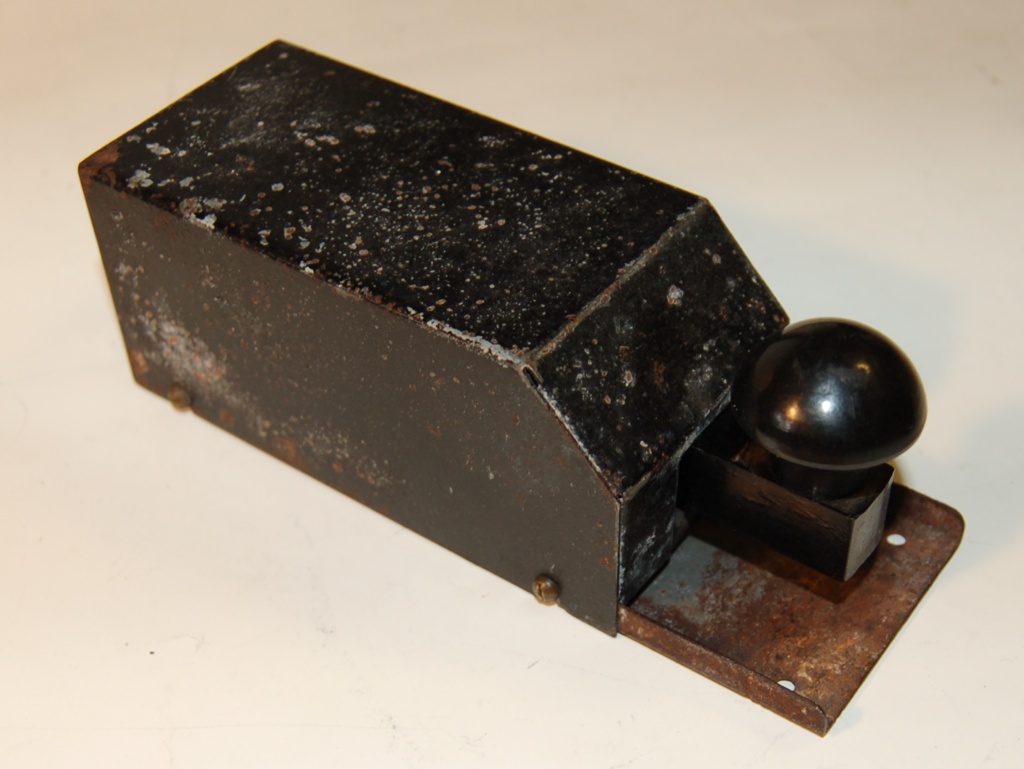 K144. British WW2 key, type KEY W.T. 8 AMP No. 2 MK III from a "Key and plug Assembly #9 v.2 ", made by Whiteley Electrical Radio Co., Ltd, 109 Kingsway, London (marked W.E.R and Z.A 3145 on the bottom mold) and W.0 - W.119 on the arm.
K144. British WW2 key, type KEY W.T. 8 AMP No. 2 MK III from a "Key and plug Assembly #9 v.2 ", made by Whiteley Electrical Radio Co., Ltd, 109 Kingsway, London (marked W.E.R and Z.A 3145 on the bottom mold) and W.0 - W.119 on the arm.
See MUCH more info in this pdf:
"Key and plug assembiles" by VE3CBK and PA0PCR.
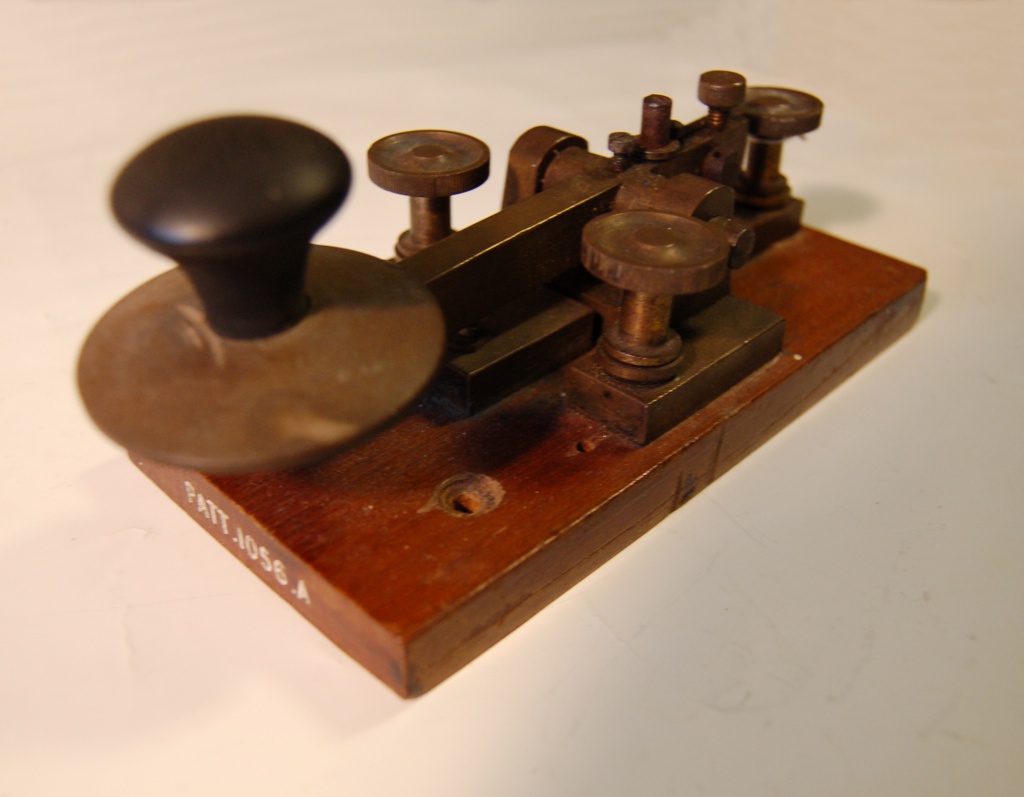 K145. British General Post Office key, PATT.1056.A. This key appears in the cataloque "Telegraph Instruments -The Walters’ Electrical Mfg. Co. (Ltd.) of 1908. The company was located at Kensal Road, London, W. Cost of the type "1K" mounted on polished mahogany was 1£ even. It was available in several settings.
K145. British General Post Office key, PATT.1056.A. This key appears in the cataloque "Telegraph Instruments -The Walters’ Electrical Mfg. Co. (Ltd.) of 1908. The company was located at Kensal Road, London, W. Cost of the type "1K" mounted on polished mahogany was 1£ even. It was available in several settings.
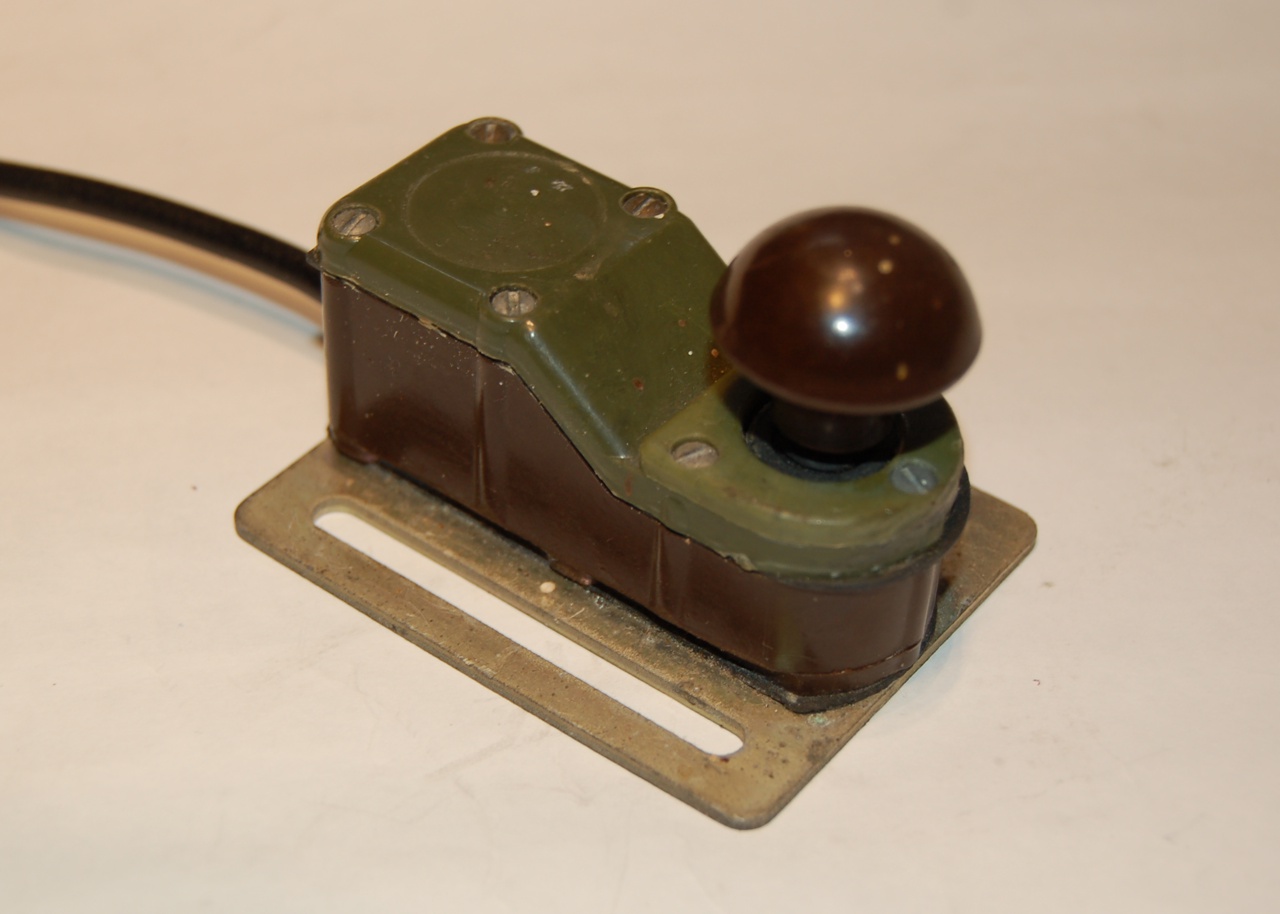 K149. British bakelite BCE type key (502/C307/McMurdo) used with the British Racal set. No makers marks, but stamped "1 MAR 1976" at the bottom. See also K13.
K149. British bakelite BCE type key (502/C307/McMurdo) used with the British Racal set. No makers marks, but stamped "1 MAR 1976" at the bottom. See also K13.
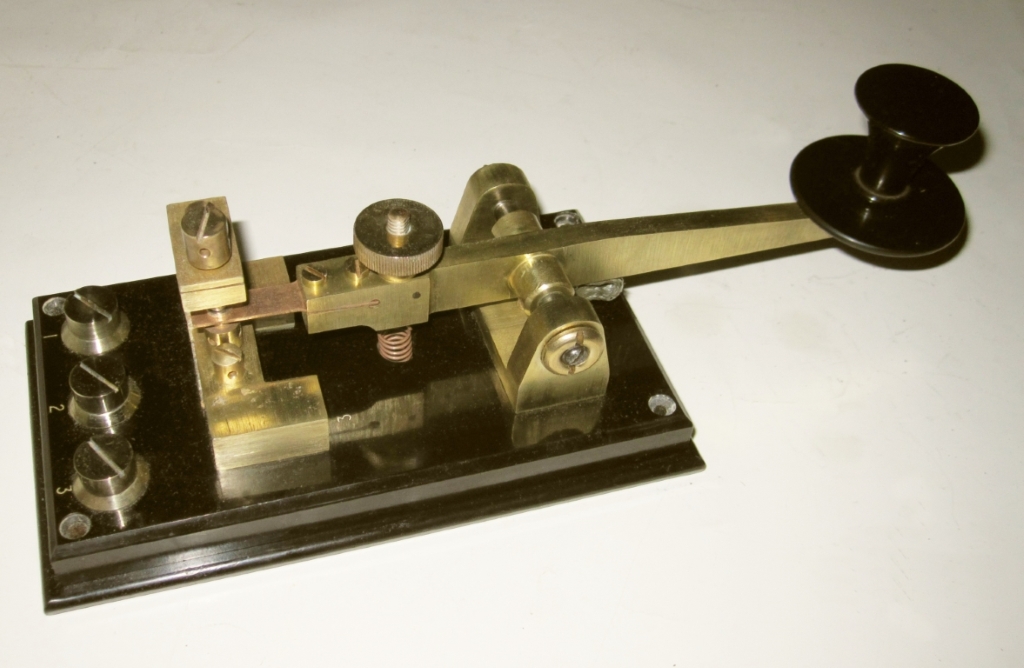 K150. An early original British Marconi PS213A procured from David ZL2WT. Early, because it is not nickel plated, just plain brass. No markings / serial number indicates export model. Era: 1920's according to Phil, G0NVT and John, G0RDO. Used at a NZ coastal radio station.
K150. An early original British Marconi PS213A procured from David ZL2WT. Early, because it is not nickel plated, just plain brass. No markings / serial number indicates export model. Era: 1920's according to Phil, G0NVT and John, G0RDO. Used at a NZ coastal radio station.
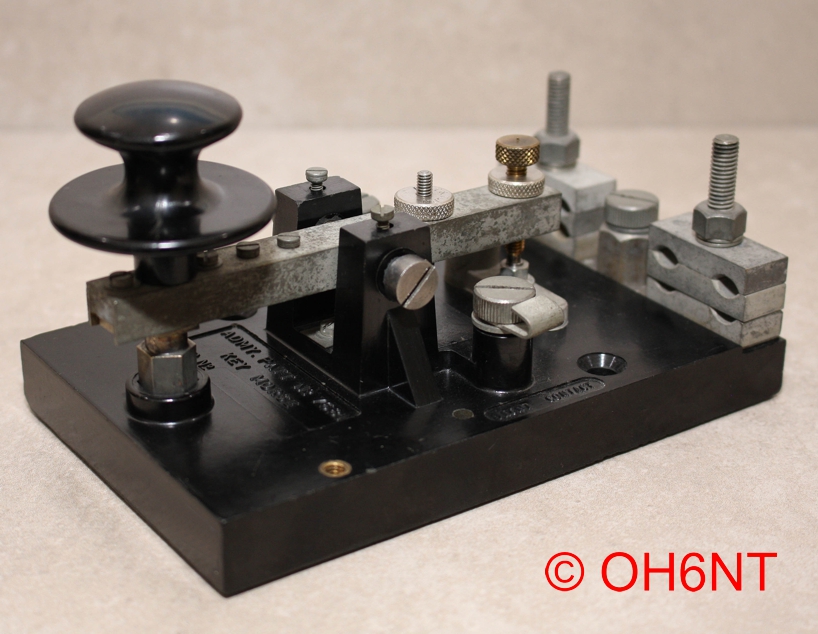 K159. Admirality Pattern 7681 type 3, with Bakelite trunnions. In very good condition, almost no wear. British key, specifically ordered by the Admiralty for use on UK Navy vessels. Sold as military surplus in the 1950's. Not supplied for commercial vessels.
K159. Admirality Pattern 7681 type 3, with Bakelite trunnions. In very good condition, almost no wear. British key, specifically ordered by the Admiralty for use on UK Navy vessels. Sold as military surplus in the 1950's. Not supplied for commercial vessels.
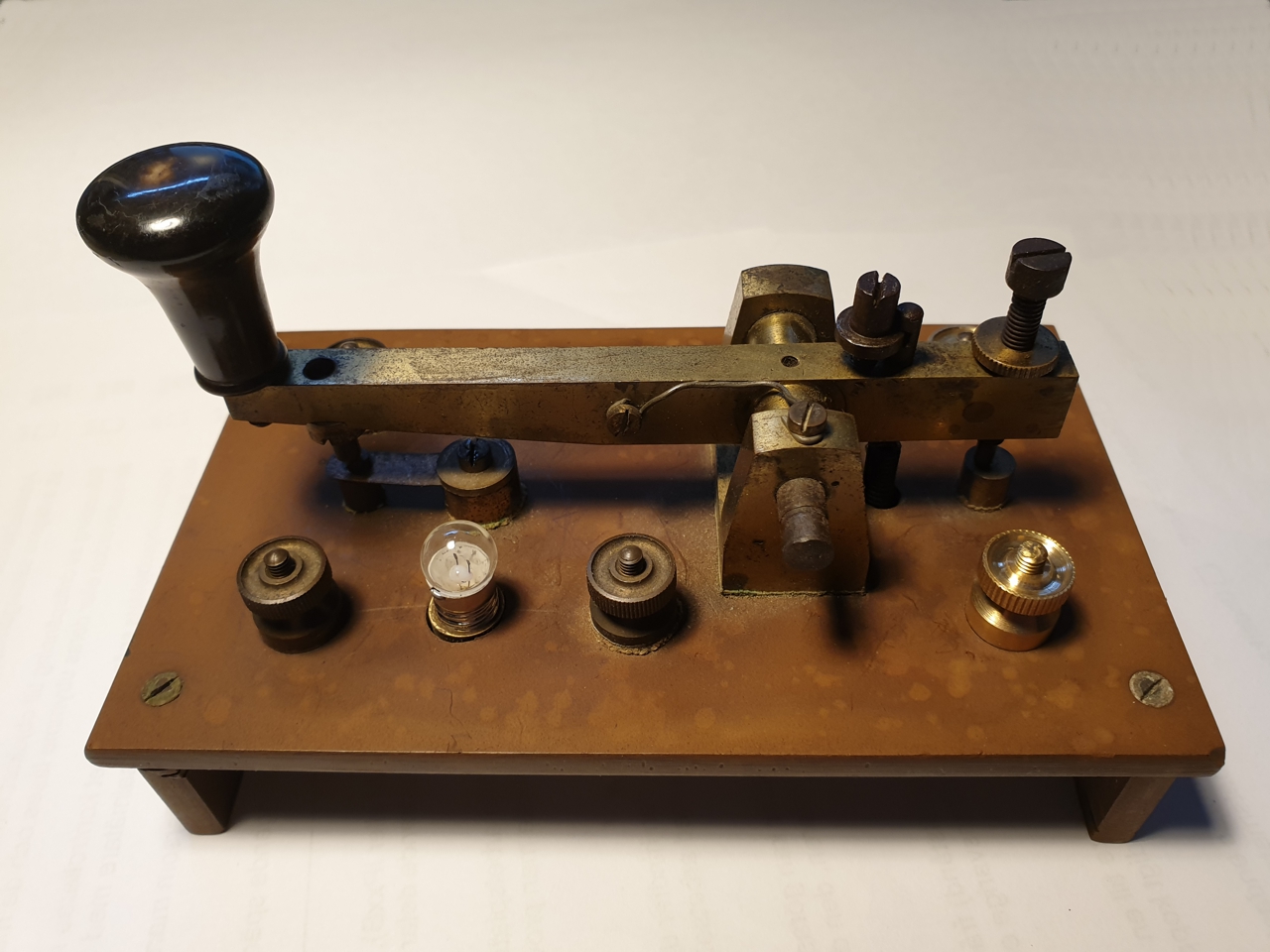 K165. British aircraft key from the WW1 era, with a lightbulb indicator for keying. Brass hardware, hard rubber base and feet, nice brownish patina (originally black base). Obtained from the estate sale of Dutch Radio Amateur Museum/Frank Driesens (sk). Two connection pole screws renewed.
K165. British aircraft key from the WW1 era, with a lightbulb indicator for keying. Brass hardware, hard rubber base and feet, nice brownish patina (originally black base). Obtained from the estate sale of Dutch Radio Amateur Museum/Frank Driesens (sk). Two connection pole screws renewed.
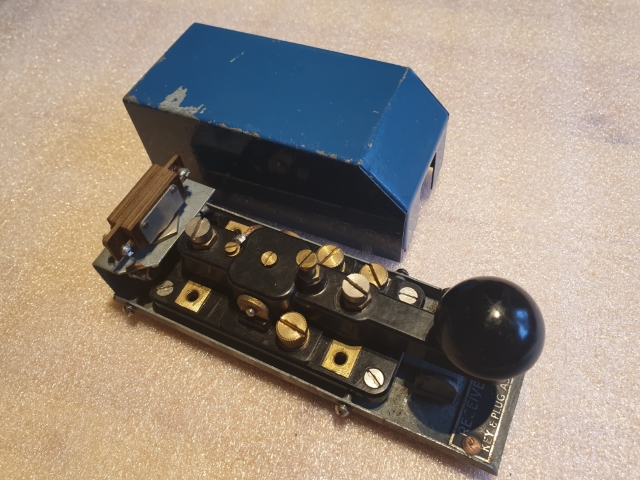 K183. British WW2 key, type "KEY W.T. 8 AMP No. 2 MK II" in a "Key and plug Assembly #8", version 2. More info here by VE3CBK and PA0PCR: "Key and plug assembiles", see pages 15-16. The W.T.8 key inside has a fifth fixing hole. Cover has been repainted blue. No aerial adapter plug, no cabling and no leg straps. From OZ3OG estate.
K183. British WW2 key, type "KEY W.T. 8 AMP No. 2 MK II" in a "Key and plug Assembly #8", version 2. More info here by VE3CBK and PA0PCR: "Key and plug assembiles", see pages 15-16. The W.T.8 key inside has a fifth fixing hole. Cover has been repainted blue. No aerial adapter plug, no cabling and no leg straps. From OZ3OG estate.
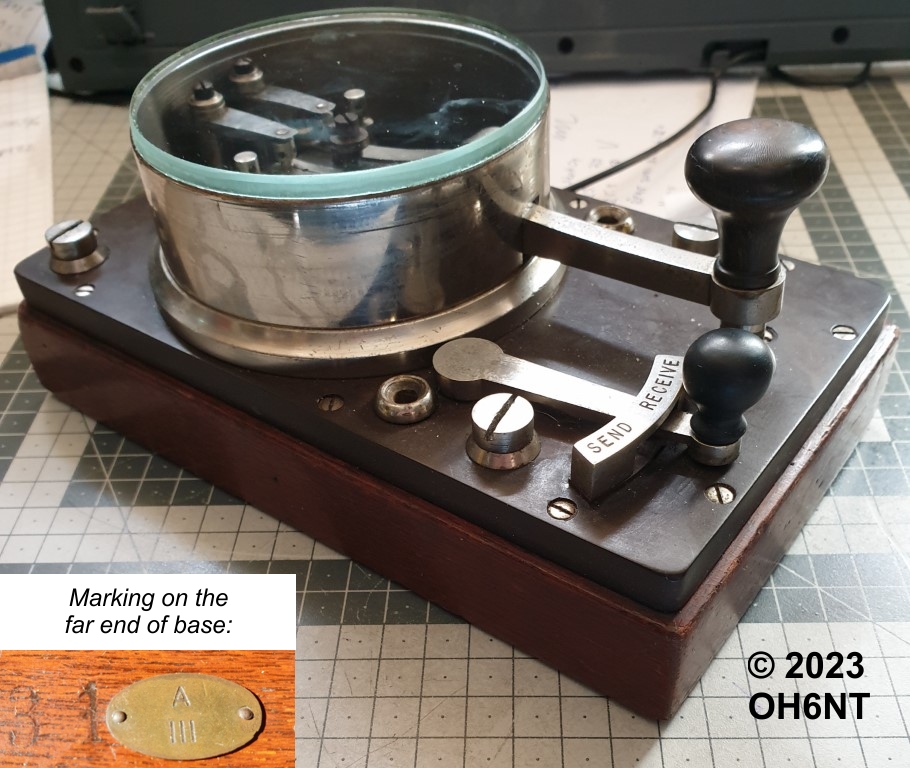 K194. This is a GPO Double Current Key that has the nickel plated glass round top. Since nickel plated, it was intended for the colonies. From about 1912. Branded "31" and "A III" at the far end. Probably made by Muirhead. Mechanism is mounted on an ebonite slab, the base is mahogany. More info at http://www.morsemad.com/dc.htm
K194. This is a GPO Double Current Key that has the nickel plated glass round top. Since nickel plated, it was intended for the colonies. From about 1912. Branded "31" and "A III" at the far end. Probably made by Muirhead. Mechanism is mounted on an ebonite slab, the base is mahogany. More info at http://www.morsemad.com/dc.htm
.jpg) K198. General Post Office (GPO) Raj key from India. No serial number or makers' markings. Year of production unknown, but according to Tom DL4PY it was probably made in 1920-30. 1947 when India became independent, the British operators brought them back home to GB. This one was procured from Denmark.
K198. General Post Office (GPO) Raj key from India. No serial number or makers' markings. Year of production unknown, but according to Tom DL4PY it was probably made in 1920-30. 1947 when India became independent, the British operators brought them back home to GB. This one was procured from Denmark.
.jpg) K199. British WW2 era W.T. 8 Amp. No. 2 Mk.II (ZA2869 LMK) key in a "Key and plug assembly #9" v.3.3 setting with rounded cover (rare). Made by LMK Manufacturing Co. Ltd i GB. Bakelite key base. The space contact (break) is at the rear and the mark (make) contact on the front. See also link above in K183 description, page 23. No aerial adapter plug, no cabling and no leg straps.
K199. British WW2 era W.T. 8 Amp. No. 2 Mk.II (ZA2869 LMK) key in a "Key and plug assembly #9" v.3.3 setting with rounded cover (rare). Made by LMK Manufacturing Co. Ltd i GB. Bakelite key base. The space contact (break) is at the rear and the mark (make) contact on the front. See also link above in K183 description, page 23. No aerial adapter plug, no cabling and no leg straps.
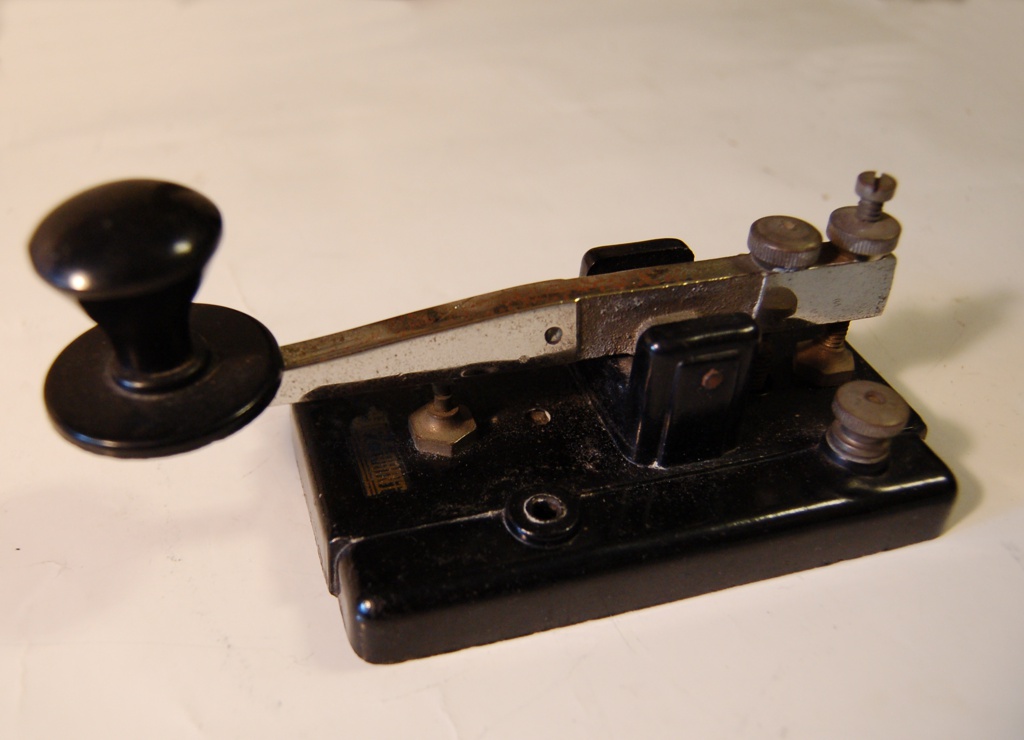 K146. Australian Blue Point "20XX" training key. Blue Point keys were popular with amateur radio operators as training keys in the 1950's. Nickel plated brass, base is Bakelite. Fairly rare. They were available in different configurations, with a buzzer (20XXA) or a light set (20XXB). More info: Morsum Magnificat, March 2004 issue.
K146. Australian Blue Point "20XX" training key. Blue Point keys were popular with amateur radio operators as training keys in the 1950's. Nickel plated brass, base is Bakelite. Fairly rare. They were available in different configurations, with a buzzer (20XXA) or a light set (20XXB). More info: Morsum Magnificat, March 2004 issue.
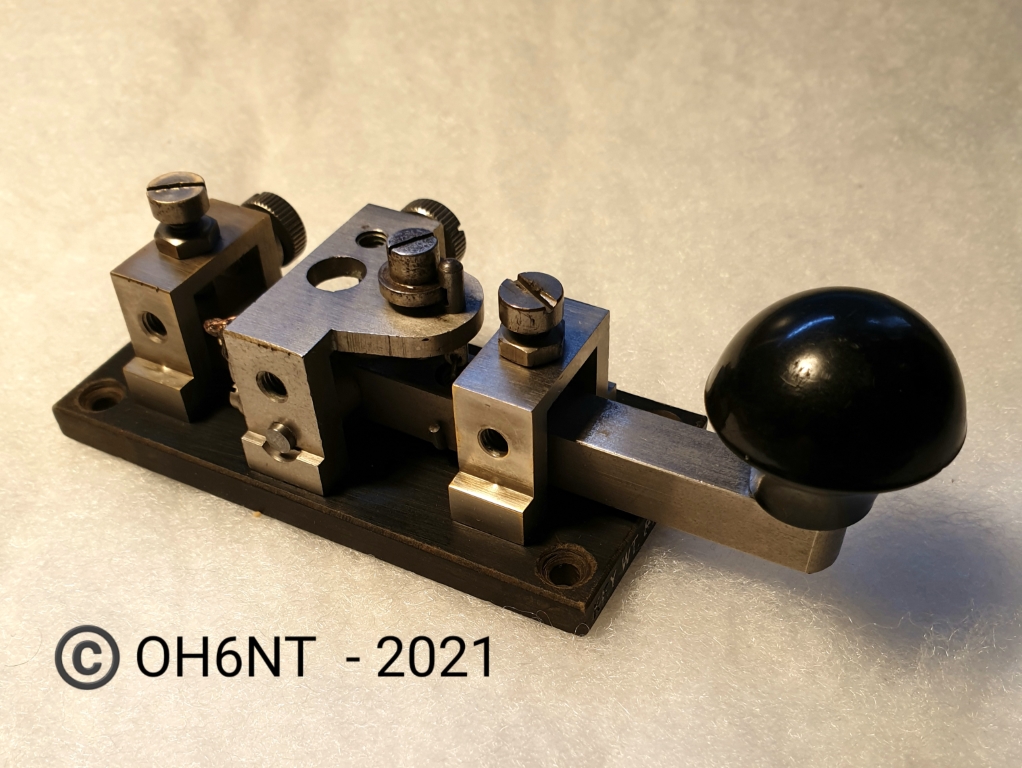 K175. This is an Australian version of the well known WT8 AMP N° 2 key. The type is engraved on the base end, and the other end is marked "P.M.G. 1940". Used by Australian Post Master General during the WW2 era. The key originates from SK Rudi, DL3CS who was a German Intelligence officer (Abwehr). You can read about him here: https://www.cdvandt.org/rudis-ecke.htm The key is a gift from Tom, DJ5RE. Thanks a lot OM!
K175. This is an Australian version of the well known WT8 AMP N° 2 key. The type is engraved on the base end, and the other end is marked "P.M.G. 1940". Used by Australian Post Master General during the WW2 era. The key originates from SK Rudi, DL3CS who was a German Intelligence officer (Abwehr). You can read about him here: https://www.cdvandt.org/rudis-ecke.htm The key is a gift from Tom, DJ5RE. Thanks a lot OM!
**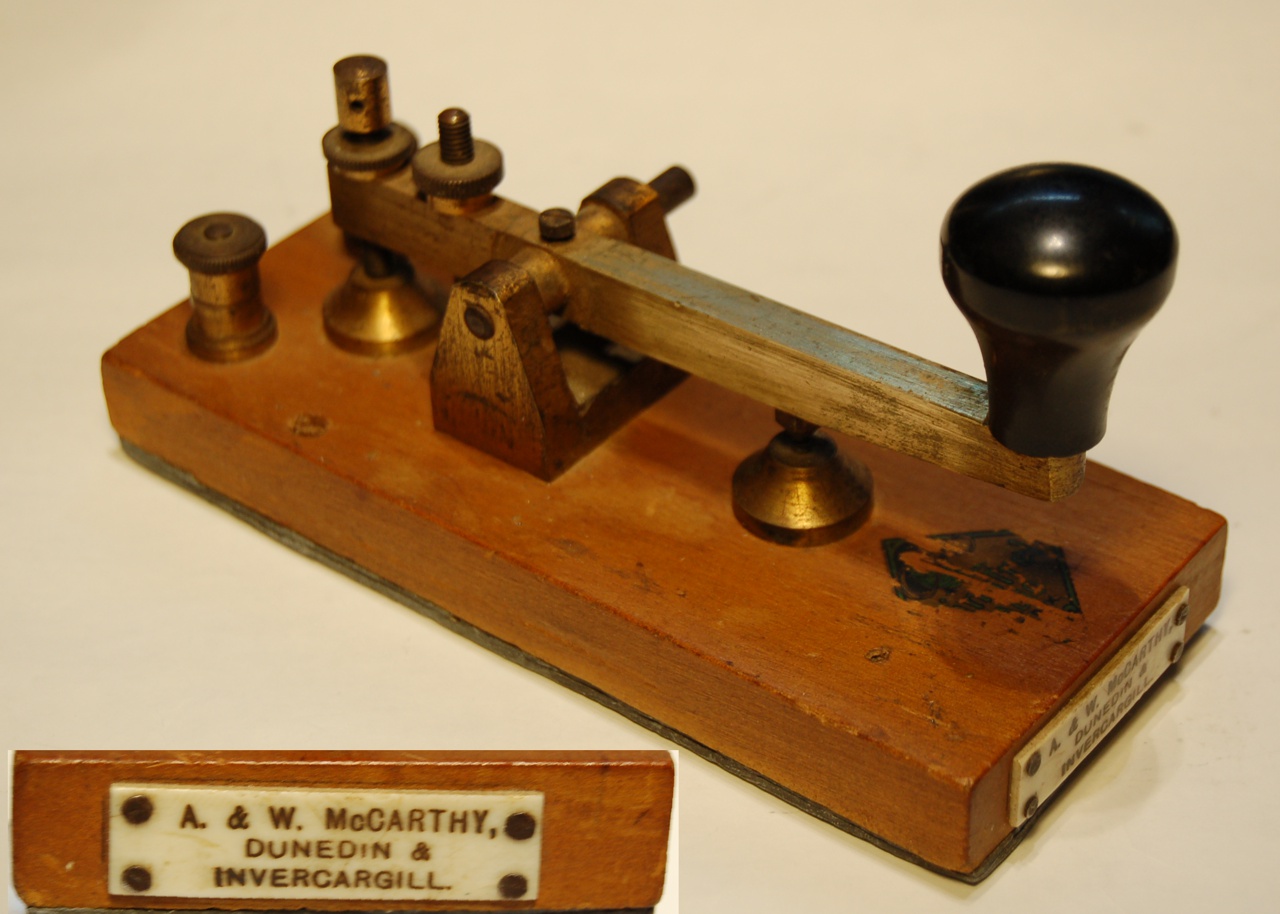 **Key from A. & W. McCarthy in Dunedin & Invercargill, New Zeeland. I don't own this key anymore. Picture left for reference.
**Key from A. & W. McCarthy in Dunedin & Invercargill, New Zeeland. I don't own this key anymore. Picture left for reference.
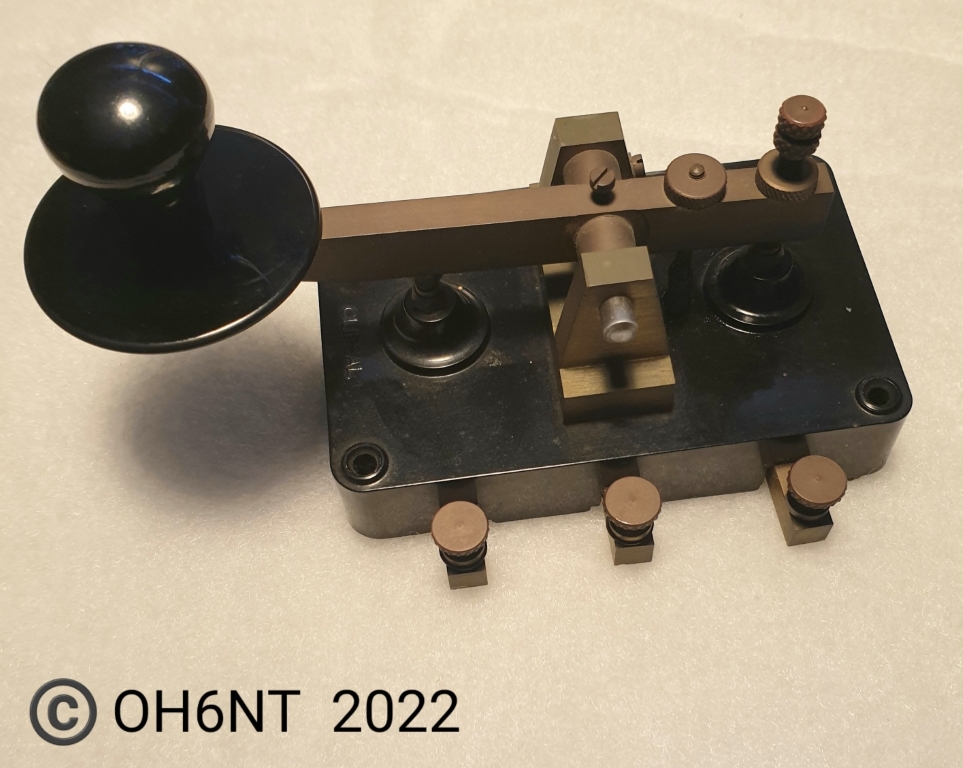 K177. Australian Clipsal model 610A key, produced 1939-194x by Gerard Industries Ltd. in Adelaide. Today owned by Schneider Group. The keys were used in idle or active circuits (three terminals). Often incorrectly referred to as PMG keys. Popular ham keys after WW2.
K177. Australian Clipsal model 610A key, produced 1939-194x by Gerard Industries Ltd. in Adelaide. Today owned by Schneider Group. The keys were used in idle or active circuits (three terminals). Often incorrectly referred to as PMG keys. Popular ham keys after WW2.
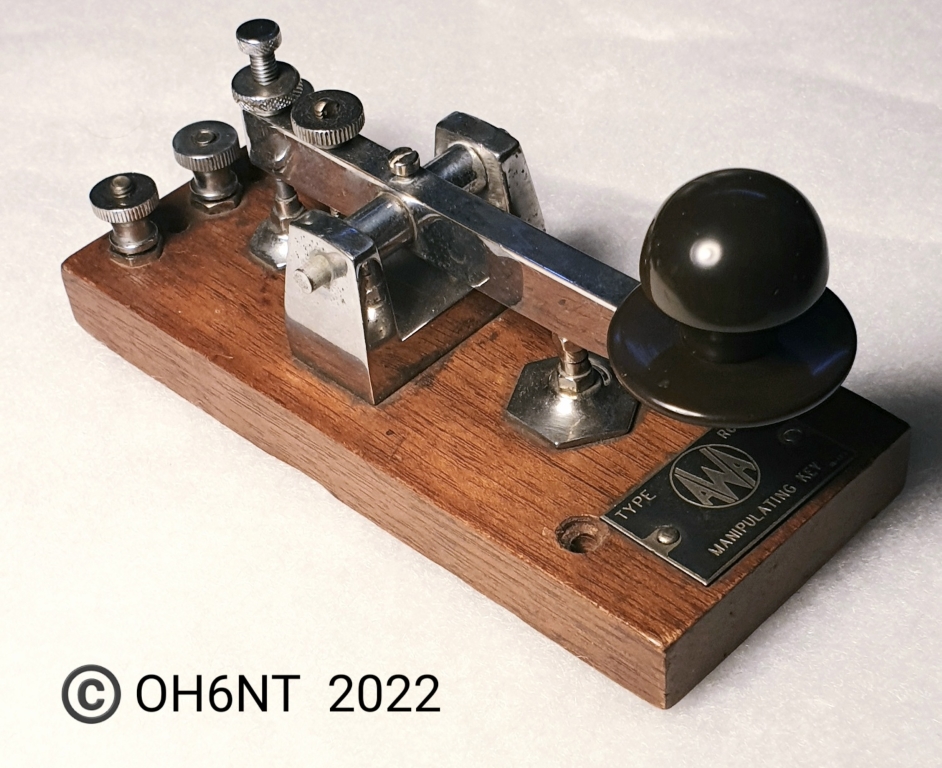 K178. AWA R688B Manipulating Key, (inspection stamp: P 54). Made by Amalgamated Wireless (Australasia) Ltd in Australia. Tropicalized key with waxed connections underneath. Three models exists, A, B and D. Used during WW2 with AWA Teleradio 3B sets in 1940-1942.
K178. AWA R688B Manipulating Key, (inspection stamp: P 54). Made by Amalgamated Wireless (Australasia) Ltd in Australia. Tropicalized key with waxed connections underneath. Three models exists, A, B and D. Used during WW2 with AWA Teleradio 3B sets in 1940-1942.
Not yet procured.
American keys
[](keys/IMG%5F0326 %28Small%29.JPG)K2. Speed-X american telegraph key made by Les Logan 1937-1947, mounted on a J-38 Signal Corps base. I also have another J-38 (maker unknown).
K29. Hughes J-45 leg clamp tank/pilot key used by Swedish Army with the radio set Ra190 (PRC-104). Type KY872/PRC-104 (modified KY-116U), serial no. A 1132.
[ ](keys/Picture 36.jpg)K30. A brand new Hughes KY872/PRC-104 serial no. A 4503 used by Swedish army. See K29 for details.
](keys/Picture 36.jpg)K30. A brand new Hughes KY872/PRC-104 serial no. A 4503 used by Swedish army. See K29 for details.
K50. American Speed-X key no. 320 by WM.M NYE CO. INC. Bellevue, WA, USA. No. H15.681 in the cast at bottom. With Navy knob. Mounted in heavy oak base. Donors OH6ELN & OH6HXU.
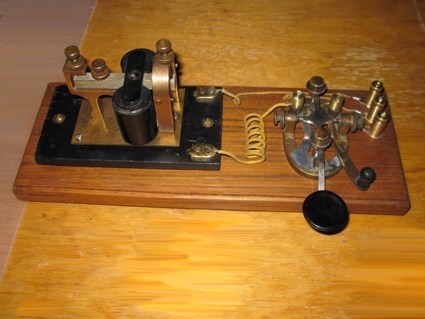 K63. A legless Western Union 2A key, made by Thompson-Levering in Phila. PA USA about 1910, here together with a working Western Electric telegraph sounder type 3C (140 ohm for main line, 43 mA @ 6 Volts). I had to rewind the coils on the sounder, and then mounted the parts on a teak board as a KOB. Testing video here!
K63. A legless Western Union 2A key, made by Thompson-Levering in Phila. PA USA about 1910, here together with a working Western Electric telegraph sounder type 3C (140 ohm for main line, 43 mA @ 6 Volts). I had to rewind the coils on the sounder, and then mounted the parts on a teak board as a KOB. Testing video here!
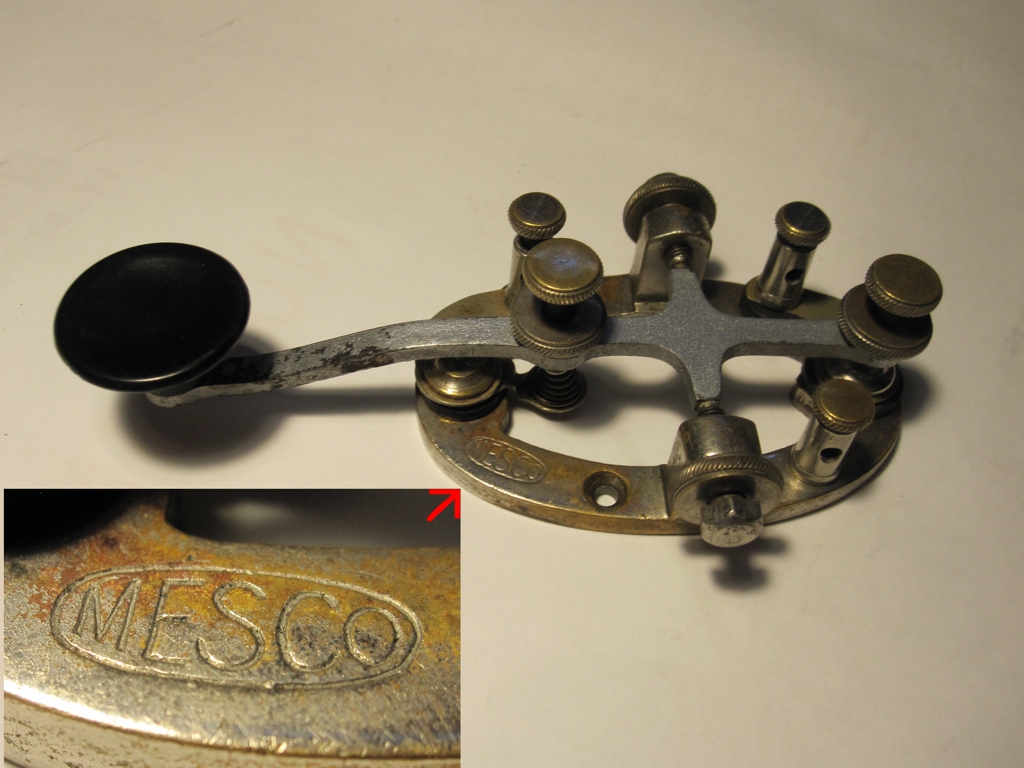 K91. I got this nice MESCO No. 244 Legless Open Circuit key (Manhattan Electrical Suppies Co., 1910). Typical American Speed-X-style telegraph key. Nickel plated brass frame, steel arm, silver contacts. Double circuits. Click on picture for a bigger view. Ref: The Vail Correspondent #19, p.7.
K91. I got this nice MESCO No. 244 Legless Open Circuit key (Manhattan Electrical Suppies Co., 1910). Typical American Speed-X-style telegraph key. Nickel plated brass frame, steel arm, silver contacts. Double circuits. Click on picture for a bigger view. Ref: The Vail Correspondent #19, p.7.
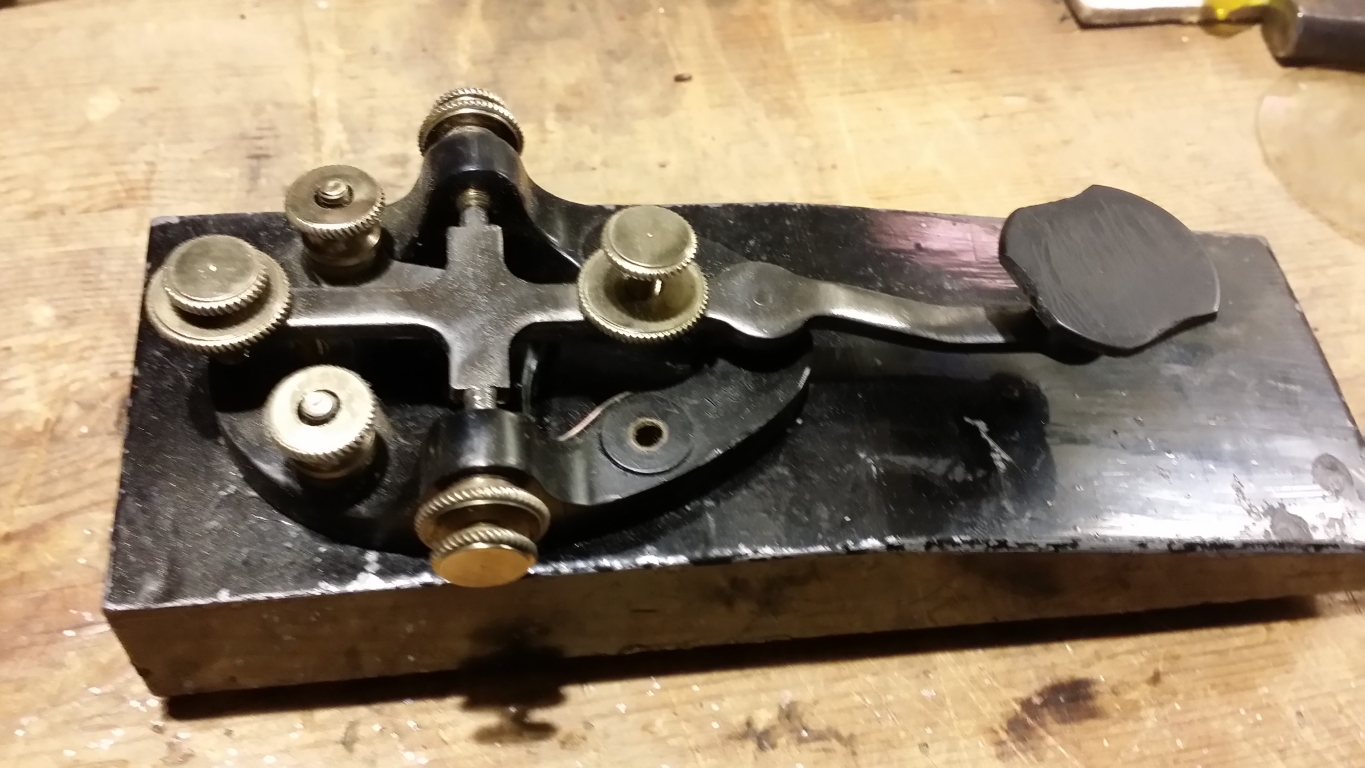 K103. This is a J-37 from a Taffet training set, bulit in the US during WW2 for the Signal Corps by Taffet Radio & Television Co. Previous owner has attached it to a heavy lead mould base! The knob is molested, and need renewing, otherwise it is operational.
K103. This is a J-37 from a Taffet training set, bulit in the US during WW2 for the Signal Corps by Taffet Radio & Television Co. Previous owner has attached it to a heavy lead mould base! The knob is molested, and need renewing, otherwise it is operational.
K104. A contemporary Bencher RJ-1. Nothing special about it, it's pretty robust, but the American threads on the screws makes the settings very inaccurate. Condition as new, a hex Allen wrench is retained below the base.
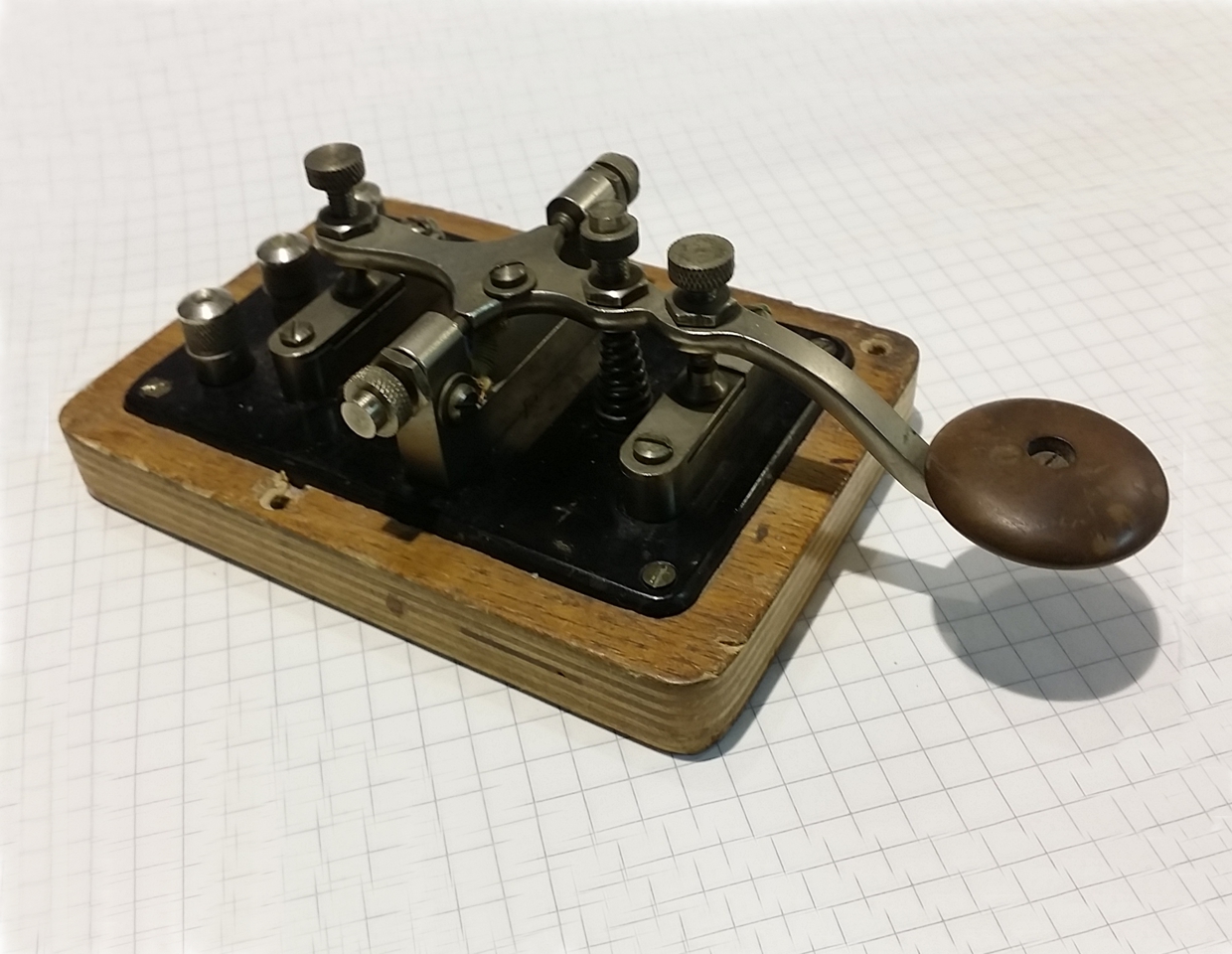 K107. Telegraph key from SK OH6TS Rolf, donated by Thomas / OH6LEI. I don't know the origin of this key, it might be American, but it is made of much heavier and thicker materials than the typical J-37:s. Any info is welcome!
K107. Telegraph key from SK OH6TS Rolf, donated by Thomas / OH6LEI. I don't know the origin of this key, it might be American, but it is made of much heavier and thicker materials than the typical J-37:s. Any info is welcome!
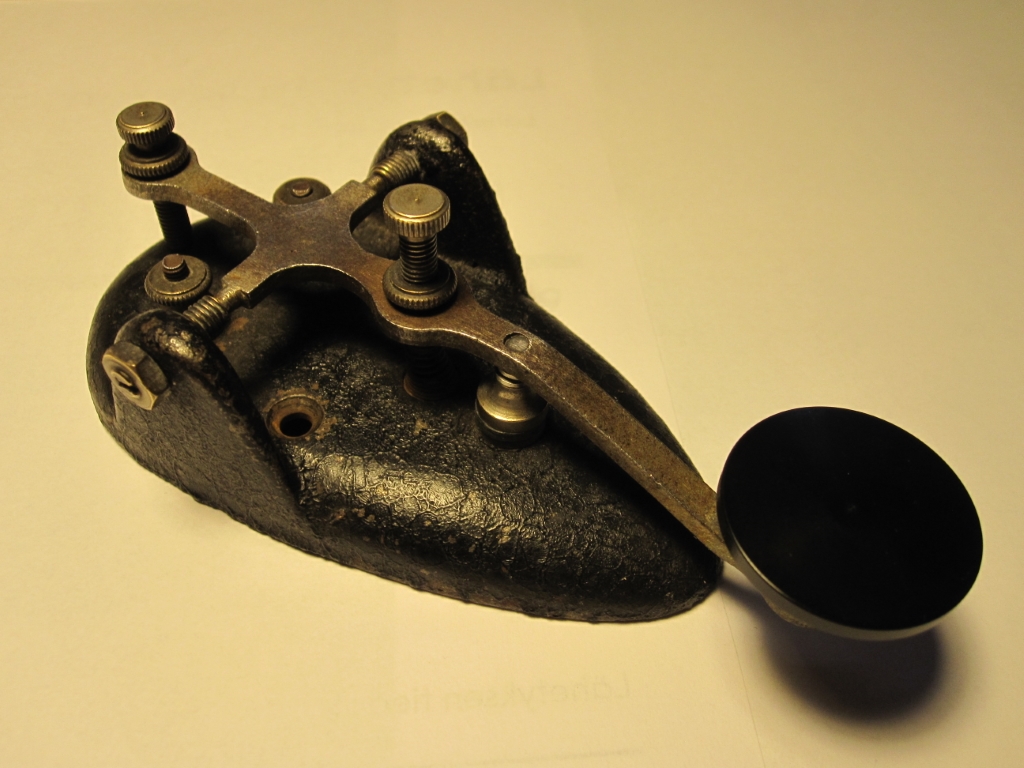 K112. McElroy knock-off(?). Unknown maker. The base is coarse cast iron (magnetic), with wrinkle paint finish. Slightly smaller than a McElroy/Tac, 8 mm shorter and 6 mm narrower base. No shorting lever. Some light rust on the arm. Knob is not original, but a Vibroplex replacement. Works good.
K112. McElroy knock-off(?). Unknown maker. The base is coarse cast iron (magnetic), with wrinkle paint finish. Slightly smaller than a McElroy/Tac, 8 mm shorter and 6 mm narrower base. No shorting lever. Some light rust on the arm. Knob is not original, but a Vibroplex replacement. Works good.
.jpeg) K114. McElroy Stream model 300 Deluxe key, chrome finish. No bulge at the contact point of the arm. Magnetic cast iron base. This one has shorting lever. Nice condition, light rust on the arm. It sold for 2.85 US$ when it was new.
K114. McElroy Stream model 300 Deluxe key, chrome finish. No bulge at the contact point of the arm. Magnetic cast iron base. This one has shorting lever. Nice condition, light rust on the arm. It sold for 2.85 US$ when it was new.
[.jpeg) ](keys/TAC-black %28K115%29.jpeg)K115. A Telegraph Apparatus Co. (TAC) key. Black wrinkle finish, good condition. Spring is a replacement. Differs from the McElroy's in that there is a bulge on the arm where the upper contact is located. The TAC Co. was co-owned by Ted McElroy.
](keys/TAC-black %28K115%29.jpeg)K115. A Telegraph Apparatus Co. (TAC) key. Black wrinkle finish, good condition. Spring is a replacement. Differs from the McElroy's in that there is a bulge on the arm where the upper contact is located. The TAC Co. was co-owned by Ted McElroy.
[.jpeg) ](keys/TAC-chrome %28K116%29.jpeg)K116. Another TAC (Telegraph Apparatus Co.) key. This one has a nice chrome finish. Working just fine. Differs from the McElroy's in that there is a bulge on the arm where the upper contact is located.
](keys/TAC-chrome %28K116%29.jpeg)K116. Another TAC (Telegraph Apparatus Co.) key. This one has a nice chrome finish. Working just fine. Differs from the McElroy's in that there is a bulge on the arm where the upper contact is located.
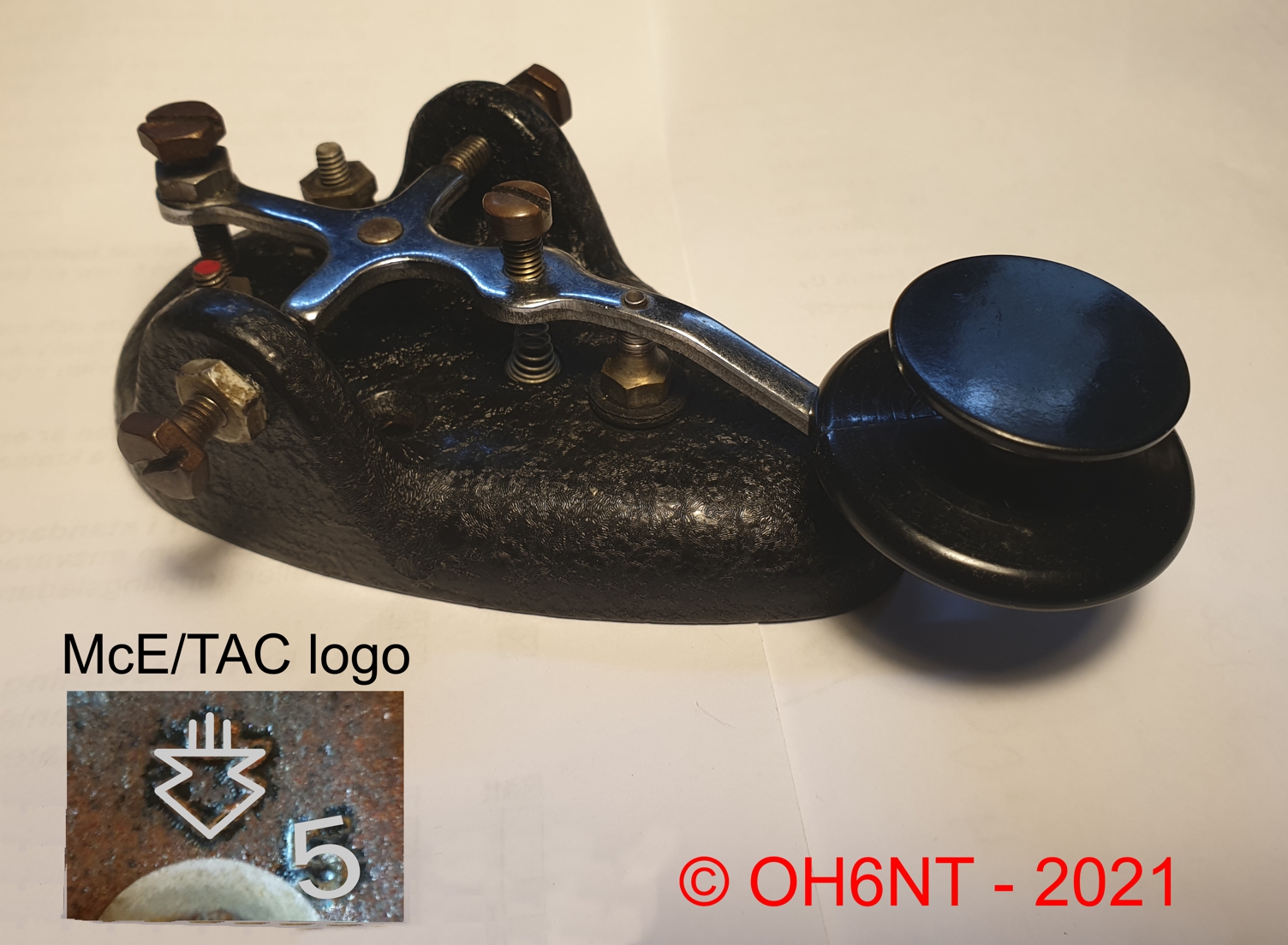 K170. This is a McElroy model 100 Amateur key without shorting lever. It has a TAC-logo in the mold as does the other TAC-keys (left) but is built by Ted McElroy, because there is no bulge at the contact point of the arm.
K170. This is a McElroy model 100 Amateur key without shorting lever. It has a TAC-logo in the mold as does the other TAC-keys (left) but is built by Ted McElroy, because there is no bulge at the contact point of the arm.
K120. A CMI-26003A Flameproof US Navy key made by Molded Insulator Co., 335 E. Price St., Philadelphia, Pa. The Navy Flameproof 26003A key is NOT a copy of a German straight key, as many seems to think. It is an improved version of the model 26000, designed by the US Navy in 1919. Here links to the proof: drawing 1 and drawing 2 from G0RDO:s site.
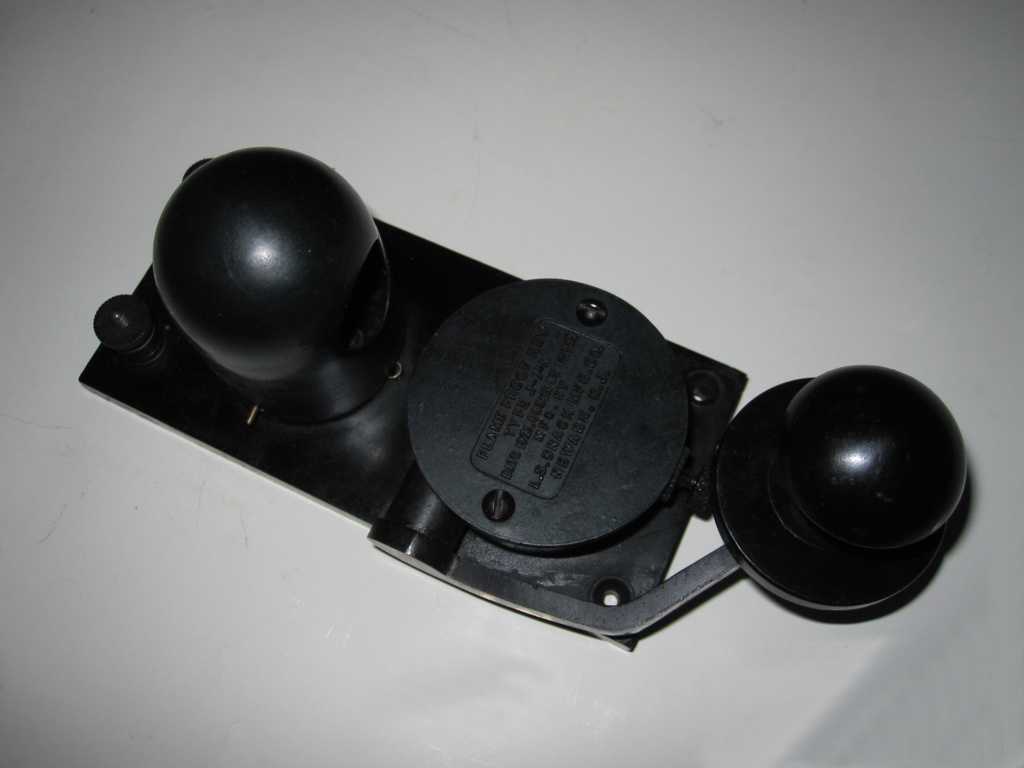 K126. A Flame Proof Key, Type J-7-A, Date 1921 Order No. 141882, L.S. Brach Mfg Co, Newark, NJ. The bakelite base has leads and connections glued in place to protect them. It is basically same key as the J-5-A flameproof below on a bakelite base, but with a "winker" lamp for optical indication of the transmission. Used in airplanes, where audible monitoring was impossible.
K126. A Flame Proof Key, Type J-7-A, Date 1921 Order No. 141882, L.S. Brach Mfg Co, Newark, NJ. The bakelite base has leads and connections glued in place to protect them. It is basically same key as the J-5-A flameproof below on a bakelite base, but with a "winker" lamp for optical indication of the transmission. Used in airplanes, where audible monitoring was impossible.
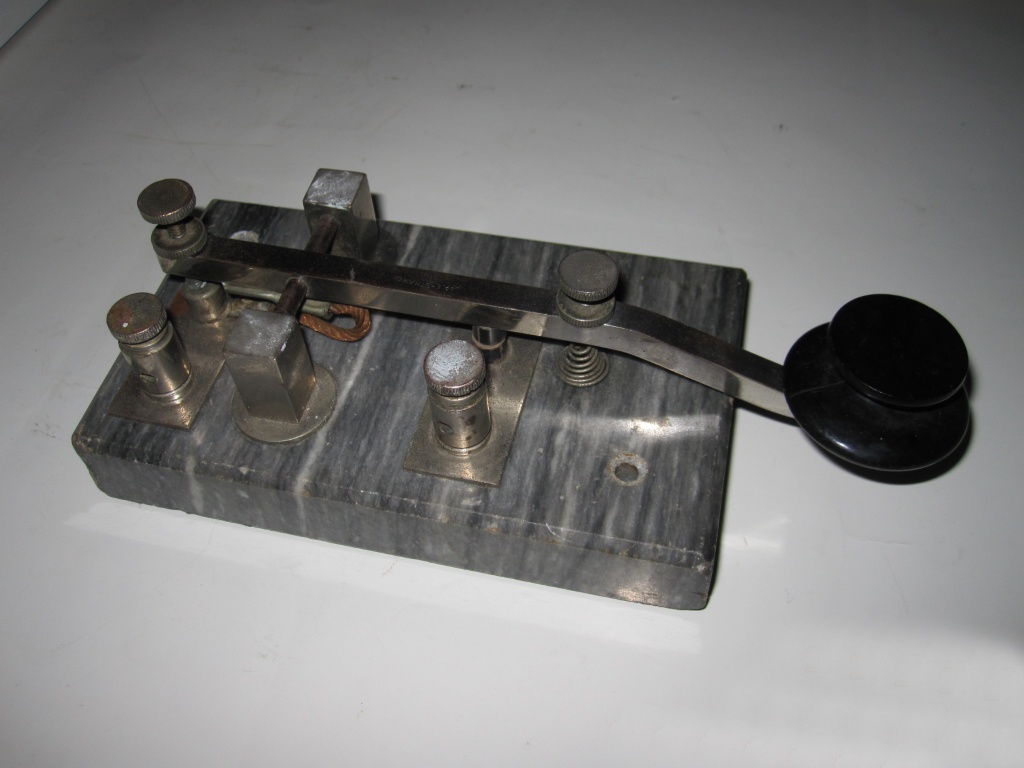 K131. This is a Clapp-Eastham spark key on a heavy gray Italian marble base, about c. 1916. Considered to be a "Cadillac Class" key, it was designed for luxury liners and the yacht trade. Some wear at one corner of the marble, and some pitting on the nickel plated parts. Nice working order considering the age. Also known as the Boston Key due to its similarity to keys produced at the Boston Navy Yard in 1915. Weight 1172 grams.
K131. This is a Clapp-Eastham spark key on a heavy gray Italian marble base, about c. 1916. Considered to be a "Cadillac Class" key, it was designed for luxury liners and the yacht trade. Some wear at one corner of the marble, and some pitting on the nickel plated parts. Nice working order considering the age. Also known as the Boston Key due to its similarity to keys produced at the Boston Navy Yard in 1915. Weight 1172 grams.
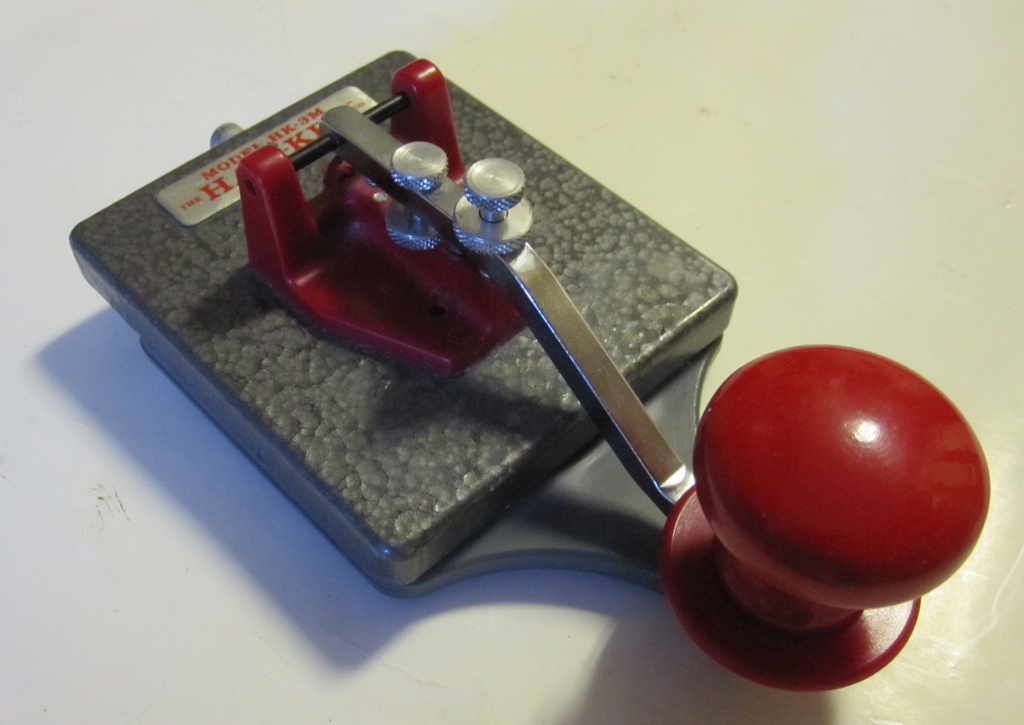 K136. Here we have a straight key made by Ham-Key Co. in St. Louis, MO 1975...1985. This is the newer HK-3M with a plastic mold beneath the heavy metal base. Good condition. Some previous owner has exchanged the original plastic knob for a much bigger wooden one. Ham-Keys are mainly knock-offs of Brown Bros' keys.
K136. Here we have a straight key made by Ham-Key Co. in St. Louis, MO 1975...1985. This is the newer HK-3M with a plastic mold beneath the heavy metal base. Good condition. Some previous owner has exchanged the original plastic knob for a much bigger wooden one. Ham-Keys are mainly knock-offs of Brown Bros' keys.
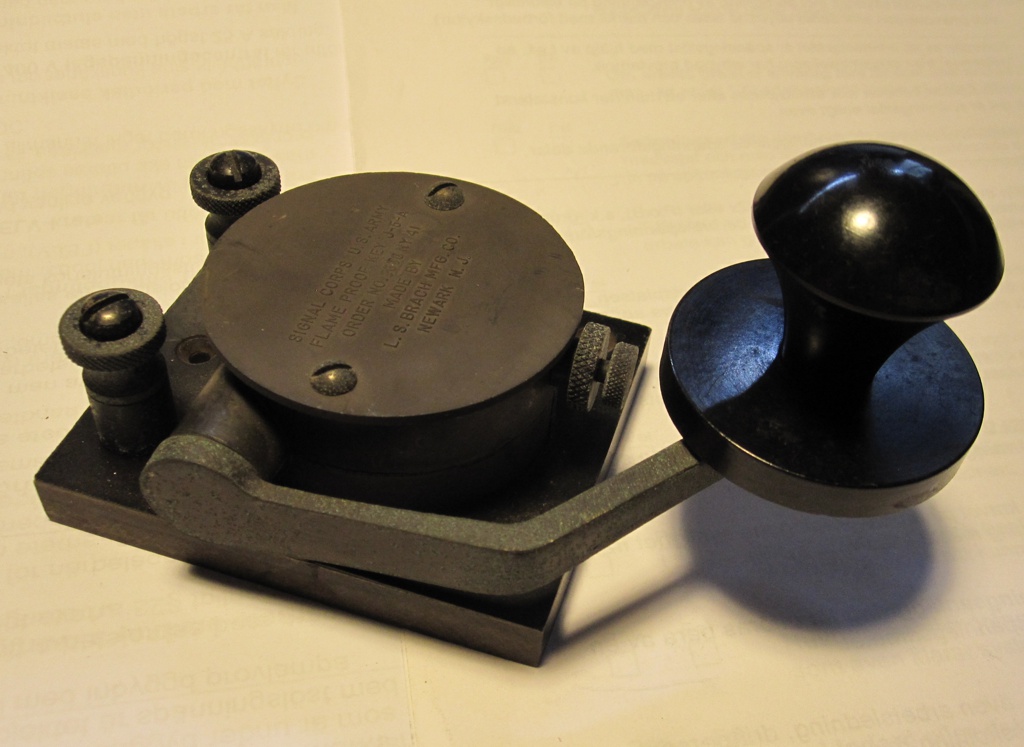 K137. Signal Corps U.S. Army flameproof J-5-A key made by J.S. Brach Mfg. Co. in Newark, NJ. Order No. 2670 NY 41 indicates year of manufacture as 1941. Good condition.
K137. Signal Corps U.S. Army flameproof J-5-A key made by J.S. Brach Mfg. Co. in Newark, NJ. Order No. 2670 NY 41 indicates year of manufacture as 1941. Good condition.
.jpg) K158. KY-802/URC-87(V). Straight key from the Finnish Army HF field radio LV-407 (Southcom SC-130D), which also used by the US Navy as AN/URC-87. Very much like a Signal Electric Heavy Duty key inside. Brand new, from Finnish Army surplus store.
K158. KY-802/URC-87(V). Straight key from the Finnish Army HF field radio LV-407 (Southcom SC-130D), which also used by the US Navy as AN/URC-87. Very much like a Signal Electric Heavy Duty key inside. Brand new, from Finnish Army surplus store.
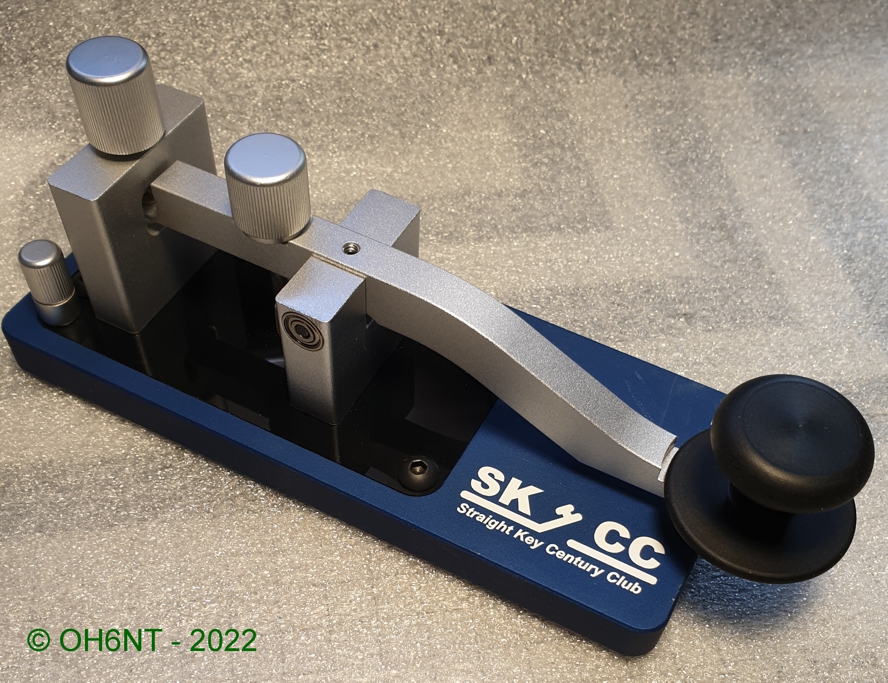 K187. Straight Key Century Club (SKCC) member key from 2015, produced by LnR Precision Inc, Randeman, NC. Made in a limited number. Ball Bearings for smooth action, anodized base and blocks. Feels like a heavy pump key, but in a smaller desk model. Very good key, a collectors item. Mark, KM4AHP made it possible to add this to my collection.
K187. Straight Key Century Club (SKCC) member key from 2015, produced by LnR Precision Inc, Randeman, NC. Made in a limited number. Ball Bearings for smooth action, anodized base and blocks. Feels like a heavy pump key, but in a smaller desk model. Very good key, a collectors item. Mark, KM4AHP made it possible to add this to my collection.
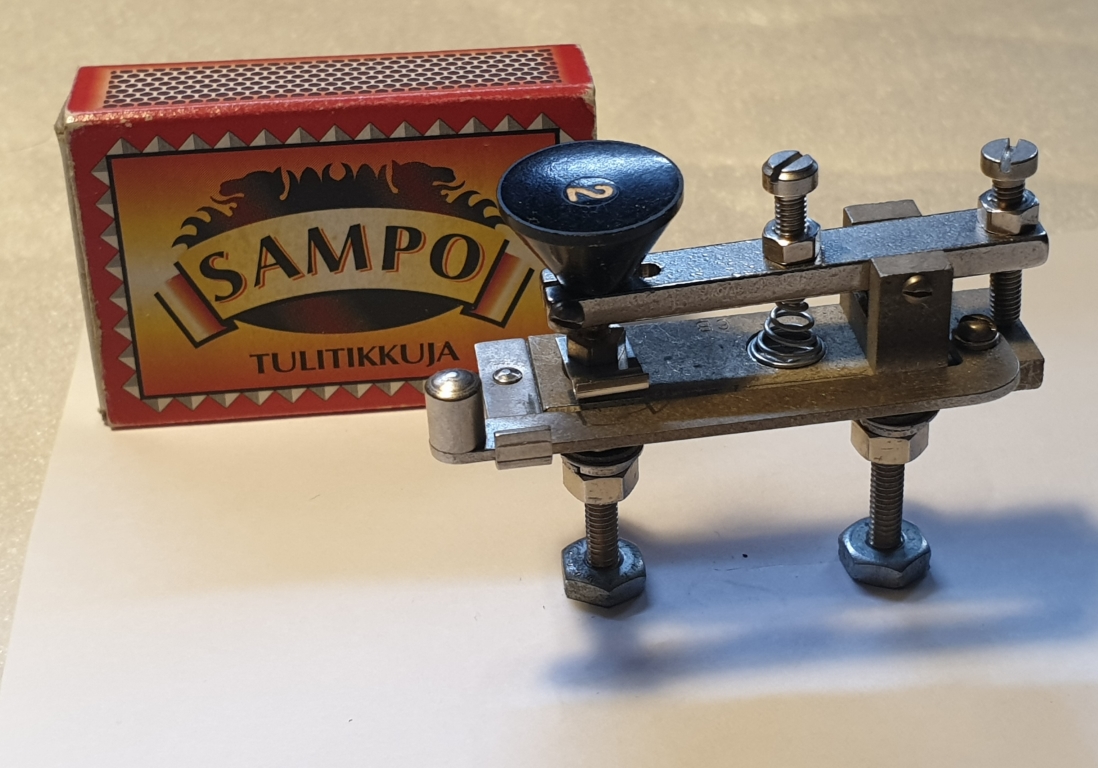 K188. Testing key (#2 of 4) from a Western Electric 35-F current flow test set used to adjust flat spring, wire spring, polarized, 206 and other types of telephone relays. Adjustable for gap and spring pressure. Also have a shorting bar. About 1960. Very tiny, nice for SOTA, WWFF etc. Tnx Pete N9SFX who made it possible to include this gem in my collection.
K188. Testing key (#2 of 4) from a Western Electric 35-F current flow test set used to adjust flat spring, wire spring, polarized, 206 and other types of telephone relays. Adjustable for gap and spring pressure. Also have a shorting bar. About 1960. Very tiny, nice for SOTA, WWFF etc. Tnx Pete N9SFX who made it possible to include this gem in my collection.
[](keys/CJB26003A %28Large%29.JPG)K196. A CJB-26003A Flameproof US Navy key made by J.H. Bunnell. These keys are NOT copies of a German key, see proof in key K120 description!
Several manufacturers made these:
CMI: Molded Insulator Co.
CJB: J.H. Bunnell & Co.
CTE: Telephonics Corp.
CMK: McElroy
CDM: D.P. Mossman
Bendix Radio Co.: type stamp on top.
German and East German (DDR) keys
[](keys/IMG%5F0324 %28Small%29.JPG)K5. German Josef Junker MT Honnef/Rh D.B.G.M. Post-WWII civil commercial version.
[](keys/IMG%5F0337 %28Small%29.JPG)K14. German Ta.P. Baumuster T1, ("Taste Paula"). 1934 pre-WWII key complete with rubber lined base. Also used in Finnish Army WWII station VREHB "Bertta".
[](keys/IMG%5F0342 %28Small%29.JPG)K17. German Lorentz Baumuster T.2 Ln 26906, Hersteller D. The makers' sign makes this key rare! Mostly used by German WWII air force (Luftwaffe).
K27. Siemens & Halske key (see K9 and K64) for training of operators for commercial shipping at Rauman Merenkulkuopisto (RMO). Has "RMO 160-11" (inventory mark) etched on the arm.
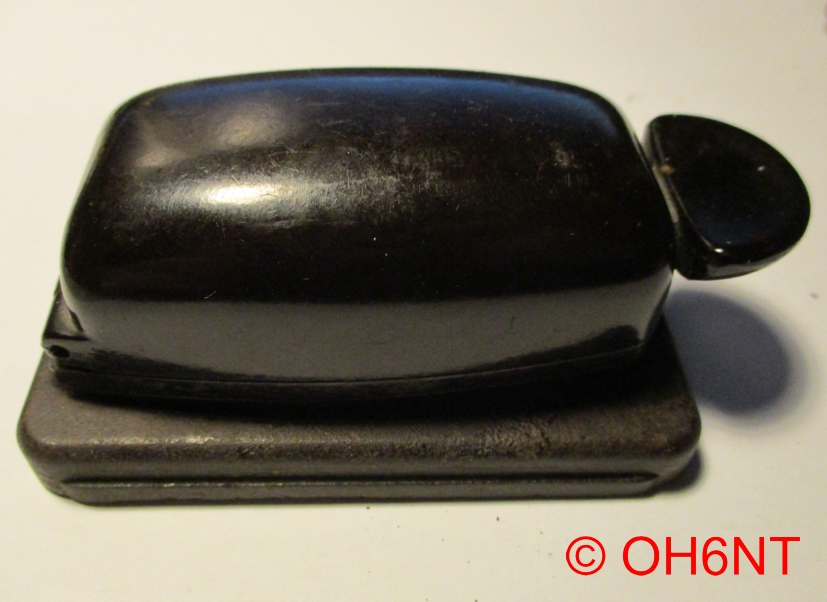 K38. Rare German Wehrmacht key TKP Maus (Taste Klein Presstoff), a small bakelite key from 1944. Used for various agent and mobile radios, f. ex. the Tornister Funkgrät D.2 (Finnish assignment: VRKS) and spy radio set SE98/3. It has a half-round button. Bakelite mix "2M T1". Known makers: Konski & Krüger (code gvx, logo "k|k") and Elektronische Fabrik Weber & Co. Kg. (code epz"). Here on its original rare "snap-on" base.
K38. Rare German Wehrmacht key TKP Maus (Taste Klein Presstoff), a small bakelite key from 1944. Used for various agent and mobile radios, f. ex. the Tornister Funkgrät D.2 (Finnish assignment: VRKS) and spy radio set SE98/3. It has a half-round button. Bakelite mix "2M T1". Known makers: Konski & Krüger (code gvx, logo "k|k") and Elektronische Fabrik Weber & Co. Kg. (code epz"). Here on its original rare "snap-on" base.
[.jpg) ](keys/No36%5FBAL969 %28Small%29.jpg)K39. German Luftwaffe training key TKP "Maus" ("mouse") made of dark brown bakelite, mounted on a rectangular steel sheet base. This key has a round button. Markings: 1941 BAL 969, "T1" and makers mark "dbf/" (Hoppmann & Mulsow Elektronische Spezialfabrik, Hamburg).
](keys/No36%5FBAL969 %28Small%29.jpg)K39. German Luftwaffe training key TKP "Maus" ("mouse") made of dark brown bakelite, mounted on a rectangular steel sheet base. This key has a round button. Markings: 1941 BAL 969, "T1" and makers mark "dbf/" (Hoppmann & Mulsow Elektronische Spezialfabrik, Hamburg).
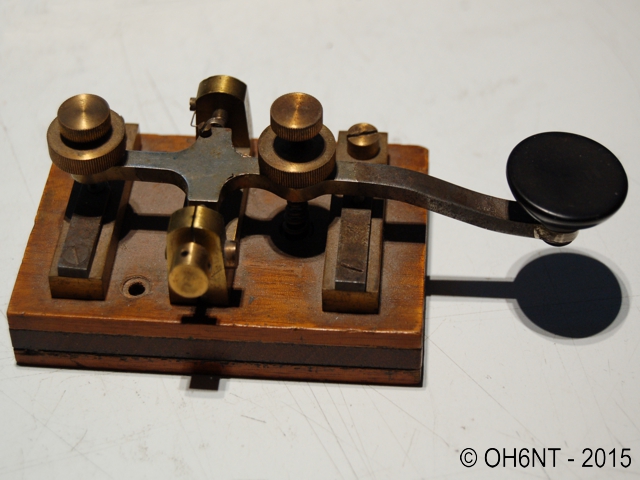 K58. German "Klopfertaste", M.99 for German Reichs-Telegraphenverwaltung and railways, built by Hartmann & Braun, Frankfurt a.M. Nice little brass key, w. silver contacts, oak base. Still used in WW1. Donated by OM Kari OH5YW.
K58. German "Klopfertaste", M.99 for German Reichs-Telegraphenverwaltung and railways, built by Hartmann & Braun, Frankfurt a.M. Nice little brass key, w. silver contacts, oak base. Still used in WW1. Donated by OM Kari OH5YW.
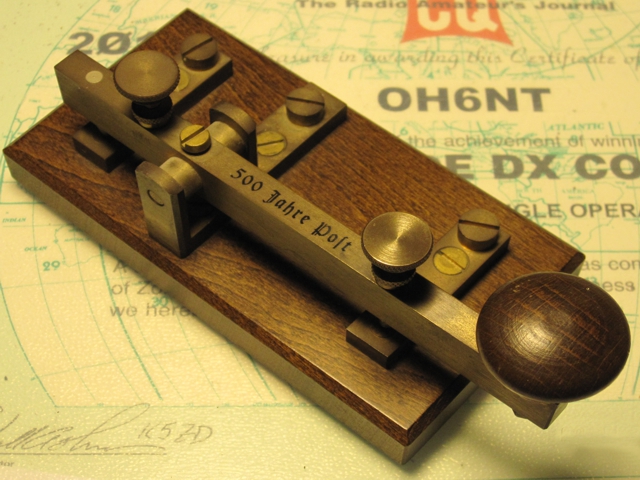 K59. German Post Office (Reichs-Telegraphenverwaltung) 500 year Jubilee reproduction key, produced in limited number 1990, sold at the Post Offices. In top condition, working, never used. No box or manifest which were supplied with the new keys.
K59. German Post Office (Reichs-Telegraphenverwaltung) 500 year Jubilee reproduction key, produced in limited number 1990, sold at the Post Offices. In top condition, working, never used. No box or manifest which were supplied with the new keys.
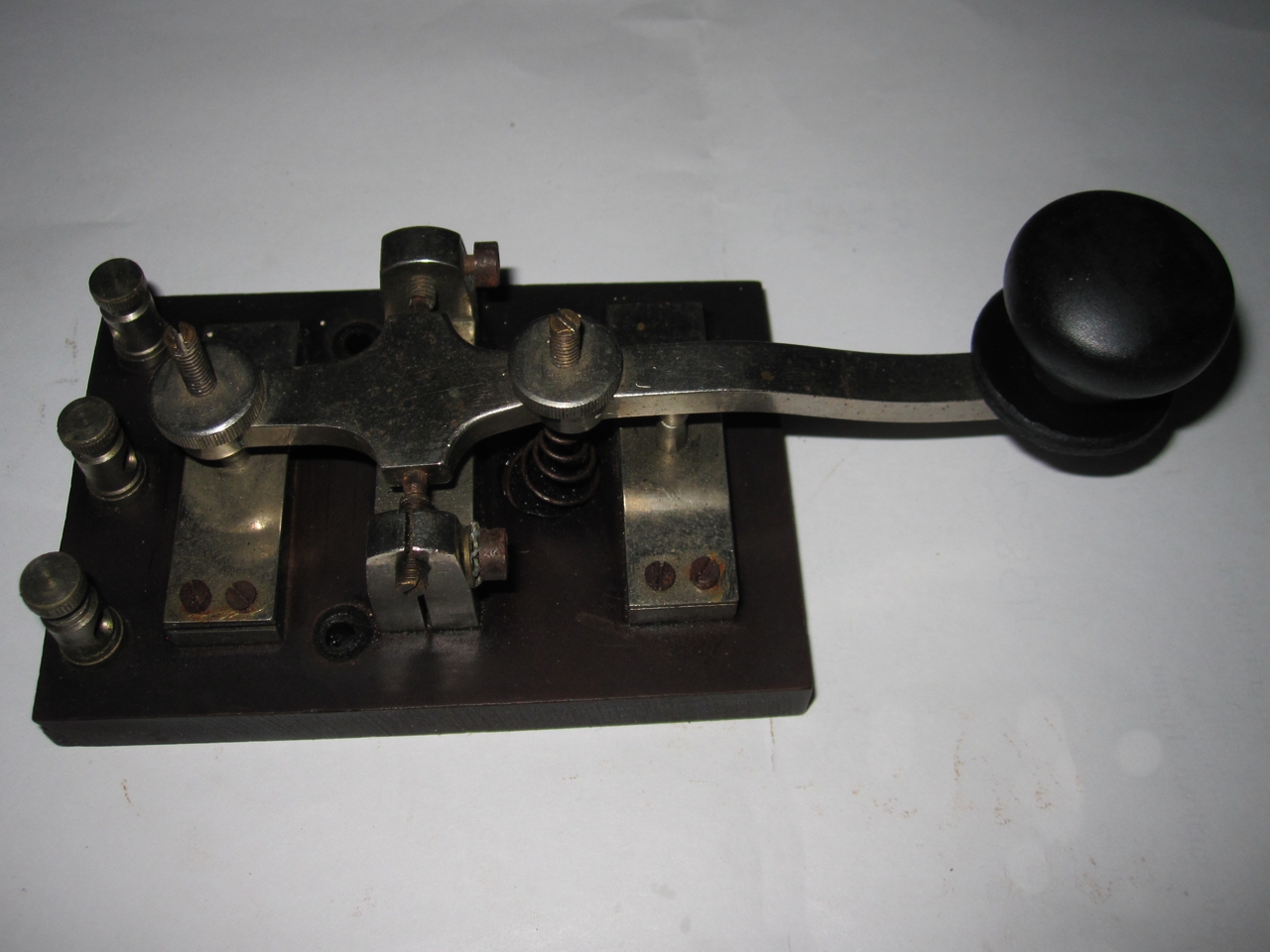 K60. Probably a German key. Nickel plated brass mounted on ebonite base. Size 68 x 107 mm. Holes for mounting. Maker unknovn, any info would be appreciated!
K60. Probably a German key. Nickel plated brass mounted on ebonite base. Size 68 x 107 mm. Holes for mounting. Maker unknovn, any info would be appreciated!
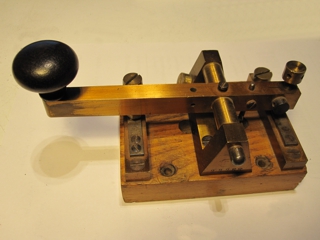 K64. Siemens & Halske key, belongs to the land line Morse register R1 below. Serial no. 22288. Kyrillic logo С Г (S&H) on the bearing block. Made at S&H:s factory in St. Petersburg in the 1880's.
K64. Siemens & Halske key, belongs to the land line Morse register R1 below. Serial no. 22288. Kyrillic logo С Г (S&H) on the bearing block. Made at S&H:s factory in St. Petersburg in the 1880's.
[](keys/K73%5FF%5FSchuchardt%5F M.JPG)K73. This is a very rare German "Reichstelegrafentaste" key for high current spark transmitters. Please note its huge copper silver filled contacts! Brass on ebonite base.The maker is probably Hartmann & Braun. No markings. It is well used, almost all nickel plating is gone. Click on image to zoom.
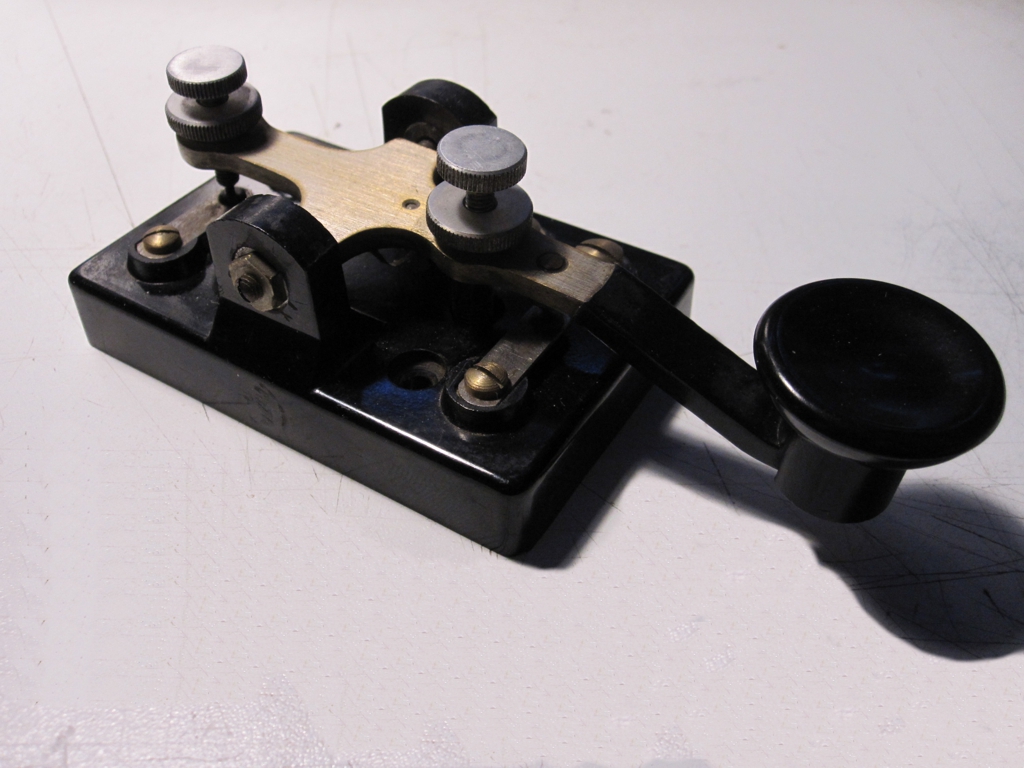 K95. German L.T.2 "Lehrtaste 2" from around 1938-1945. These keys were standard issue for training purposes by Luftwaffe. Stainless steel on bakelite base, originally mounted on a 2 mm thick steel plate. Maker unknown.
K95. German L.T.2 "Lehrtaste 2" from around 1938-1945. These keys were standard issue for training purposes by Luftwaffe. Stainless steel on bakelite base, originally mounted on a 2 mm thick steel plate. Maker unknown.
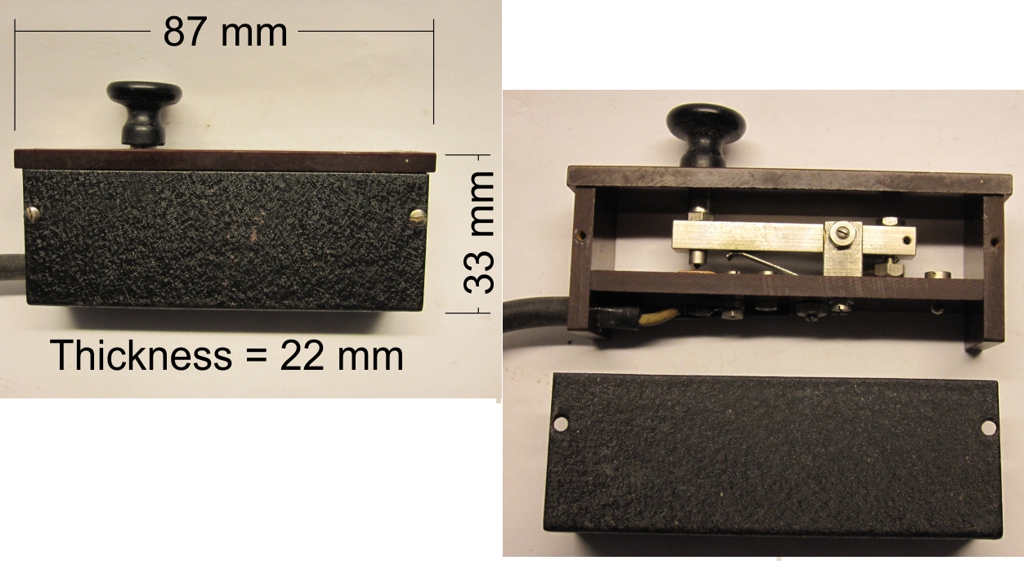 K106. A very tiny German key, for a manpack or spy radio, made by OKW/Abwehr (OberKommando Wehmacht). Used with the spy radio set SE88/5. Frame is brown Bakelite, cover is thin sheet metal, black wrinkle paint. Here is a picture from the original setup with the key leftmost. From a military technicians estate, who used to work at the Finnish Signal Troops electrical shop. Very rare, according to DK4NQ. Thomas, DJ5RE is in progress making a replica of this key (and the radio)!
K106. A very tiny German key, for a manpack or spy radio, made by OKW/Abwehr (OberKommando Wehmacht). Used with the spy radio set SE88/5. Frame is brown Bakelite, cover is thin sheet metal, black wrinkle paint. Here is a picture from the original setup with the key leftmost. From a military technicians estate, who used to work at the Finnish Signal Troops electrical shop. Very rare, according to DK4NQ. Thomas, DJ5RE is in progress making a replica of this key (and the radio)!
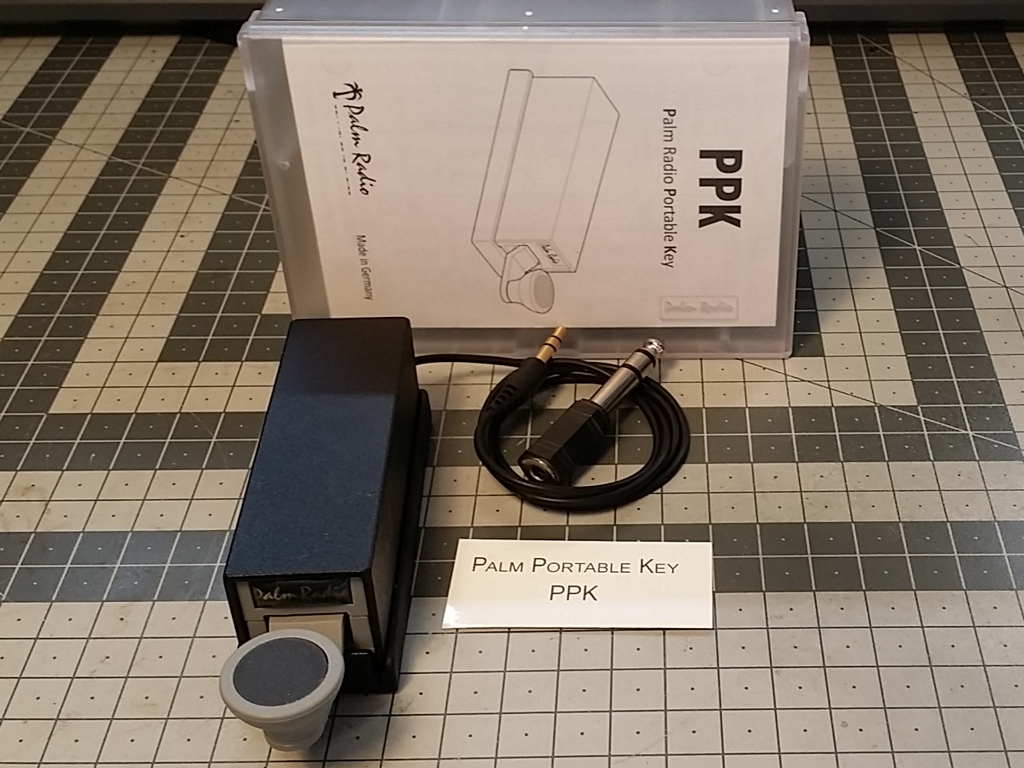 K111. Palm Portable Key (PPK). Small contemporary key made by Palm Radio in Germany. Adjustable spring tension and contact gap with a small hex key. Strong magnets keeps it in place for example on a radio casing. Complete, new key. Palm Radio ceased operation in 2018. See M16...M19 for other Palm Radio keys.
K111. Palm Portable Key (PPK). Small contemporary key made by Palm Radio in Germany. Adjustable spring tension and contact gap with a small hex key. Strong magnets keeps it in place for example on a radio casing. Complete, new key. Palm Radio ceased operation in 2018. See M16...M19 for other Palm Radio keys.
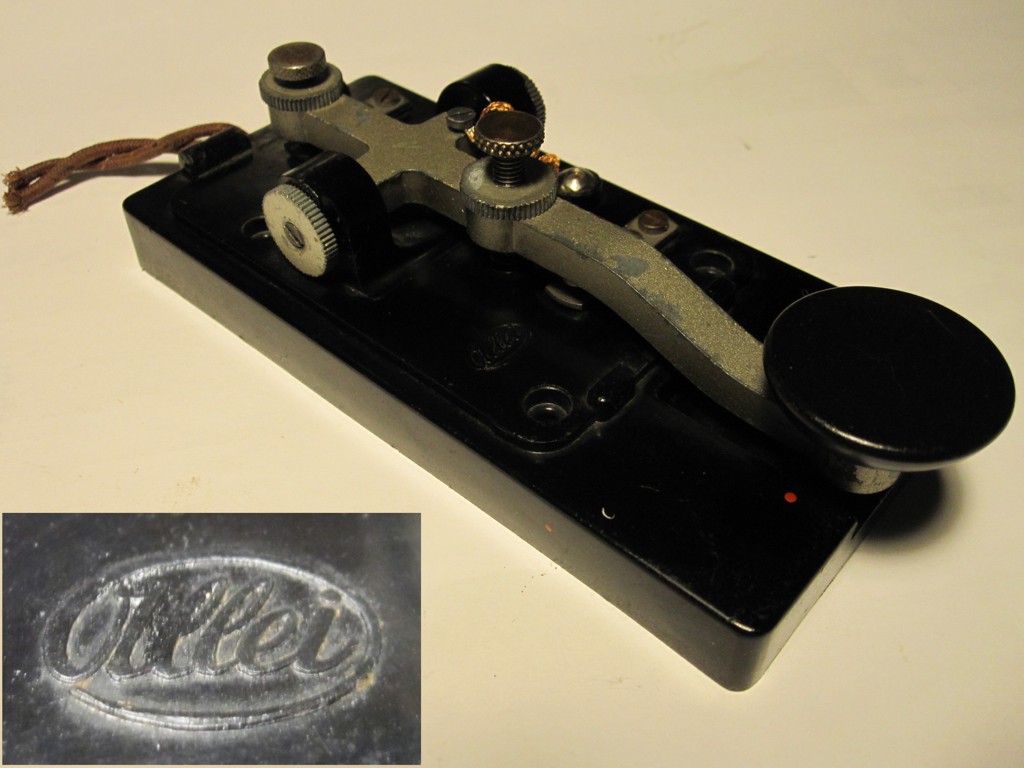 K113. An Allei Unit morse key (Einheits-Morsetaste) No. 76 by Alfred Lindner, Machern bei Leipzig, Germany before 1945. Several options were available: Dust cap, #76 P, lead and plug assy #76 S, 250 gram iron base #76 E and concave or convex knobs, option #76 K. No options with this key though.
K113. An Allei Unit morse key (Einheits-Morsetaste) No. 76 by Alfred Lindner, Machern bei Leipzig, Germany before 1945. Several options were available: Dust cap, #76 P, lead and plug assy #76 S, 250 gram iron base #76 E and concave or convex knobs, option #76 K. No options with this key though.
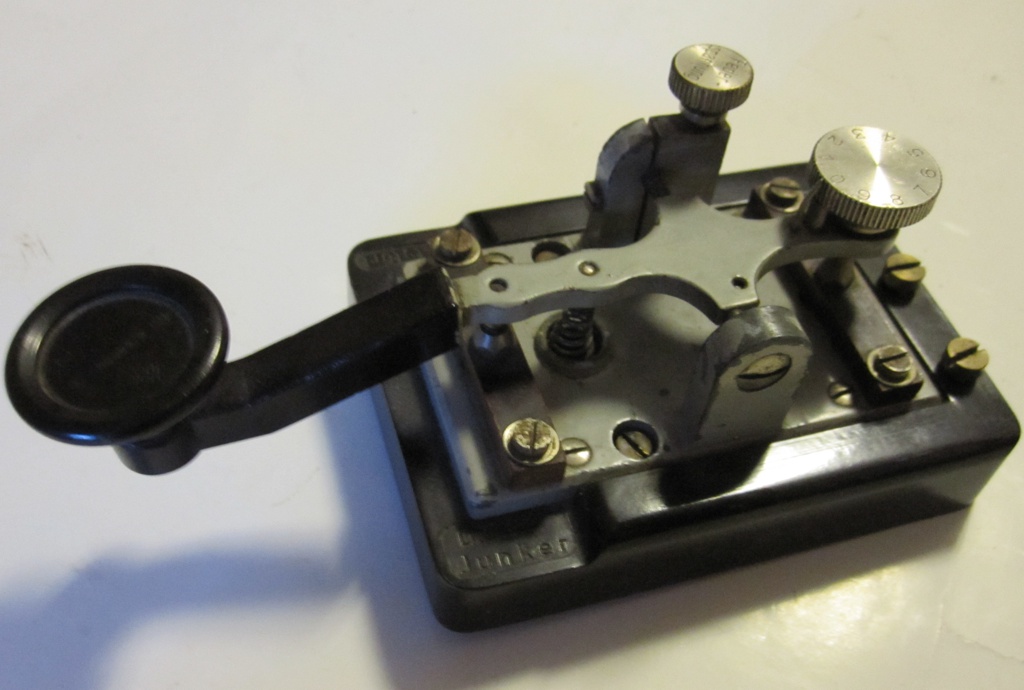 K121. Josef Junker MT Honnef/Rh DRP radio key, era before 1945. These keys do not have a hinged cover, they were used indoors in offices etc. from ca. 1930 onwards. Mark "DRP" stands for Deutshes Reichspatent and "Entstört" means it does'nt disturb reception. Keys after 1945 are marked D.B.G.M (_Deutsches Bundes_-Gebrauchsmuster) Donation by Kari, OH5YW.
K121. Josef Junker MT Honnef/Rh DRP radio key, era before 1945. These keys do not have a hinged cover, they were used indoors in offices etc. from ca. 1930 onwards. Mark "DRP" stands for Deutshes Reichspatent and "Entstört" means it does'nt disturb reception. Keys after 1945 are marked D.B.G.M (_Deutsches Bundes_-Gebrauchsmuster) Donation by Kari, OH5YW.
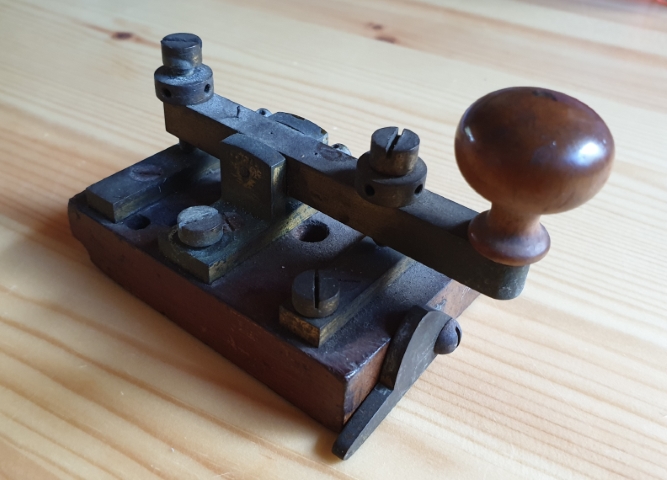 K164. German key made by Siemens & Halske. This was used in fireboxes for testing signal lines to the firehouse, and as such not a telegraph key. A neat detail is the locking device on the front. It locks the key in unpressed position, making a secondary circuit close. Small size, 83 x 60 mm, h= 60 mm. Brass hardware, oak base.Obtained from the Dutch Radio Amateur Museum.
K164. German key made by Siemens & Halske. This was used in fireboxes for testing signal lines to the firehouse, and as such not a telegraph key. A neat detail is the locking device on the front. It locks the key in unpressed position, making a secondary circuit close. Small size, 83 x 60 mm, h= 60 mm. Brass hardware, oak base.Obtained from the Dutch Radio Amateur Museum.
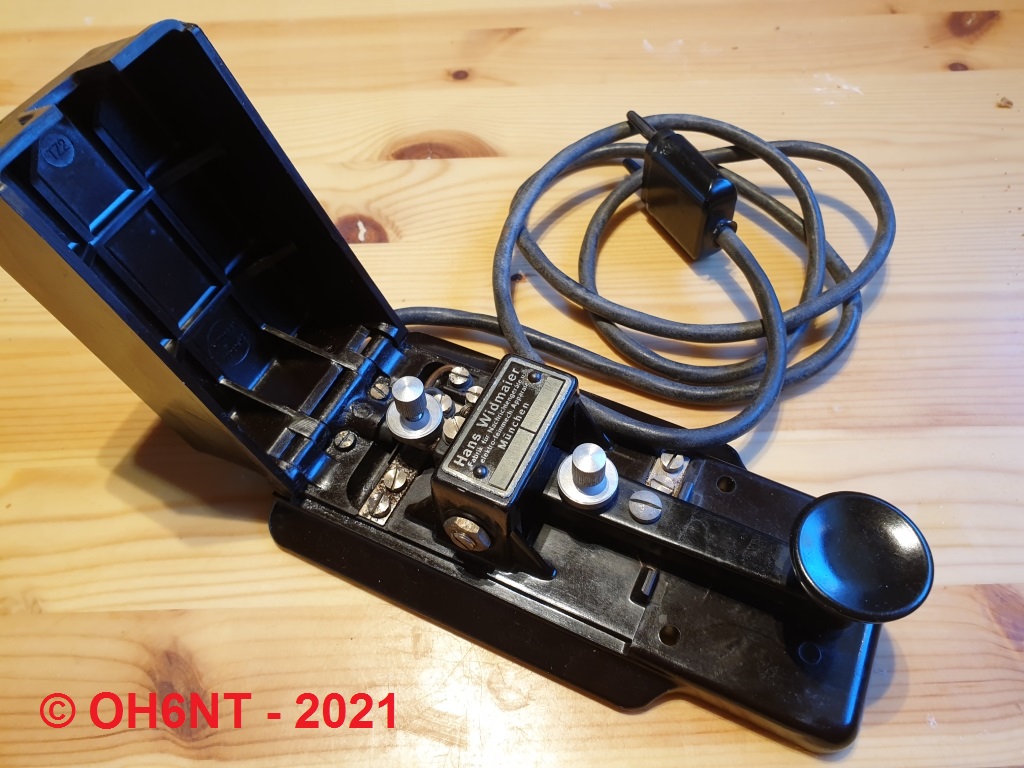 K168. A German Hans Widmaier TZ2 / München 9 key before 1945. After 1945 the model was slightly changed, with more round corners and a logotype in the center circle of the lid. Condition as new. Original cable and connector.
K168. A German Hans Widmaier TZ2 / München 9 key before 1945. After 1945 the model was slightly changed, with more round corners and a logotype in the center circle of the lid. Condition as new. Original cable and connector.
[](keys/IMG%5F0413 %28Small%29.JPG)K32. **DDR.**Morsetaste model K 40 - VEB KFZ-Bedarf Leipzig, DDR. East Germany (GDR) army key, late model. Early models had a flat knob. Identical to their model K 64, without cable and plug. All bakelite. 1958-1990.
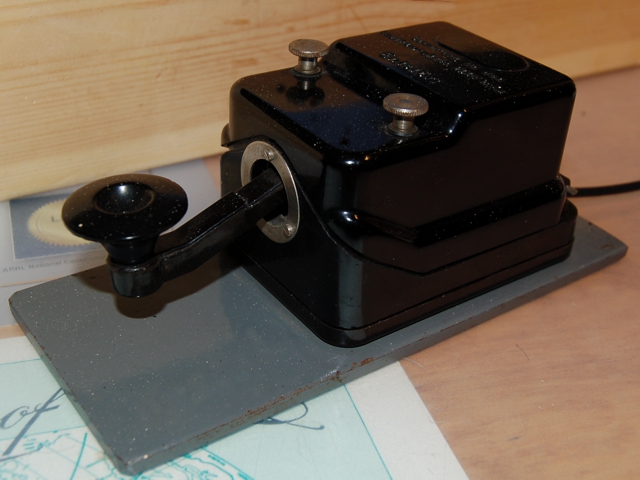 K56. DDR. VEB RFT, Funkwerk Köpernick "MT 50" standard east German (GDR) flameproof telegraph key, in good condition except for the missing rubber arm sealing. 1955-1990. Used at commercial and coastal radio stations for shipping and the People's Navy.
K56. DDR. VEB RFT, Funkwerk Köpernick "MT 50" standard east German (GDR) flameproof telegraph key, in good condition except for the missing rubber arm sealing. 1955-1990. Used at commercial and coastal radio stations for shipping and the People's Navy.
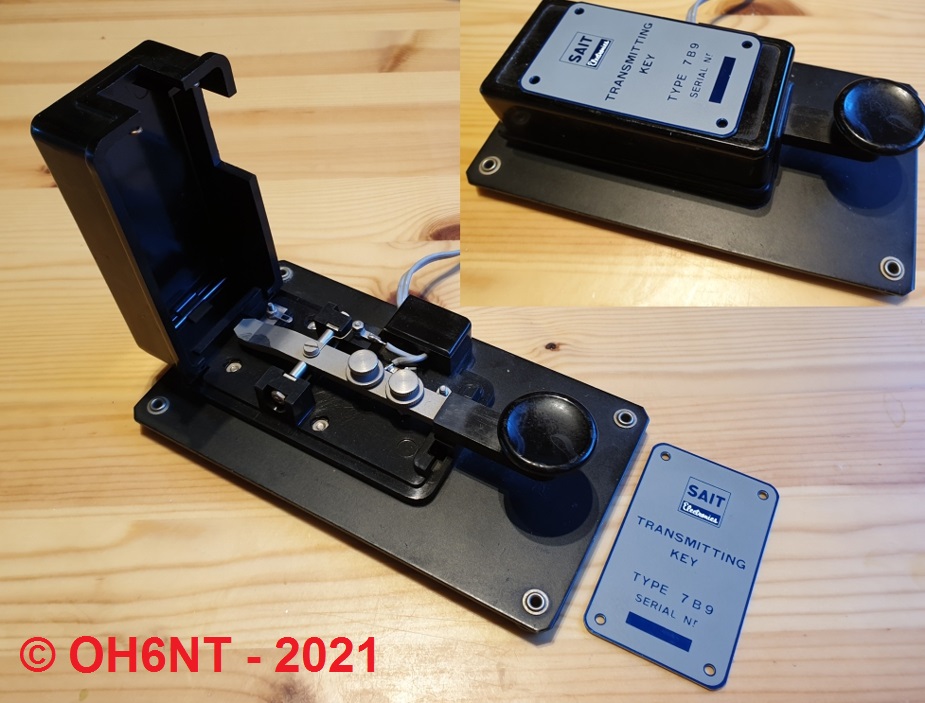 K169. Charlottenburger Motoren- und Gerätebau (CMG) key. These keys were also delivered to Belgian SAIT Electronics as OEM keys, and they fitted their own label on top. This is as new, and I also have a new SAIT unmounted label for it. The label was donated by OM Guido ON6RL, who worked at SAIT.
K169. Charlottenburger Motoren- und Gerätebau (CMG) key. These keys were also delivered to Belgian SAIT Electronics as OEM keys, and they fitted their own label on top. This is as new, and I also have a new SAIT unmounted label for it. The label was donated by OM Guido ON6RL, who worked at SAIT.
[.jpg) ](keys/Cablekey %28M%29.jpg)K151. This is a rare (underwater?) or testing cable key from Germany. Serial number 449608 imprinted on the front of base. Base is hard rubber (ebonite). One of the keys kan be locked down for testing purposes. Maker is unknown, more information needed!
](keys/Cablekey %28M%29.jpg)K151. This is a rare (underwater?) or testing cable key from Germany. Serial number 449608 imprinted on the front of base. Base is hard rubber (ebonite). One of the keys kan be locked down for testing purposes. Maker is unknown, more information needed!
K171. A straight key from Ernst Leybold Nachfolger A.G. in Köln. Intended for schools and laboratories as a Morse key and as a temporary switch just for low voltages in teaching physics. Founded in 1850, Leybolds main product was vacuum pumps. Today the education part of Leybold is owned by LD Didactic GmbH.
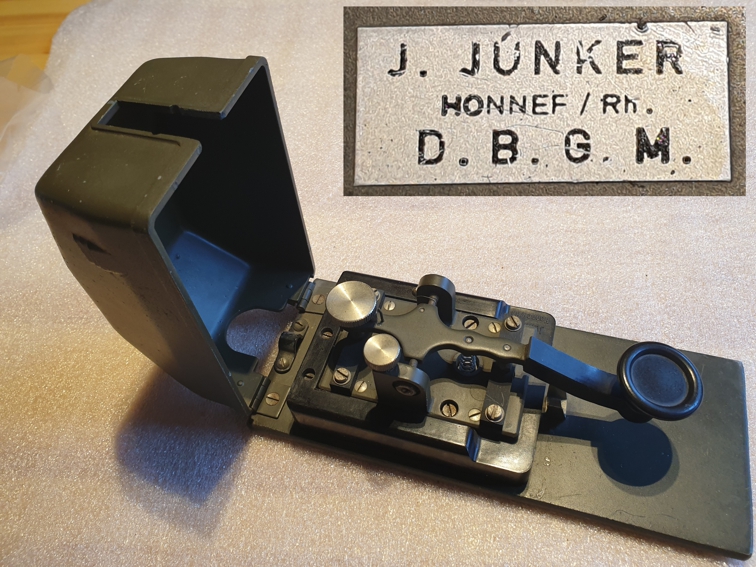 K184. Josef Junker MT Honnef/Rh D.B.G.M. post-WWII key in military green livery. Appears unused. This one has a gap adjustment screw with micrometer sprung ball indented adjustment, but no numbering on the set wheel. Has an inductance, acapacitor and a resistor in the base for RF suppression. Label on bottom.
K184. Josef Junker MT Honnef/Rh D.B.G.M. post-WWII key in military green livery. Appears unused. This one has a gap adjustment screw with micrometer sprung ball indented adjustment, but no numbering on the set wheel. Has an inductance, acapacitor and a resistor in the base for RF suppression. Label on bottom.
.jpg) K193 German Luftwaffe type TG.2a, from a Dornier Do17 "flying Pencil" bomber. The arm is used as a lever for switching, by rotating the key left or right. The positions are indicated as FT/EiV and FT. EiV is short for "“Eigenverständigung" (monitoring) and FT to means “Funktelegrafie” (radiotelegraphy). Made by Deutsche Telefonwerke und Kabelindustrie in Berlin 1939 for the radio set FuG III used aboard several other planes.
K193 German Luftwaffe type TG.2a, from a Dornier Do17 "flying Pencil" bomber. The arm is used as a lever for switching, by rotating the key left or right. The positions are indicated as FT/EiV and FT. EiV is short for "“Eigenverständigung" (monitoring) and FT to means “Funktelegrafie” (radiotelegraphy). Made by Deutsche Telefonwerke und Kabelindustrie in Berlin 1939 for the radio set FuG III used aboard several other planes.
Not procured yet.
Not procured yet.
Japanese, Chinese keys
[](keys/IMG%5F0334 %28Small%29.JPG)K11. Kenpro KK50 long lever key with ball bearings and fixed rear contact. The KK50 were delivered without dust cover. Made by Kenpro Kogyo, Toshimaku, Tokyo, Japan, now owned by Vertex Standard (Yaesu).
[](keys/IMG%5F0338 %28Small%29.JPG)K12. Kenpro KK60 long lever key with ball bearings, adjustable rear silver contact, and a Perspex dust cover. Made by Kenpro Kogyo, Toshimaku, Tokyo, Japan now owned by Vertex Standard (Yaesu).
[](keys/IMG%5F0333 %28Small%29.JPG)K15. Light small japanese practising key, the "Baby key". Cheap copy of the American Speed-X Triumph, which in turn is a copy of the Signal Electric spark key...
[](keys/IMG%5F0415 %28Small%29.JPG)K25. Japanese "SATO" key made by SATO Parts Electric Co. Ltd. Molded bakelite base, nickel plated brass. Good key. This is the bigger type 387. Sato Parts also produced a smaller model, the #2700, see K147.
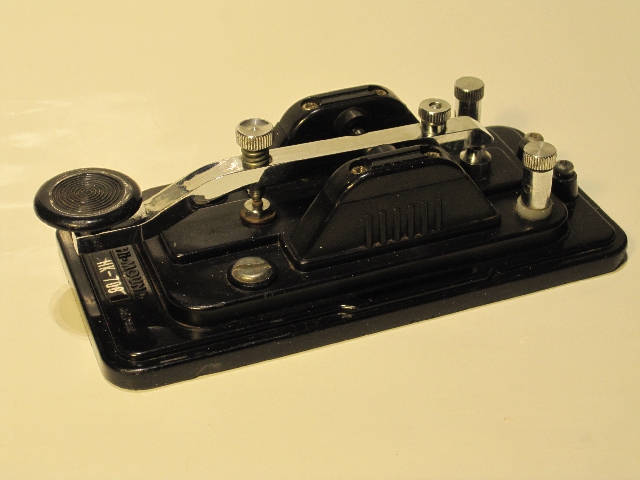 K49. Japanese HiMound HK-708 key made by HI-MOUND Electro Co. (Takatsuka). Still produced, good condition, cable restrainer is missing.
K49. Japanese HiMound HK-708 key made by HI-MOUND Electro Co. (Takatsuka). Still produced, good condition, cable restrainer is missing.
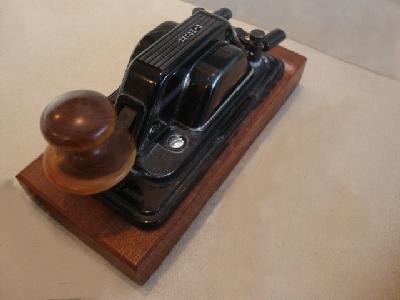 K48. Japanese HiMound HK-707 key made by HI-MOUND Electro Co. (Takatsuka). Still produced, very good condition. Knob is not original, but much better!
K48. Japanese HiMound HK-707 key made by HI-MOUND Electro Co. (Takatsuka). Still produced, very good condition. Knob is not original, but much better!
[ ](keys/Picture 35.jpg)K34. Japanese Triumph key (J-37 clone) with shorting arm, mounted on a heavy brass base. Good feel and keying. About 1970's.
](keys/Picture 35.jpg)K34. Japanese Triumph key (J-37 clone) with shorting arm, mounted on a heavy brass base. Good feel and keying. About 1970's.
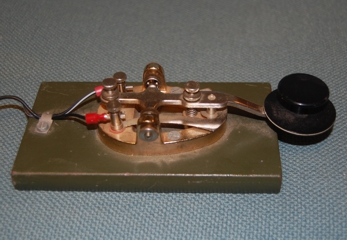 K35. Japanese Miranda model TK4 telegraph key (J-37 clone) mounted on a heavy iron base. No shorting lever on this key.
K35. Japanese Miranda model TK4 telegraph key (J-37 clone) mounted on a heavy iron base. No shorting lever on this key.
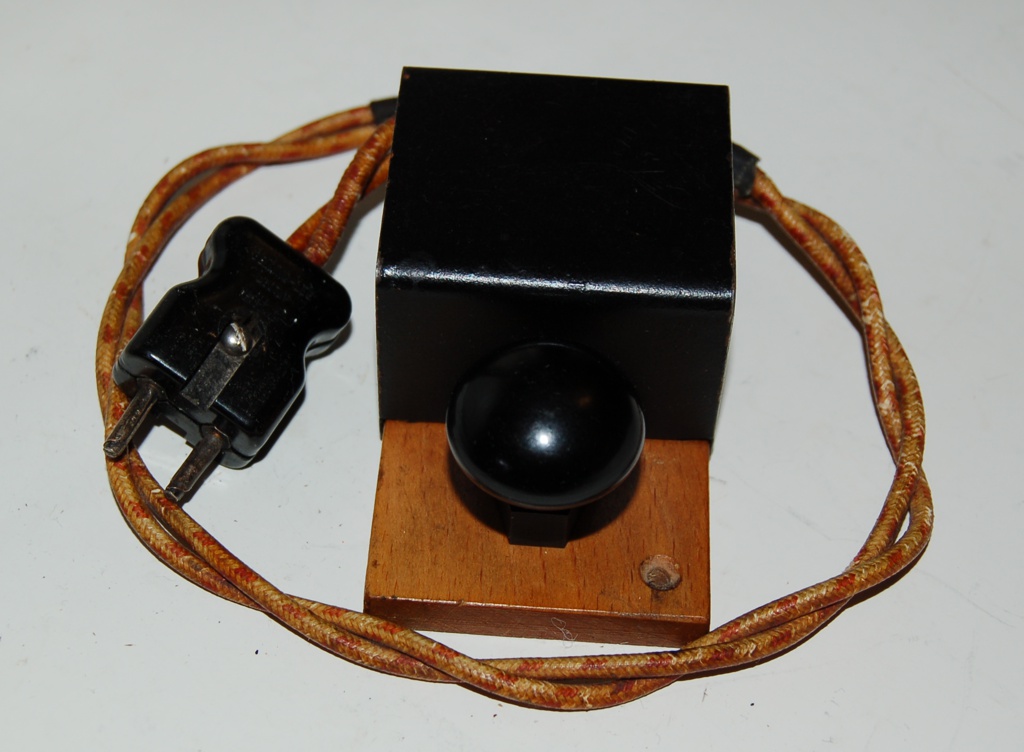 K142. Miniature Japanese spy key. USSR aquired a number of these on the eve of WW2, and used them for clandestine operations with the "Sever" radio, dropped behind enemy lines. Hardwood, key base is a piece of plastic, mechanics are nickel plated. Size l=80 x w=50 x h=37 mm, cloth insulated wiring. All parts are original, but the cover, which is tin and might be made by Finnish Army Signal Depot. Only a few exists.
K142. Miniature Japanese spy key. USSR aquired a number of these on the eve of WW2, and used them for clandestine operations with the "Sever" radio, dropped behind enemy lines. Hardwood, key base is a piece of plastic, mechanics are nickel plated. Size l=80 x w=50 x h=37 mm, cloth insulated wiring. All parts are original, but the cover, which is tin and might be made by Finnish Army Signal Depot. Only a few exists.
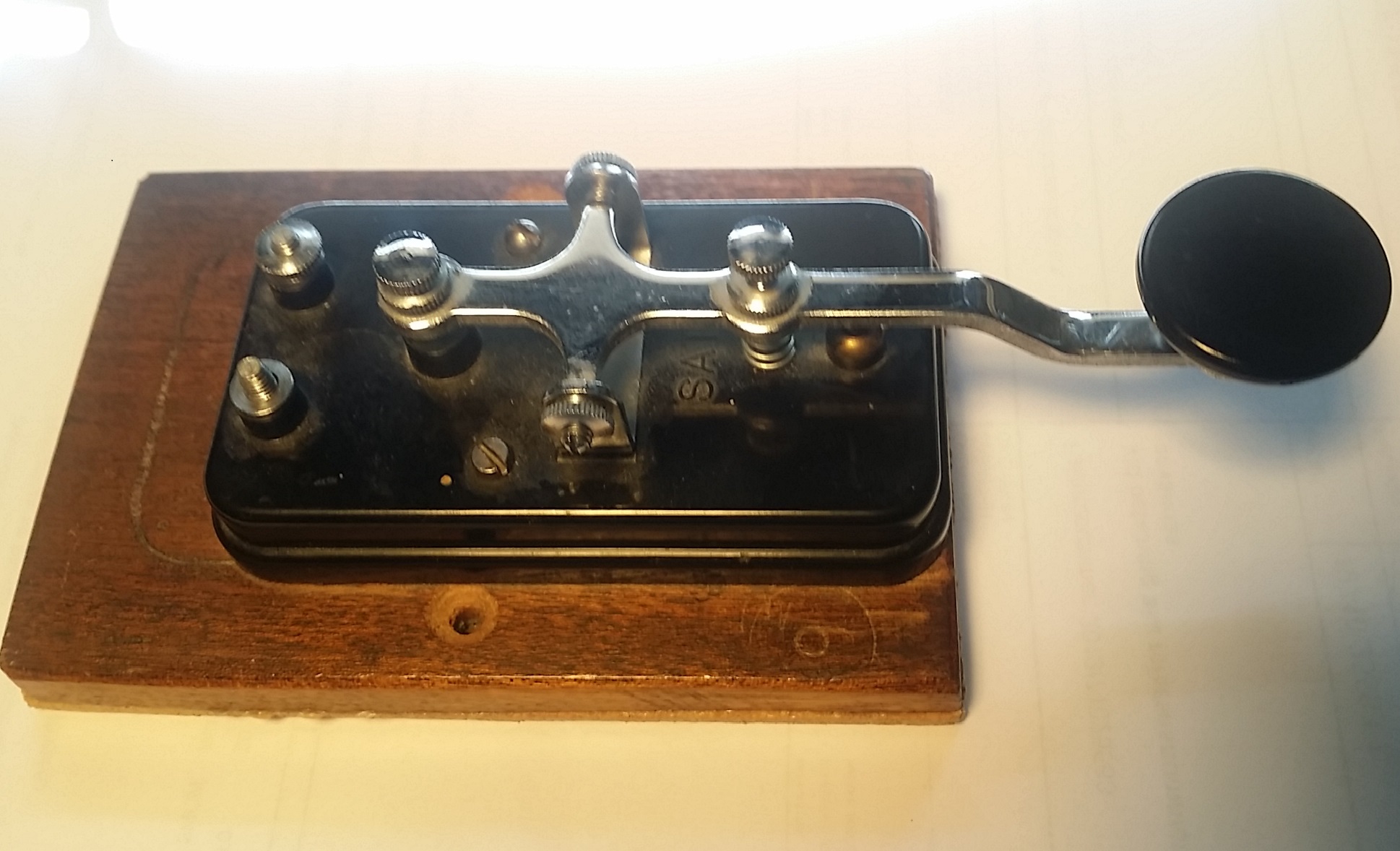 K147. Japanese key made by SATO Parts Electric Co. Ltd. Part no. 2700, "Baby Type". Moulded bakelite base, nickel plated brass. Not a professional key, merely a starter key for ham radio trainees. Usable, but not very good.
K147. Japanese key made by SATO Parts Electric Co. Ltd. Part no. 2700, "Baby Type". Moulded bakelite base, nickel plated brass. Not a professional key, merely a starter key for ham radio trainees. Usable, but not very good.
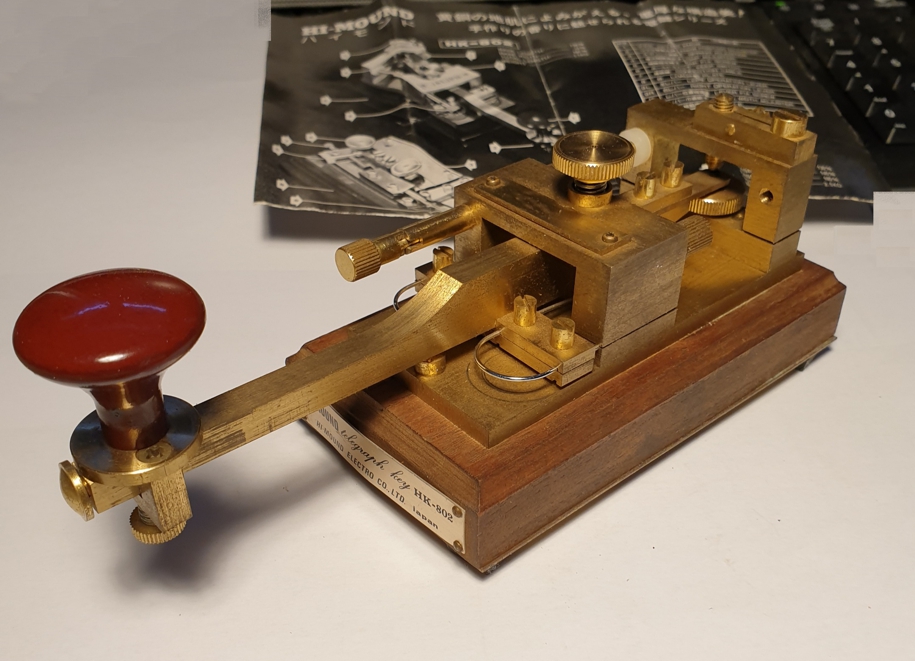 K160. A beautiful straight key from Japan, the Hi-Mound HK-802. Weight 1065 grams. This key has a position adjustable knob! It is in near mint condition, working perfectly. Complete with parts description and original box (in rough condition). One screw missing in the picture, but it has been replaced since picture was taken.
K160. A beautiful straight key from Japan, the Hi-Mound HK-802. Weight 1065 grams. This key has a position adjustable knob! It is in near mint condition, working perfectly. Complete with parts description and original box (in rough condition). One screw missing in the picture, but it has been replaced since picture was taken.
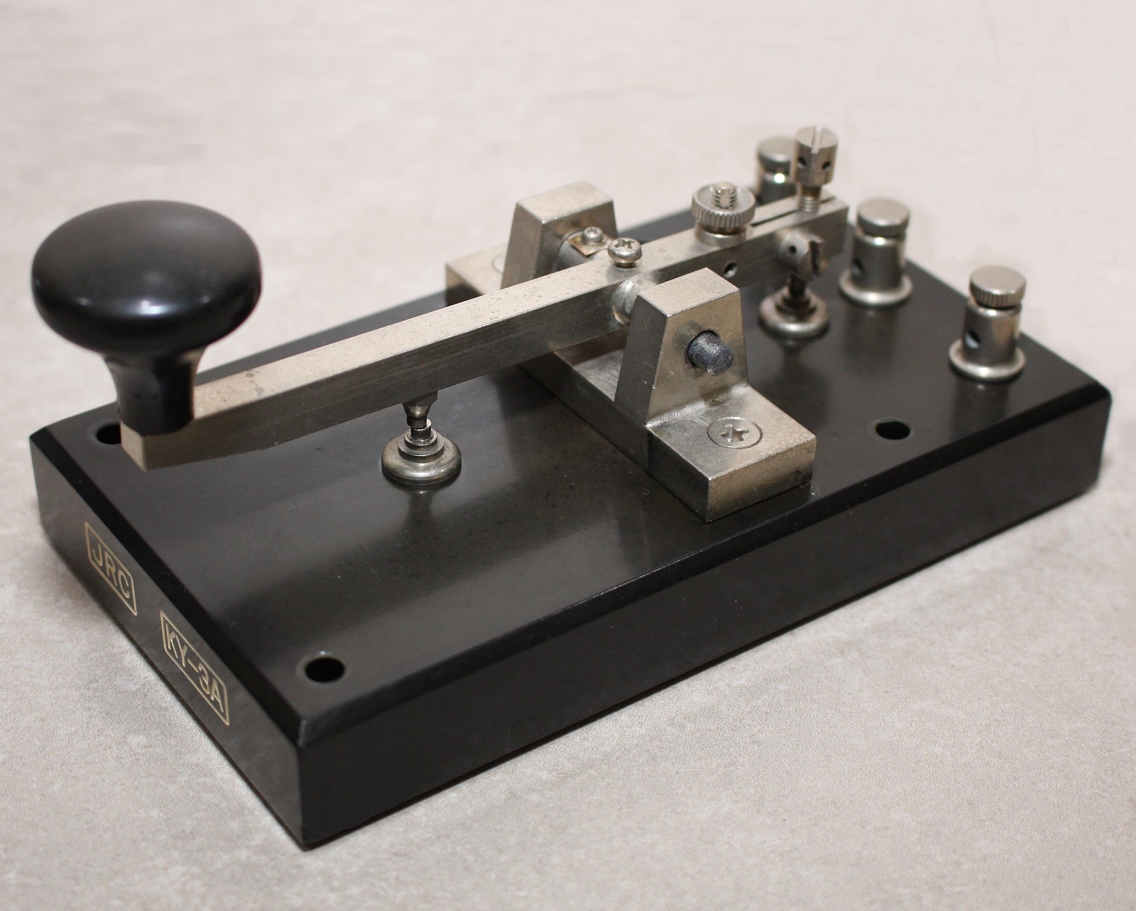 K161. A slightly used Japan Radio Corp. (JRC) KY-3A ships' key. These keys may have been supplied with or without a steel base, this one is without. A small locking thumbscrew is missing. Otherwise in good/very good condition.
K161. A slightly used Japan Radio Corp. (JRC) KY-3A ships' key. These keys may have been supplied with or without a steel base, this one is without. A small locking thumbscrew is missing. Otherwise in good/very good condition.
[ ](keys/K173%5FHiMound HK-902.jpg)K173. A rare Japanese Hi-Mound HK-902 key. In good shape, I renewed the extension rubbers, remounted the tension ans contact gap adjusters (wrong assembled). The Acrylic tube has been exchanged, it had cracks. Apparently it has fallen in some stage, the endplates are dented.
](keys/K173%5FHiMound HK-902.jpg)K173. A rare Japanese Hi-Mound HK-902 key. In good shape, I renewed the extension rubbers, remounted the tension ans contact gap adjusters (wrong assembled). The Acrylic tube has been exchanged, it had cracks. Apparently it has fallen in some stage, the endplates are dented.
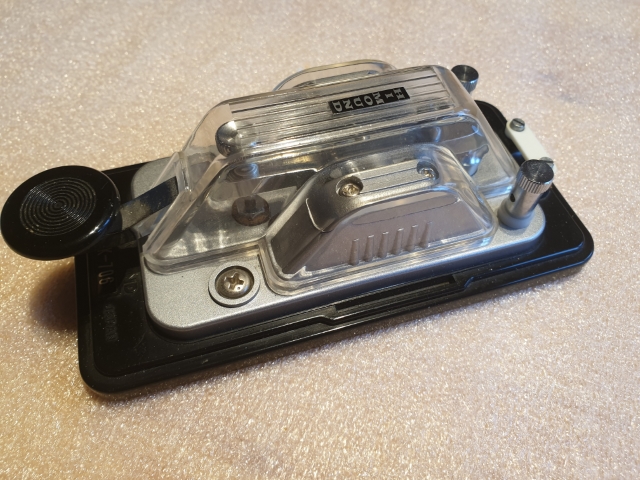 K185. Japanese HiMound HK-706 key, with dust cover, conditionlike new. Made by HI-MOUND Electro Co. (Takatsuka). Still produced today.
K185. Japanese HiMound HK-706 key, with dust cover, conditionlike new. Made by HI-MOUND Electro Co. (Takatsuka). Still produced today.
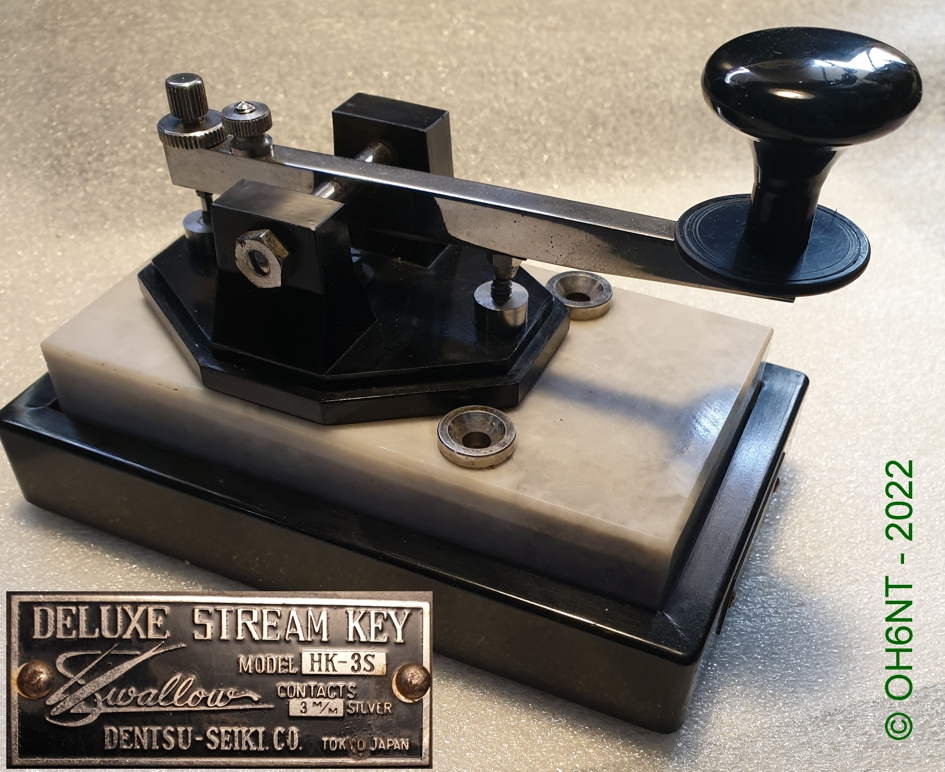 K186. HK-3S Deluxe Stream key, Swallow brand, from Japanese company Dentsu Seiki KK (predecessor to Hi-Mound Electro Co), era before 1964. Heavy marble base, 3 mm silver contacts. The gap setting screw and one of the connection screws below are not original, otherwise in excellent shape. Mark, KM4AHP made it possible for me to add this to my collection.
K186. HK-3S Deluxe Stream key, Swallow brand, from Japanese company Dentsu Seiki KK (predecessor to Hi-Mound Electro Co), era before 1964. Heavy marble base, 3 mm silver contacts. The gap setting screw and one of the connection screws below are not original, otherwise in excellent shape. Mark, KM4AHP made it possible for me to add this to my collection.
[](keys/IMG%5F0381 %28Small%29.JPG)K22. Chinese army key, type Yushan DJG-4, sometimes called D117 or K4, maker Changshu Telecommunication. Heavy red painted cast iron base beneath the base chrome cover. Quite good and stable key due to it's weight.
Russian & Eastern block keys
[](keys/IMG%5F0328 %28Small%29.JPG)K4. Soviet special forces key, for field radio stations like R-131,R-143 and R-159. Silvered contacts. Used in most Warsaw pact countries. Nickname is "Bereza" (Birch). Also used in Hungarian spy radio set AK20.
[](keys/IMG%5F0346 %28Small%29.JPG)K18. USSR 3TA (TKF) bakelite key, "OTK 123" approval stamp inside. Used by Finnish army for training and most Warsaw pact countries post WW2. Russian nickname for this key is "Лягушка", pronouced "Liguschka" (the frog). Made in Cherkassy, Ukraine by ZTA (Zavod Telegrafnoy Apparatury).
K33. USSR era FEP training (фЭП учебный) key. Federal proof stamp (OTK 13) underneath. Made in 1978.
K52. USSR aircraft key type P12 used in used in aircraft types LI-2, IL-12, IL-14 since 1945. Some extra fittings missing (switches?) in the near end. Aluminium casing, bakelite key.
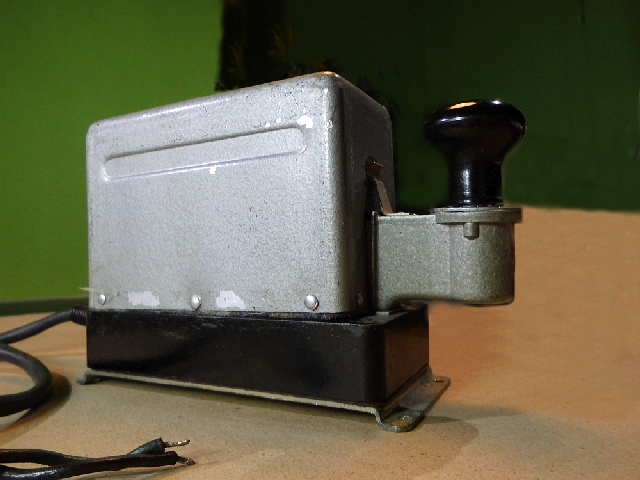 K53. Flameproof USSR key КЛ4 (CL4) for several radio sets: R-102m, R-140, RSB, RSB-F etc. about 1960's. The base is bakelite, equipped with spark suppression components. Gray painted cast aluminium and the cover is thin sheet aluminium. Working voltage up to 300 volts.
K53. Flameproof USSR key КЛ4 (CL4) for several radio sets: R-102m, R-140, RSB, RSB-F etc. about 1960's. The base is bakelite, equipped with spark suppression components. Gray painted cast aluminium and the cover is thin sheet aluminium. Working voltage up to 300 volts.
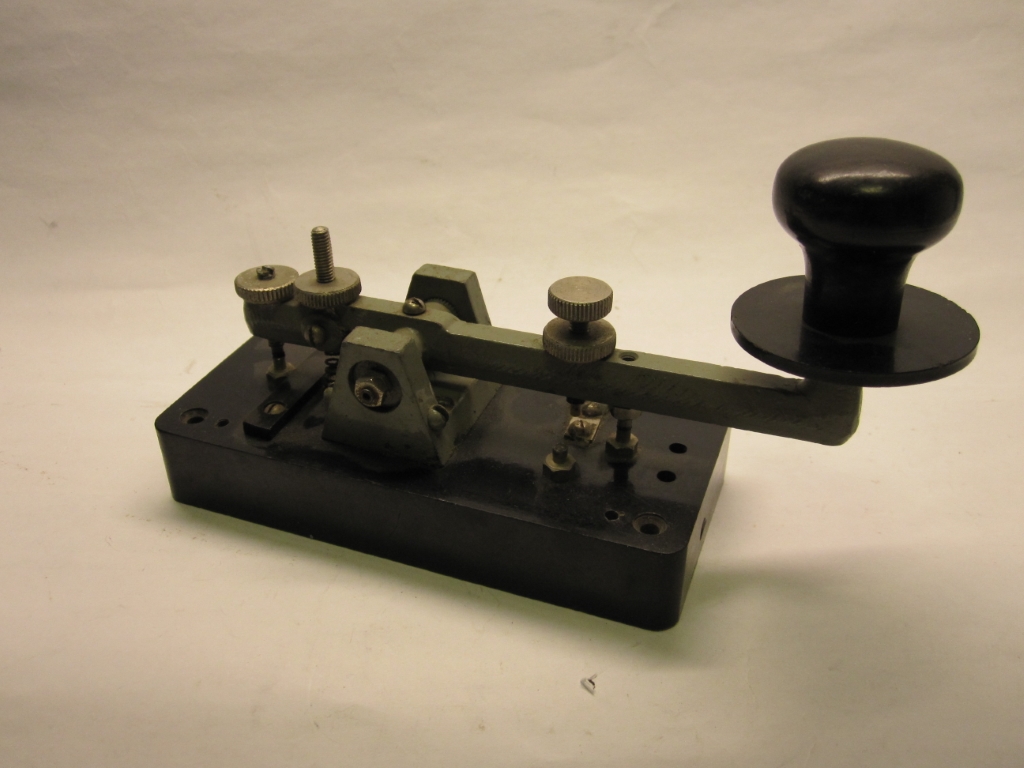 K54. The inner works of a similar key as K53 (left). Got it as a "sidekick" when I bought another key. "RSB-bis" painted on the Pertinax base sheet. This one was used on a Штурмовик "Schturmovik" Czech attack plane with the later version of the RSB radio set.
K54. The inner works of a similar key as K53 (left). Got it as a "sidekick" when I bought another key. "RSB-bis" painted on the Pertinax base sheet. This one was used on a Штурмовик "Schturmovik" Czech attack plane with the later version of the RSB radio set.
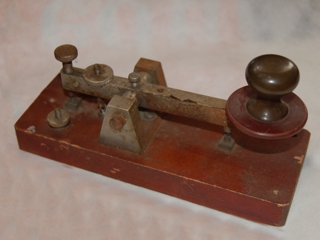 K105. Unknown (possibly Russian) key from a Finnish flea market site. Any information is appreciated! Rough condition.
K105. Unknown (possibly Russian) key from a Finnish flea market site. Any information is appreciated! Rough condition.
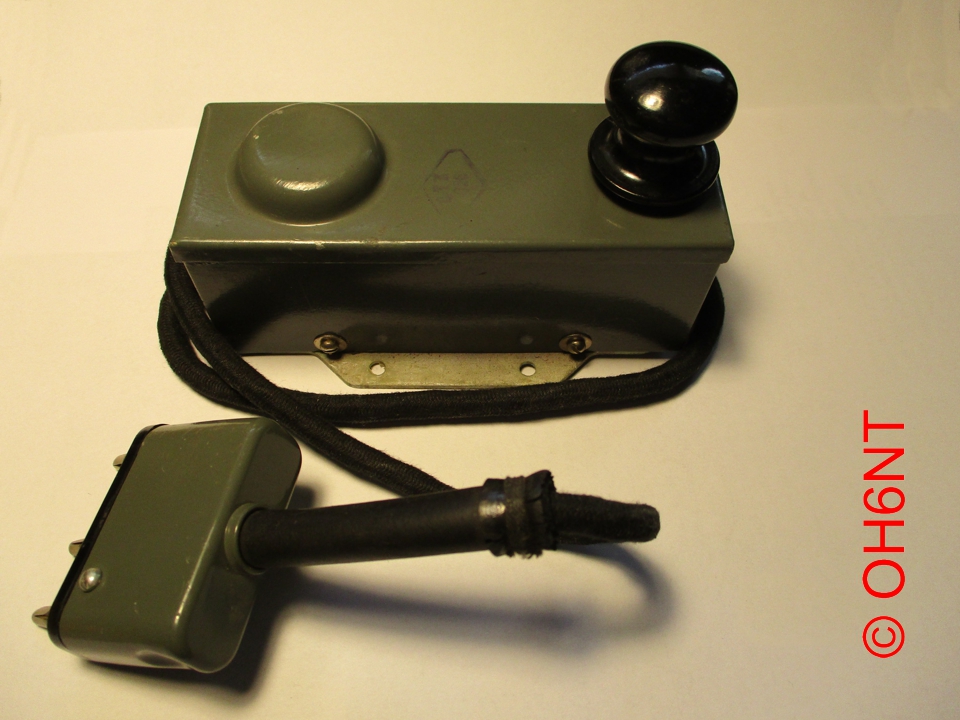 K156. A very rare KL2 telegraph key, complete with cover, made in the Soviet Union during the Great Patriotic War. It was used for stationary and field radio stations of the Red Army, such as the RAF, 6PK etc. In unused condition, original cable and conn. Here more pictures of the internals.
K156. A very rare KL2 telegraph key, complete with cover, made in the Soviet Union during the Great Patriotic War. It was used for stationary and field radio stations of the Red Army, such as the RAF, 6PK etc. In unused condition, original cable and conn. Here more pictures of the internals.
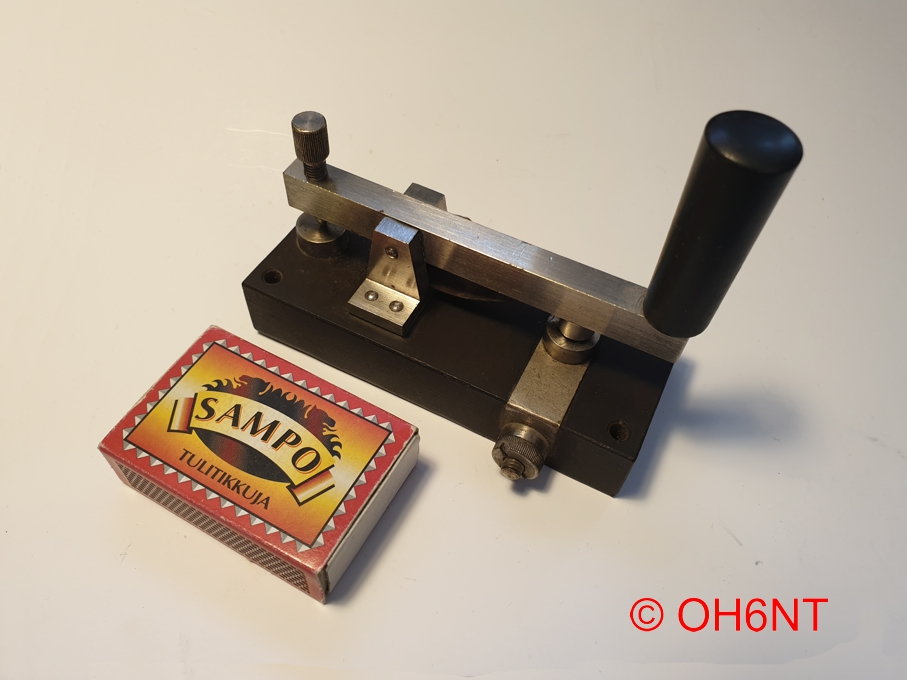 K162. A rare Russian key, possibly for a WW1 airplane spark transmitter (heavy contacts). Very tiny, weight 225 grams, size 42 x 96 mm, total height 83 mm. Knob size 13-15 mm dia, height 42 mm. Nickel plated brass, ebony base. Nice craftmanship. Need more information!
K162. A rare Russian key, possibly for a WW1 airplane spark transmitter (heavy contacts). Very tiny, weight 225 grams, size 42 x 96 mm, total height 83 mm. Knob size 13-15 mm dia, height 42 mm. Nickel plated brass, ebony base. Nice craftmanship. Need more information!
[](keys/IMG%5F0345 %28Small%29.JPG)K16. Warsaw pact military key, made in Hungary. Case and base is sheet metal. Used for the R-104 set. First produced in 1938.
[](keys/DSC%5F1881 %28Small%29.JPG)K36. The Cezcko RM1 key was made in the early 1950’s for the army in Czechoslovakia. Used for RM-3Ma and MB-41 TRX:s. Lift the key lever to put radio in receiving mode (Prjem), push down to transmit (Vysilani).
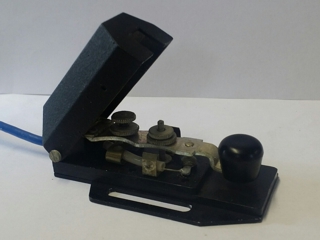 K77. This is a miniature Bulgarian all-metal key used as knee-mount by tank signalmen, spies or other with needs for a tiny key. Brand new, never used. Size about 9 x 5 cm!
K77. This is a miniature Bulgarian all-metal key used as knee-mount by tank signalmen, spies or other with needs for a tiny key. Brand new, never used. Size about 9 x 5 cm!
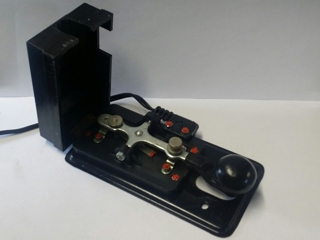 K78. Here we have another Bulgarian army key from the 1970's. Made by Georgiy Parvanov Damianov factory in Razgrad. Metal base, stamped lever and moulded plastic cover. Poor quality, as with most eastern block stuff - cheaply made and flimsy!
K78. Here we have another Bulgarian army key from the 1970's. Made by Georgiy Parvanov Damianov factory in Razgrad. Metal base, stamped lever and moulded plastic cover. Poor quality, as with most eastern block stuff - cheaply made and flimsy!
K96. Polish straight key "Bocian" (the Stork) fabricated from 1930's, and used by the Polish Army and by the Polish defence organization Liga Obrony Kraju (LOK) while behind the iron curtain. Similar pivot as in the Swedish key with a flat blade spring. Brass contacts, base cast iron. Weight 1,4 kgs.
K97. Serbian military key and headphones set JTs-RTG-01 made by Nikola Tesla Elektronska Industrija a.d. in Belgrad for the ex. Yugoslavian army. Condition unused. All parts inside are nickel plated or stainless steel. Base is plexiglass and cover is sheet metal. The cover has a volume control and a radio mode switch. The switch also turns on a tape recorder.
 K195. A Russian training key. Bakelite and stamped sheet metal. Poor quality, but does it's job as a key.
K195. A Russian training key. Bakelite and stamped sheet metal. Poor quality, but does it's job as a key.
Not procured yet.
Not procured yet.
Other western European keys
K65. One of the "Rolls-Royces" of straight keys: an Italian Begali Camelback, serial no. 137. Jubilee model "Marconi Day October 2th, 1999". Gold plated, contacts are 925/000 silver. Click for bigger pic.
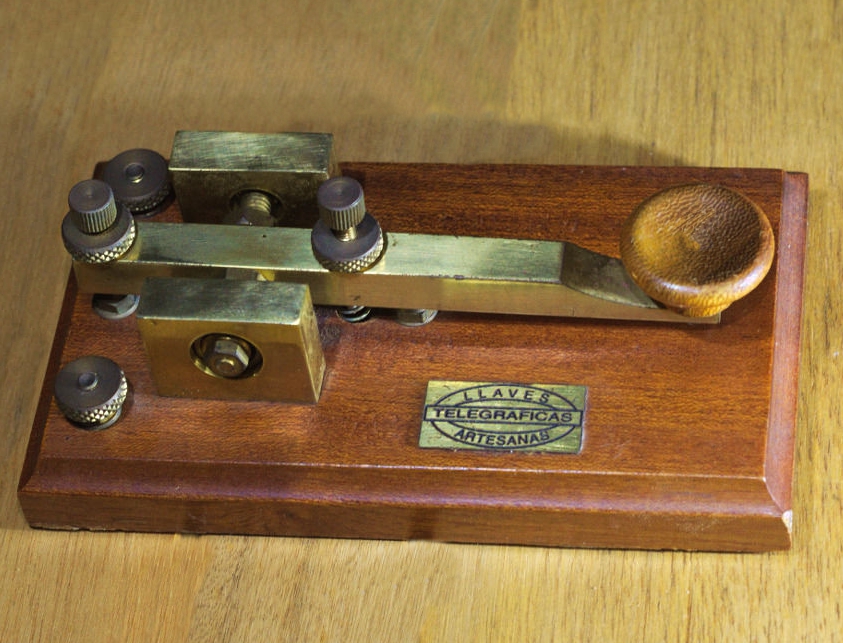 K67. Llaves Telegrafica Artesanas (LTA) handcrafted GMV key, made by Guillermo Mestre Janer, EA6YG. Base is Spanish oak and the knob is teak. Solid brass, polished and lacquered. Used but in excellent condition. 8 x 14 cm, weight 360 g.
K67. Llaves Telegrafica Artesanas (LTA) handcrafted GMV key, made by Guillermo Mestre Janer, EA6YG. Base is Spanish oak and the knob is teak. Solid brass, polished and lacquered. Used but in excellent condition. 8 x 14 cm, weight 360 g.
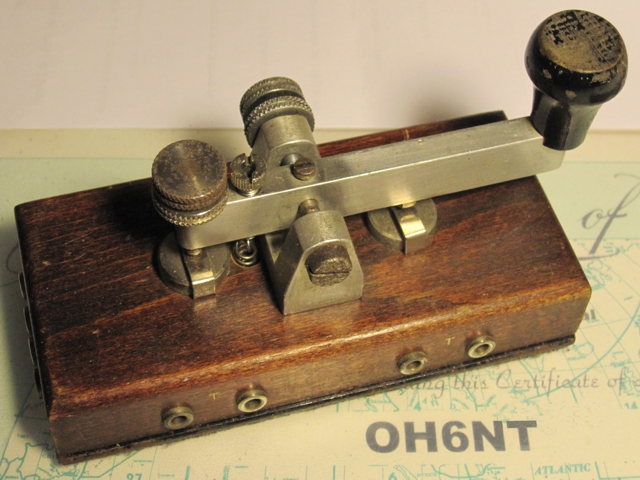 K108. Swiss Army special troops training key, standard aluminium issue made by ZAG (Zellweger AG) & Knobel, used between late 30's until the late 50's. Base is beech.
K108. Swiss Army special troops training key, standard aluminium issue made by ZAG (Zellweger AG) & Knobel, used between late 30's until the late 50's. Base is beech.
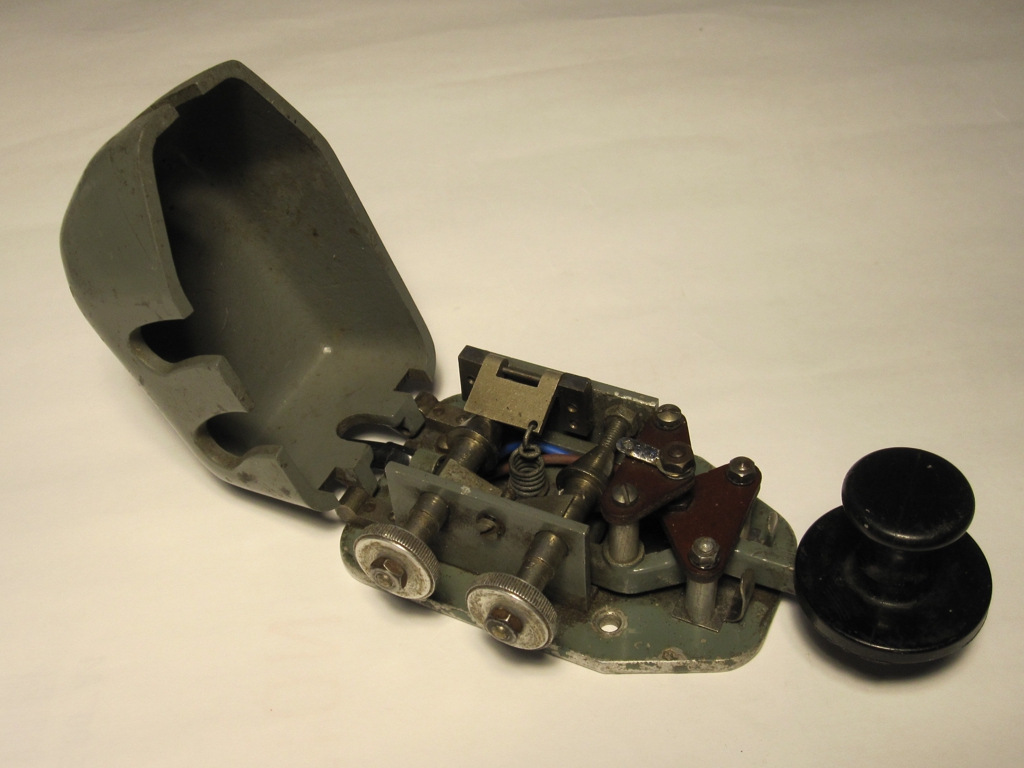 K93. This is a French Air Force key designed by SARAM (Société Anonyme Radioélectrique Aéronautique et Marine) version 1 and made by SIPL (Société Industriel Procédés Loth) in 1938 for use with the 3.10 radio set. This key actually served on board a French bomber during WW2. This key is assebled by screws, not one mold, as v.2 and v.3.
K93. This is a French Air Force key designed by SARAM (Société Anonyme Radioélectrique Aéronautique et Marine) version 1 and made by SIPL (Société Industriel Procédés Loth) in 1938 for use with the 3.10 radio set. This key actually served on board a French bomber during WW2. This key is assebled by screws, not one mold, as v.2 and v.3.
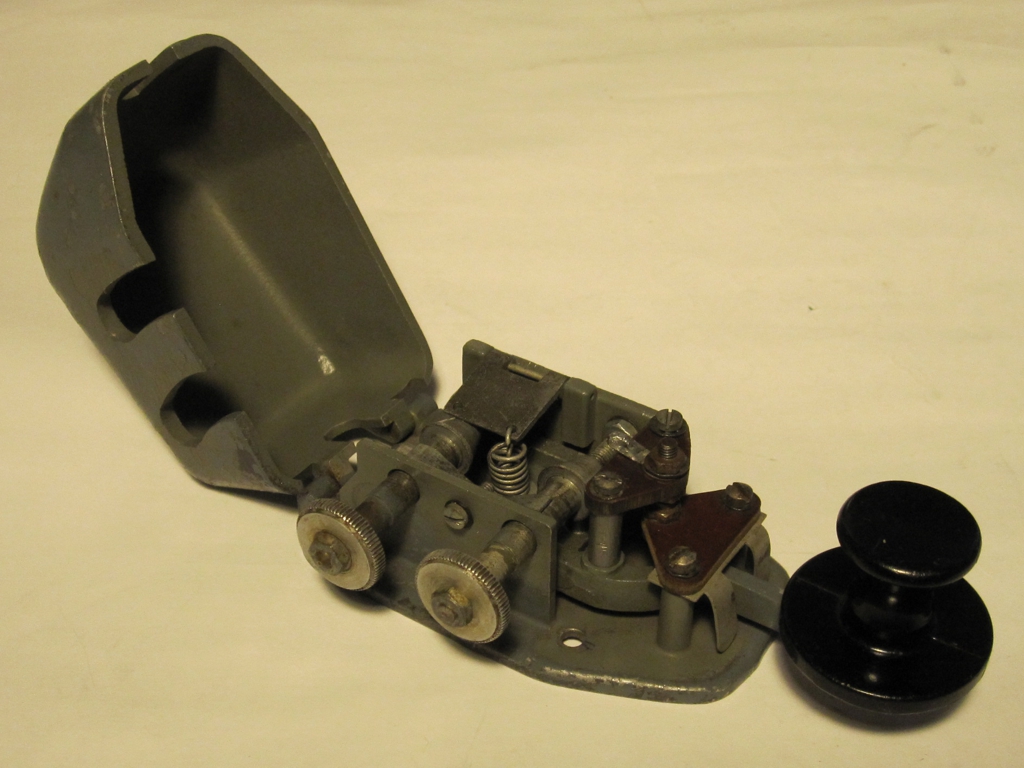 K94. A second French SARAM-key, version 2. Made during or after WW2, this key was part of a bomber radio set E/R or 3.11 produced by BRONZAVIA. Also used in commercial aricrafts from 1955 on. See K93 and K138 below. All SARAM's have an ingenious conical adjuster system both for spring tension and contact gap (the two adjusters left).
K94. A second French SARAM-key, version 2. Made during or after WW2, this key was part of a bomber radio set E/R or 3.11 produced by BRONZAVIA. Also used in commercial aricrafts from 1955 on. See K93 and K138 below. All SARAM's have an ingenious conical adjuster system both for spring tension and contact gap (the two adjusters left).
More information in English here.
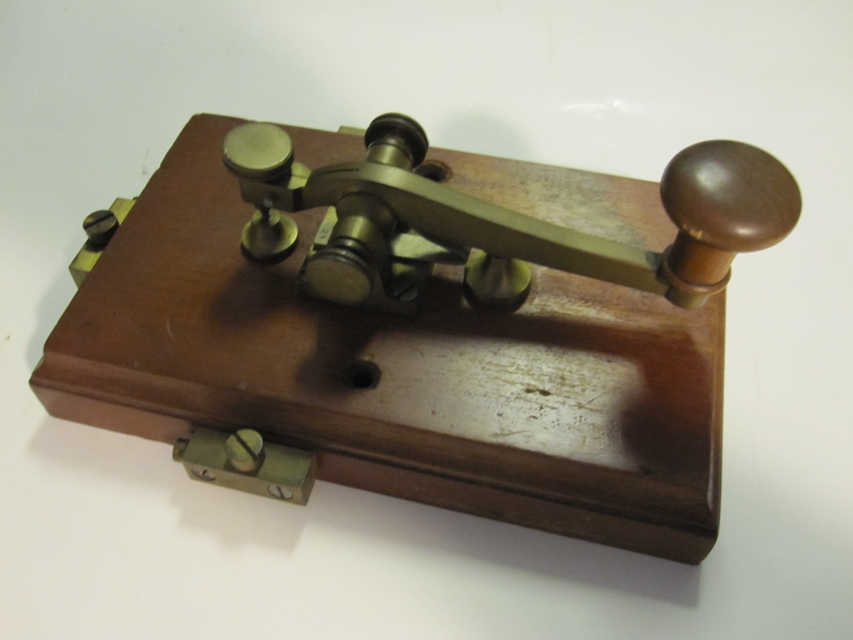 K119. Austrian camelback from the period (1867...1918) of Dual Monarchy in Austria/Hungary. Wooden base, ca. 17 x 10 cm. All parts, including the return spring, are marked with number "24". No makers' mark. Possibly made by Kapsch & Söhne. Other key makers were Deckert & Homolka, Hekaphon, Jacobi & Co. Vintage about 1880. Tnx info OM Stan, SP6JOE.
K119. Austrian camelback from the period (1867...1918) of Dual Monarchy in Austria/Hungary. Wooden base, ca. 17 x 10 cm. All parts, including the return spring, are marked with number "24". No makers' mark. Possibly made by Kapsch & Söhne. Other key makers were Deckert & Homolka, Hekaphon, Jacobi & Co. Vintage about 1880. Tnx info OM Stan, SP6JOE.
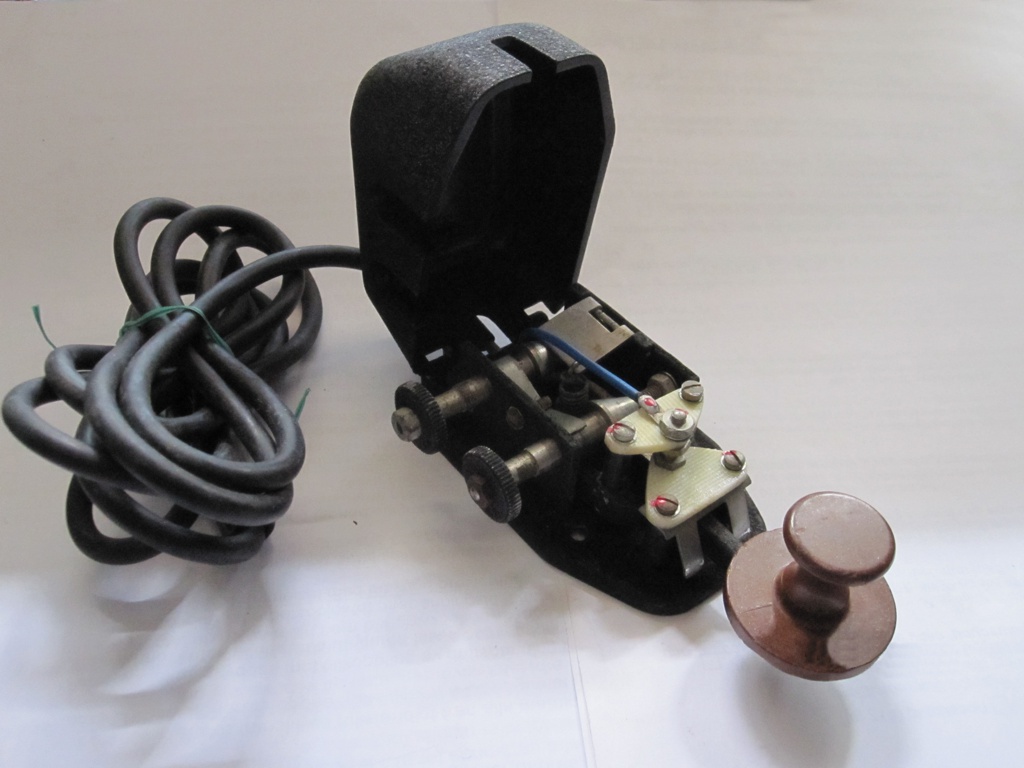 K138. My third French SARAM-key, version 3. The construction is simlar to the version 2 (see K94.) but this has satin black wrinkle paint. Released in the 1960's, this key was also used in several French airplanes and jetliners. For more details, see K93 and K94 above.
K138. My third French SARAM-key, version 3. The construction is simlar to the version 2 (see K94.) but this has satin black wrinkle paint. Released in the 1960's, this key was also used in several French airplanes and jetliners. For more details, see K93 and K94 above.
[.jpg) ](keys/Saram-Africa %28M%29.jpg)K154. A French SARAM version 1, in the livery of the French Africa Corps (sand beige). A French key, designed by Société Anonyme Radioélectrique Aéronautique et Marine about 1938. See also K93.
](keys/Saram-Africa %28M%29.jpg)K154. A French SARAM version 1, in the livery of the French Africa Corps (sand beige). A French key, designed by Société Anonyme Radioélectrique Aéronautique et Marine about 1938. See also K93.
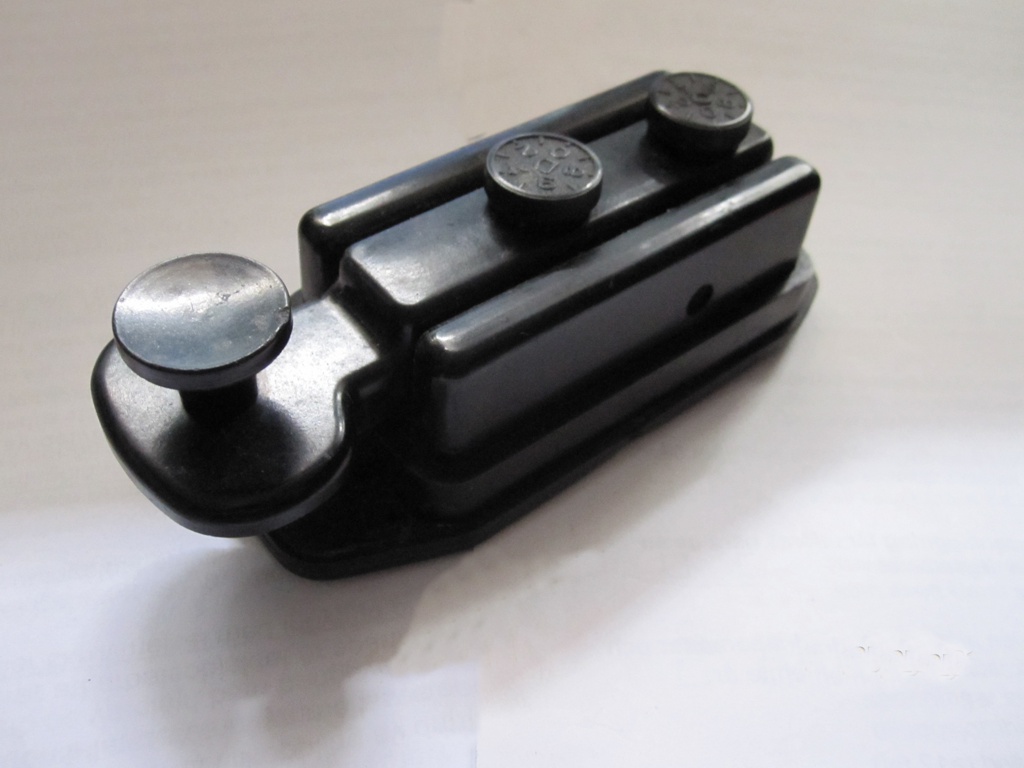 K139. This is a French Dyna Manitone. type 29414T. It was the last key produced by Dyna, marketed around 1954, still for sale in 1980's. There were several versions, w or w/o cover, simple or double circuits etc. Another version (29416T) was used in the Caravelle jetliner, and another model (29417T/29418T) with interference filters was used by the French Navy. Dyna ceased operations in 1989.
K139. This is a French Dyna Manitone. type 29414T. It was the last key produced by Dyna, marketed around 1954, still for sale in 1980's. There were several versions, w or w/o cover, simple or double circuits etc. Another version (29416T) was used in the Caravelle jetliner, and another model (29417T/29418T) with interference filters was used by the French Navy. Dyna ceased operations in 1989.
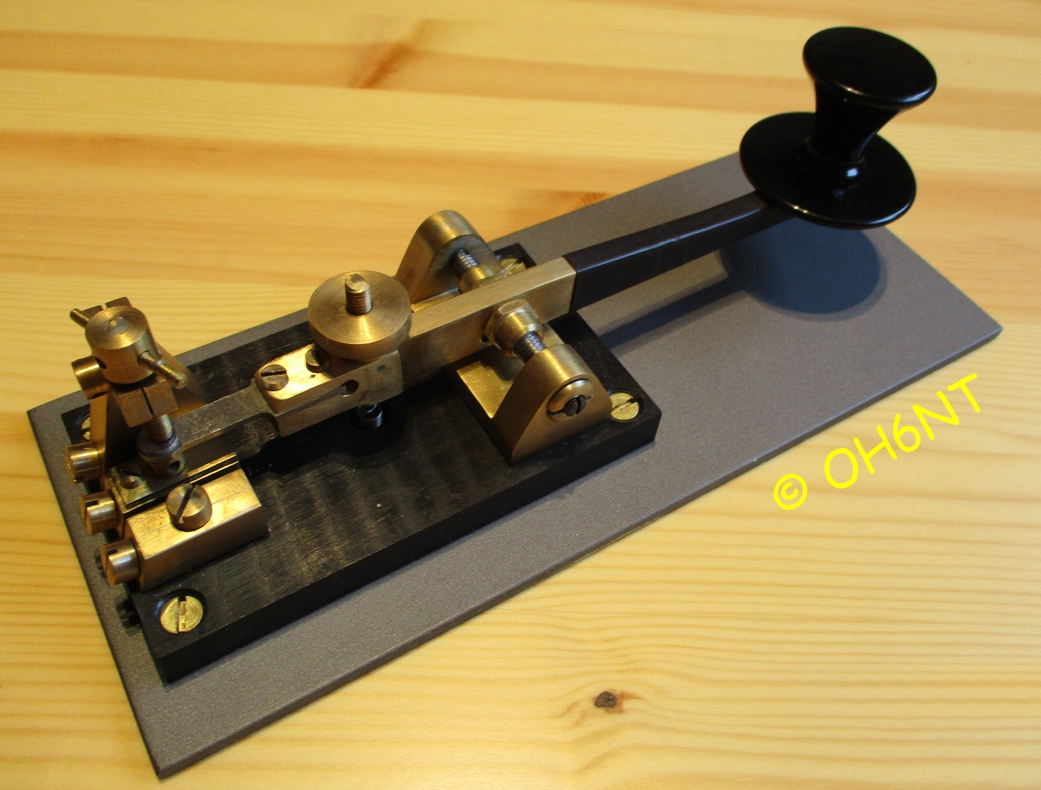 K155. This is a very well built replica of the Marconi PS-213 (see K150 in the British section), made by Patrick, ON6XS, in Belgium. It feels incredible, very tight bearings and firm keying, and lots of adjustment room on the spring to get the dsired stiffness.
K155. This is a very well built replica of the Marconi PS-213 (see K150 in the British section), made by Patrick, ON6XS, in Belgium. It feels incredible, very tight bearings and firm keying, and lots of adjustment room on the spring to get the dsired stiffness.
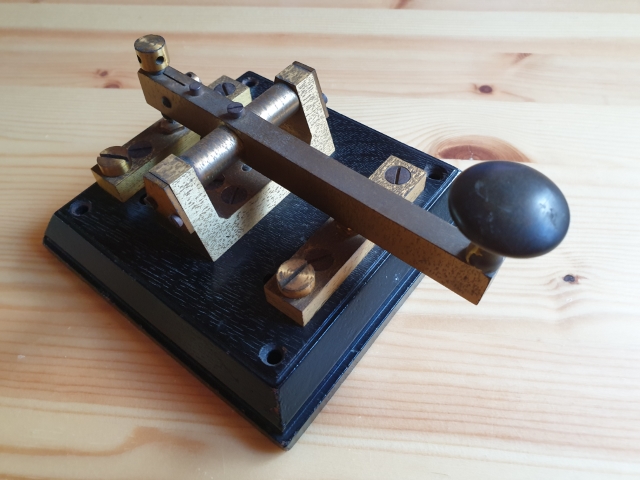 K163. Dutch PTT key from the estate sale of the Dutch Radio Amateur Museum. Previous owner Frans Driesens (SK). No makers' marks, just a number "7" stamped on all parts, so this key was probably made by hand in a batch of keys. Era: About 1900:s.
K163. Dutch PTT key from the estate sale of the Dutch Radio Amateur Museum. Previous owner Frans Driesens (SK). No makers' marks, just a number "7" stamped on all parts, so this key was probably made by hand in a batch of keys. Era: About 1900:s.
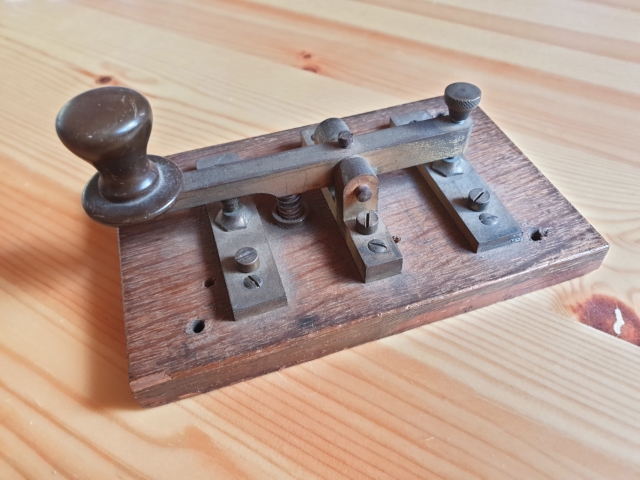 K166. Presumably a Dutch key from the estate sale of the Dutch Radio Amateur Museum of Frans Driesens (SK). No makers' marks on this brass key. More information needed!
K166. Presumably a Dutch key from the estate sale of the Dutch Radio Amateur Museum of Frans Driesens (SK). No makers' marks on this brass key. More information needed!
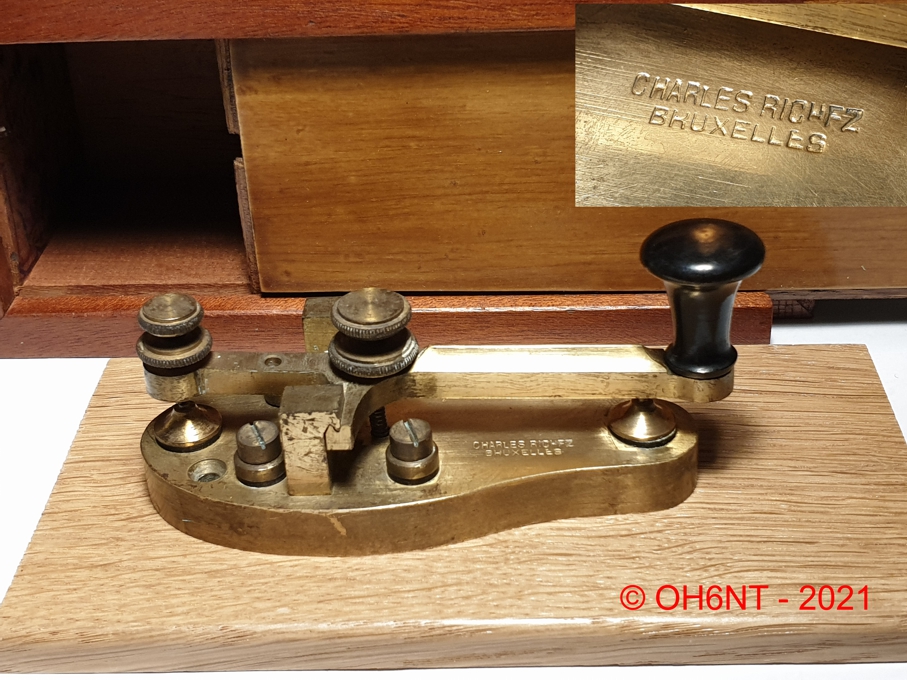 K172. A Belgian Charles Richez key from Bruxelles, Belgium. Used by The Belgian Telegraph offices about 1890. Also called the Victor key. This key has a special V-pivot system, only found in a few keys. In excellent shape. Was delivered in a nice mahogany box. I mounted it on an oak base.
K172. A Belgian Charles Richez key from Bruxelles, Belgium. Used by The Belgian Telegraph offices about 1890. Also called the Victor key. This key has a special V-pivot system, only found in a few keys. In excellent shape. Was delivered in a nice mahogany box. I mounted it on an oak base.
Not procured yet.
Not procured yet.
Bugs (semi-automatic) keys
[](keys/IMG%5F0330 %28Small%29.JPG)B1. Vibroplex Original Deluxe, retro-fitted with the "Bugnapper" speed control by WB9LPU. Serial# 242628. Mfd 1965 according to dating table. Slow speed testing video here! The Bugnapper is really incredible! You can slow the key down to abt 10 WPM just by rotating a little knob! I have got a carrying box for this key now, and an original Vibroplex wedge connecor!
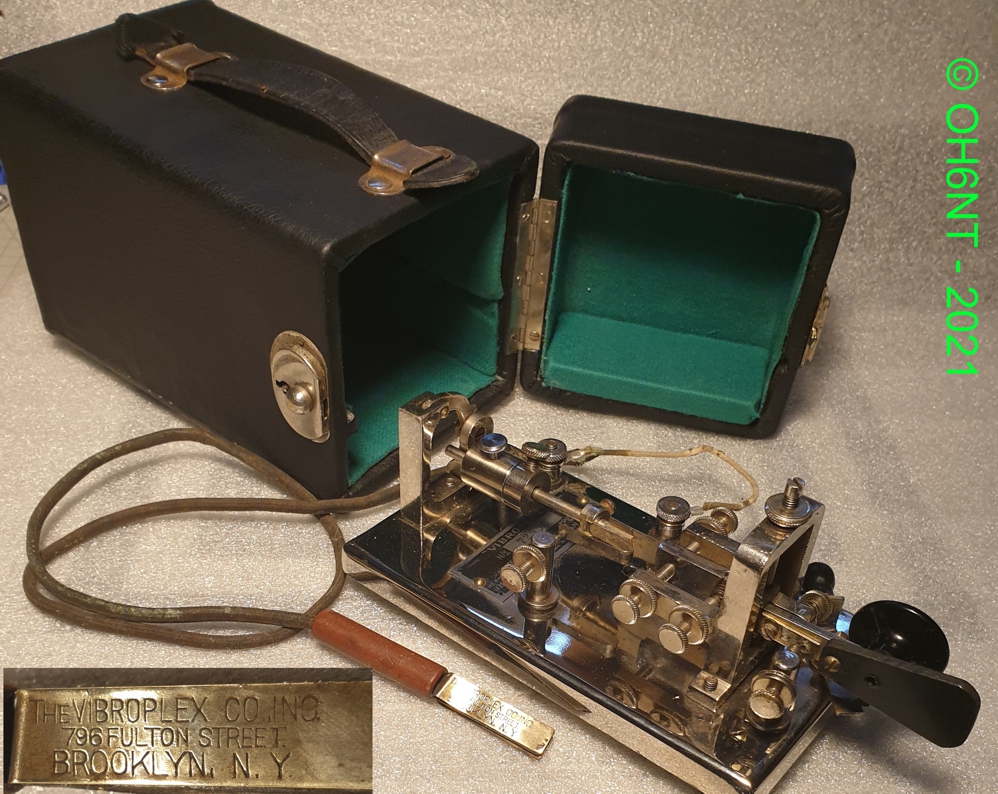 B2 . Nickel plated Vibroplex Standard 1921, with black ID-plate,serial# 72908, including transport case and wedge connector. This key was used in the US for sending sports results (baseball) to a major newspaper. That info is from the previous owner, who got it from the son of the first owner. I'm the 4th owner of this key. First owner was quite wealthy, a nickel plated Vibroplex + case in early 20s was not cheap.
B2 . Nickel plated Vibroplex Standard 1921, with black ID-plate,serial# 72908, including transport case and wedge connector. This key was used in the US for sending sports results (baseball) to a major newspaper. That info is from the previous owner, who got it from the son of the first owner. I'm the 4th owner of this key. First owner was quite wealthy, a nickel plated Vibroplex + case in early 20s was not cheap.
Case was upholstered by Verhoomo Häggström in Jakobstad, Finland in 2021.
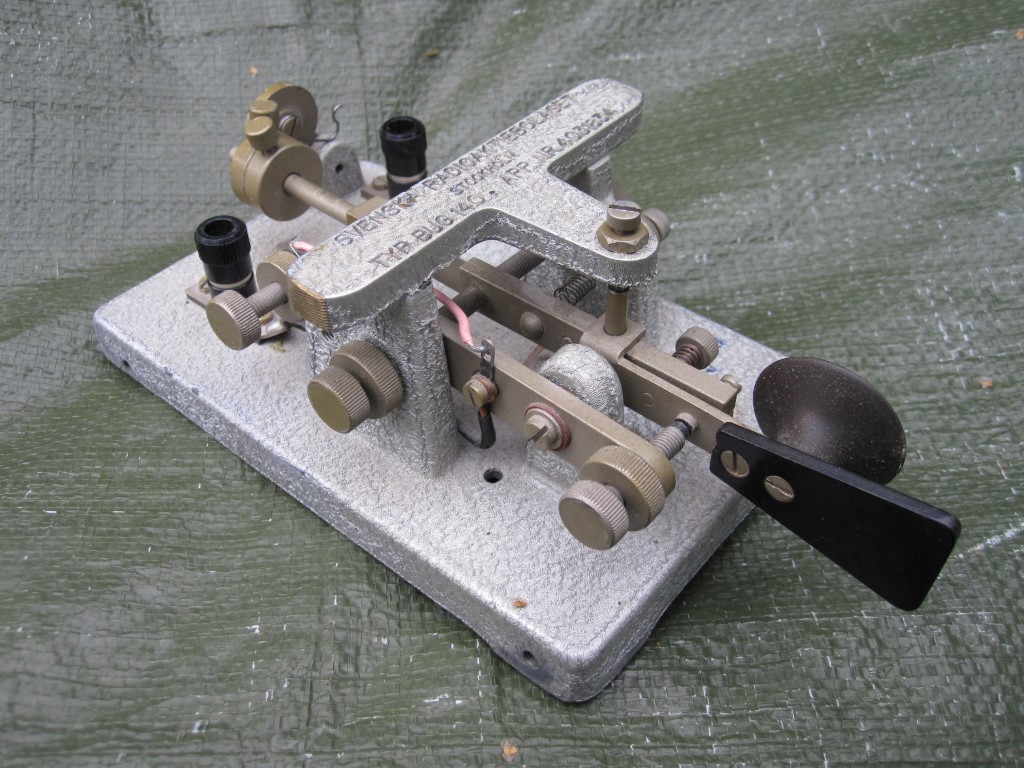 A Swedish Bug 140 made by SRA. I don't own this key anymore. Picture left for reference.
A Swedish Bug 140 made by SRA. I don't own this key anymore. Picture left for reference.
[](keys/Lionel-J36 %28Medium%29.JPG)B4. Lionel J-36 bug, now fully restored, fully working. Some parts are new, from Vibroplex equivalent. Label is a reproduction one. This key was modified to a paddle when I got it, lots of missing parts.
B5. Hi-Mound BK-100. Japanese semi-automatic bug made by Dentsu Seiki 1953-68. Also sold under several other brands (Skillman, Monarch, Jelectro, Eagle & Swallow etc). This one is in especially good shape, no cracks in the lid etc.
****Speed-X type 510 by Les Logan.
I don't own this key anymore. Picture left for reference.
.jpg) B7. This is a 1938B McElroy Standard bug. I tuned it to working order; it is not completely original. It has home made fingerpieces, a "hot bar" from the left terminal, and so on. But it works nicely, even if it's rough!
B7. This is a 1938B McElroy Standard bug. I tuned it to working order; it is not completely original. It has home made fingerpieces, a "hot bar" from the left terminal, and so on. But it works nicely, even if it's rough!
[See the Mac key story and numbering here! (pdf) ](keydocs/McELROY MAC-keys.pdf) This list is a copy of the list kept by Tom French, W1IMQ (SK).
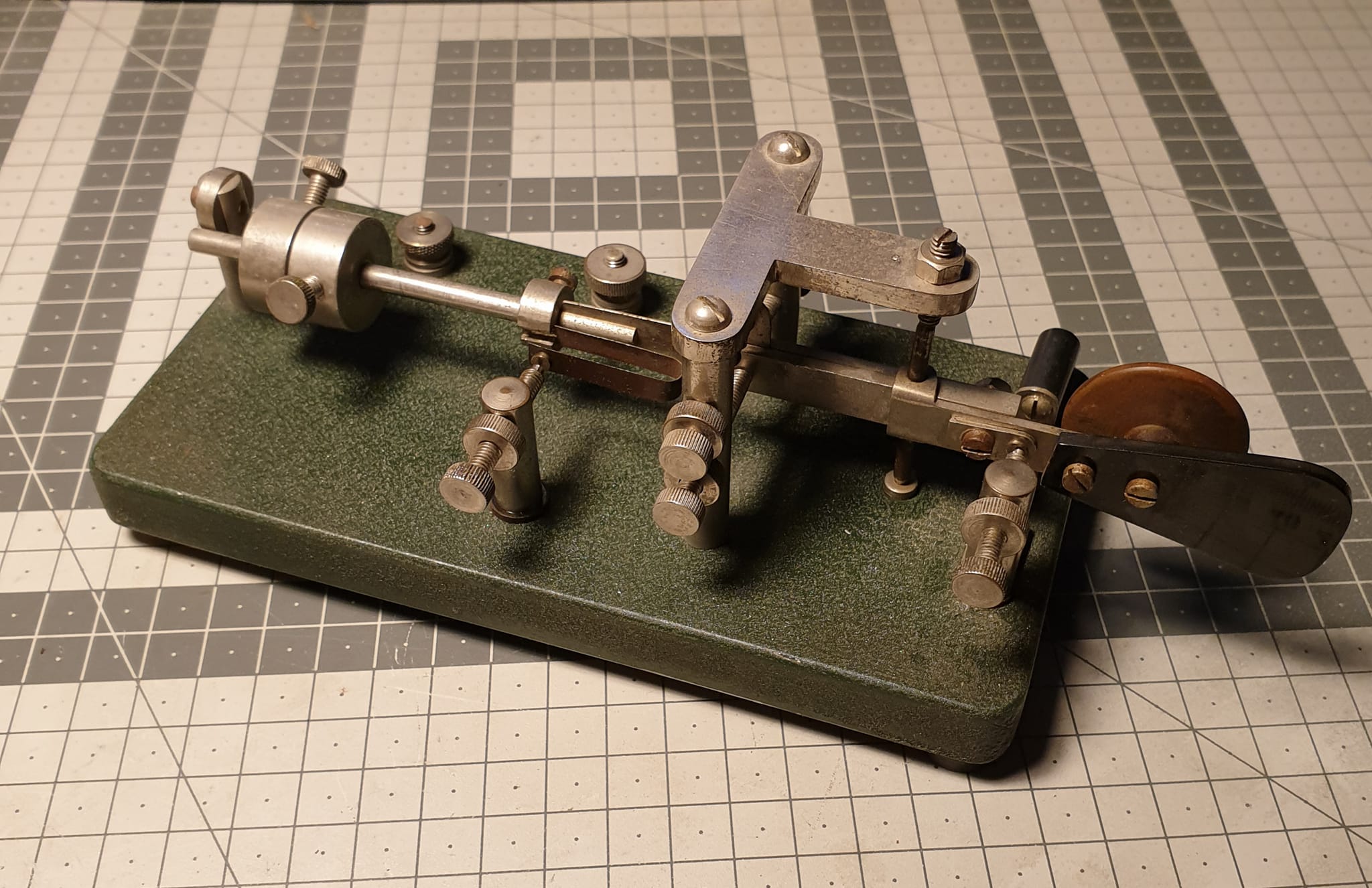 B8. The Swedish "Harlösa" bug, made by craftsman Sture Jönsson SM7XY right after WW2 (1946-1949), is back in my stable again! Estimated number of keys he made was 100 to 200. One of the connection nuts is replaced, otherwise in original, good working order. More information can be found on IZ0KRC Claudio's site!
B8. The Swedish "Harlösa" bug, made by craftsman Sture Jönsson SM7XY right after WW2 (1946-1949), is back in my stable again! Estimated number of keys he made was 100 to 200. One of the connection nuts is replaced, otherwise in original, good working order. More information can be found on IZ0KRC Claudio's site!
B9. A rare Eddystone type S689 bug, serial no. DZ1228, made 1948 in Great Britain. Serial number indicates that this key is from the first batch of 250 keys. Later a second batch was made. Only about 350 made! Cast aluminium, somewhat chipped black wrinkle paint. More data in Morsum Magnificat #13 Autumn 1989 (pdf excerpt here) and morsemad.com
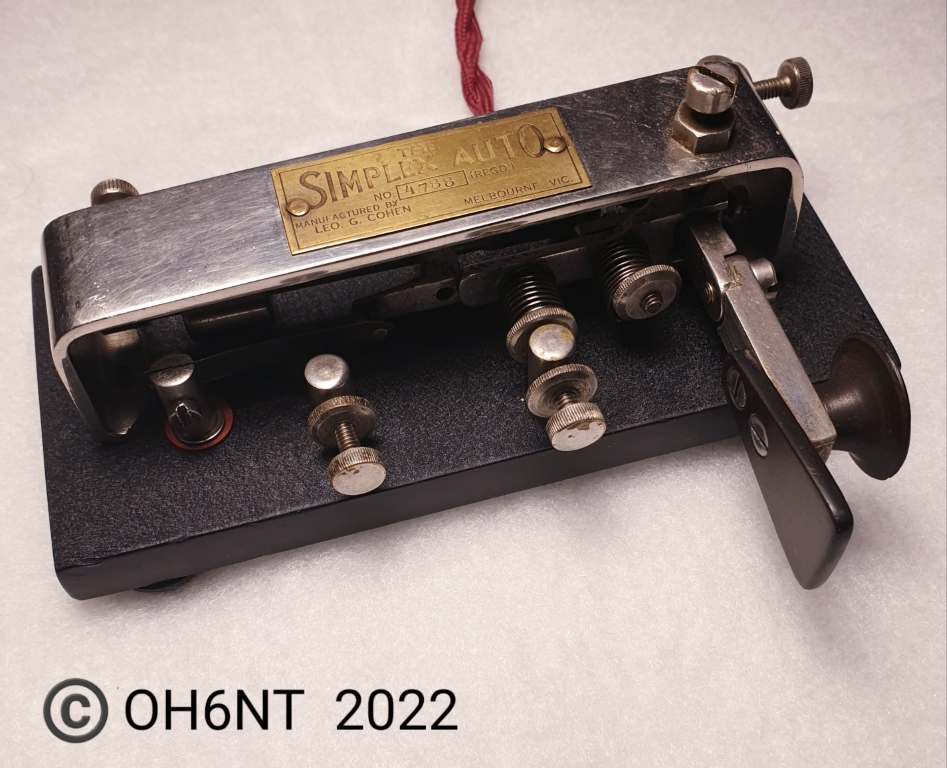 B10. A Simplex Auto, serial# 4788. Manufactured by Leopold G. Cohen in Melbourne, Australia before 1939. In working order. Right-angle semi-automatic key, called "Jigger" down under. This is the 4th version, made between 1934 and 1939, when the makers' name was dropped from the label (up to serial# 5xxx). 11 models known. See article by Ron McMullen in Morsum Mangnificat 88/2004.
B10. A Simplex Auto, serial# 4788. Manufactured by Leopold G. Cohen in Melbourne, Australia before 1939. In working order. Right-angle semi-automatic key, called "Jigger" down under. This is the 4th version, made between 1934 and 1939, when the makers' name was dropped from the label (up to serial# 5xxx). 11 models known. See article by Ron McMullen in Morsum Mangnificat 88/2004.
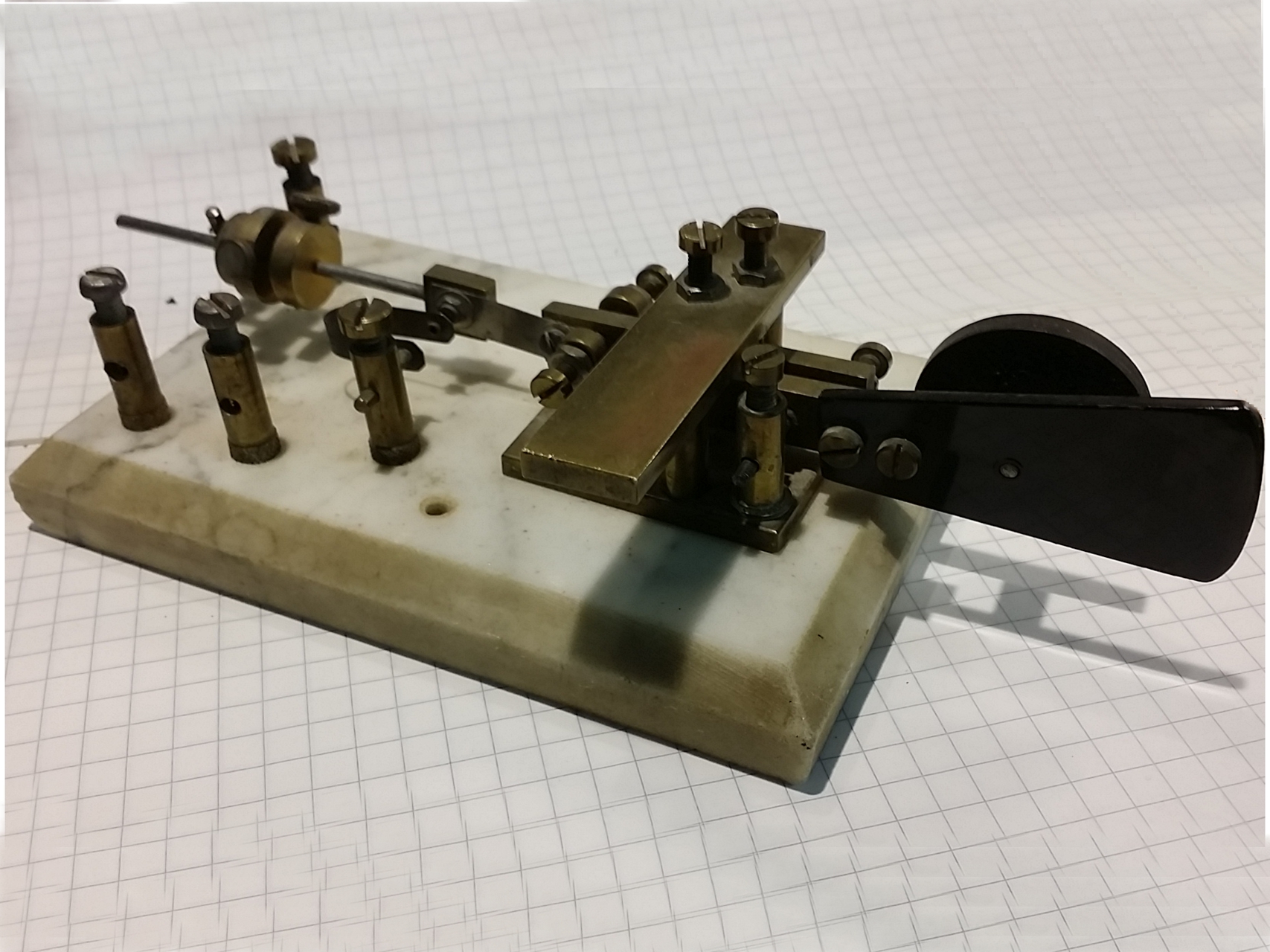 B11. Home built bug by (SK) OH6NN, Helmer Österblad in Vasa, probably in the late fifties/early sixties.This bug has the same feature as a Mac Standard bug, it can be used as a manual key if placed in an upright position. The damper system is not complete, and needs attention. Heavy marble base.
B11. Home built bug by (SK) OH6NN, Helmer Österblad in Vasa, probably in the late fifties/early sixties.This bug has the same feature as a Mac Standard bug, it can be used as a manual key if placed in an upright position. The damper system is not complete, and needs attention. Heavy marble base.
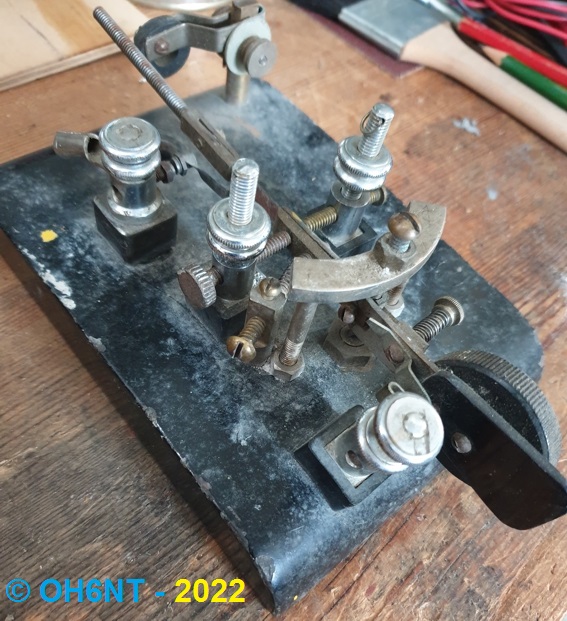 B12. Probably home built bug by unknown maker, found at SK OH6NR:s estate. Heavy cast iron base, probably repurposed. Working, but rough condition, no weights on vibrator arm.
B12. Probably home built bug by unknown maker, found at SK OH6NR:s estate. Heavy cast iron base, probably repurposed. Working, but rough condition, no weights on vibrator arm.
Cooties or sideswipers ("knifes")
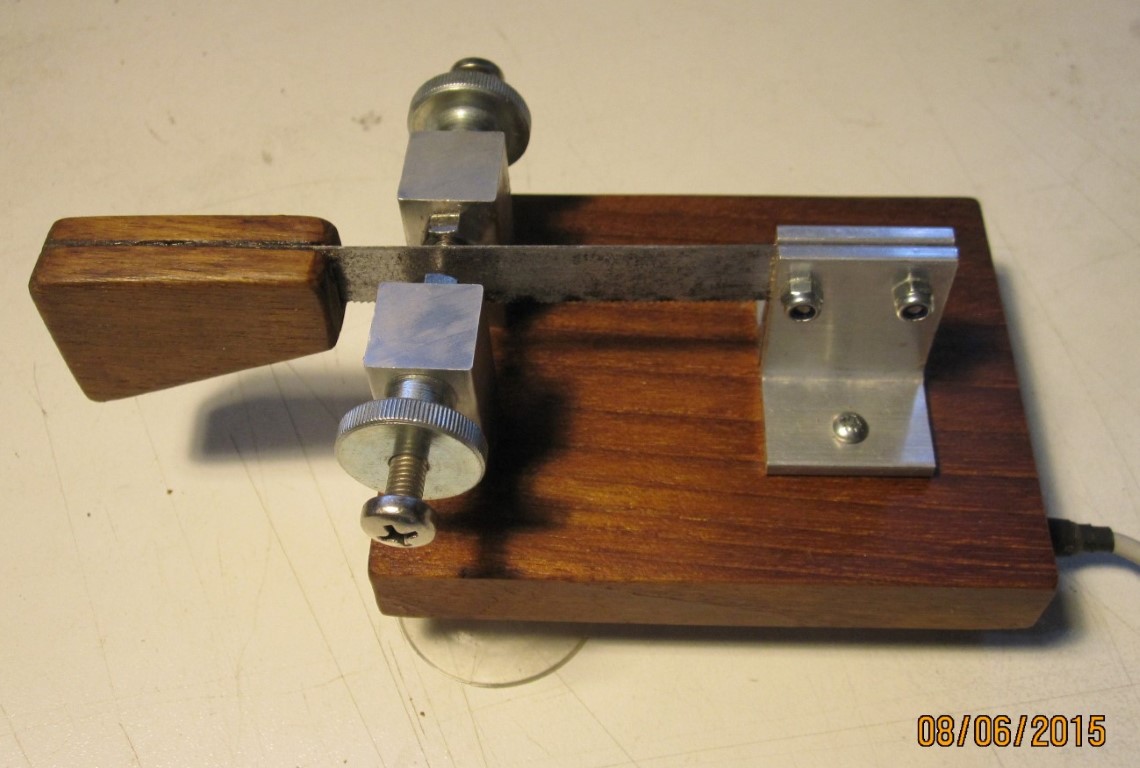 C1. Swedish "Kungsimport" sideswiper (cootie), got as a kit from the maker Håkan Svärd (professional operator at Gothenburg Radio, SAG). Probably the last one made. Totally about 200 was made and about 50 exported. Here an USA sales ad for the key.
C1. Swedish "Kungsimport" sideswiper (cootie), got as a kit from the maker Håkan Svärd (professional operator at Gothenburg Radio, SAG). Probably the last one made. Totally about 200 was made and about 50 exported. Here an USA sales ad for the key.
[](keys/IMG%5F0485 %28Medium%29.JPG)C2. A rare bakelite sidesweeper from a Russian merchant vessel visiting the swedish port of Örnsköldsvik. Excellent condition.
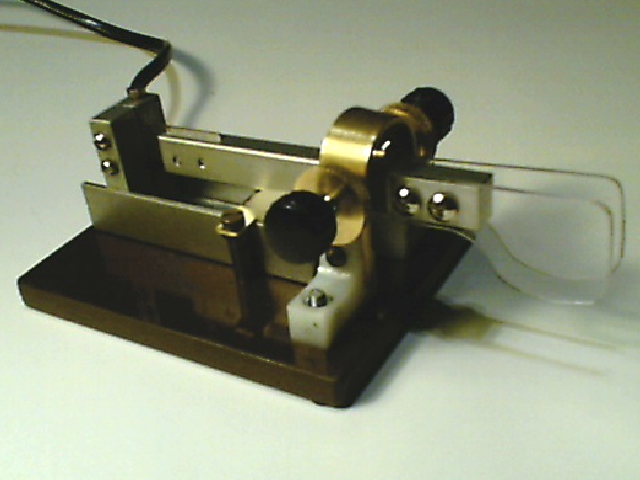 C3. My own attempt to make a "cootie". Some reposessed kitchen utilities and computer parts. Bending, drilling, grinding, threading, filing... And there it is! Smooth operation, bronze contacts. I'm pleased. :-) Testing video here!
C3. My own attempt to make a "cootie". Some reposessed kitchen utilities and computer parts. Bending, drilling, grinding, threading, filing... And there it is! Smooth operation, bronze contacts. I'm pleased. :-) Testing video here!
C4. Rare American Tele-Key knife or sideswiper. Moulded iron base, all original fittings. Sold during 1930's and 40's. See 1938 Ad in QST. Some previous user has tuned the stiffness of the knife by drilling holes in it. OM Lynn, N7CFO tells: The Legend, Don W6AM also had one of these! OM Joe Pontek, K8JP tells: It might be made by Electro-Set Co. about 1915 (later Newman-Stern Co.) in Cleveland, Ohio, originally the American Tele-key Co. or Electro-Set Co.
C5. This is a nice sideswiper machined from brass, and mounted on a 6 mm thick prespane sheet (paper reinforced Bakelite). It needs mounting on a heavy base in order to keep it in place during keying. Maker unknown (from Great Britain). Any info would be appreciated!
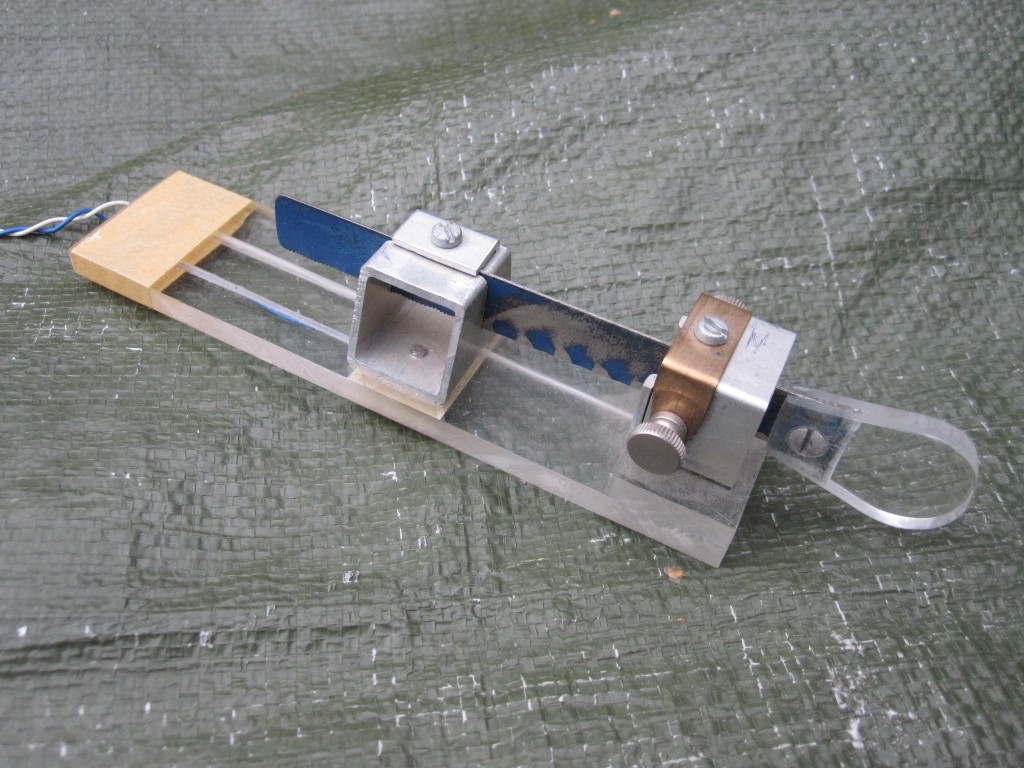 C6. A home made cootie (as they often are) by OT OH6OQ Keijo (SK). Made of plexiglass, aluminium tubing, and a hacksaw blade. Bronze contacts. Nice action, but needs mounting on heavy base to keep still while working.
C6. A home made cootie (as they often are) by OT OH6OQ Keijo (SK). Made of plexiglass, aluminium tubing, and a hacksaw blade. Bronze contacts. Nice action, but needs mounting on heavy base to keep still while working.
C7. Another home made cootie. This one seems to be made of some US telephone relay or such, and a kitchen knife. Works very well. Watch thetesting video on YouTube.
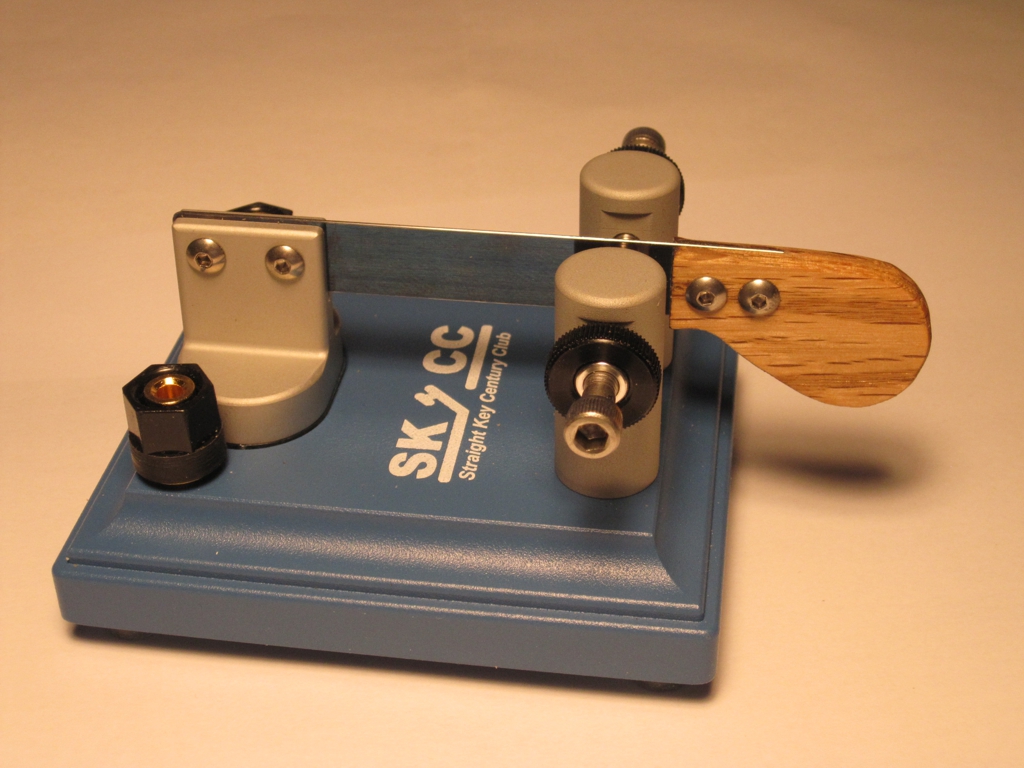 C8. SKCC Sideswiper model 2018. Very nice cootie, smooth action and resembling the Kungsbacka cootie C1, but much heavier. Expecting this to eventually become a Collector's item!
C8. SKCC Sideswiper model 2018. Very nice cootie, smooth action and resembling the Kungsbacka cootie C1, but much heavier. Expecting this to eventually become a Collector's item!
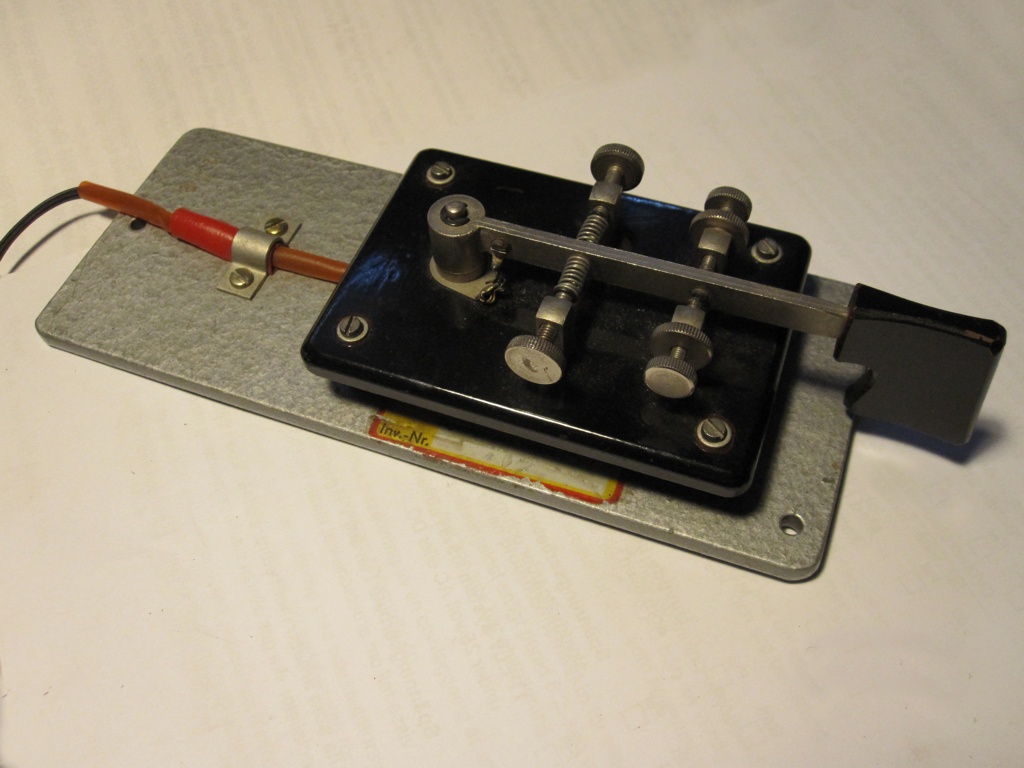 C9. The rare Jablonsky FME-32 sideswiper was used in German Democratic Republic (East Germany) for example at the coastal station Rügen Radio and in hundreds at the R/O training (Seefunkerausbildung). Used in the late 1970's in conjunction with FME 34M-N radio sets.
C9. The rare Jablonsky FME-32 sideswiper was used in German Democratic Republic (East Germany) for example at the coastal station Rügen Radio and in hundreds at the R/O training (Seefunkerausbildung). Used in the late 1970's in conjunction with FME 34M-N radio sets.
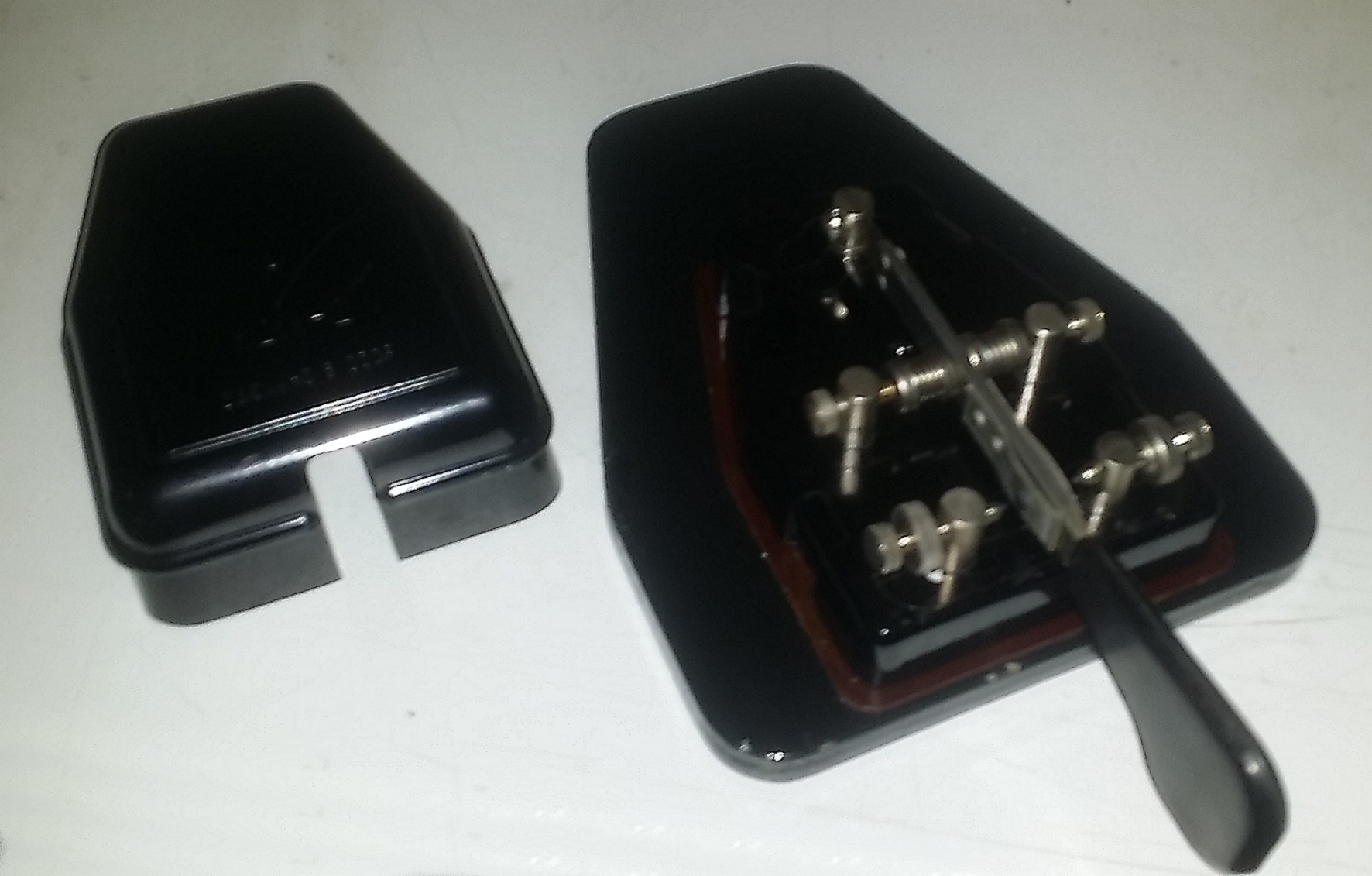 C10. A Russian KDM-2 (КДМ-2) sideswiper in near mint condition! No cracks or bends. Weight 1530 grams. These are rare, collector's items. Very good feel. Popular among Russian r/o:s on polar expeditions, fishing vessels etc. Used in the set of ship's radio stations "Yorsh-R" (Ёрш-Р) and others. Manufacturer: Experimental plant LMNIIP MMF, USSR. Successor to the KDM, which has an aluminium lid.
C10. A Russian KDM-2 (КДМ-2) sideswiper in near mint condition! No cracks or bends. Weight 1530 grams. These are rare, collector's items. Very good feel. Popular among Russian r/o:s on polar expeditions, fishing vessels etc. Used in the set of ship's radio stations "Yorsh-R" (Ёрш-Р) and others. Manufacturer: Experimental plant LMNIIP MMF, USSR. Successor to the KDM, which has an aluminium lid.
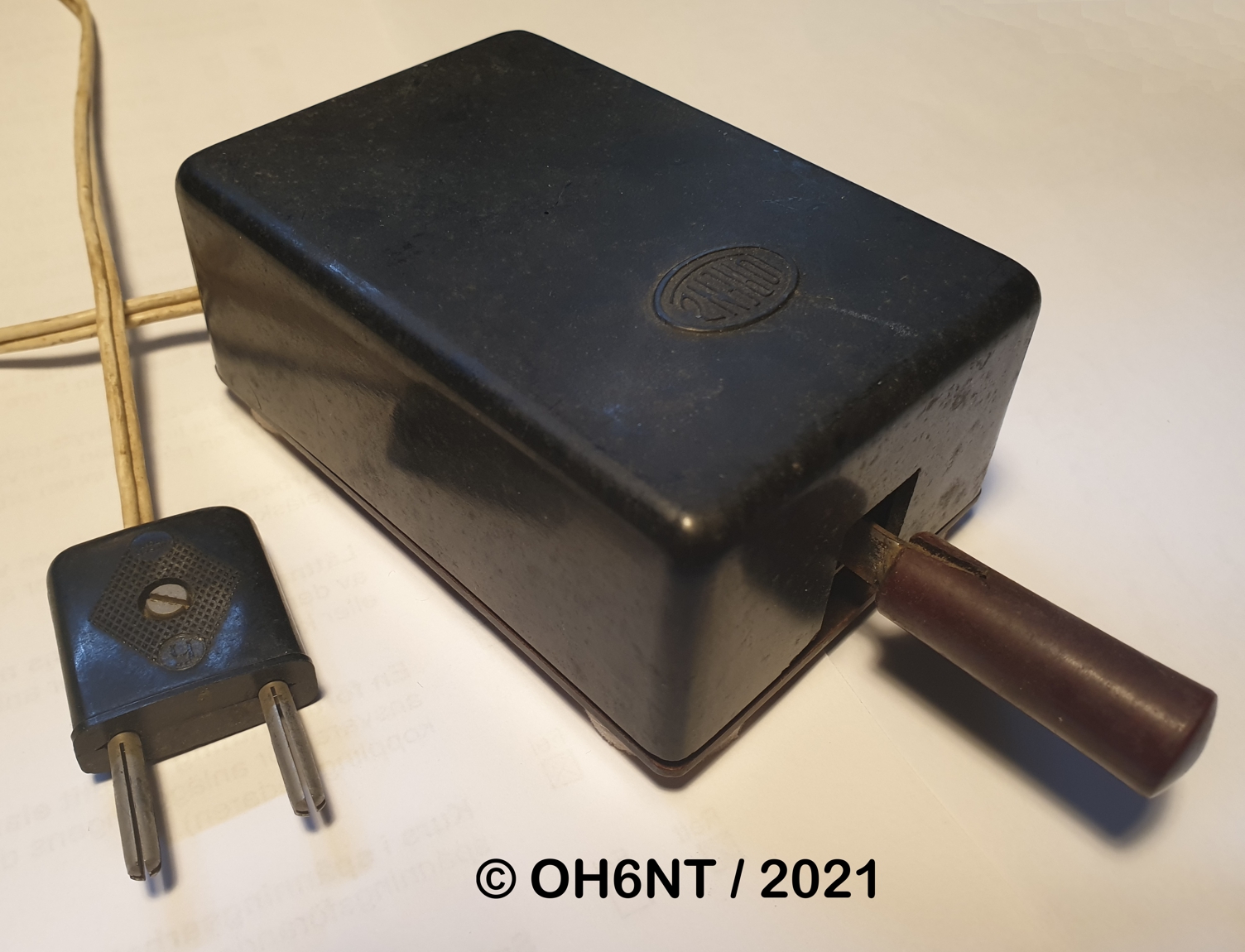 C11. A home made sideswiper from Germany, probably from the East side of the iron curtain. Enclosed in a casing by Lorenz. UW5SW Ruslan informs: This key is made from a Soviet TTY relay model "ТРМ" or similar. During Soviet time it was popular and very good for High Speed Telegraphy sports in the USSR.
C11. A home made sideswiper from Germany, probably from the East side of the iron curtain. Enclosed in a casing by Lorenz. UW5SW Ruslan informs: This key is made from a Soviet TTY relay model "ТРМ" or similar. During Soviet time it was popular and very good for High Speed Telegraphy sports in the USSR.
[%20(M).jpg) ](keys/Bunnell DSK %28replica%29 %28M%29.jpg)C12. My Bunnell DSK (Double Speed Key) replica, made by craftsman OT Simo, OH1BS for me during summer 2021. Labelled on the bottom with his call and year to avoid mistakes. Very fine work. I milled an oak base for it.
](keys/Bunnell DSK %28replica%29 %28M%29.jpg)C12. My Bunnell DSK (Double Speed Key) replica, made by craftsman OT Simo, OH1BS for me during summer 2021. Labelled on the bottom with his call and year to avoid mistakes. Very fine work. I milled an oak base for it.
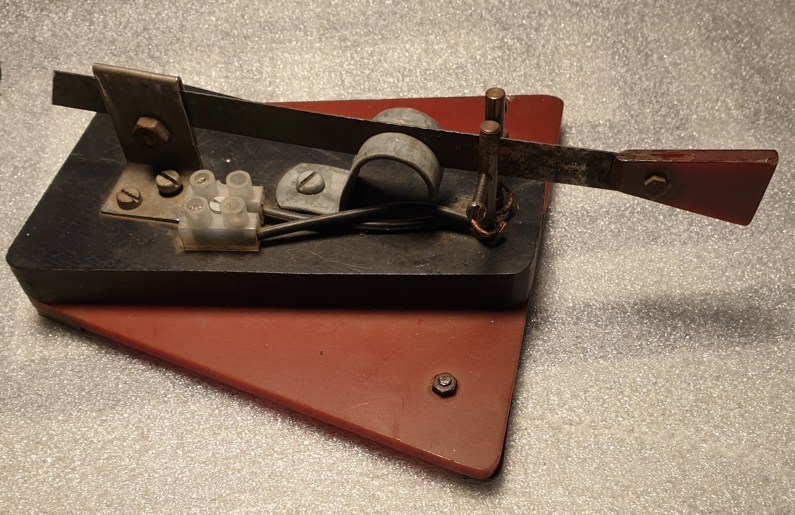 C13. A DIY sideswiper out of a hacksaw blade. Previous owners OH5SN and OH5VA, maker unknown.
C13. A DIY sideswiper out of a hacksaw blade. Previous owners OH5SN and OH5VA, maker unknown.
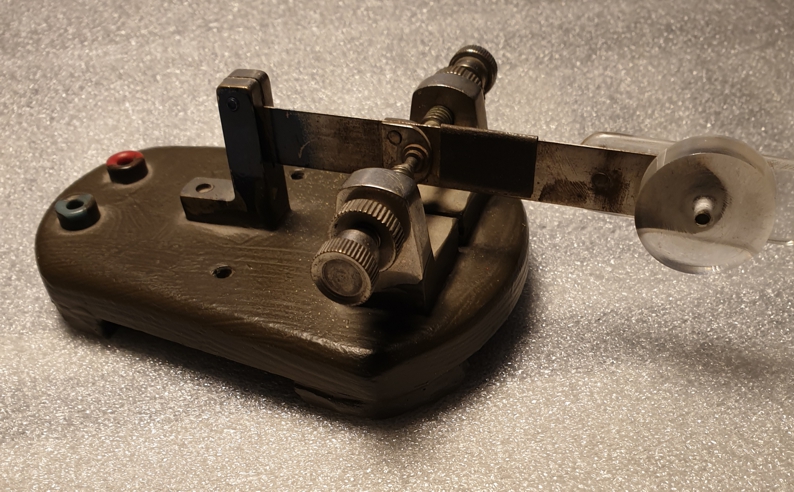 C14. Another Home made sideswiper. This has quite good mechanics, but have to be screwed to the table to keep still. Previous owner and probably the maker is OH5BD. Donation by OM Kari Syrjänen, OH5YW at the Kouvola Tube Radio museum.
C14. Another Home made sideswiper. This has quite good mechanics, but have to be screwed to the table to keep still. Previous owner and probably the maker is OH5BD. Donation by OM Kari Syrjänen, OH5YW at the Kouvola Tube Radio museum.
C15. Not procured yet.
Manipulators (keyer paddles)
[](/OH6NT/keys/IMG%5F0419 %28Small%29.JPG)M1. Bencher BY-2 chrome dual paddle. I use this at my home QTH.
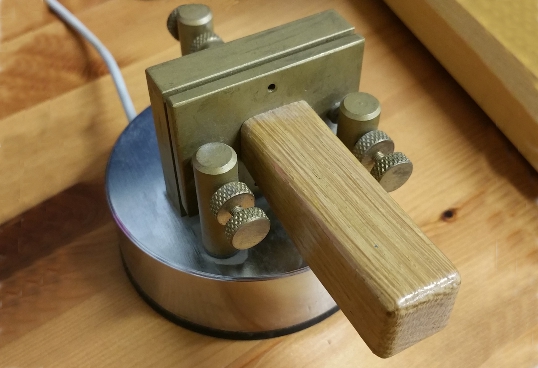 M2. Single paddle made by Finnish amateur OH3WZ Markku Harkamaa. These were sold in the 80's. Several of these are at large, one is at our club station.
M2. Single paddle made by Finnish amateur OH3WZ Markku Harkamaa. These were sold in the 80's. Several of these are at large, one is at our club station.
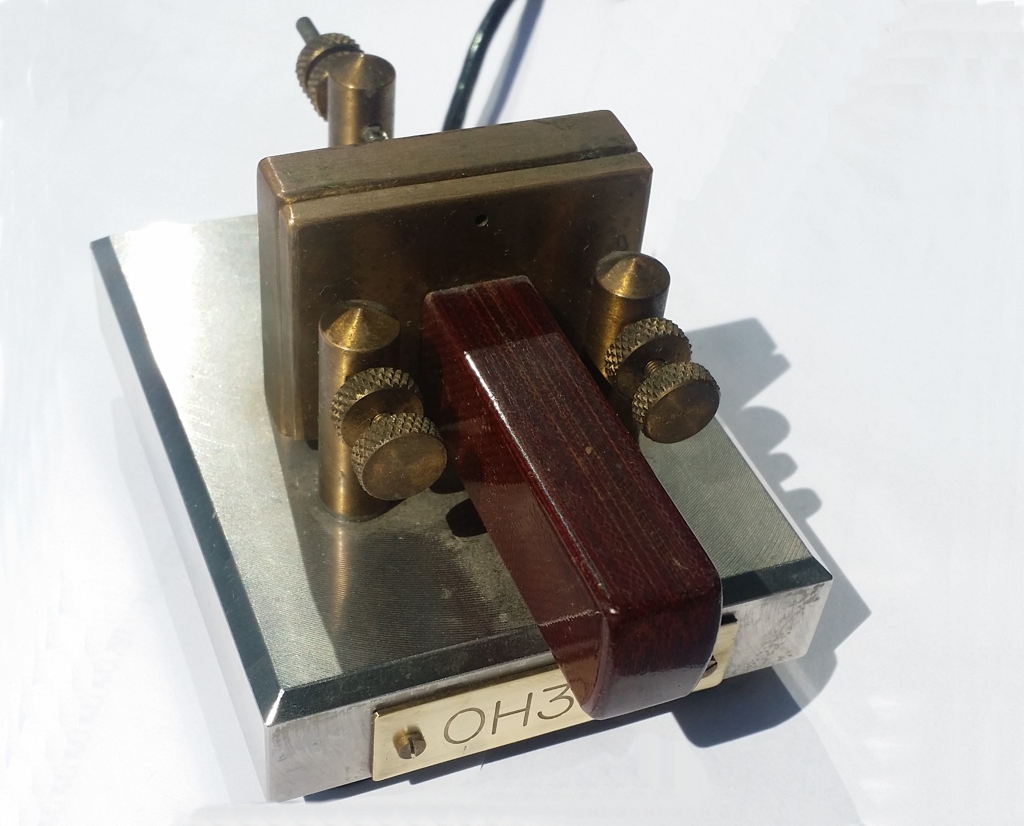 M3. Another single paddle by OH3WZ. Apparently this has been in his own use, it has his callsign (engraved brass plate) attached.
M3. Another single paddle by OH3WZ. Apparently this has been in his own use, it has his callsign (engraved brass plate) attached.
[.jpg) ](keys/M%5Fno4%5FBrown %28Small%29.jpg)M4. Brown Bros. Mach. Co, model BTL from St Louis, MO. Chrome and black. Labelled "Patented" at bottom. BBMC made these keys from 1964 to about 1974 according to The Vail Correspondent #2/1993.
](keys/M%5Fno4%5FBrown %28Small%29.jpg)M4. Brown Bros. Mach. Co, model BTL from St Louis, MO. Chrome and black. Labelled "Patented" at bottom. BBMC made these keys from 1964 to about 1974 according to The Vail Correspondent #2/1993.
M5. Paddle made by Olli OH4LRP from parts of an old telephone exchange. Very smooth and exact action, heavy base plate!
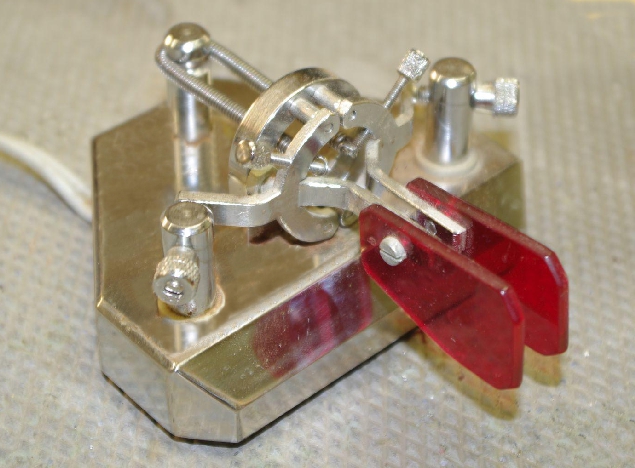 M6. Bencher style keyer manipulator probably made by OH7KI, Pekka (SK), who worked at the Abloy lock factory. From his estate sale, mediated by Vesa, OH7XI.
M6. Bencher style keyer manipulator probably made by OH7KI, Pekka (SK), who worked at the Abloy lock factory. From his estate sale, mediated by Vesa, OH7XI.
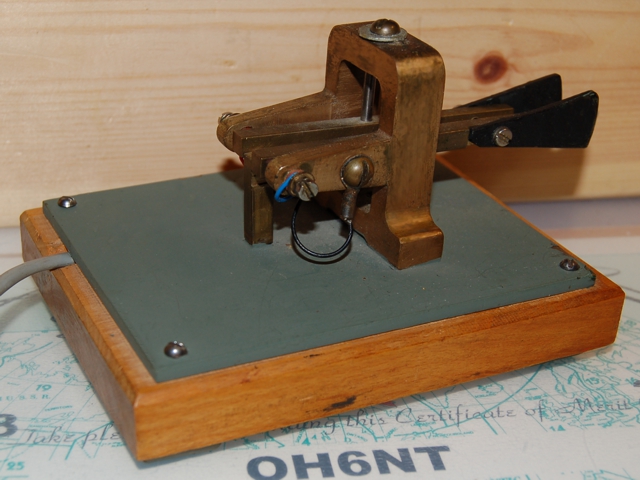 M7. Swedish home made spring action paddle, probably from telephone parts. Heavy brass, well made. From Sweden, previously owned by SM7JMA.
M7. Swedish home made spring action paddle, probably from telephone parts. Heavy brass, well made. From Sweden, previously owned by SM7JMA.
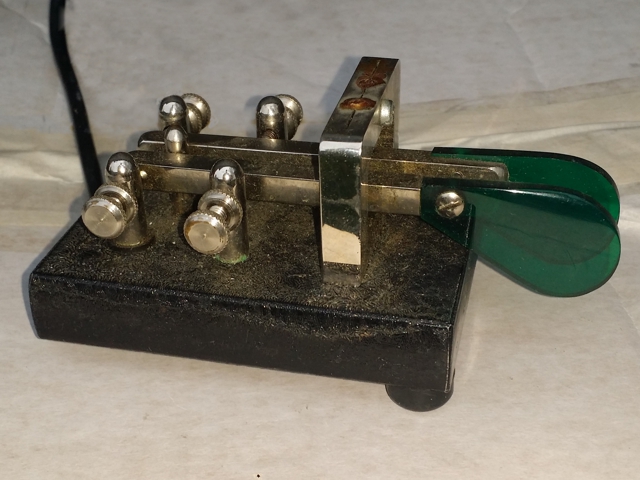 M8. This nice paddle is constructed by OH2BT Risto Tiilikainen, and made by blacksmith Reino Haapanen. Heavy base, black wrinkle paint. Very accurate push-spring mechanism. Sold together with, and belongs to keyer E5, the Golden Key GK1. Also known as "The Silver Key".
M8. This nice paddle is constructed by OH2BT Risto Tiilikainen, and made by blacksmith Reino Haapanen. Heavy base, black wrinkle paint. Very accurate push-spring mechanism. Sold together with, and belongs to keyer E5, the Golden Key GK1. Also known as "The Silver Key".
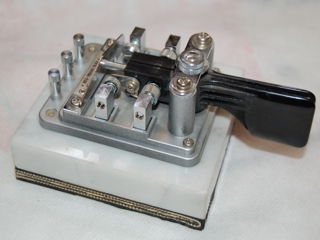 M9. Japanese HK -705 double paddle manipulator on heavy marble base, made by Hi-Mound HI-MOUND Electro Co. (Takatsuka). No dust cover included, they are sold separate.
M9. Japanese HK -705 double paddle manipulator on heavy marble base, made by Hi-Mound HI-MOUND Electro Co. (Takatsuka). No dust cover included, they are sold separate.
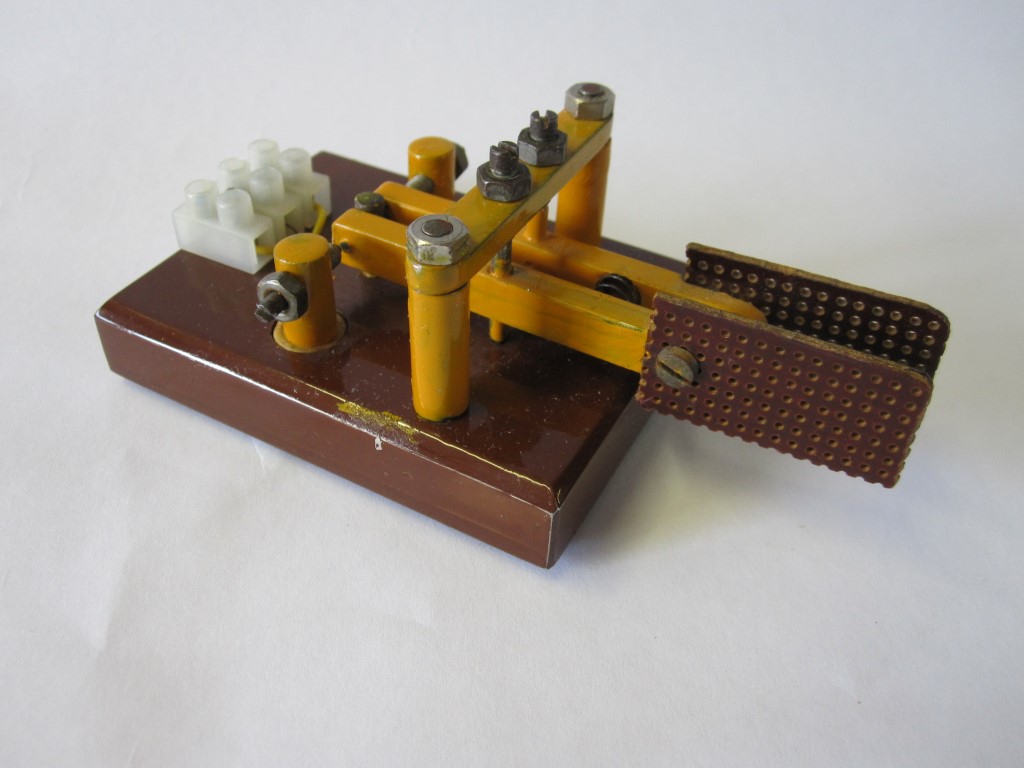 M10. Amateur DIY made small manipulator made 1967 by a ham in Helsinki, and donated by Kari, ex. OH2BHM.
M10. Amateur DIY made small manipulator made 1967 by a ham in Helsinki, and donated by Kari, ex. OH2BHM.
[](keys/IMG%5F0418 %28Small%29.JPG)M11. Vibroplex Iambic Standard paddle. Serial #53669 indicating mfg year 1986 according to dating table. From estate sale.
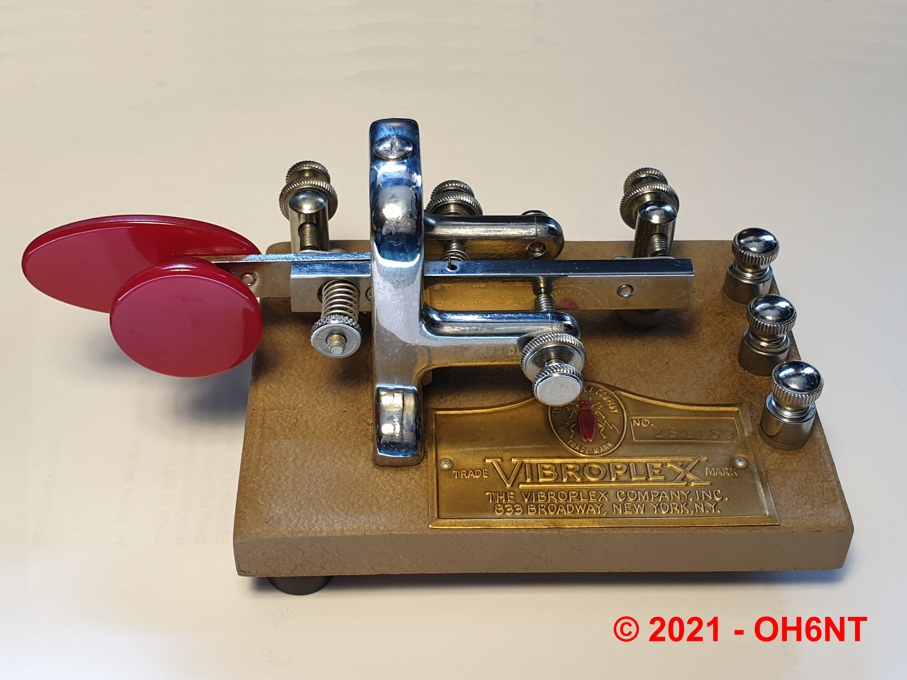 M12. Vibrokeyer Standard, single lever paddle, made by Vibroplex, s/n 261159. Produced 1969, base is sand (beige) wrinkle paint. Note the placement of the nameplate.
M12. Vibrokeyer Standard, single lever paddle, made by Vibroplex, s/n 261159. Produced 1969, base is sand (beige) wrinkle paint. Note the placement of the nameplate.
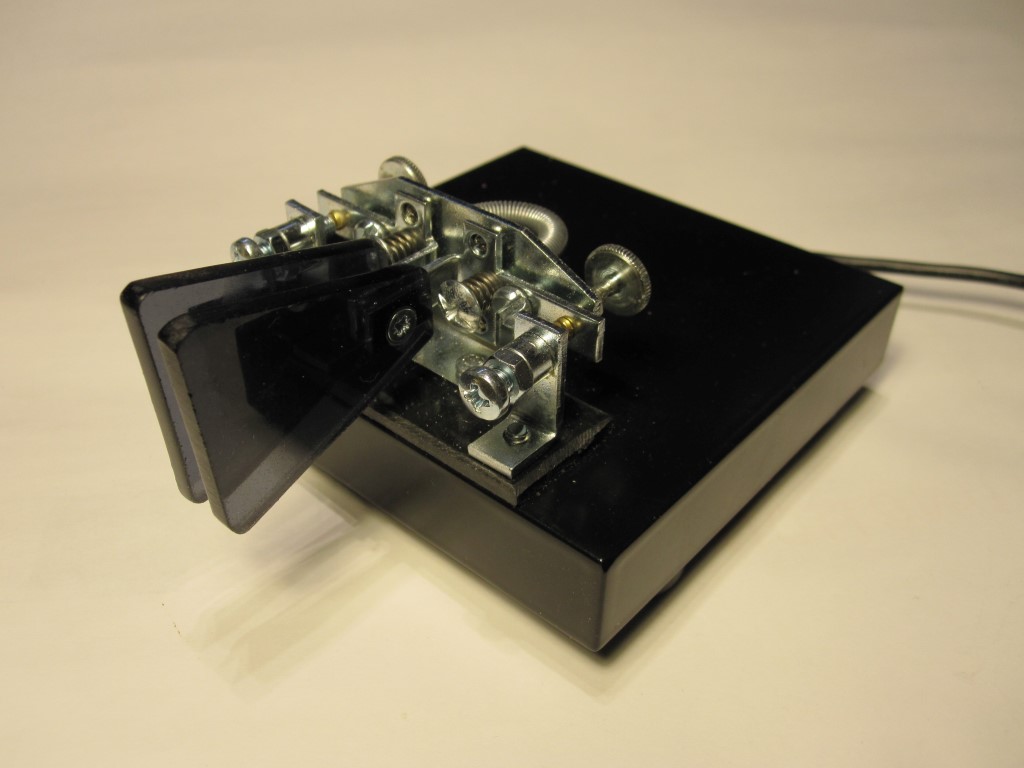 M13. KBX-380 paddle made by Tapio Hirvikoski, OH1KB, still in bussiness. He donated this to me when I provided him with some help.This key is deemed better than the Bencher BY by operators!
M13. KBX-380 paddle made by Tapio Hirvikoski, OH1KB, still in bussiness. He donated this to me when I provided him with some help.This key is deemed better than the Bencher BY by operators!
Here WB4RFQ is testing the key.
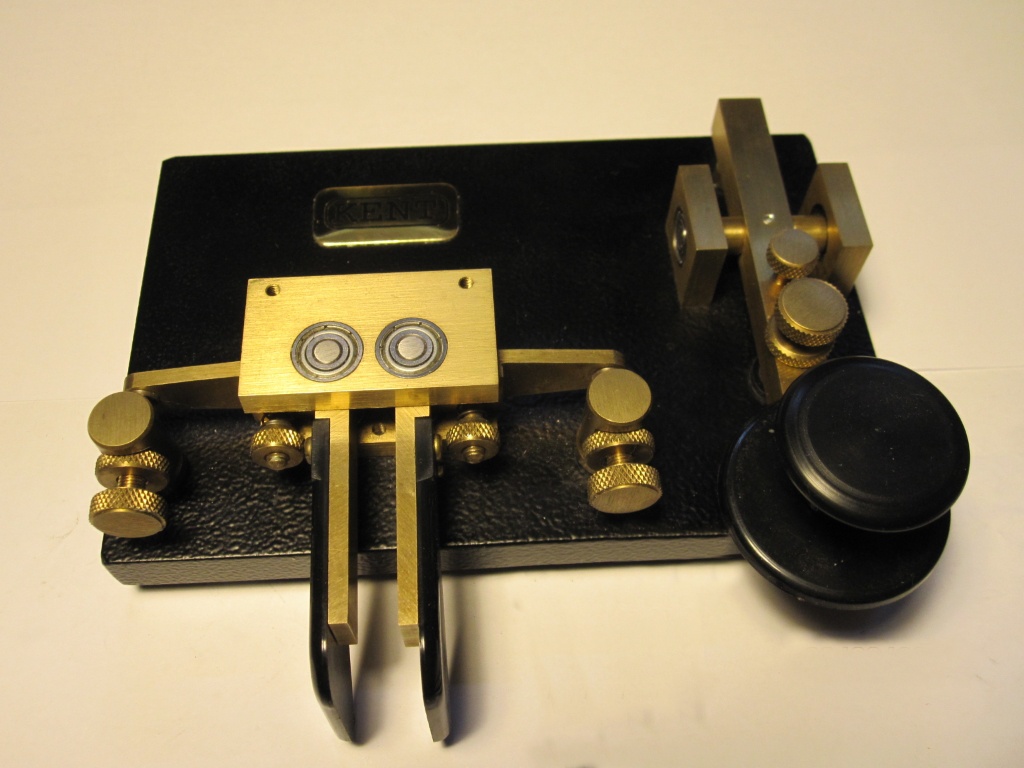 M14. This is a Kent Engineers TWO, ie. the TP1-B Combo, an Iambic keyer and straight key on the same base. In top condition, as new, only a few QSO:s worked! This is no longer available from the UK, only limited numbers were made. Weight 1,9 kilos, factory fit cabling.
M14. This is a Kent Engineers TWO, ie. the TP1-B Combo, an Iambic keyer and straight key on the same base. In top condition, as new, only a few QSO:s worked! This is no longer available from the UK, only limited numbers were made. Weight 1,9 kilos, factory fit cabling.
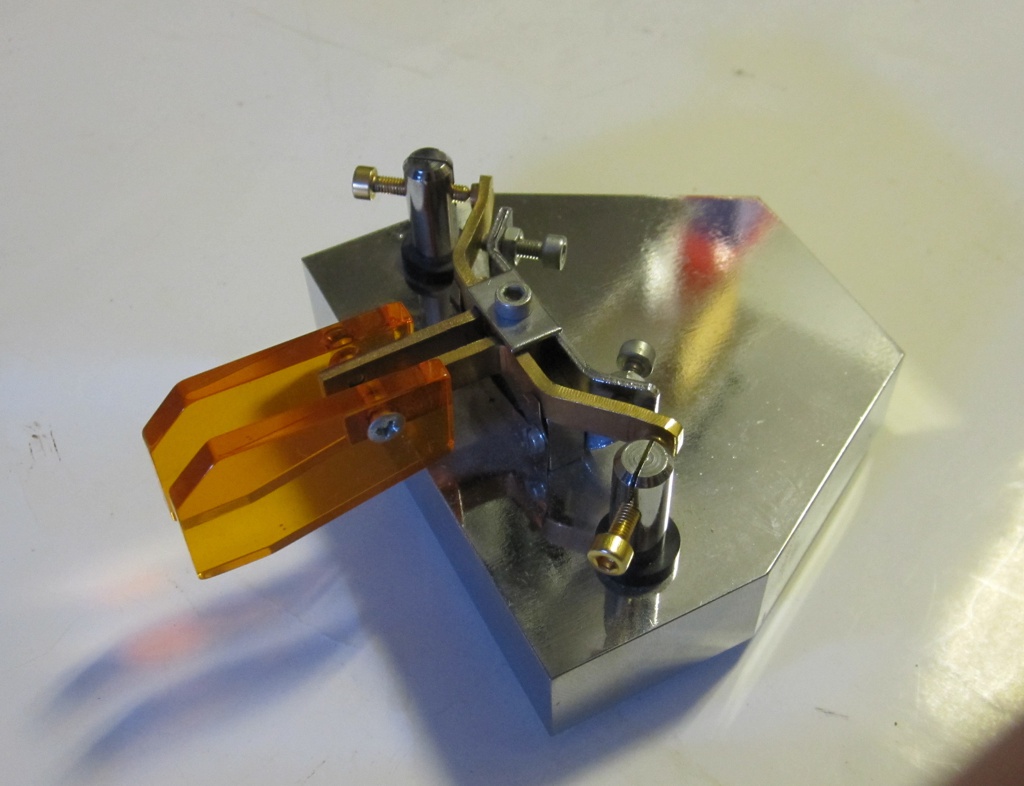 M15. Bencher style Finnish made keyer manipulator made by Turku Radio Club OH1AA in the 1980:s.
M15. Bencher style Finnish made keyer manipulator made by Turku Radio Club OH1AA in the 1980:s.
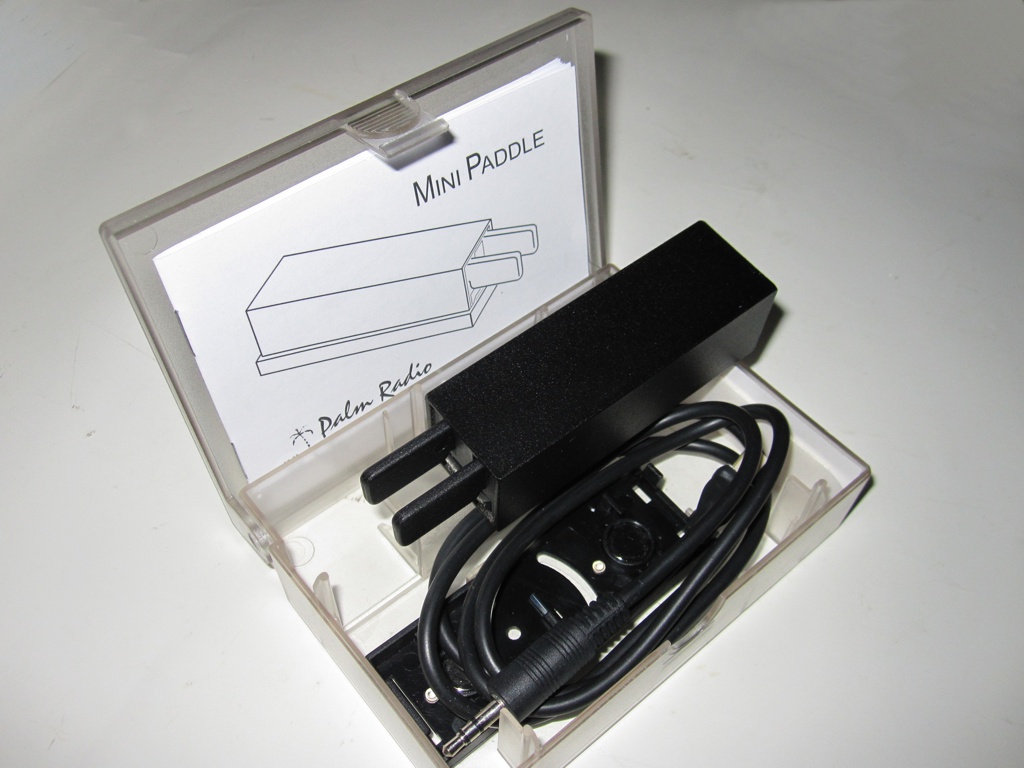 M16. Miniature paddle from German Palm Radio, type MP-817. Unused set, complete with all acessories (cable, magnetic mount, documents, double sided tape pads and travel box). Palm Radio ceased operation as per October 2018.
M16. Miniature paddle from German Palm Radio, type MP-817. Unused set, complete with all acessories (cable, magnetic mount, documents, double sided tape pads and travel box). Palm Radio ceased operation as per October 2018.
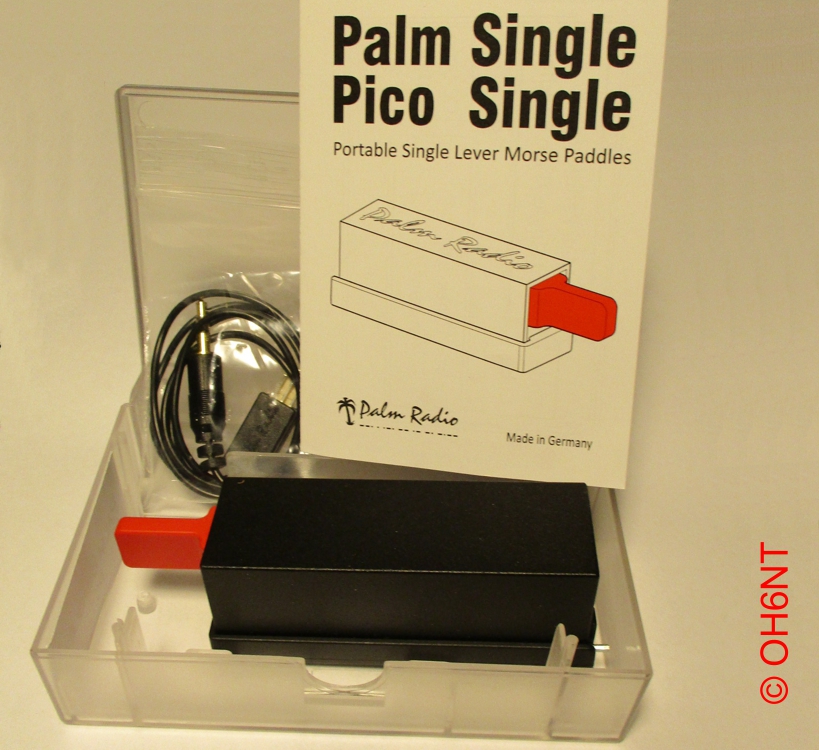 M17. Brand new German made original Palm Single (PS) single lever key, Donated by Manfred, DK4NQ.
M17. Brand new German made original Palm Single (PS) single lever key, Donated by Manfred, DK4NQ.
A rare find today. Can also be used as a Sideswiper.
Beware of Palm keys on eBay, they are usually Chinese knock-offs!
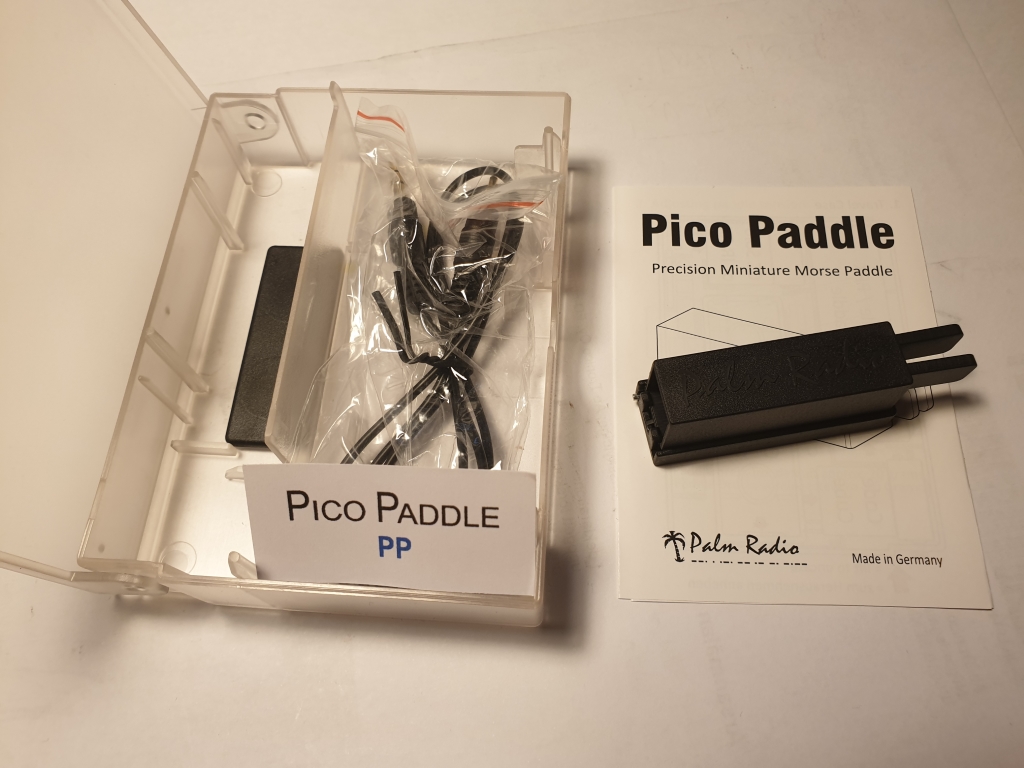 M18. Here we have a brand new Palm Pico paddle (PP) with all accessories from Germany. This is the little (2/3) brother of the MP-817 above. It is fully adjustable, and sits firmly on the radio by built in strong magnets.
M18. Here we have a brand new Palm Pico paddle (PP) with all accessories from Germany. This is the little (2/3) brother of the MP-817 above. It is fully adjustable, and sits firmly on the radio by built in strong magnets.
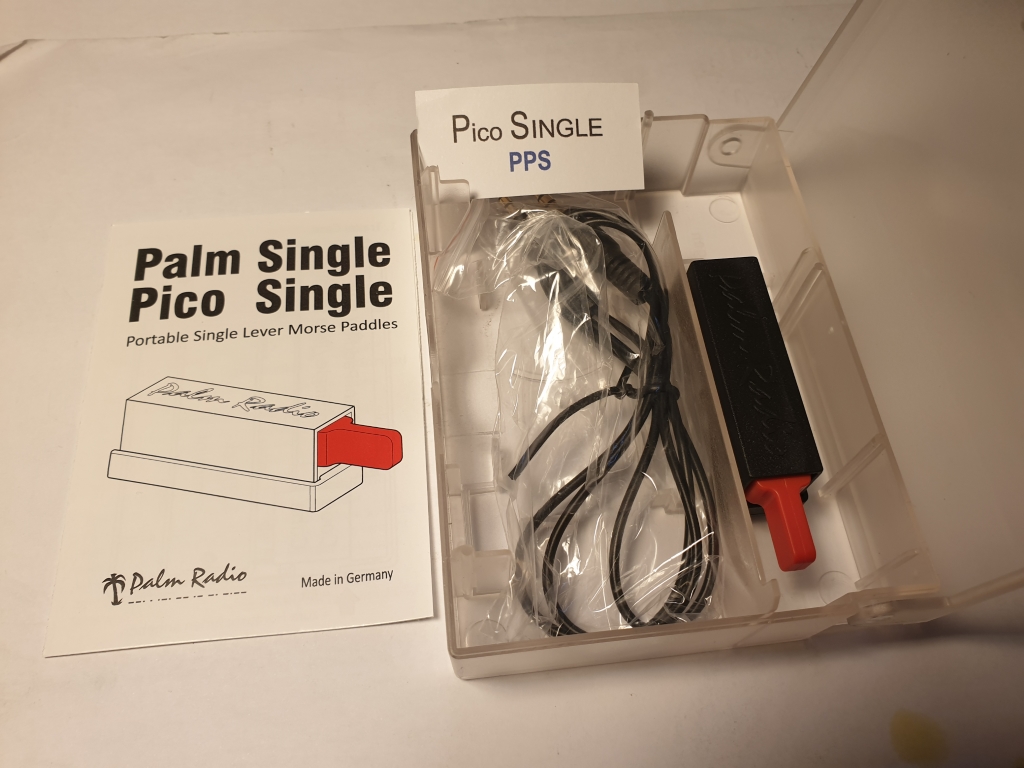 M19. And the last paddle of the Palm Radio keys family, the tiny Palm Pico Single (PPS) single lever key. Size is about 2/3:s of the bigger brother PS above (M17). Uses magnetic mount.
M19. And the last paddle of the Palm Radio keys family, the tiny Palm Pico Single (PPS) single lever key. Size is about 2/3:s of the bigger brother PS above (M17). Uses magnetic mount.
Palm Radio also made a miniature straight key, the PPK, which also is in my collection, see K111
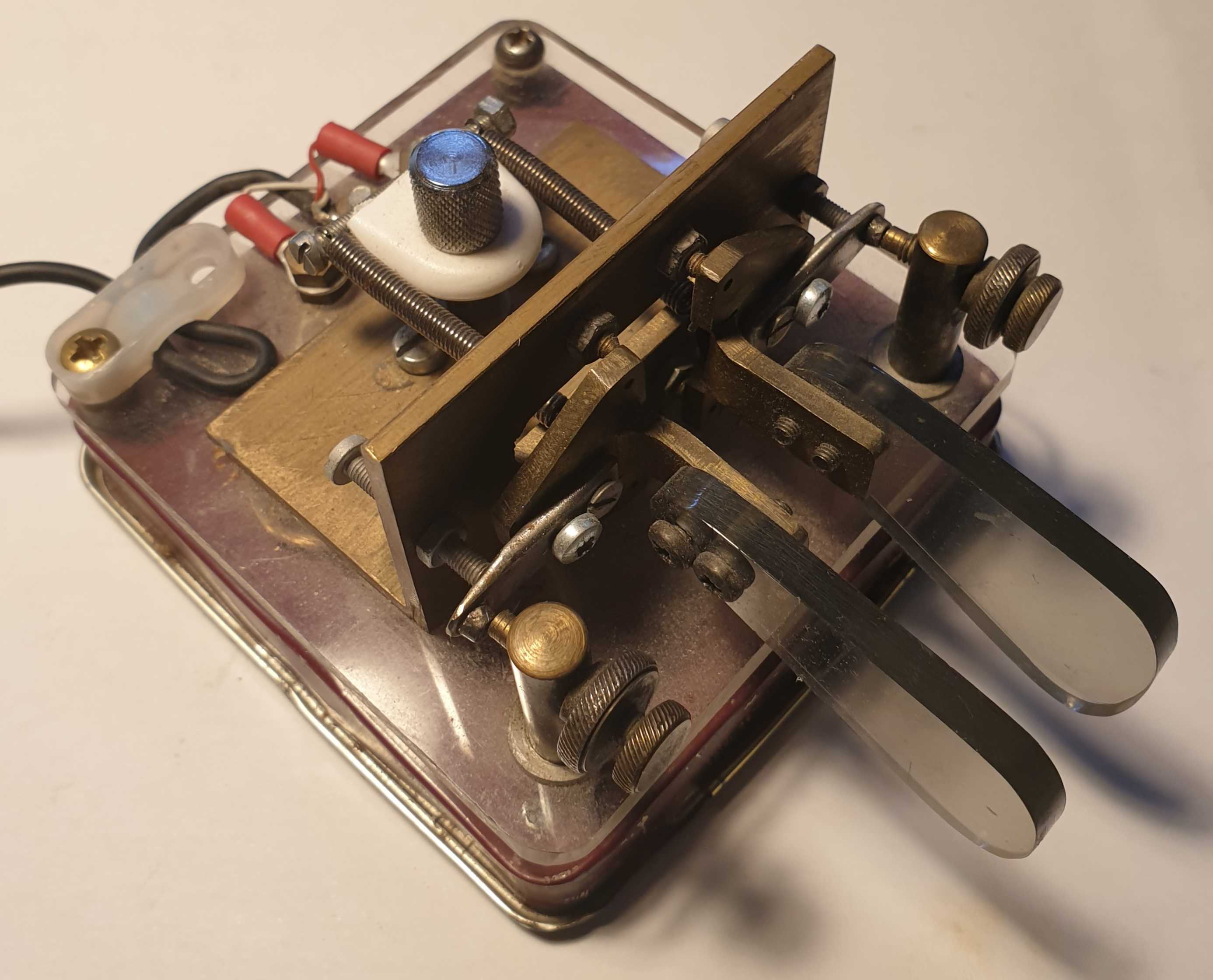 M20. Homemade paddle in "Bencher" style by OH2CG, Pentti A J Pajunen at his Penntele Workshop. Heavy lead-filled cigar box, plexiglass base and brass hardware. Very good feeling in this one, stays put on the table when keying, weight 1650 grams. Donated to me by the maker. Thanks OM!
M20. Homemade paddle in "Bencher" style by OH2CG, Pentti A J Pajunen at his Penntele Workshop. Heavy lead-filled cigar box, plexiglass base and brass hardware. Very good feeling in this one, stays put on the table when keying, weight 1650 grams. Donated to me by the maker. Thanks OM!
.jpg) M21. Gailbraith GK-11 from Christchurch, NZ. Mounting brackets and base were missing, so I made new by myself. Now working like a charm. Video here.
M21. Gailbraith GK-11 from Christchurch, NZ. Mounting brackets and base were missing, so I made new by myself. Now working like a charm. Video here.
M22. Vibroplex Brass racer (not EK1), serial #04271. This paddle has a built-in keyer based on a PIC16F84-04 (DIY) with two pushbutton memories. Also monitoring by a small piezo speaker (ugly mounting). Works by a Lithium AA-size cell mounted inside. Previous owner OH2OA, Reiska.
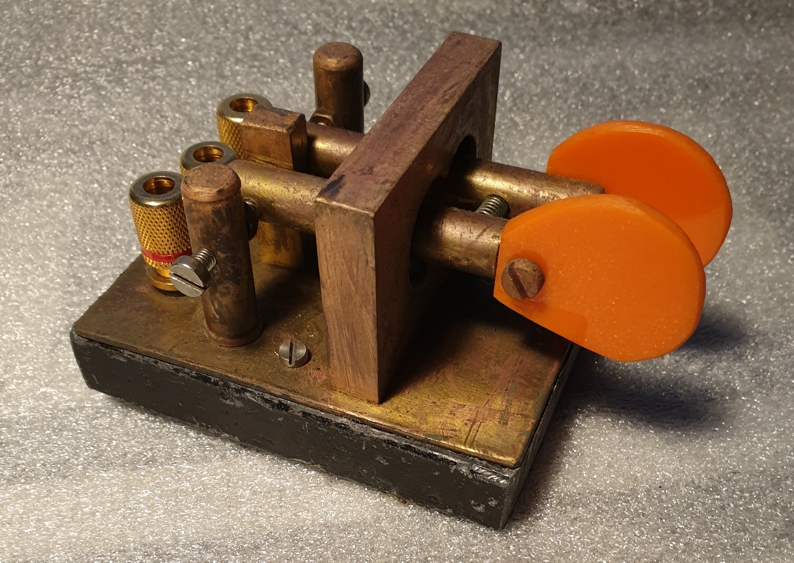 M23. A homebrew Iambic keyer made by an unknown Finnish ham. Brass hardware on a 17 mm thick lead base makes it very heavy, 1,46 kg! Good keyer, but needs some cleaning.
M23. A homebrew Iambic keyer made by an unknown Finnish ham. Brass hardware on a 17 mm thick lead base makes it very heavy, 1,46 kg! Good keyer, but needs some cleaning.
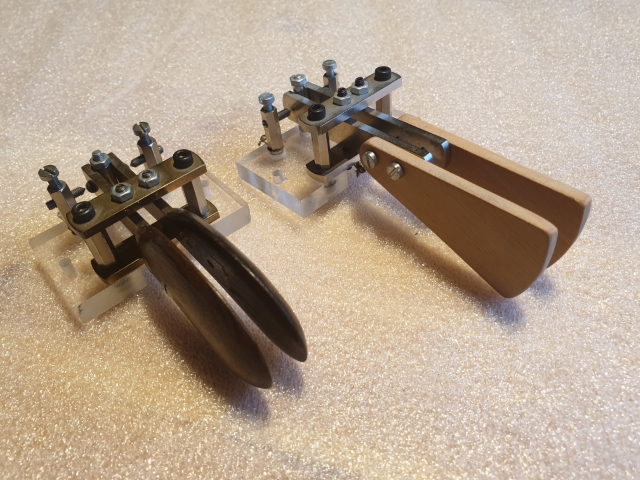 M24A and B. Two tiny manipulators, made in Denmark by unknown maker. Plexiglass base, size 40 x 60 mm. Tiny mechanisms, one is zinc plated, the other plain brass. Both need a heavy base underneath. Fingerpieces are wood (oak and ash). Contacts seem to be silver. Very nicely crafted.
M24A and B. Two tiny manipulators, made in Denmark by unknown maker. Plexiglass base, size 40 x 60 mm. Tiny mechanisms, one is zinc plated, the other plain brass. Both need a heavy base underneath. Fingerpieces are wood (oak and ash). Contacts seem to be silver. Very nicely crafted.
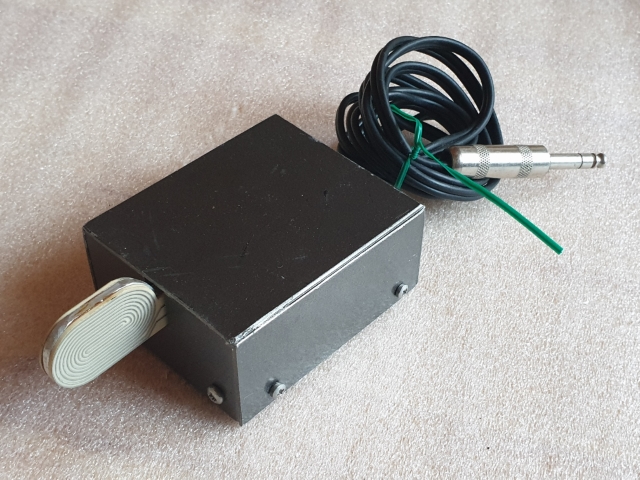 M25. Electronic manipulator, 3 x 1,5V silver button cells inside. "Paddles" are tinned leads etched on thin PCB substrate, base is 12 mm thick lead, and cover is aluminium sheet. Several transistors make up the circuit. Works good (with clean and moist fingers). DIY by some unknown Finnish HAM. See testing video here.
M25. Electronic manipulator, 3 x 1,5V silver button cells inside. "Paddles" are tinned leads etched on thin PCB substrate, base is 12 mm thick lead, and cover is aluminium sheet. Several transistors make up the circuit. Works good (with clean and moist fingers). DIY by some unknown Finnish HAM. See testing video here.
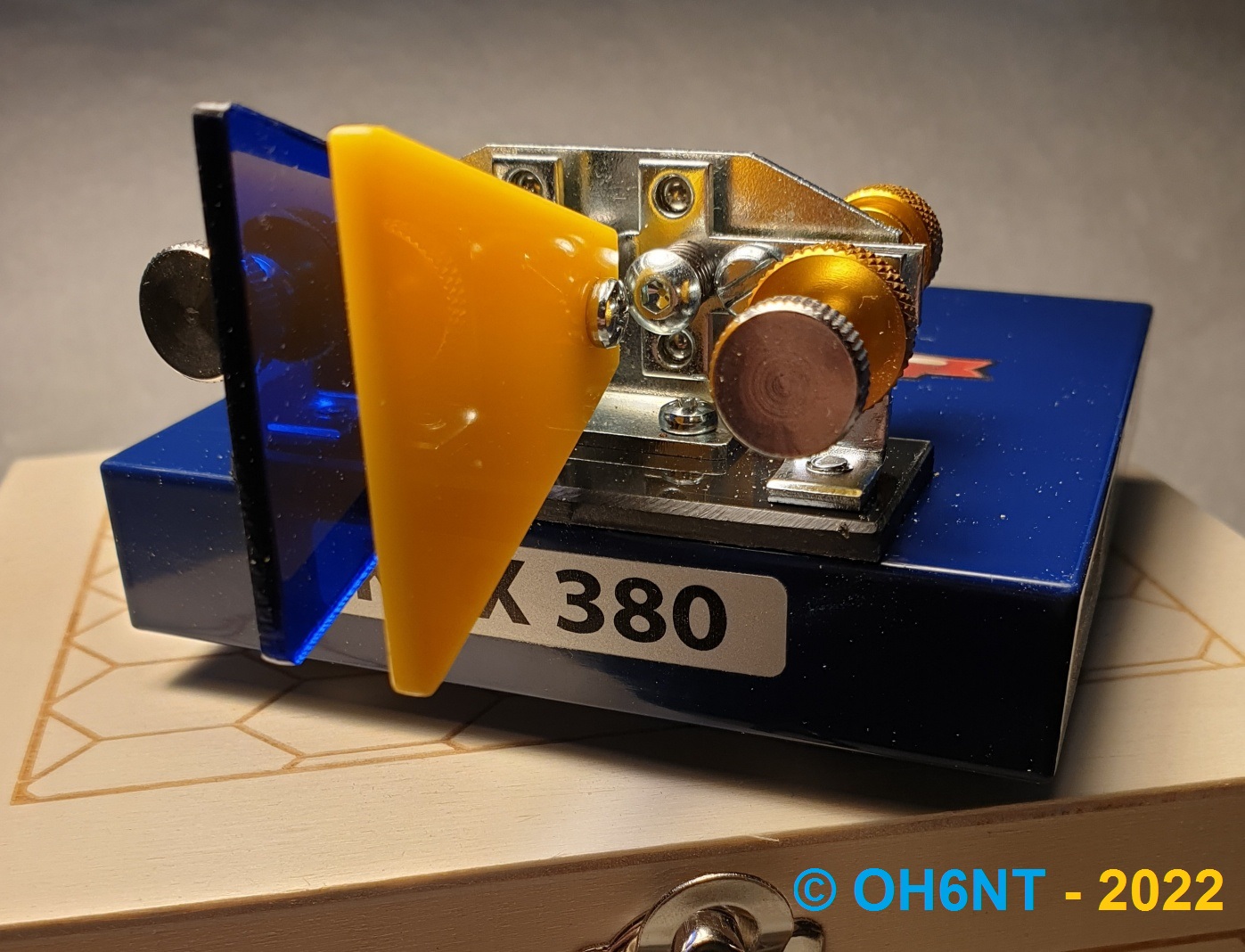 M26. Finnish KBX 380 paddle in Ukrainan livery (blue and yellow) by OH1KB. TU OM Tapio for adding this very fine key to my collection! See also M13, which is an earlier version.
M26. Finnish KBX 380 paddle in Ukrainan livery (blue and yellow) by OH1KB. TU OM Tapio for adding this very fine key to my collection! See also M13, which is an earlier version.
These keys are availabe by the maker at: senioripalvelu[at]gmail[dot]com
Not procured yet.
Electronic keyers
E1. Heathkit HD-10 electronic keyer, in working order. For 115 VAC.
Here a short test video.
E2. Heathkit HD-1410 electronic keyer, in working order. Can operate from 230 VAC (internal transformer) or 12 VDC.
Video showing the key in action.
**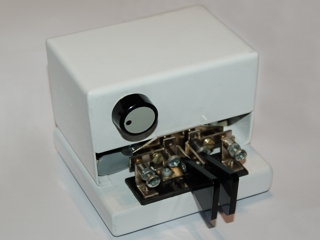 E3.**This is a Finnish KBX-101A battery operated electronic keyer with internal electronics, made by OH1KB Tapio Hirvikoski in Pori. This is rare because it's white; the standard color is black. The white ones were made in limited numbers for the German market. For his straight keys, see K43, K44.
E3.**This is a Finnish KBX-101A battery operated electronic keyer with internal electronics, made by OH1KB Tapio Hirvikoski in Pori. This is rare because it's white; the standard color is black. The white ones were made in limited numbers for the German market. For his straight keys, see K43, K44.
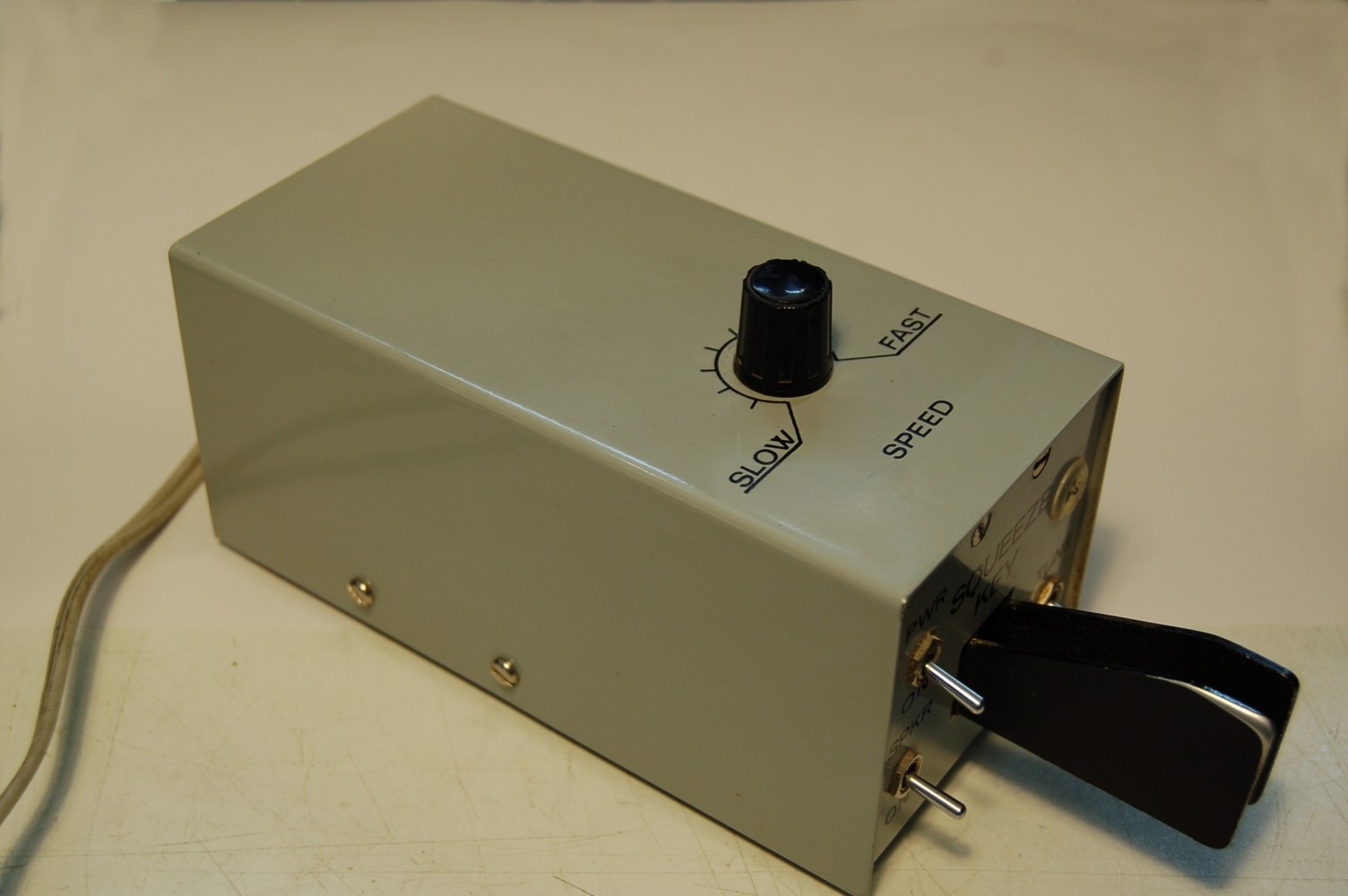 E4. This keyer is made in Denmark by PBE-elektronik, type MSK-5 Squeeze Key. Used by operators in the Navy, the Army, and commercial shipping. NOT Iambic, only a dot memory! Mains powered, internal sidetone speaker. Defunct at the moment.
E4. This keyer is made in Denmark by PBE-elektronik, type MSK-5 Squeeze Key. Used by operators in the Navy, the Army, and commercial shipping. NOT Iambic, only a dot memory! Mains powered, internal sidetone speaker. Defunct at the moment.
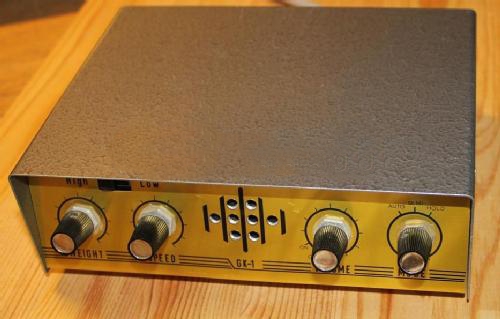 E5. The legendary finnish Golden Key elbug bought together with the M8 paddle from SK OH6MK estate sale. Not tested yet.
E5. The legendary finnish Golden Key elbug bought together with the M8 paddle from SK OH6MK estate sale. Not tested yet.
Photo by Matti Käki / OH2BIO
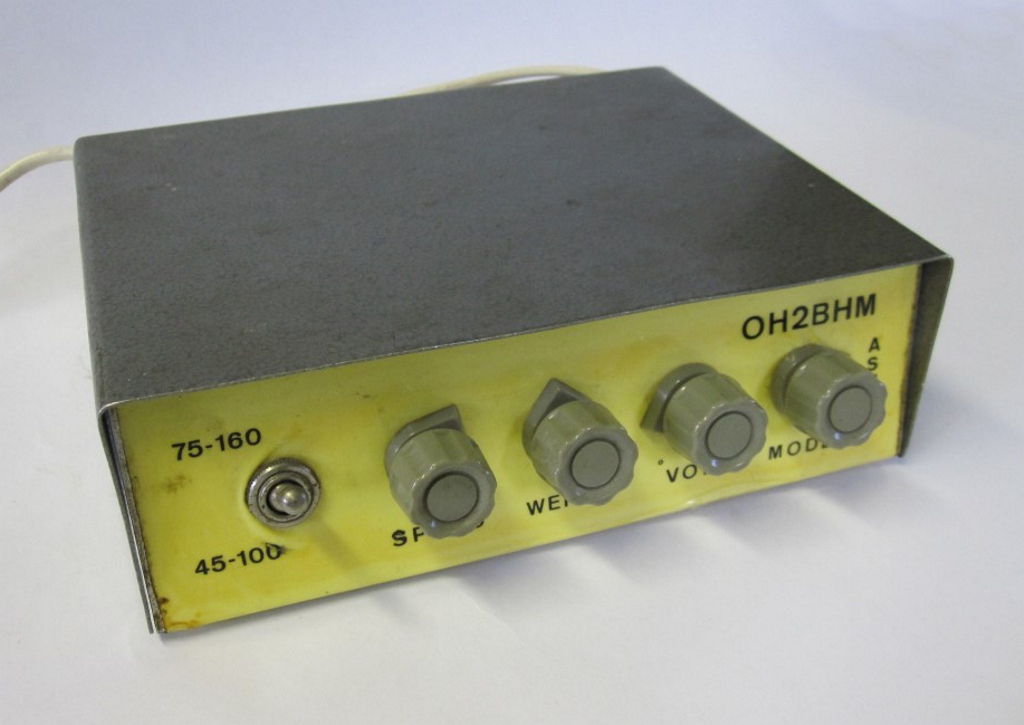 E6. Homebrew copy of the Golden Key (see E5) built in 1967 according to a description in the Finnish RA magazine by Kari, ex. OH2BHM.
E6. Homebrew copy of the Golden Key (see E5) built in 1967 according to a description in the Finnish RA magazine by Kari, ex. OH2BHM.
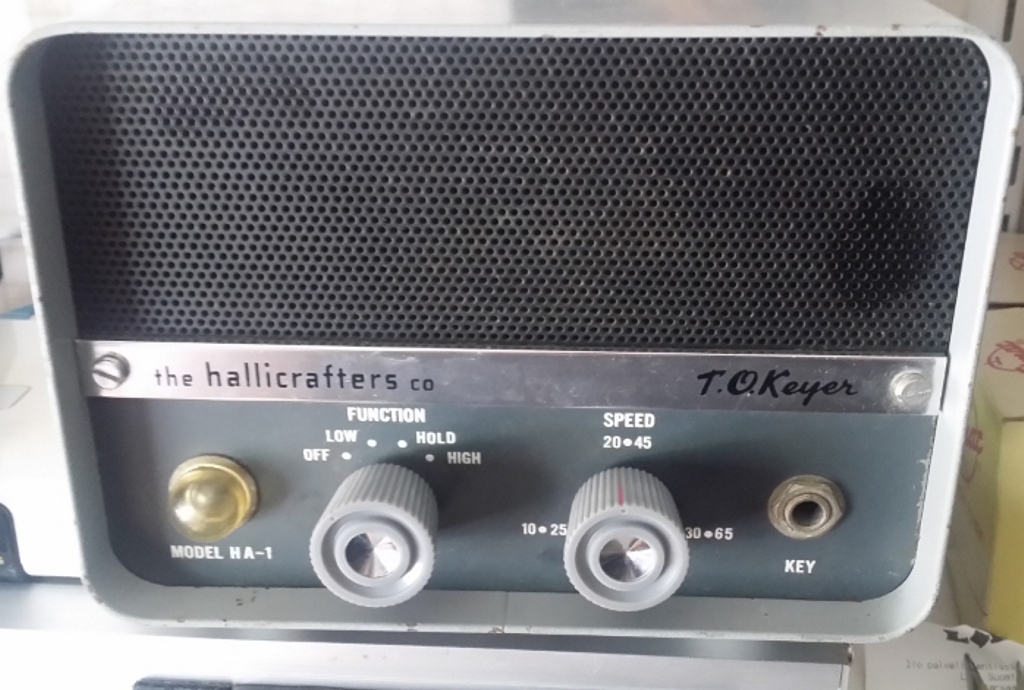 E7. Hallicrafters T.O. keyer, model HA-1 boght as scrap from the US. It uses "digital" tube circuitry, designed by Jim Ricks, W9TO (sk) and was produced 1960, costed new $79.95. Circuitry is complete, but was tampered with. 4 x 12AU7 tubes and a 275B Mercury wetted relay. Refurb'ed and QRV now, see video here. New knobs aquired by kind help of OM's Ron, W6QM and Gary K5JWK! Tnx!
E7. Hallicrafters T.O. keyer, model HA-1 boght as scrap from the US. It uses "digital" tube circuitry, designed by Jim Ricks, W9TO (sk) and was produced 1960, costed new $79.95. Circuitry is complete, but was tampered with. 4 x 12AU7 tubes and a 275B Mercury wetted relay. Refurb'ed and QRV now, see video here. New knobs aquired by kind help of OM's Ron, W6QM and Gary K5JWK! Tnx!
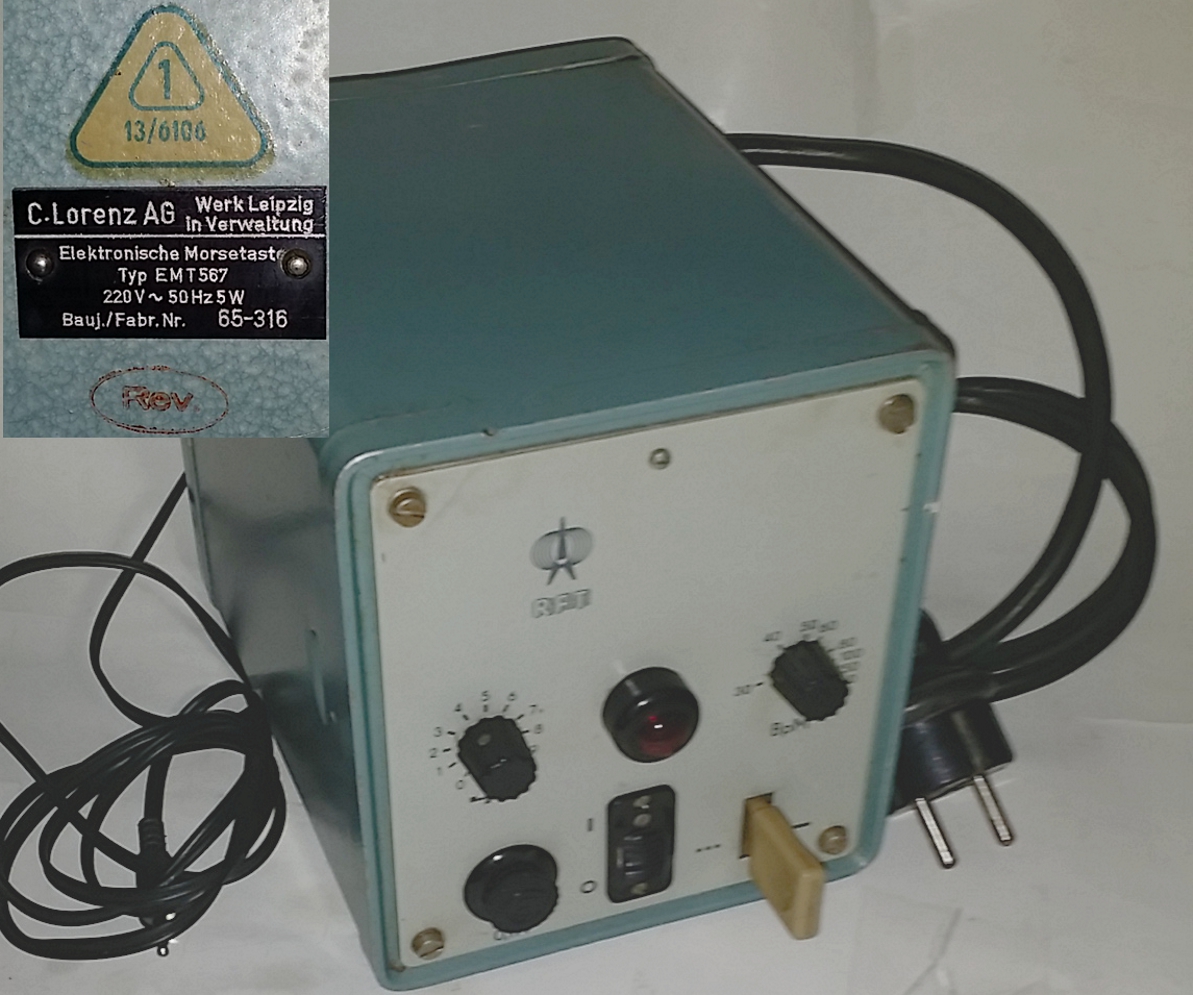 E8. An electronic keyer from DDR (East Germany), the RFT EMT567 made by C. Lorenz AG in Leipzig 1965. The keying works, needs adjustment and maybe some capacitor renewals. The Hi-Z (4000 ohm) monitoring output is dead. Complete with documentation, all transistor. Size: 13 x 15 x 17,5 cm. Internal 230 V AC / 8 V DC PSU.
E8. An electronic keyer from DDR (East Germany), the RFT EMT567 made by C. Lorenz AG in Leipzig 1965. The keying works, needs adjustment and maybe some capacitor renewals. The Hi-Z (4000 ohm) monitoring output is dead. Complete with documentation, all transistor. Size: 13 x 15 x 17,5 cm. Internal 230 V AC / 8 V DC PSU.
Not yet procured.
Optical signalling equipment
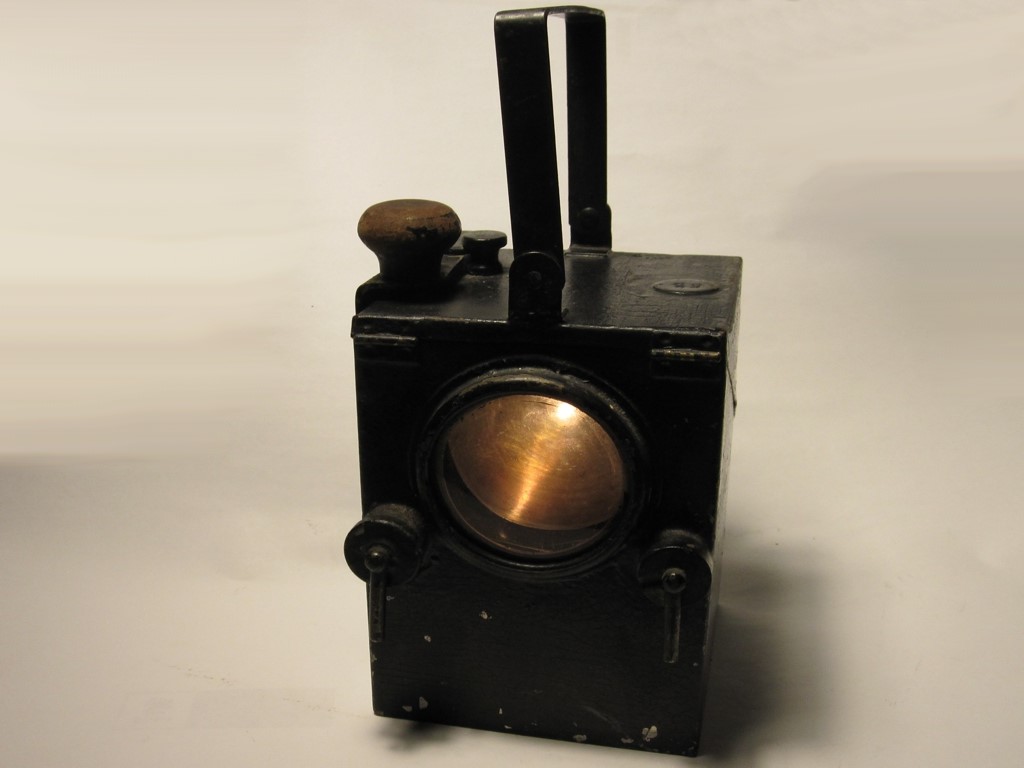 O1. Signalmans Morse lantern from Karlskrona Naval Shipyard in Sweden. Made of zinc plated painted sheet metal. Probably from 1955 (has a stamped tag "55" on it) but might be older. In working order, uses one 4,5 V block battery (included). Can show white, red and blue light. Signalling is done with a telegraph key on the top (left in the picture). Maker unknown.
O1. Signalmans Morse lantern from Karlskrona Naval Shipyard in Sweden. Made of zinc plated painted sheet metal. Probably from 1955 (has a stamped tag "55" on it) but might be older. In working order, uses one 4,5 V block battery (included). Can show white, red and blue light. Signalling is done with a telegraph key on the top (left in the picture). Maker unknown.
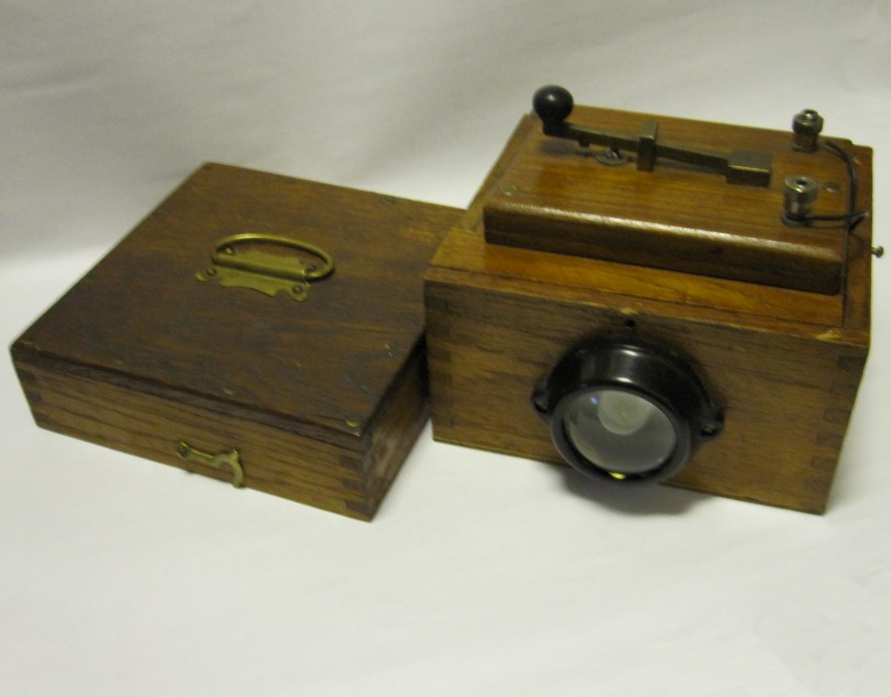 O2. Home made optical telegraph with key on the battery case top lid. Used probably by the fishermen on the SW coast (unlikely the Finnish Navy) for signalling between ships, or ship-to-shore. Probably the early half of 1900:s. Box is oak, fittings are brass. Functional.
O2. Home made optical telegraph with key on the battery case top lid. Used probably by the fishermen on the SW coast (unlikely the Finnish Navy) for signalling between ships, or ship-to-shore. Probably the early half of 1900:s. Box is oak, fittings are brass. Functional.
.jpg) O3. Aldis Bros. Ltd, Birmingham, UK made this 5 inch Hand Signalling Lantern in 1958 with serial number 603A. It is an Admiralty Pattern 16409 The special light bulb, rated at 24 V / 60 W, hard to obtain, was donated by OH1CM. The lantern is a very nice gift from OM Frank Berglund, LA9IQ. Testing video here!
O3. Aldis Bros. Ltd, Birmingham, UK made this 5 inch Hand Signalling Lantern in 1958 with serial number 603A. It is an Admiralty Pattern 16409 The special light bulb, rated at 24 V / 60 W, hard to obtain, was donated by OH1CM. The lantern is a very nice gift from OM Frank Berglund, LA9IQ. Testing video here!
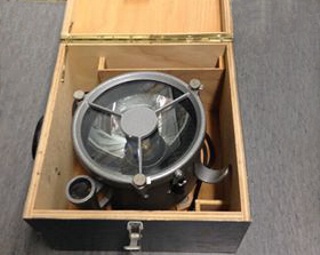 O4. Maritime signalling lamp from the Finnsh Navy, designation VLVZ. In wooden crate, from OH6TS estate. Made by IBAK Helmut Hunger GmbH in Germany, type S351H. Working condition, the bulb is 110 V, 100 W!
O4. Maritime signalling lamp from the Finnsh Navy, designation VLVZ. In wooden crate, from OH6TS estate. Made by IBAK Helmut Hunger GmbH in Germany, type S351H. Working condition, the bulb is 110 V, 100 W!
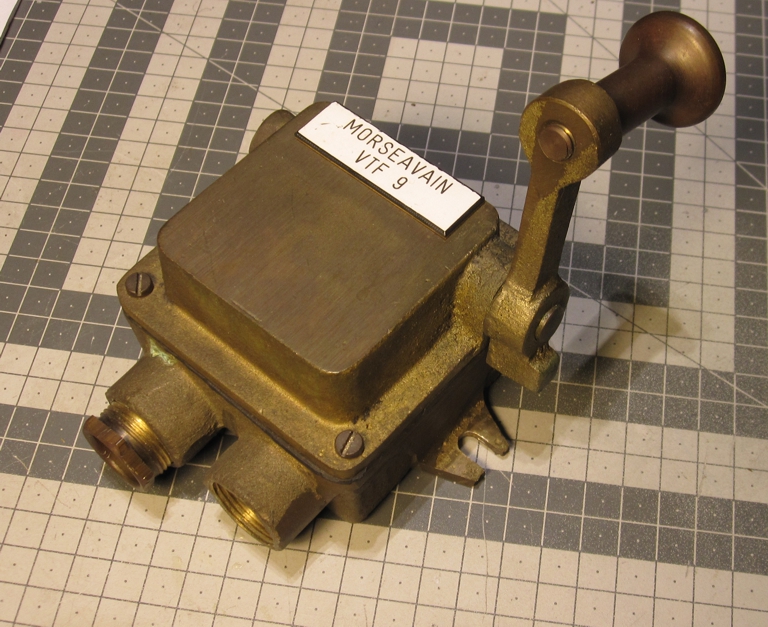 O5. Signalling key for optical Morse signaling (stationary mounted lamp) from a scrapped Navy minesweeper. All brass, heavy construction.
O5. Signalling key for optical Morse signaling (stationary mounted lamp) from a scrapped Navy minesweeper. All brass, heavy construction.
O6. Not procured yet.
Morse registers
R1. A Siemens & Halske land line ink register for railroad telegraphy, built in St. Petersburg, Russia before 1898. In working order. Serial number 19612 accordning to embossing (see picture below). Complete with key (see K64), also by S&H in St. Petersburg. These registers were designated "VLAK" in the Finnish army. This one is from the School of Shipping in Raumo.
R2. A complete Finnish State Railroads (Valtion Rautatiet, VR) landline Morse register, serial #31. Includes a galvanometer, line selector and key (Siemens & Halske, No. 6578), built 1934 by the VR Telegraph Works in Riihimäki. Good visual and functional shape! Copy of a German Siemens & Halske register, probably built on license.
The ribbon reel lies horisontally in a drawer below the mechanism.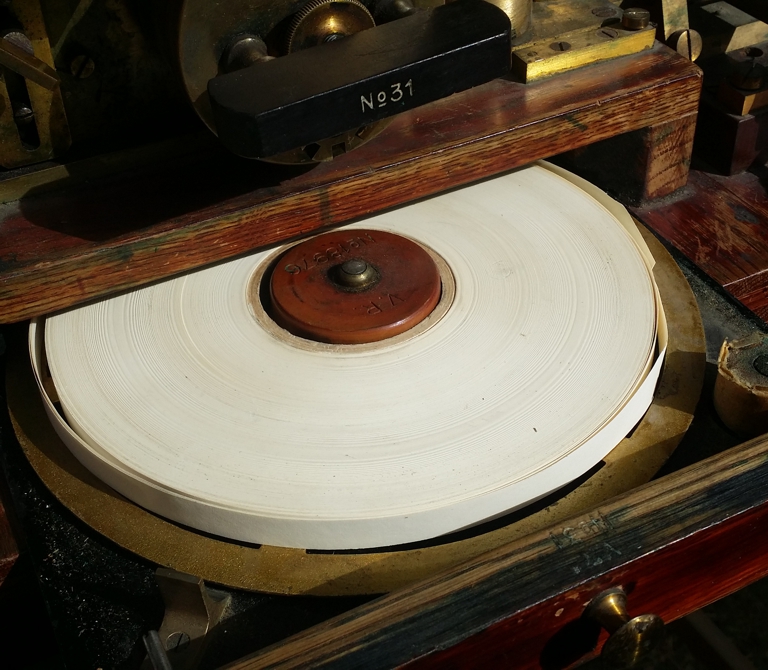
R3. A complete Siemens & Halske landline Morse register #52037, including a wooden galvanometer, line selector #50728 and key #50728, all made in Germany. Dirty but fully functional. This register was used by the Finnish State Railroads (VR). This is earlier than R2 (galvanometer is wooden. It is made in Germany, which indicates year of manufacturing abt. 1918...1930. The line selector block and key has different serial numbers than the register itself (see inlays).
Below is the line selector block with new replica switching plugs.
[ ](keys/Plugit paikoillaan-VR.jpg)
](keys/Plugit paikoillaan-VR.jpg)
Telecom equipment
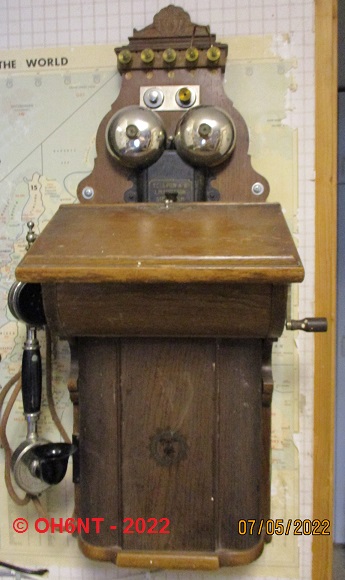 P1. L.M. Ericsson wall telephone, model 520, serial N° 300562. Also called "3/4 size". Common in Finnish homes, usable on one or two wire circuits. Local battery below the calling alternator compartment. Made of Walnut tree. This one is from the Finnish State Railroads (VR) used onwards from 1905.
P1. L.M. Ericsson wall telephone, model 520, serial N° 300562. Also called "3/4 size". Common in Finnish homes, usable on one or two wire circuits. Local battery below the calling alternator compartment. Made of Walnut tree. This one is from the Finnish State Railroads (VR) used onwards from 1905.
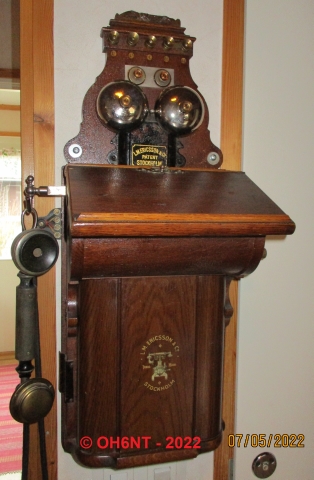 P2. L.M. Ericsson AB 230 wallphone, somewhat narrower than the 520. This one has a "hygienic" microphone since LM people discovered that the "spit-cup" model was collecting bacteria and germs. The crown is broken on this one.
P2. L.M. Ericsson AB 230 wallphone, somewhat narrower than the 520. This one has a "hygienic" microphone since LM people discovered that the "spit-cup" model was collecting bacteria and germs. The crown is broken on this one.
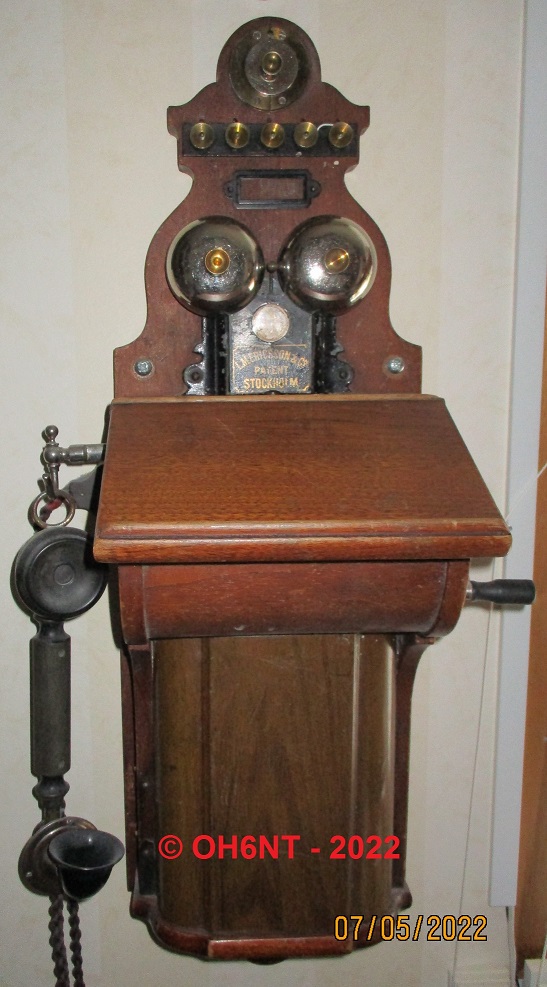 P3. Swedish ABT wall phone (Ab Telefonfabriken in Stockholm). These were made from 1899 on.
P3. Swedish ABT wall phone (Ab Telefonfabriken in Stockholm). These were made from 1899 on.
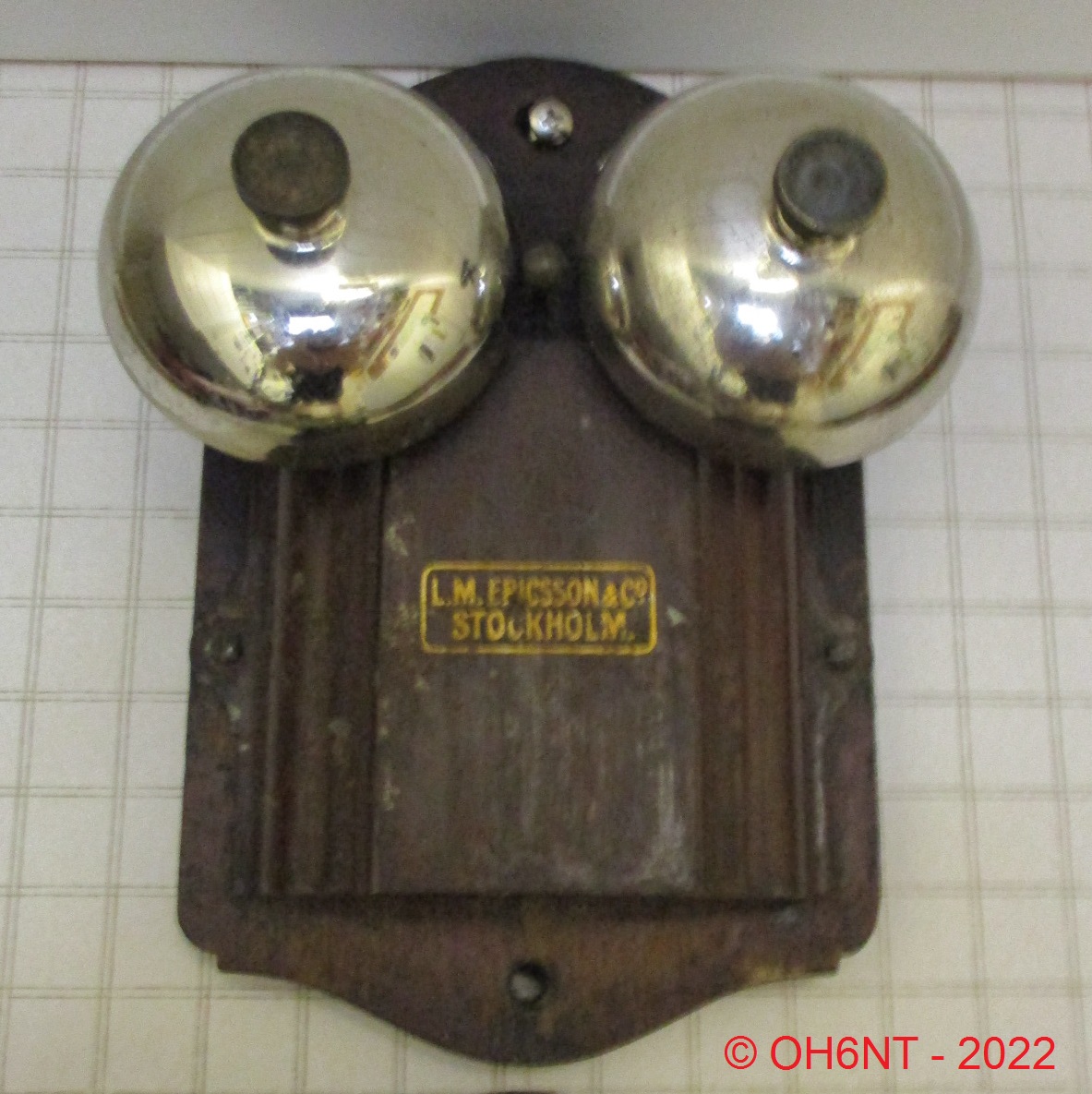 P4. External bell for wall made by L.M. Ericsson about 1920. I have several of these.
P4. External bell for wall made by L.M. Ericsson about 1920. I have several of these.
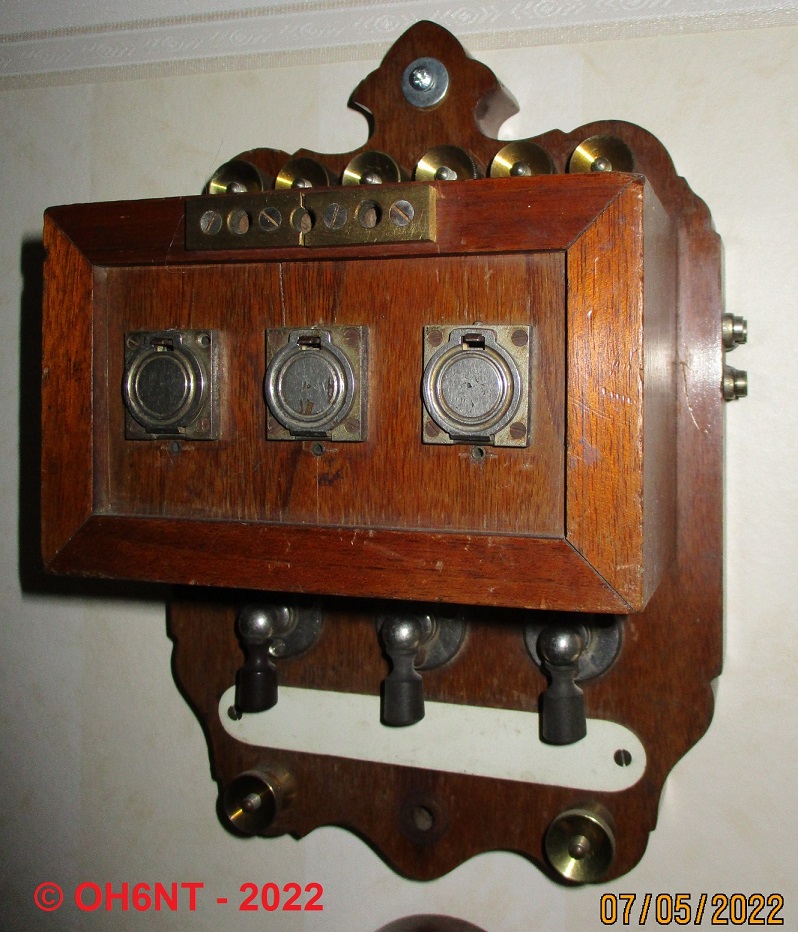 P5. Three double or single wire subscriber telephone exchange OA110 from L.M. Ericsson, about 1910. This one was used in my Grandpa's department store. One line went home, another to his wood mill/carpentry and the third went for the shop. Made of polished walnut.
P5. Three double or single wire subscriber telephone exchange OA110 from L.M. Ericsson, about 1910. This one was used in my Grandpa's department store. One line went home, another to his wood mill/carpentry and the third went for the shop. Made of polished walnut.
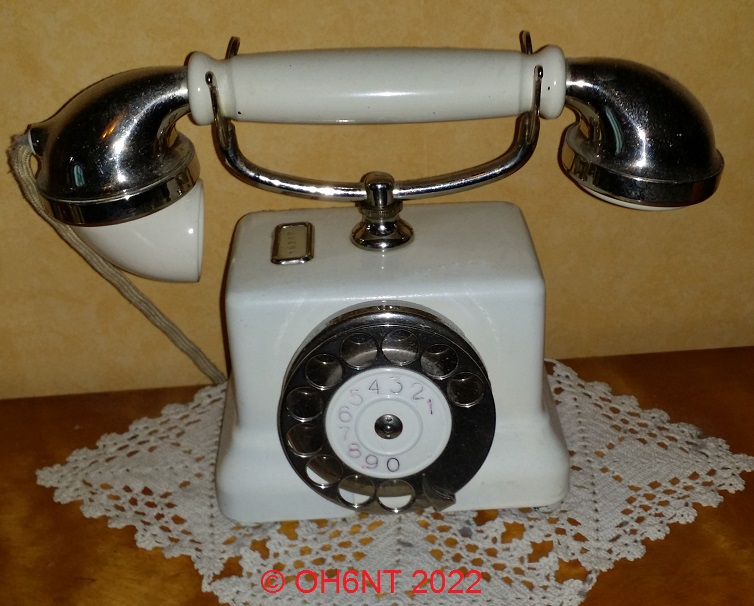 P6. Table phone by L.M. Ericsson, nickname "Wincrantz". About 1930:s. This one was later refurbished for automatic CB exchanges, a finger dial added, and painted white for some town lady. Rare because of the color, these were usually black.
P6. Table phone by L.M. Ericsson, nickname "Wincrantz". About 1930:s. This one was later refurbished for automatic CB exchanges, a finger dial added, and painted white for some town lady. Rare because of the color, these were usually black.
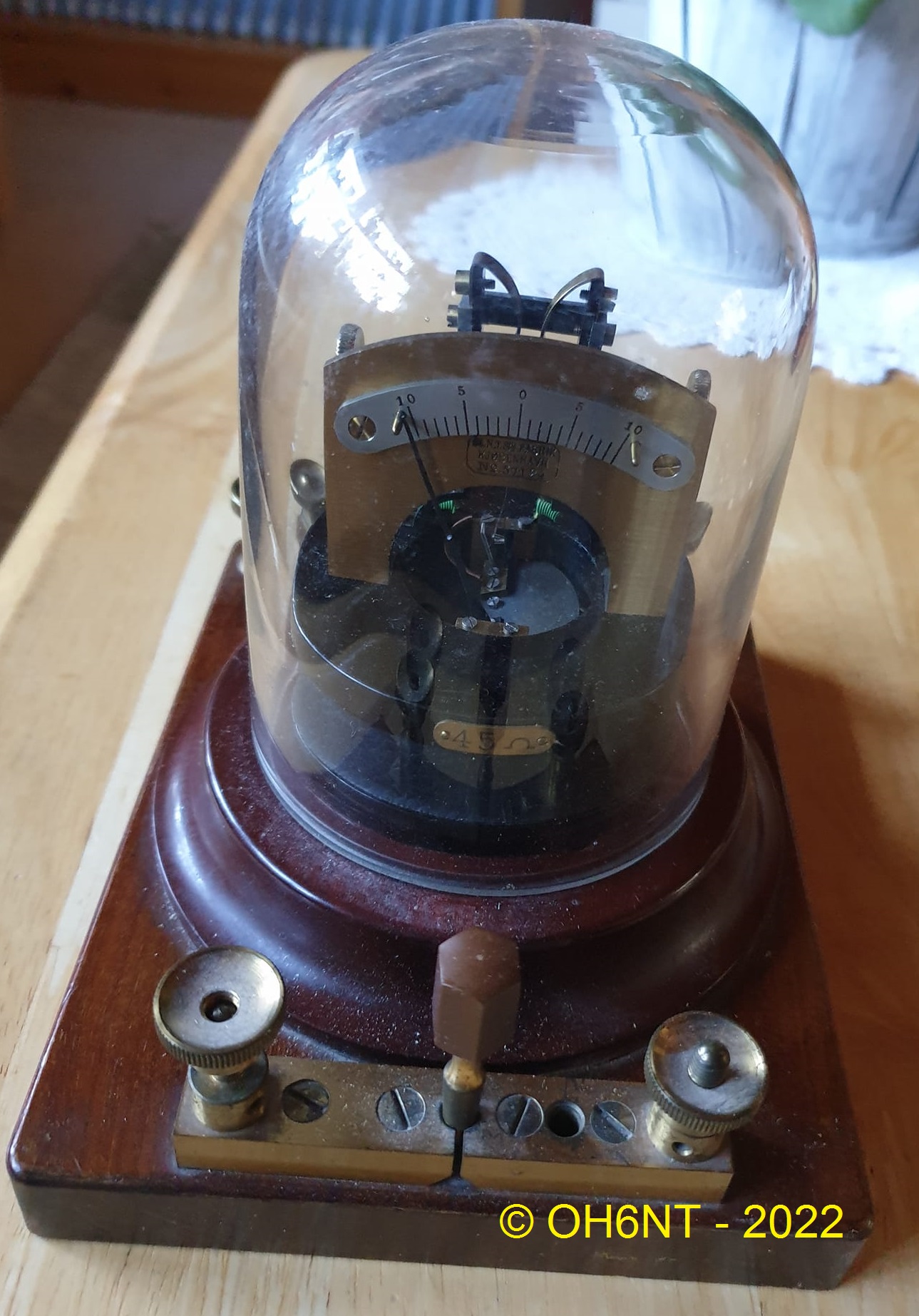 P7. Telegraph line galvanometer by Store Nordiske Telegraf Sellskab:s factory in Copenhagen, Denmark. In good original order with a glass dome. From the estate of a SK ham.
P7. Telegraph line galvanometer by Store Nordiske Telegraf Sellskab:s factory in Copenhagen, Denmark. In good original order with a glass dome. From the estate of a SK ham.
 P8. British Post Office standard relay, type "A" for amplifying signals on long telegraph lines. Coil is 200 ohms. It may be polarised or non polarised. The polarised version has a permanent magnet and can be neutralised for situations where it is used with a double plate sounder. Probably manufactured at the Telegraph Works, Silvertown in London about 191x.
P8. British Post Office standard relay, type "A" for amplifying signals on long telegraph lines. Coil is 200 ohms. It may be polarised or non polarised. The polarised version has a permanent magnet and can be neutralised for situations where it is used with a double plate sounder. Probably manufactured at the Telegraph Works, Silvertown in London about 191x.
Not procured yet.
Toy keys
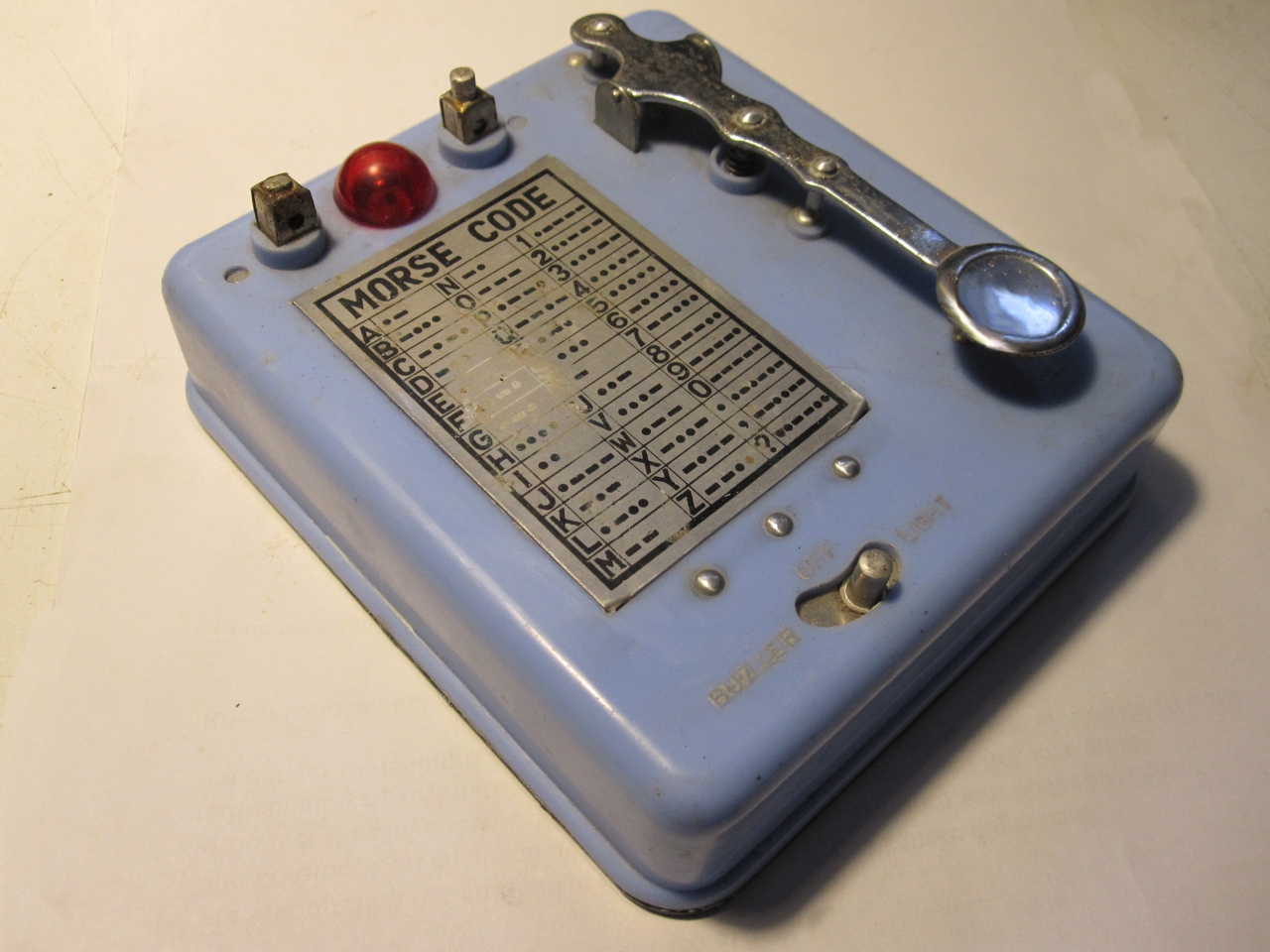 T1. This is a toy key from a set of two, "Space Station No. 107", for learning Morse code, made in Hong Kong in the 1950's. Uses two C-cells (3 V) and produces buzz or light when keyed. Fair condition, some rust. From a net auction site.
T1. This is a toy key from a set of two, "Space Station No. 107", for learning Morse code, made in Hong Kong in the 1950's. Uses two C-cells (3 V) and produces buzz or light when keyed. Fair condition, some rust. From a net auction site.
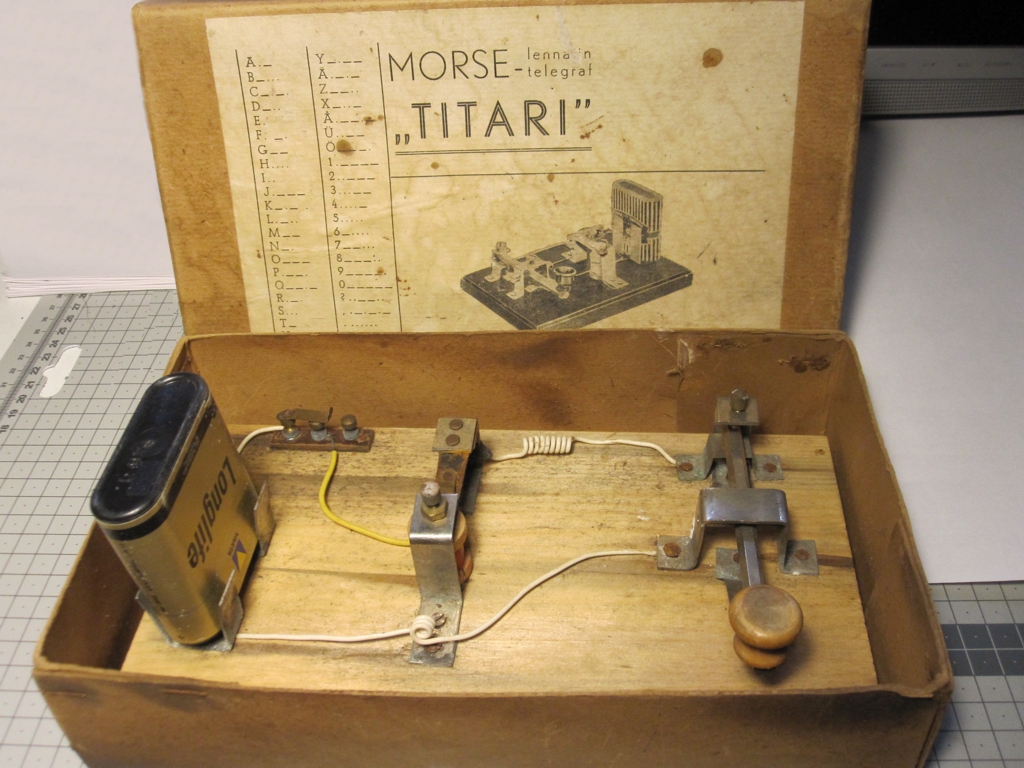 T2. A Finnish Morse toy telegraph set "TITARI" found at a flea market. It is a kit from Aarne Laaksonen & Co. in Helsinki. Probably from the 1950's, it would have been any boys dream back then when no cellphones existed! The price, 488 Finnish marks, suggests timeframe before 1963 when our currency was divided by 100. Rare piece. Instruction pdf leaflet here.
T2. A Finnish Morse toy telegraph set "TITARI" found at a flea market. It is a kit from Aarne Laaksonen & Co. in Helsinki. Probably from the 1950's, it would have been any boys dream back then when no cellphones existed! The price, 488 Finnish marks, suggests timeframe before 1963 when our currency was divided by 100. Rare piece. Instruction pdf leaflet here.
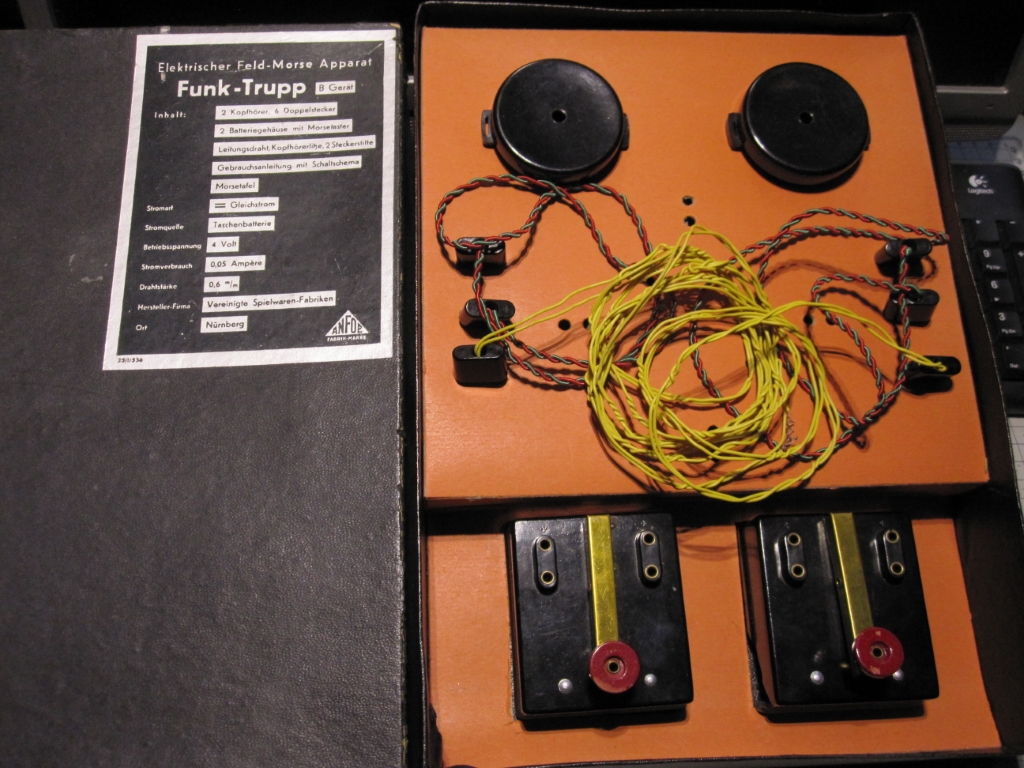 T3. This is a "Funk-Trupp B Gerät" toy telegraph set in original box by Vereinigte Spielwaren-Fabrik "ANFOE" in Nürnberg, Germany. All parts are original and in good order. The box is worn and broken in the corners. Timeframe is the 1950:s. Also sold under the trade mark "Trix".
T3. This is a "Funk-Trupp B Gerät" toy telegraph set in original box by Vereinigte Spielwaren-Fabrik "ANFOE" in Nürnberg, Germany. All parts are original and in good order. The box is worn and broken in the corners. Timeframe is the 1950:s. Also sold under the trade mark "Trix".
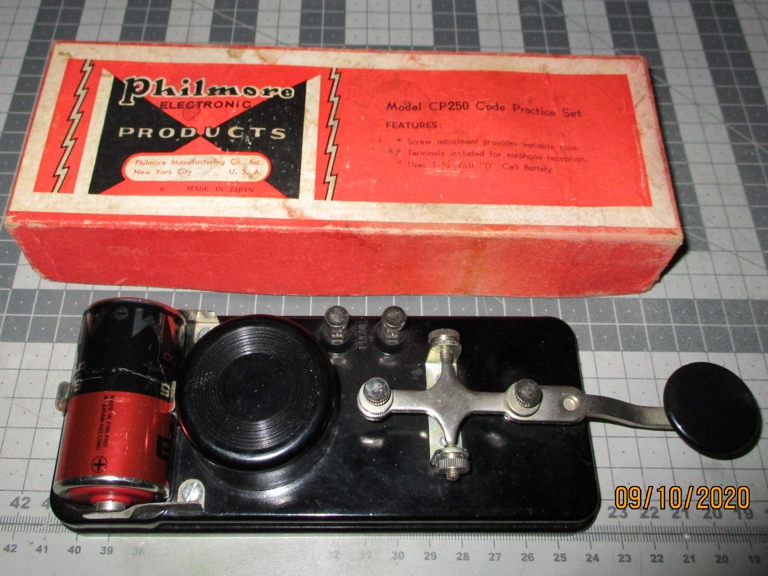 T4. Code practice set, Model CP250 from Philmore Electronic Products Co. Inc. New York City, U.S.A. Made in Japan. It has a vibrator (buzzer) that supposedly should work from a D-type dry cell. The circuit is OK, but is very kinky to adjust. Gift from my friend Kimmo, OH1CM in Turku.
T4. Code practice set, Model CP250 from Philmore Electronic Products Co. Inc. New York City, U.S.A. Made in Japan. It has a vibrator (buzzer) that supposedly should work from a D-type dry cell. The circuit is OK, but is very kinky to adjust. Gift from my friend Kimmo, OH1CM in Turku.
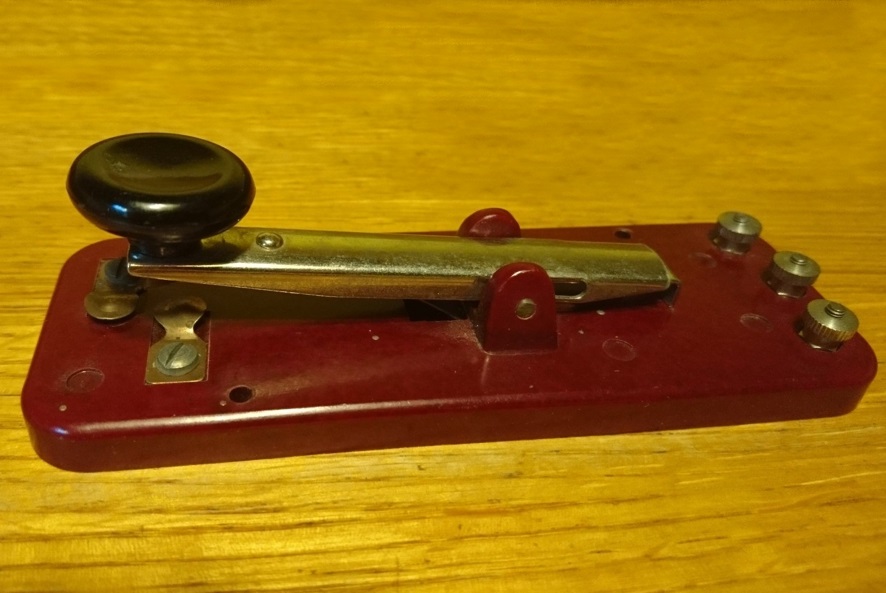 T5. A toy key of DDR origin. Strange construction, the arm slides forward or backward, thereby connecting to left or right terminal post at the back. Center terminal is common (arm). No adjustments for spring or contact gap (which is BIG!). Purchased from a net auction site. No markings.
T5. A toy key of DDR origin. Strange construction, the arm slides forward or backward, thereby connecting to left or right terminal post at the back. Center terminal is common (arm). No adjustments for spring or contact gap (which is BIG!). Purchased from a net auction site. No markings.
Not procured yet.
.jpg)
